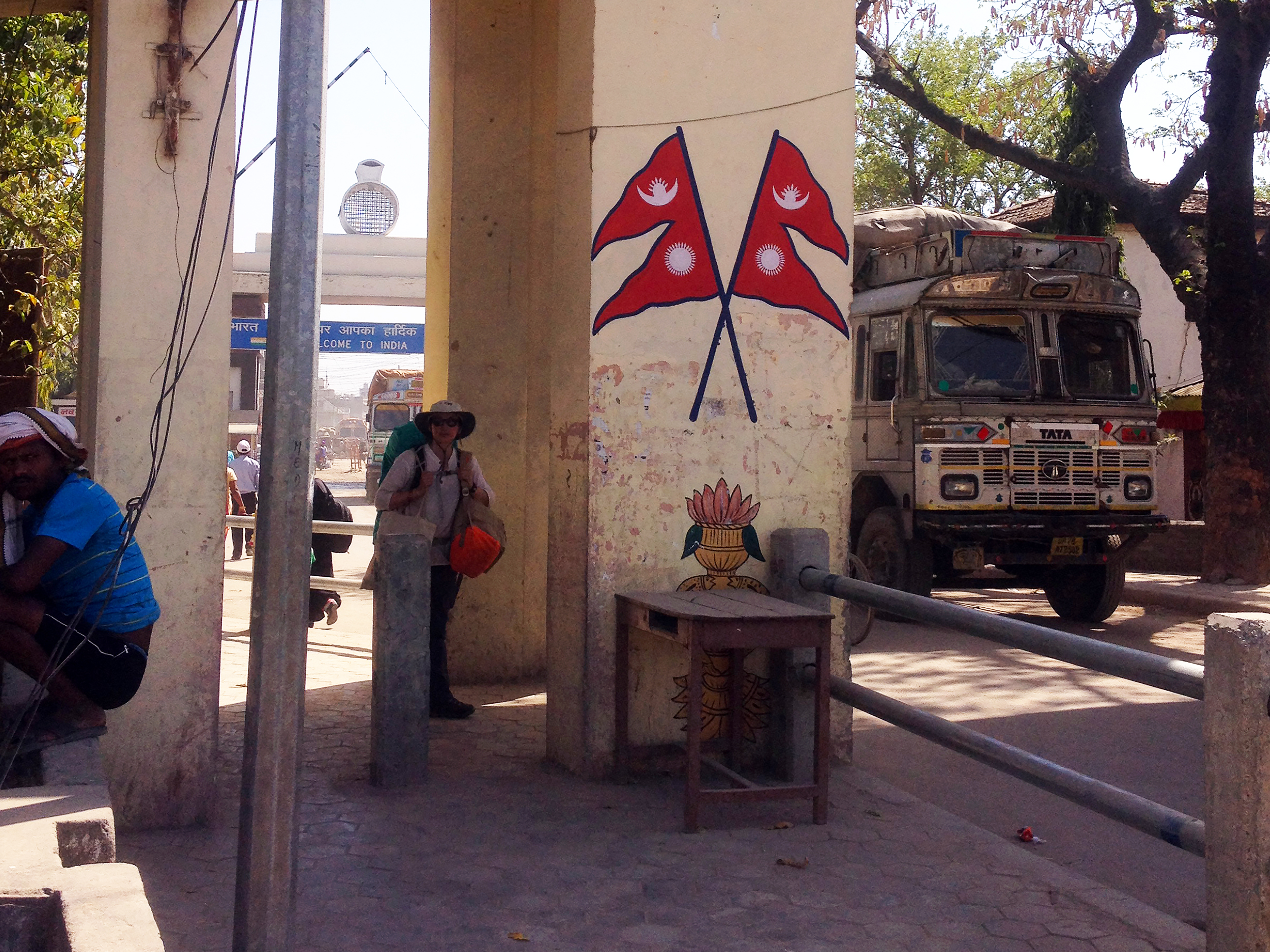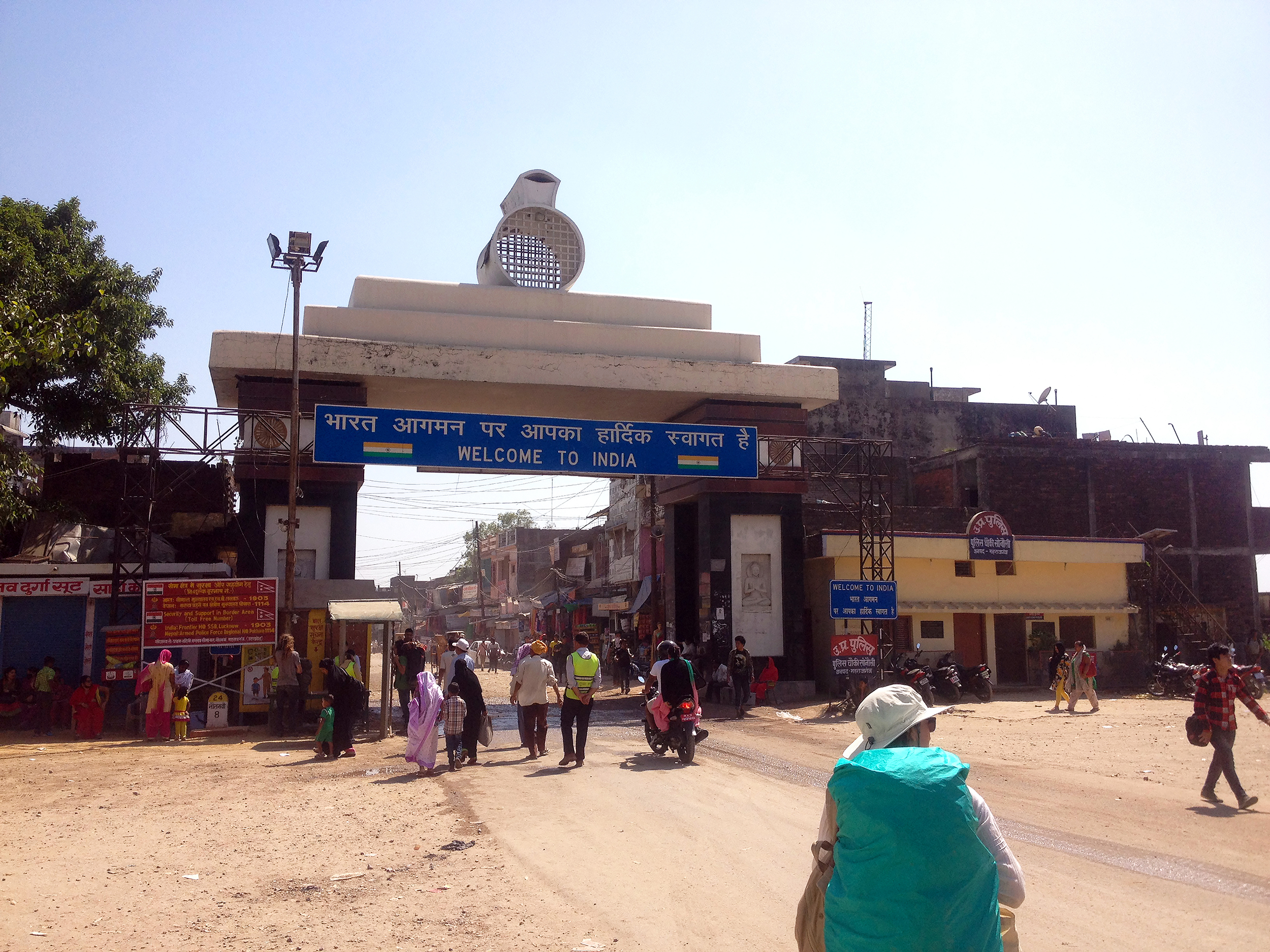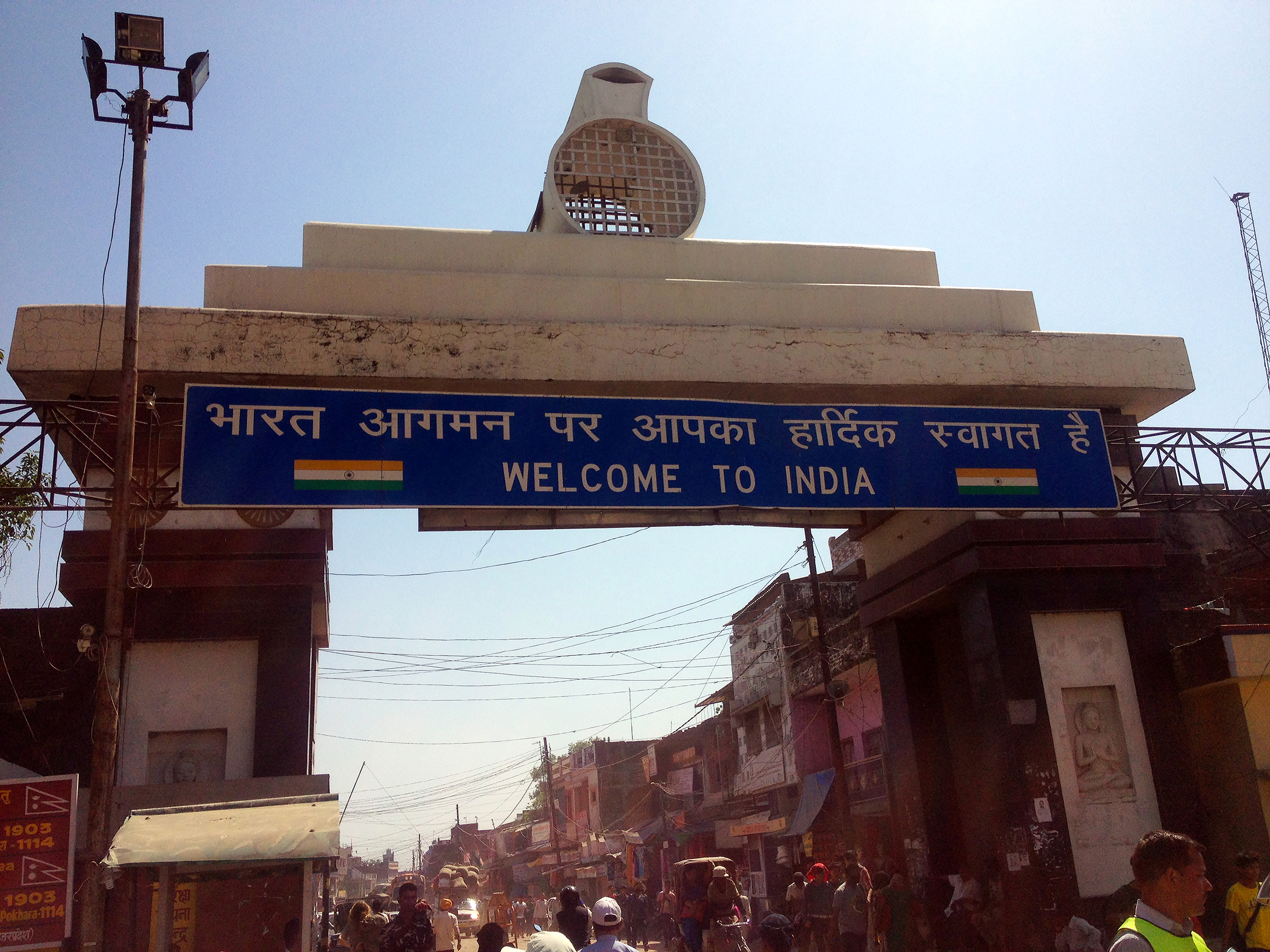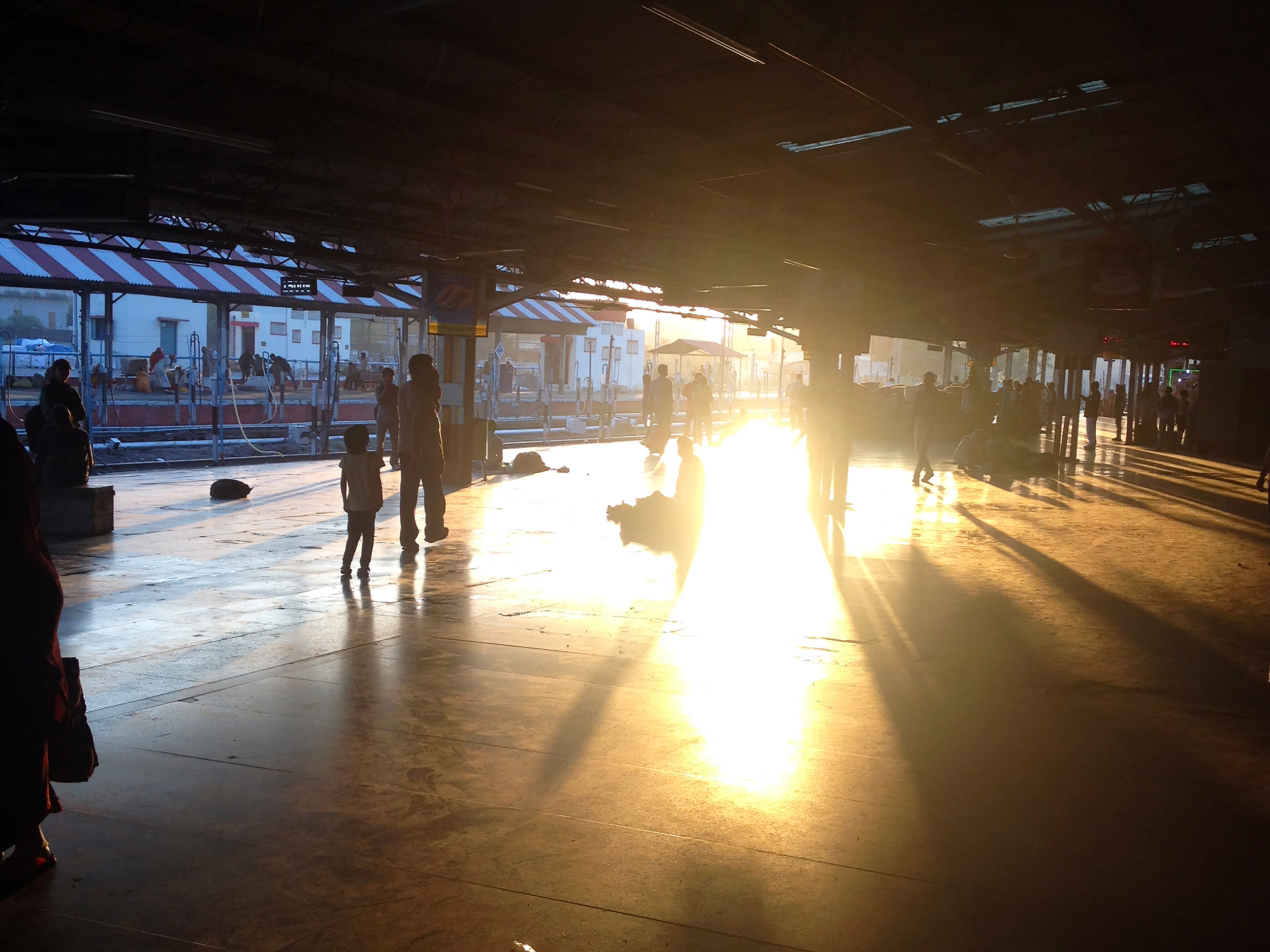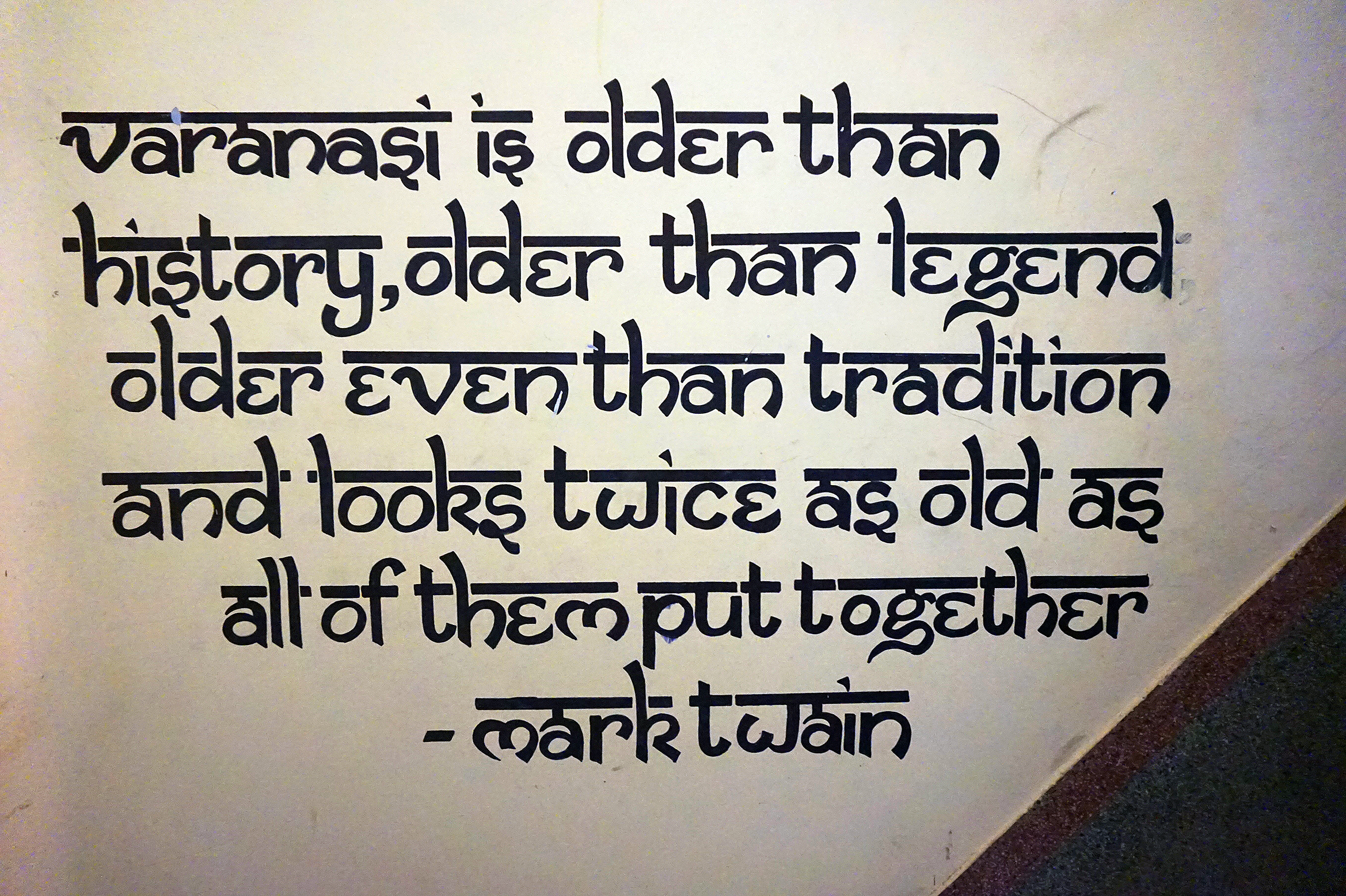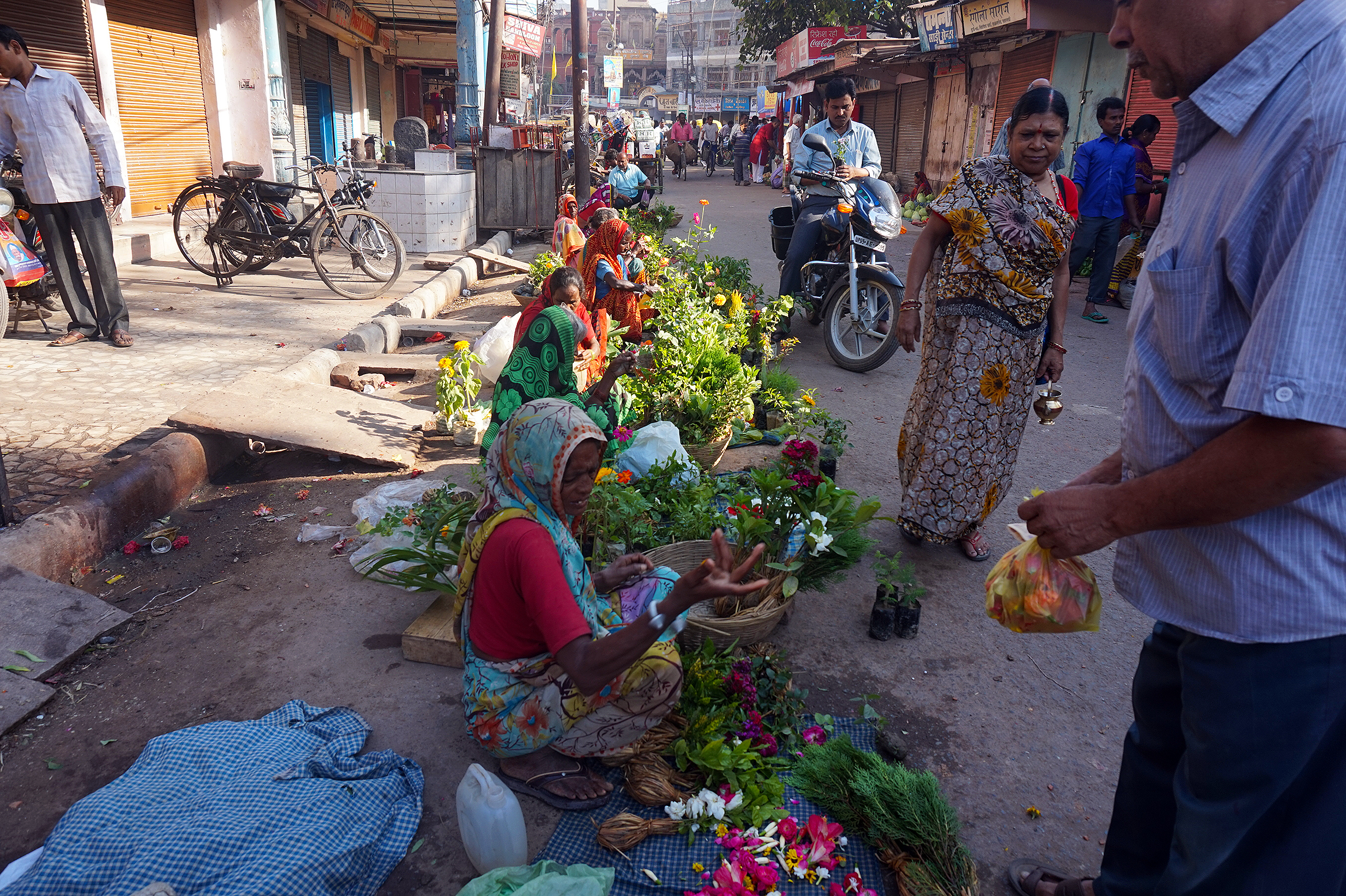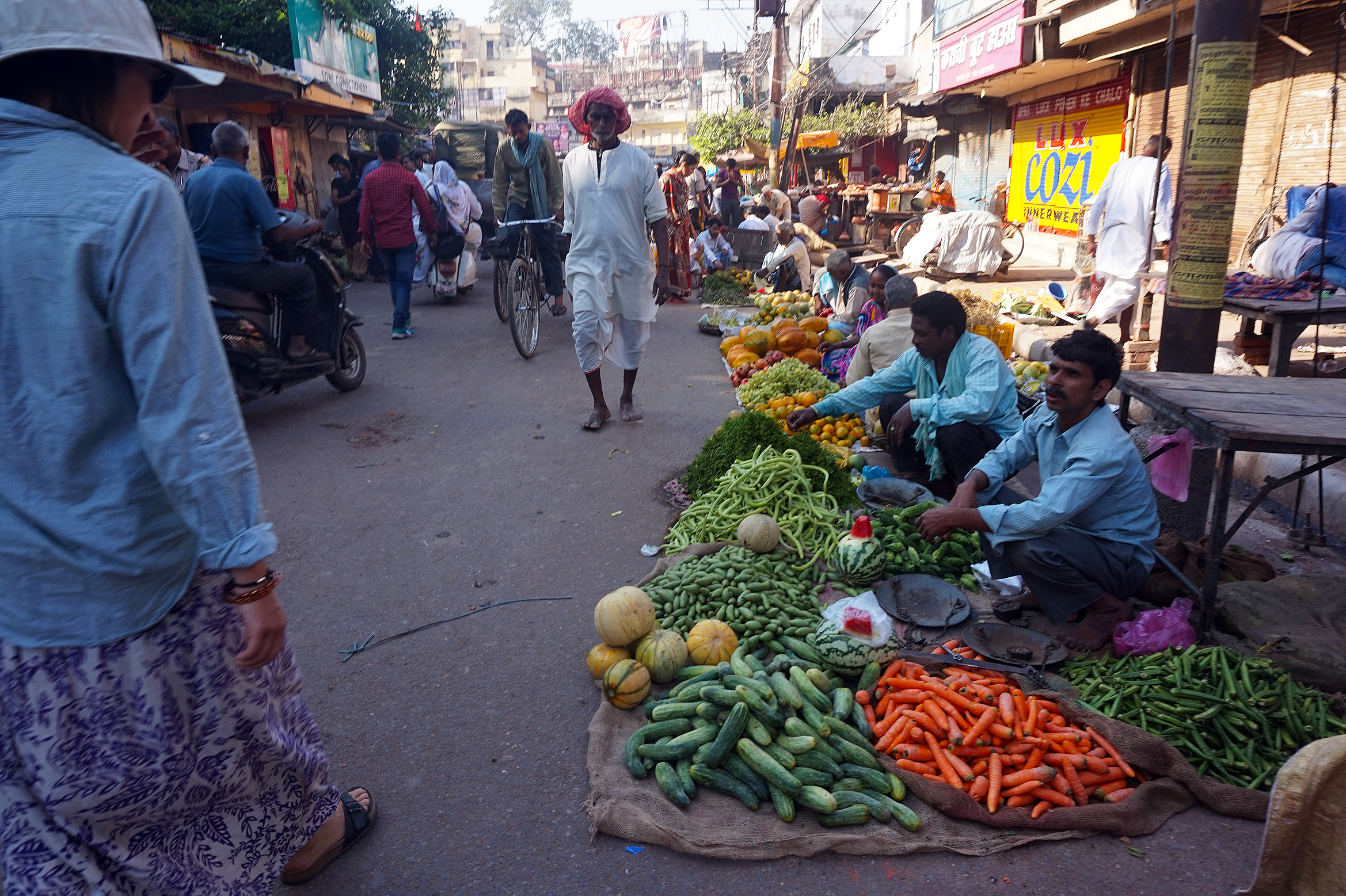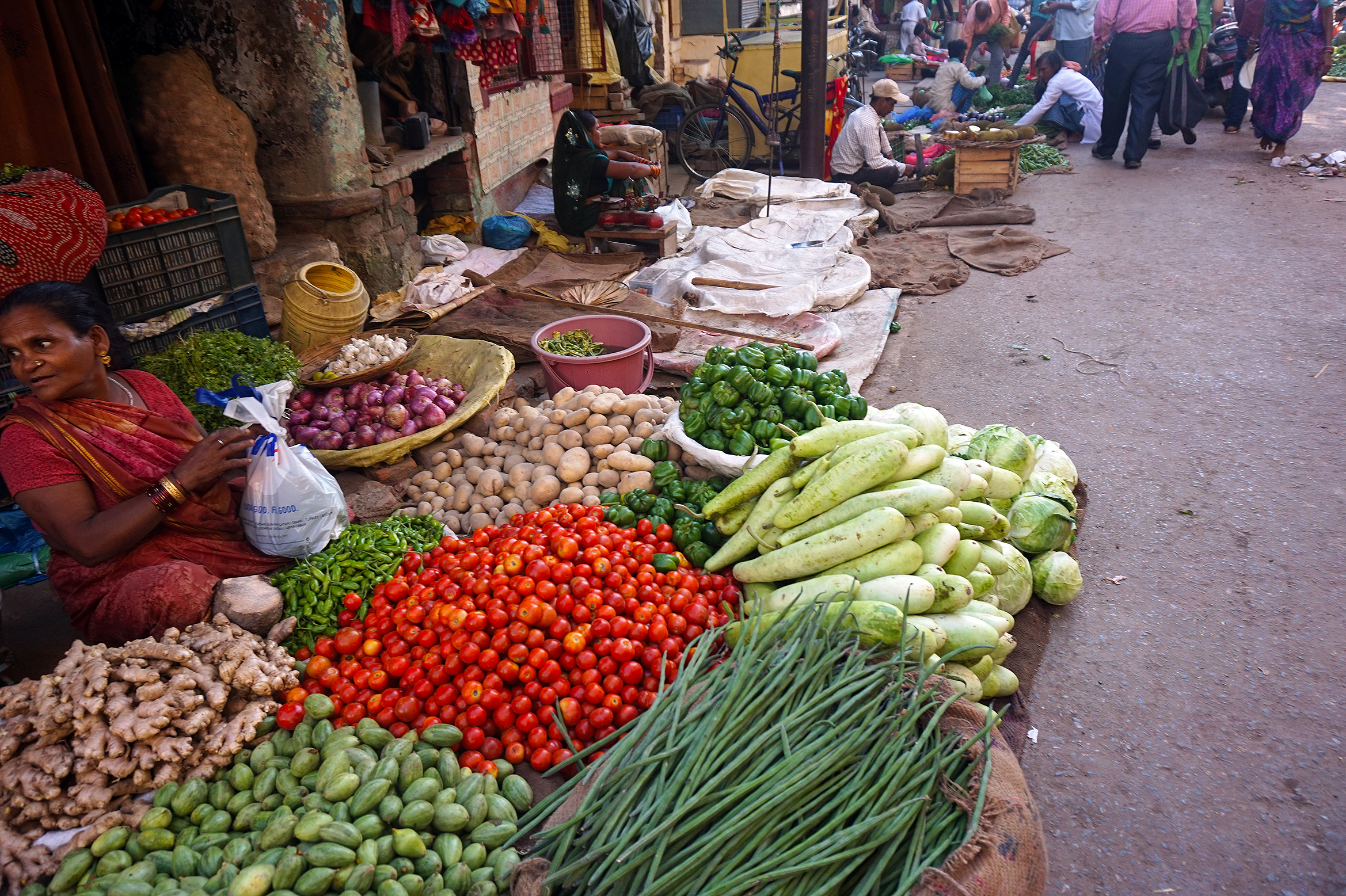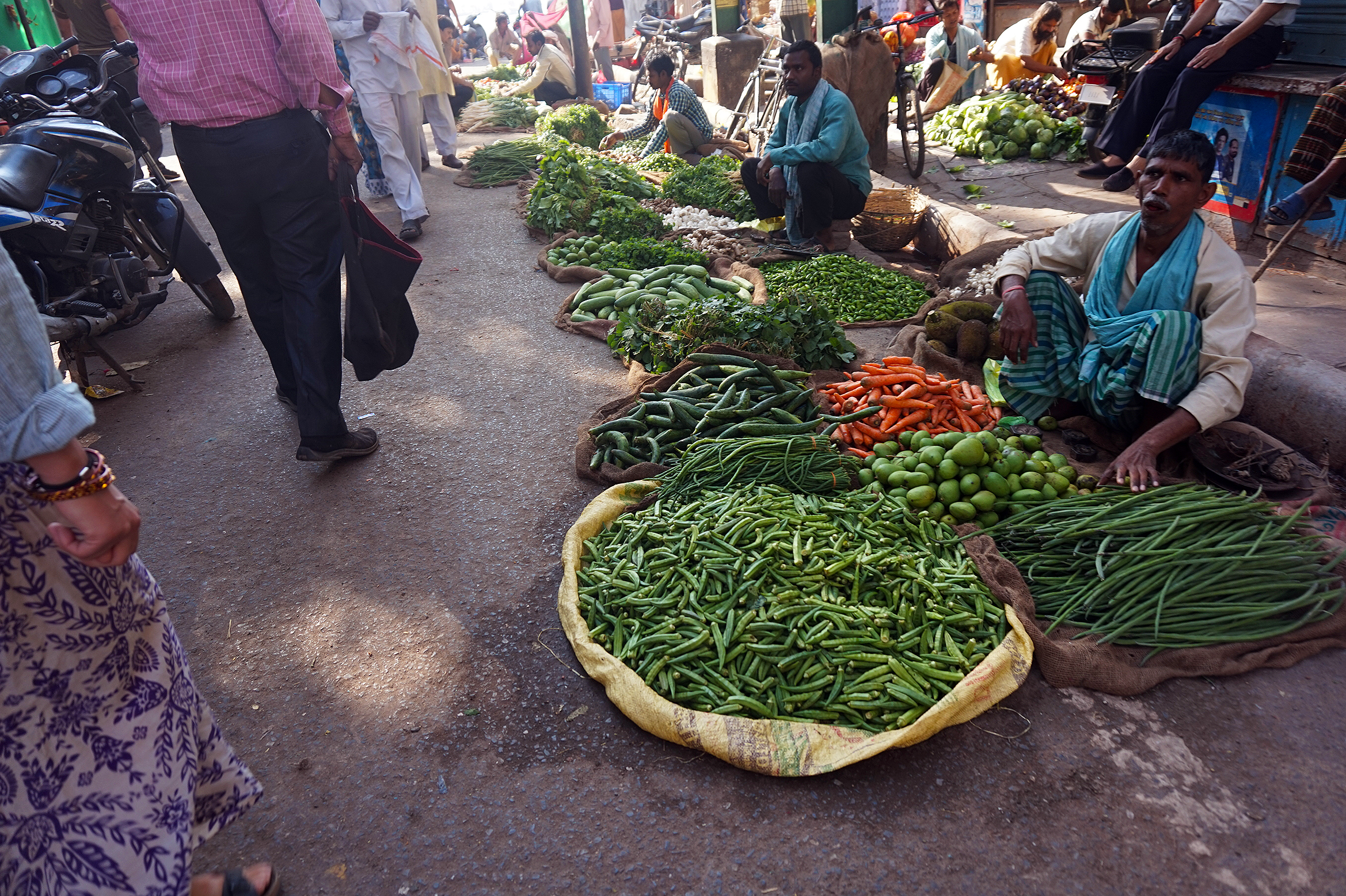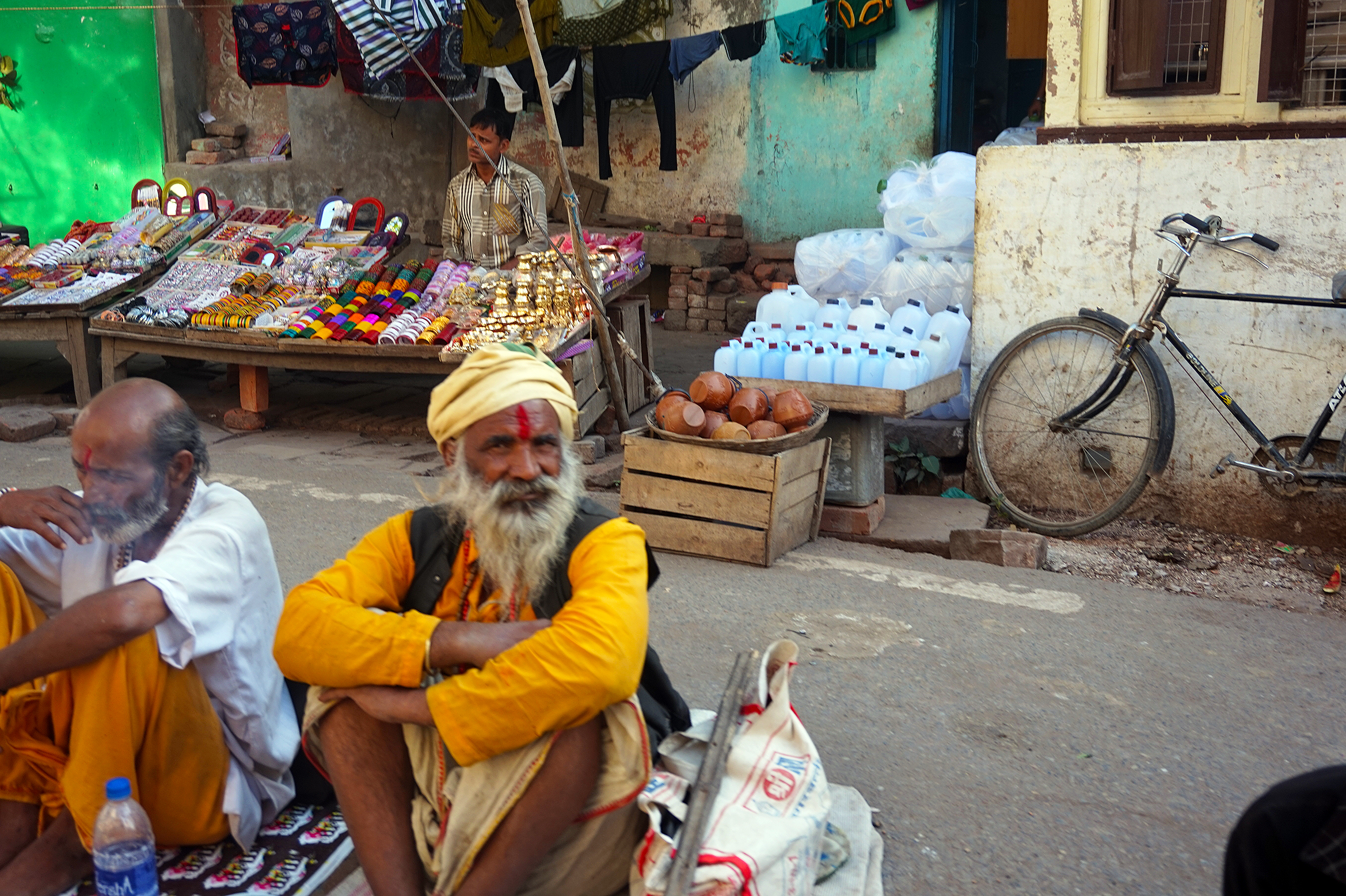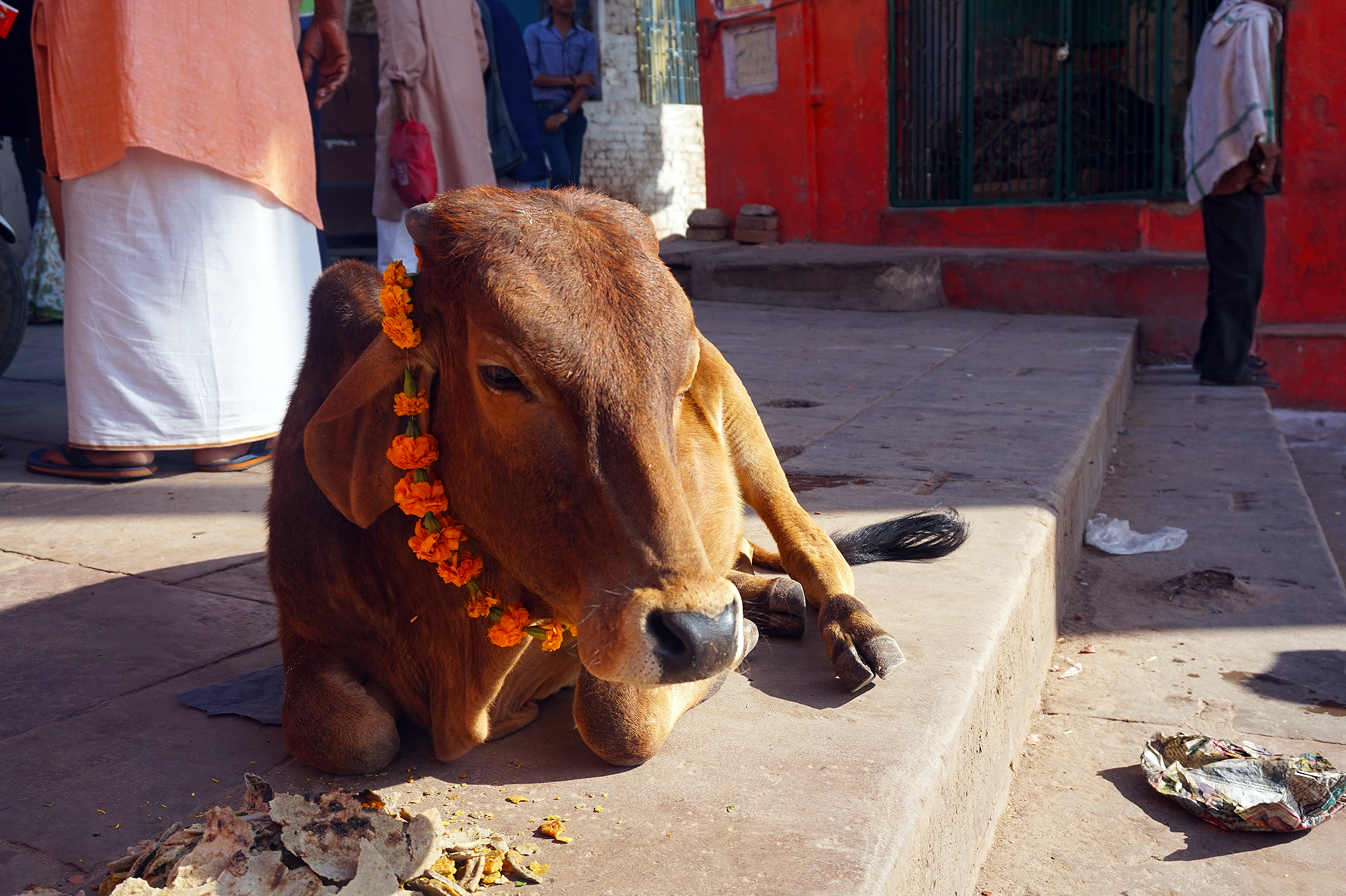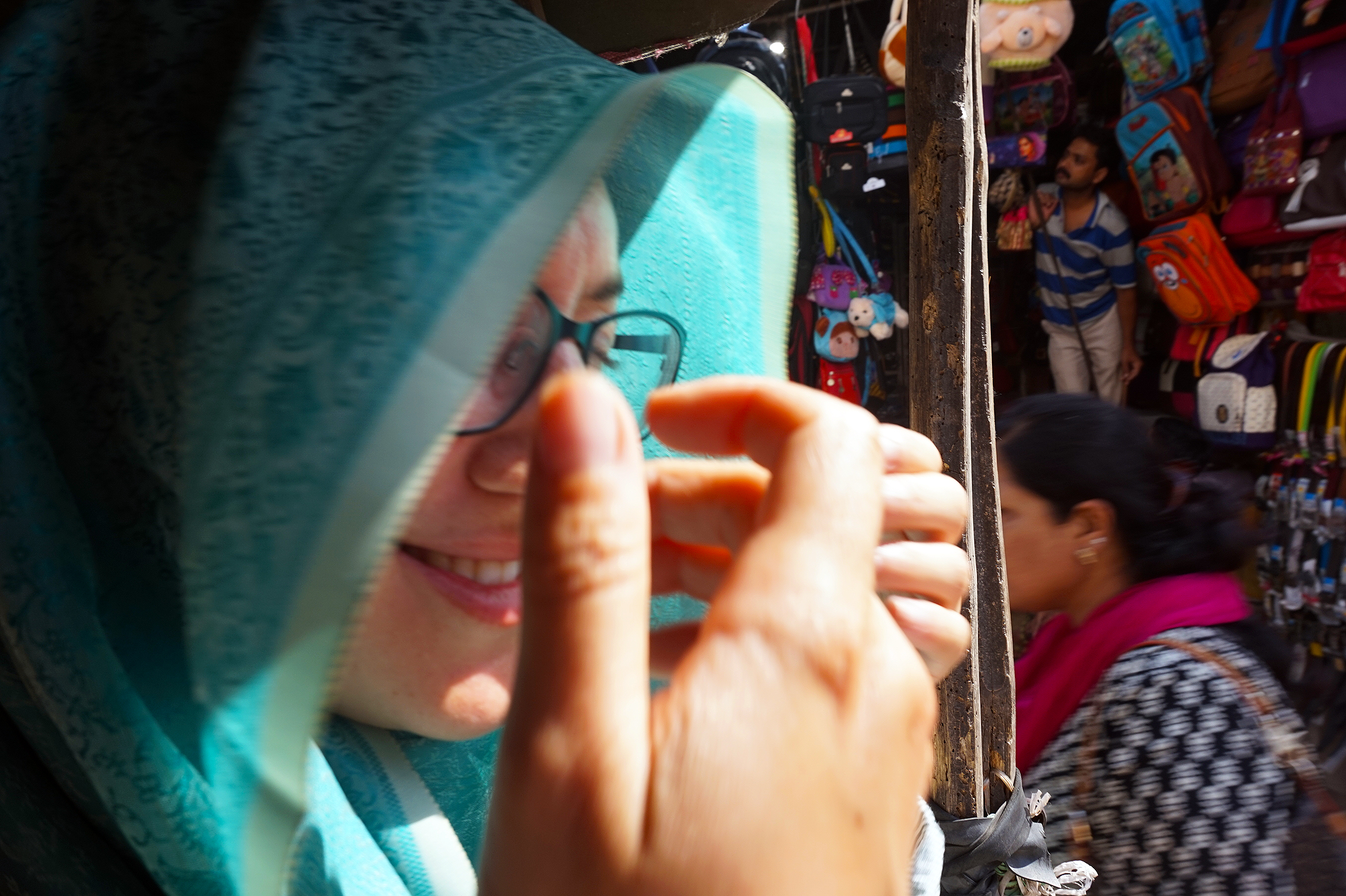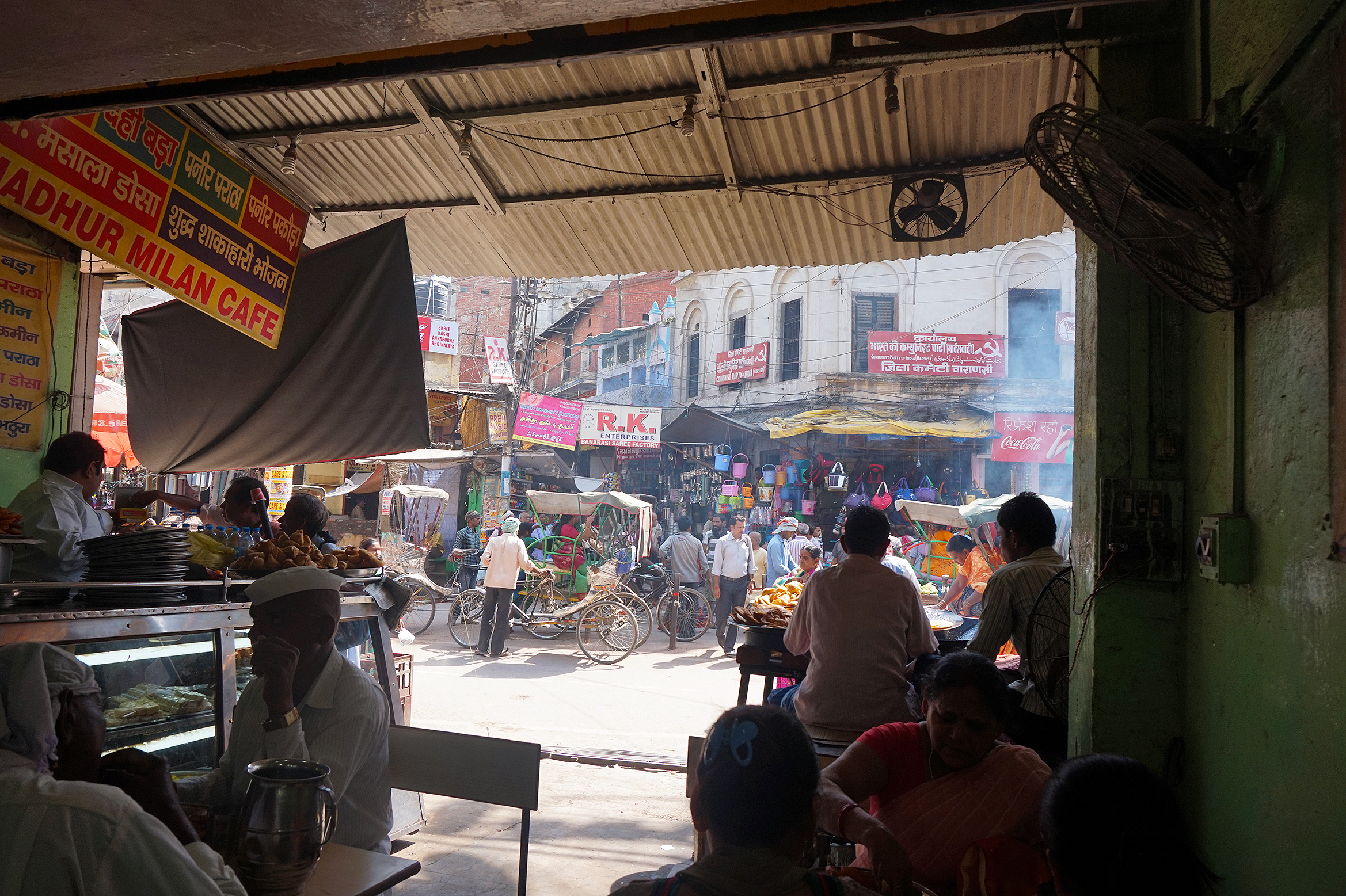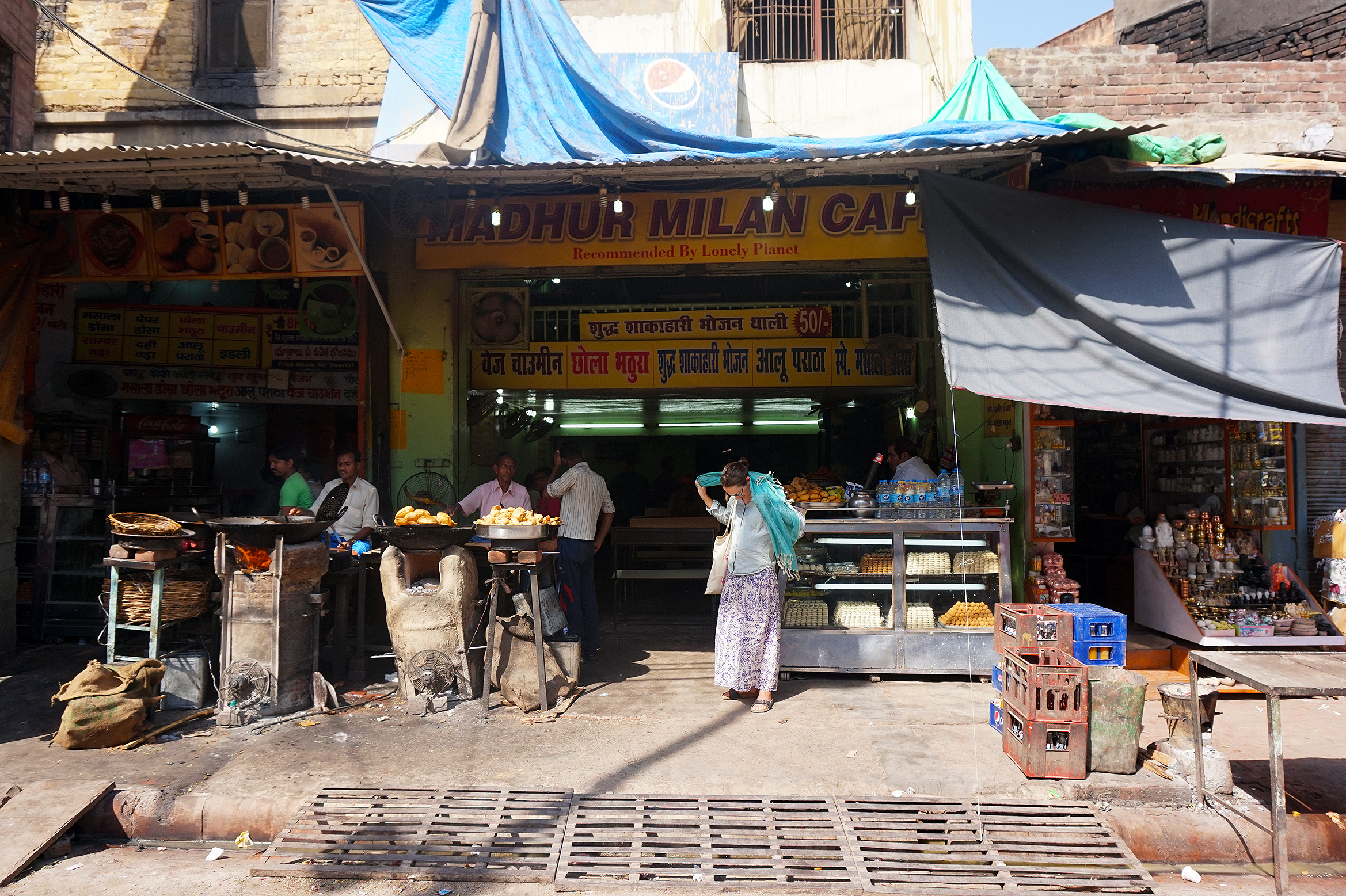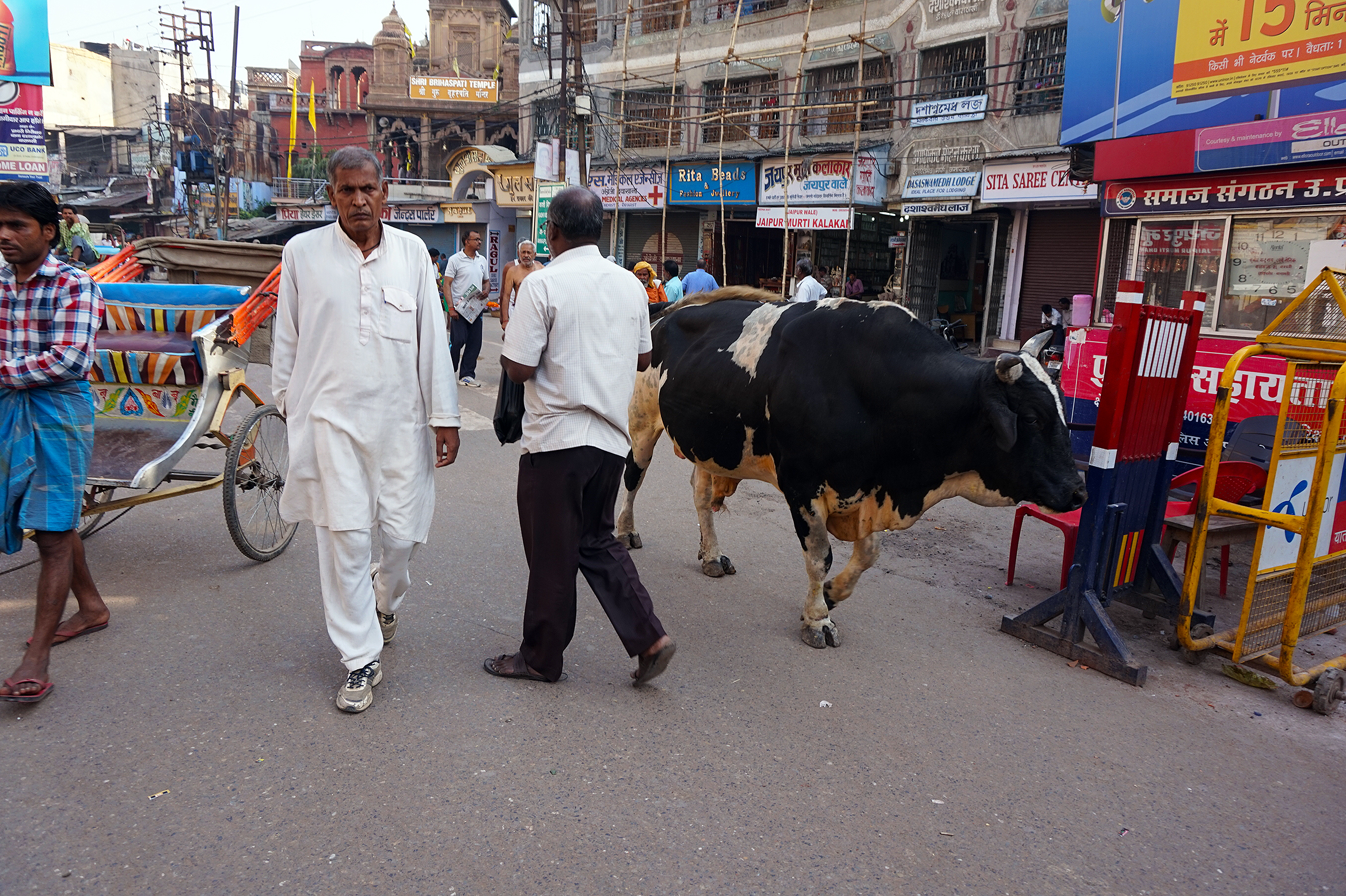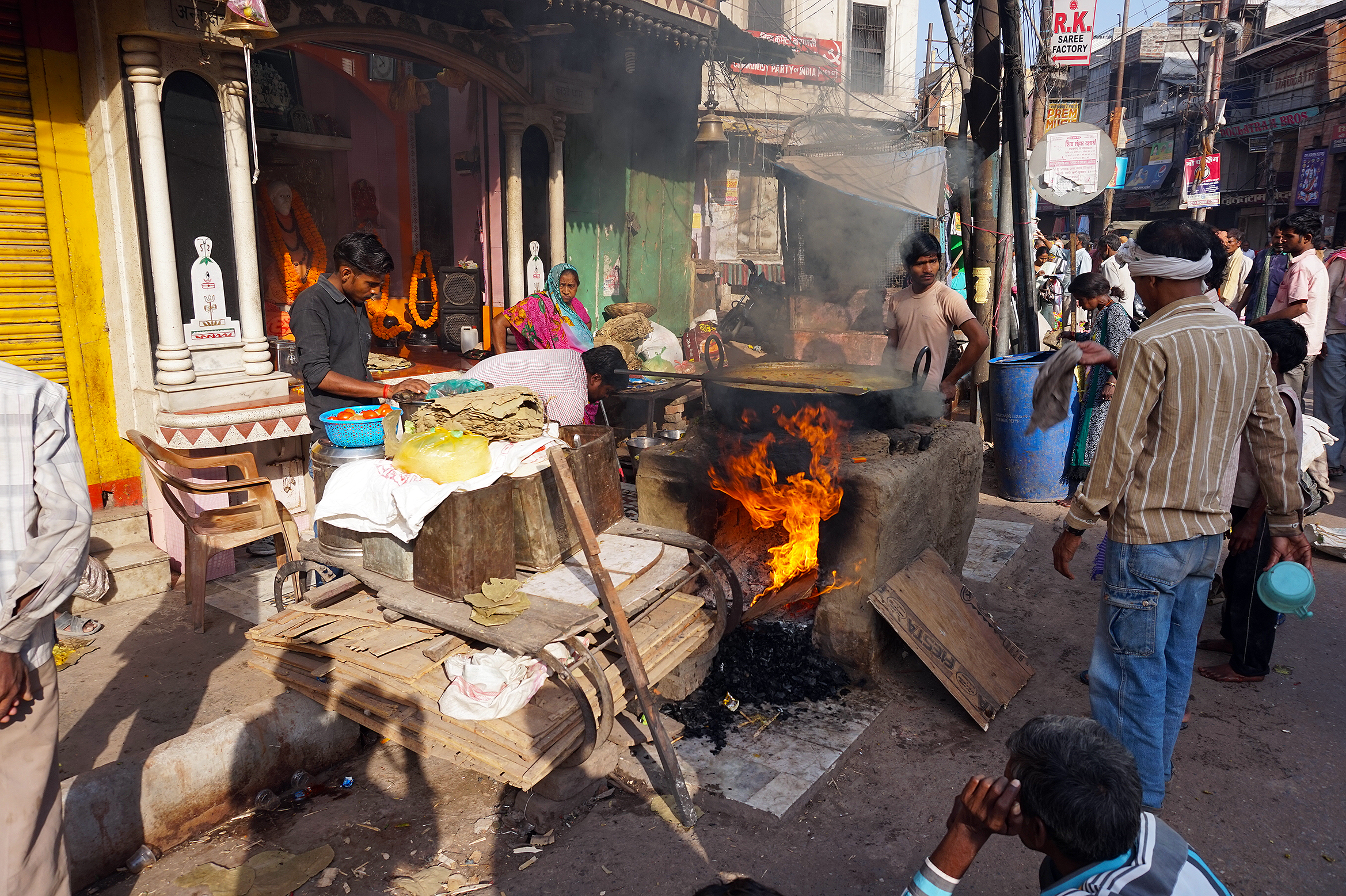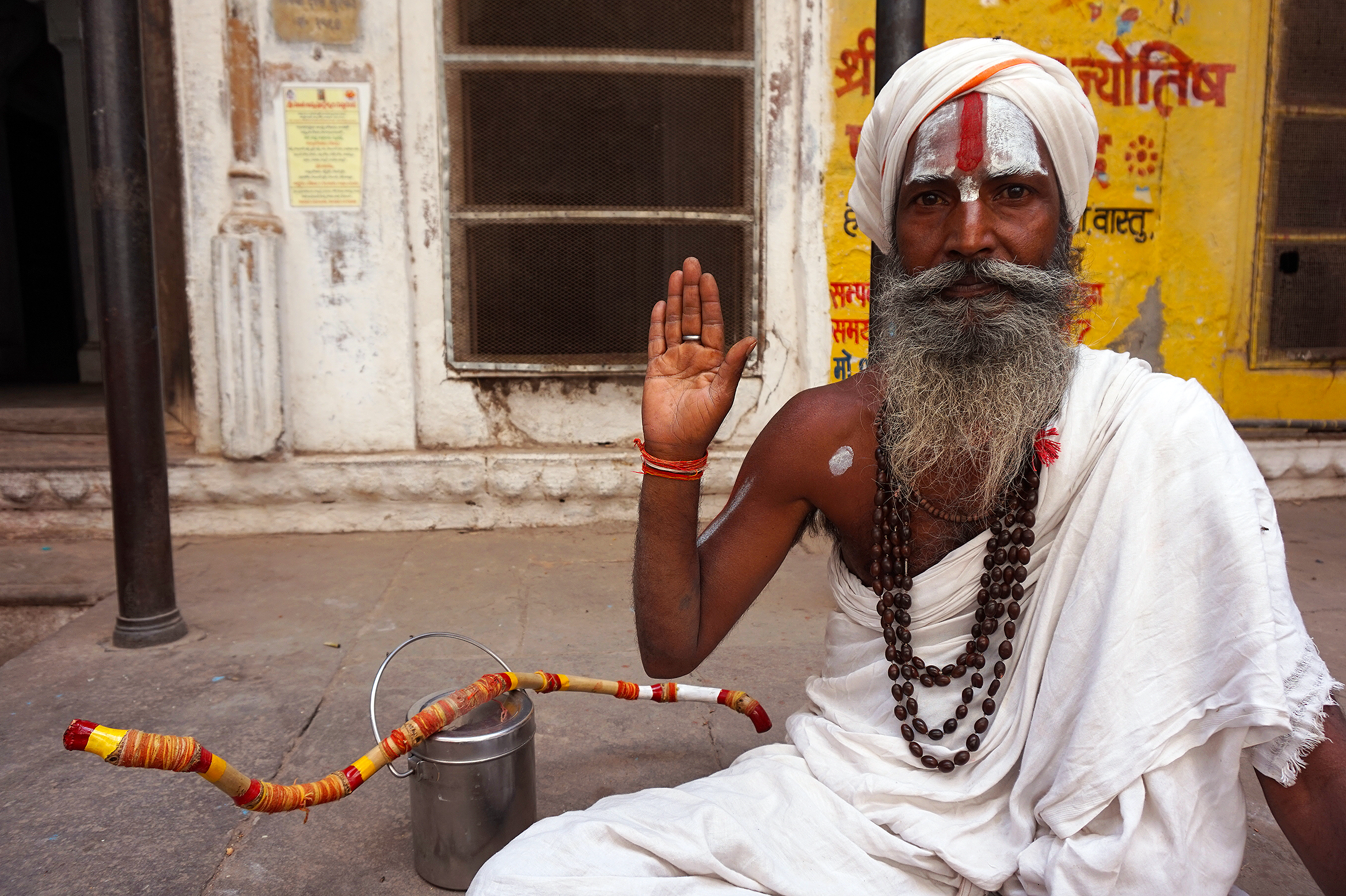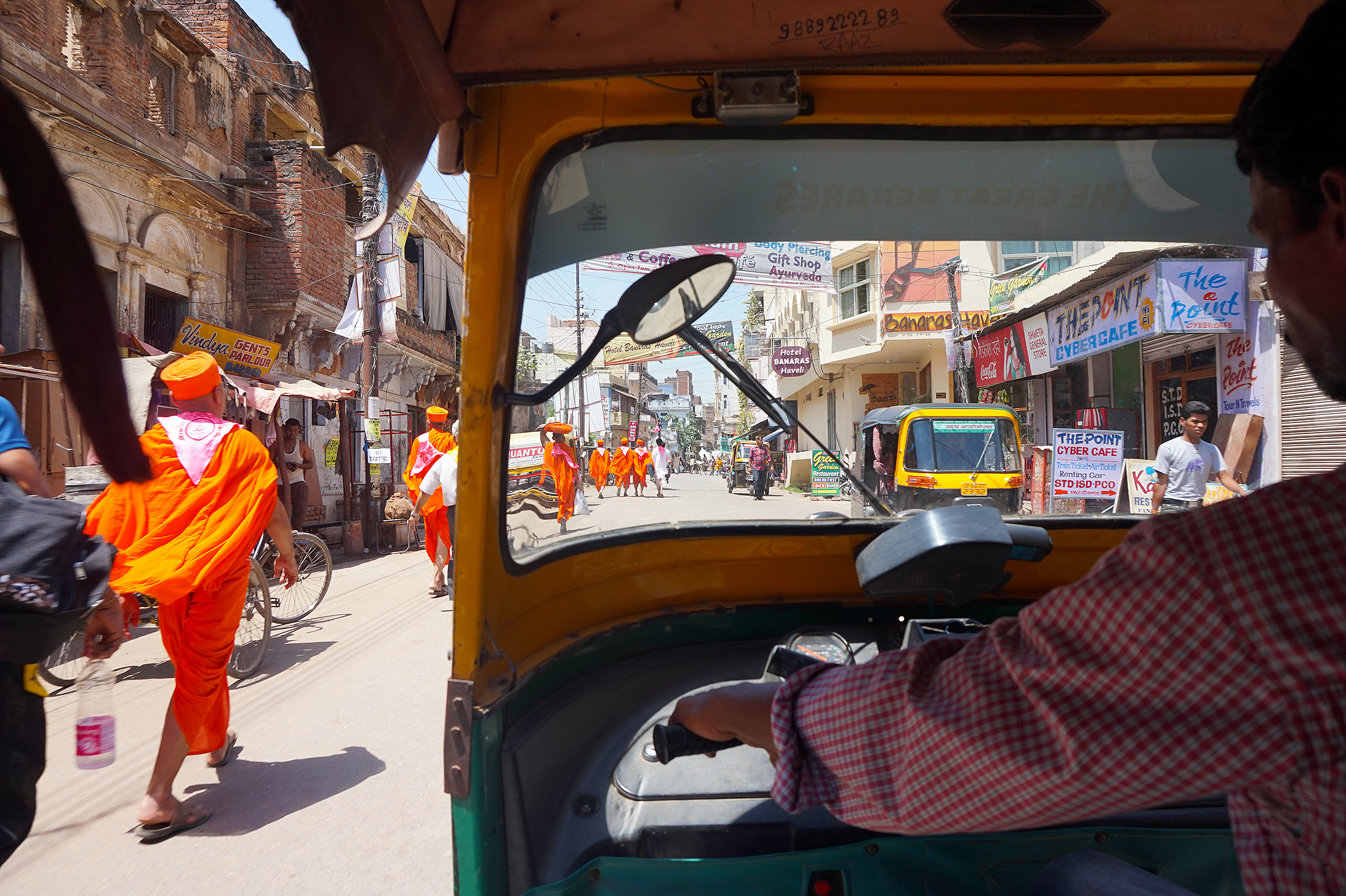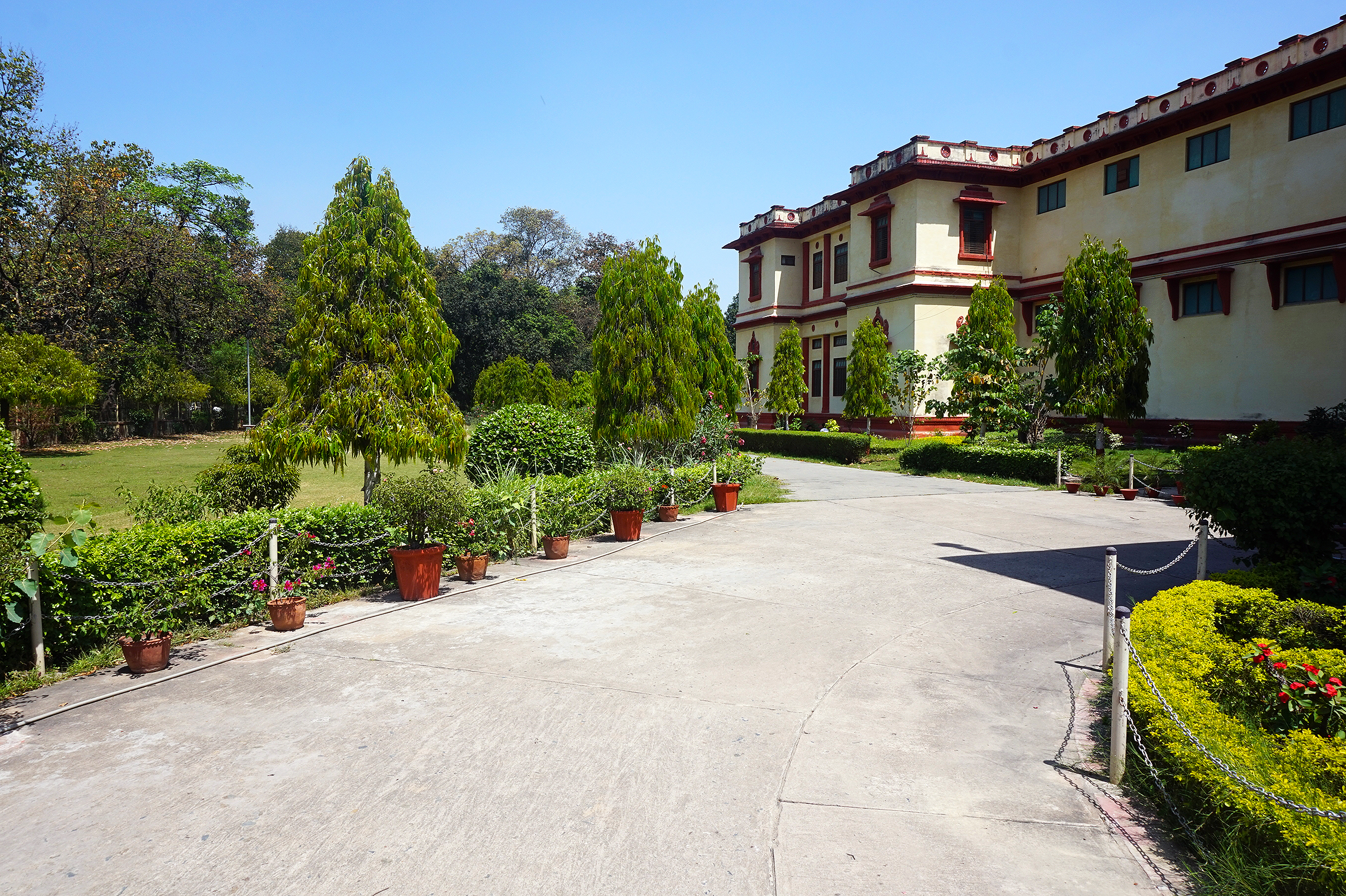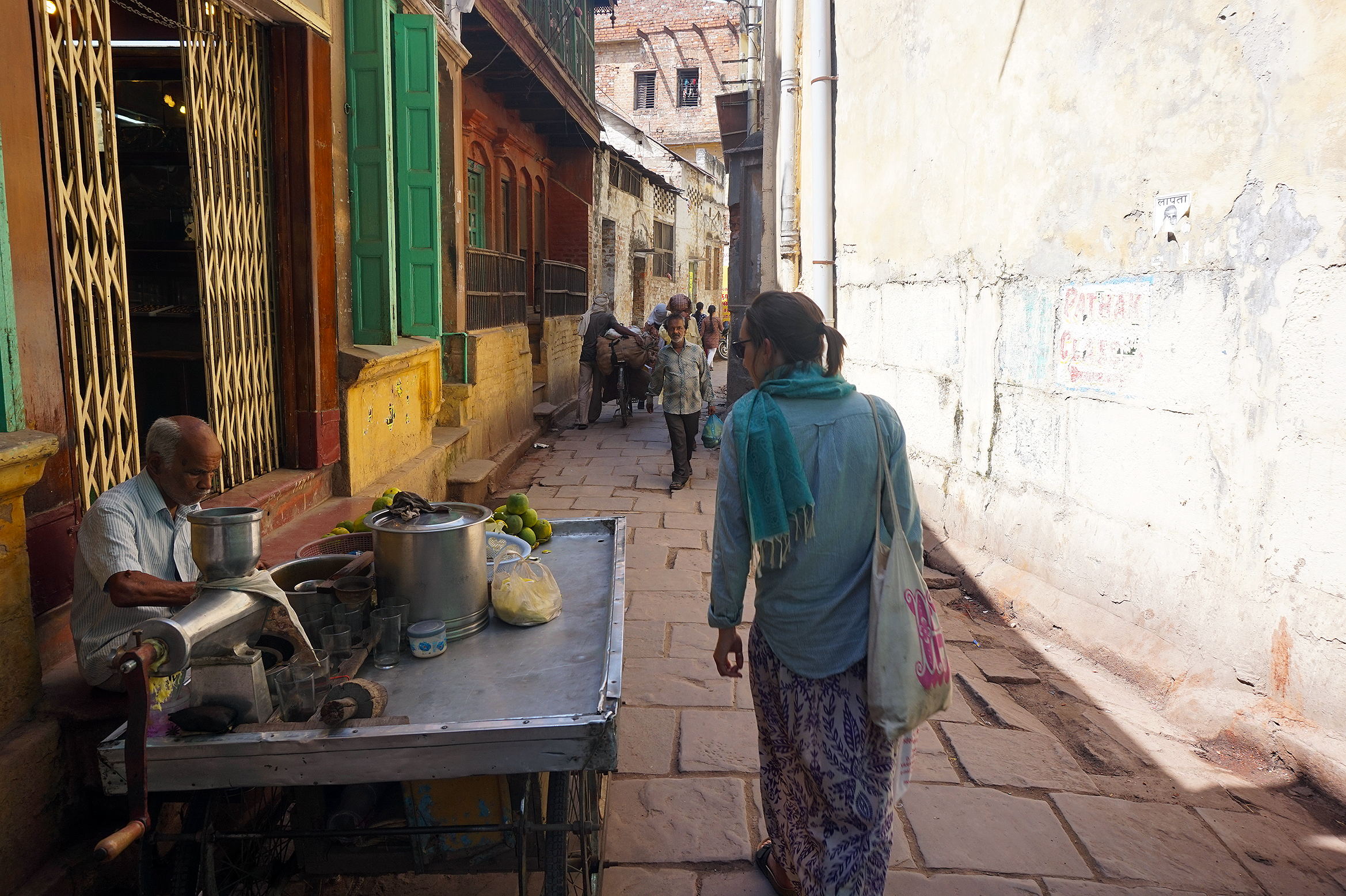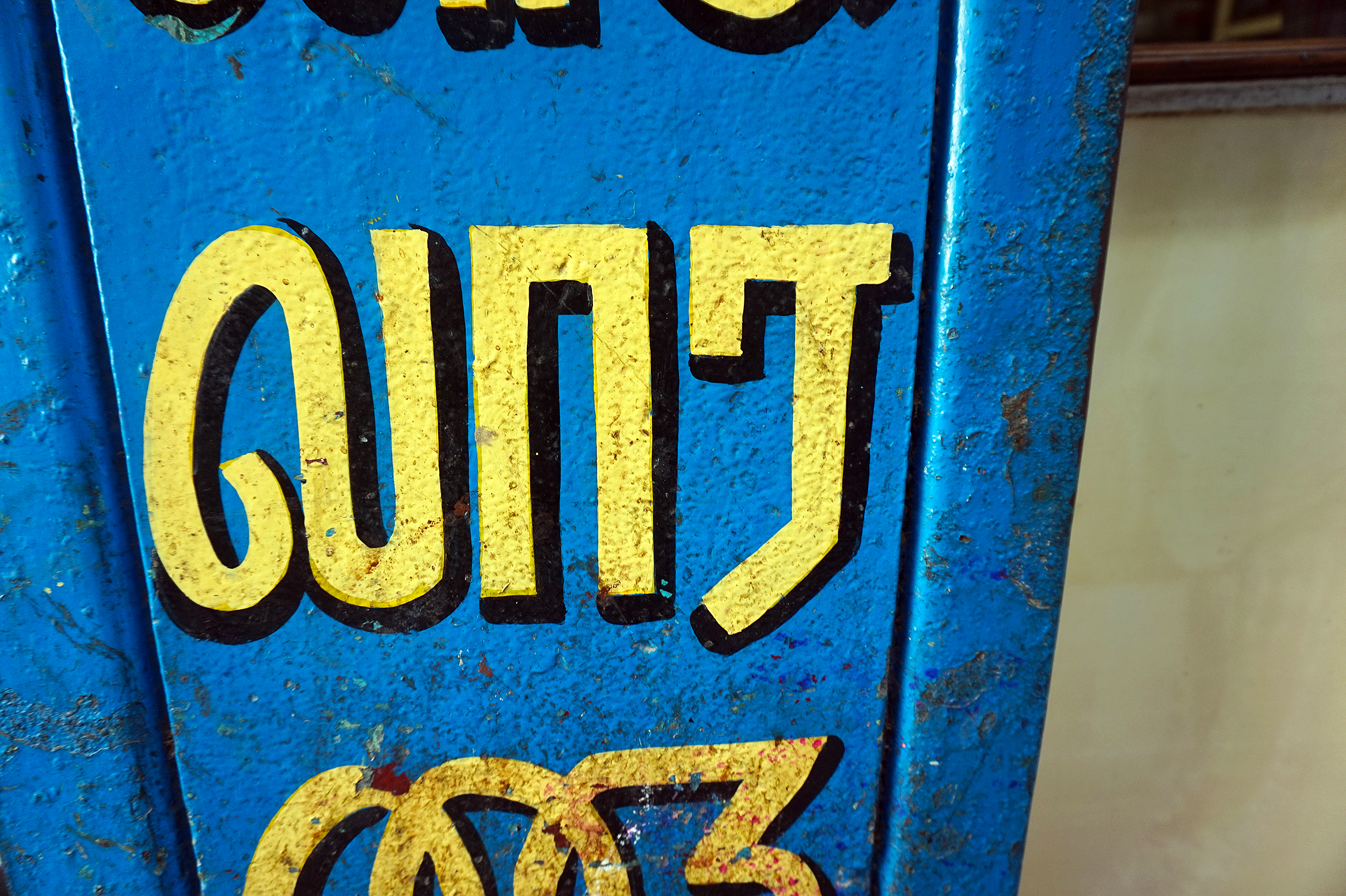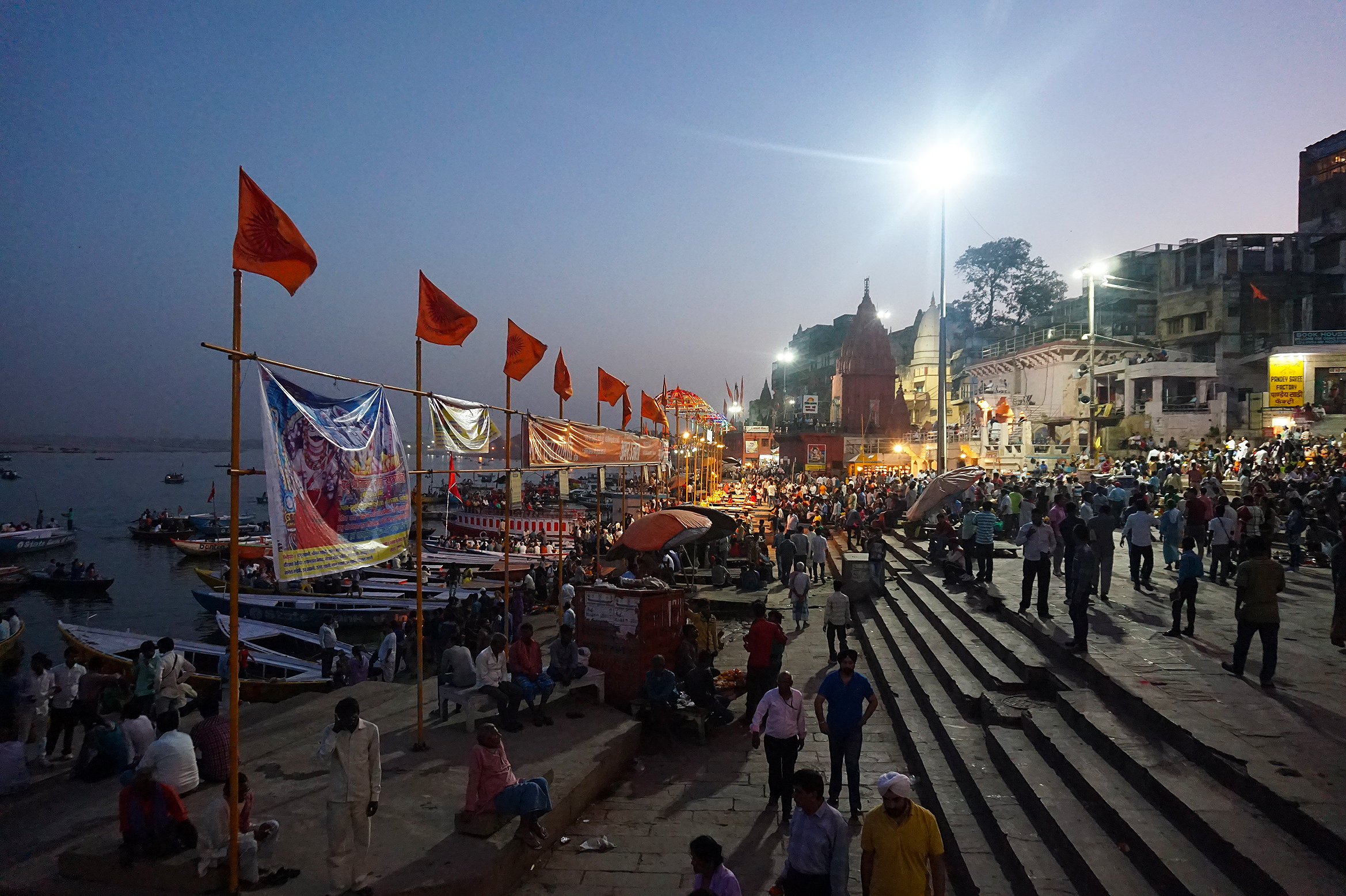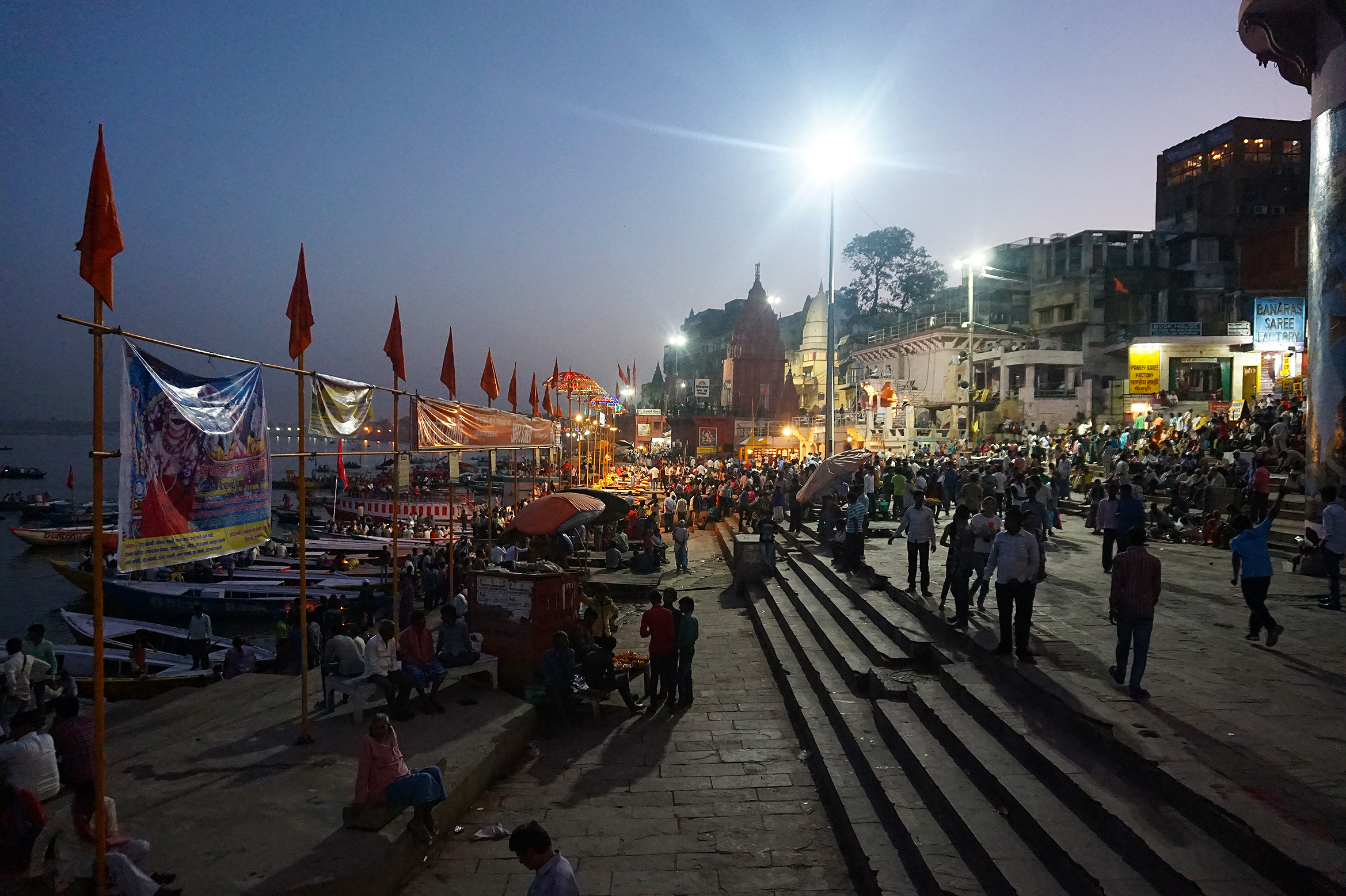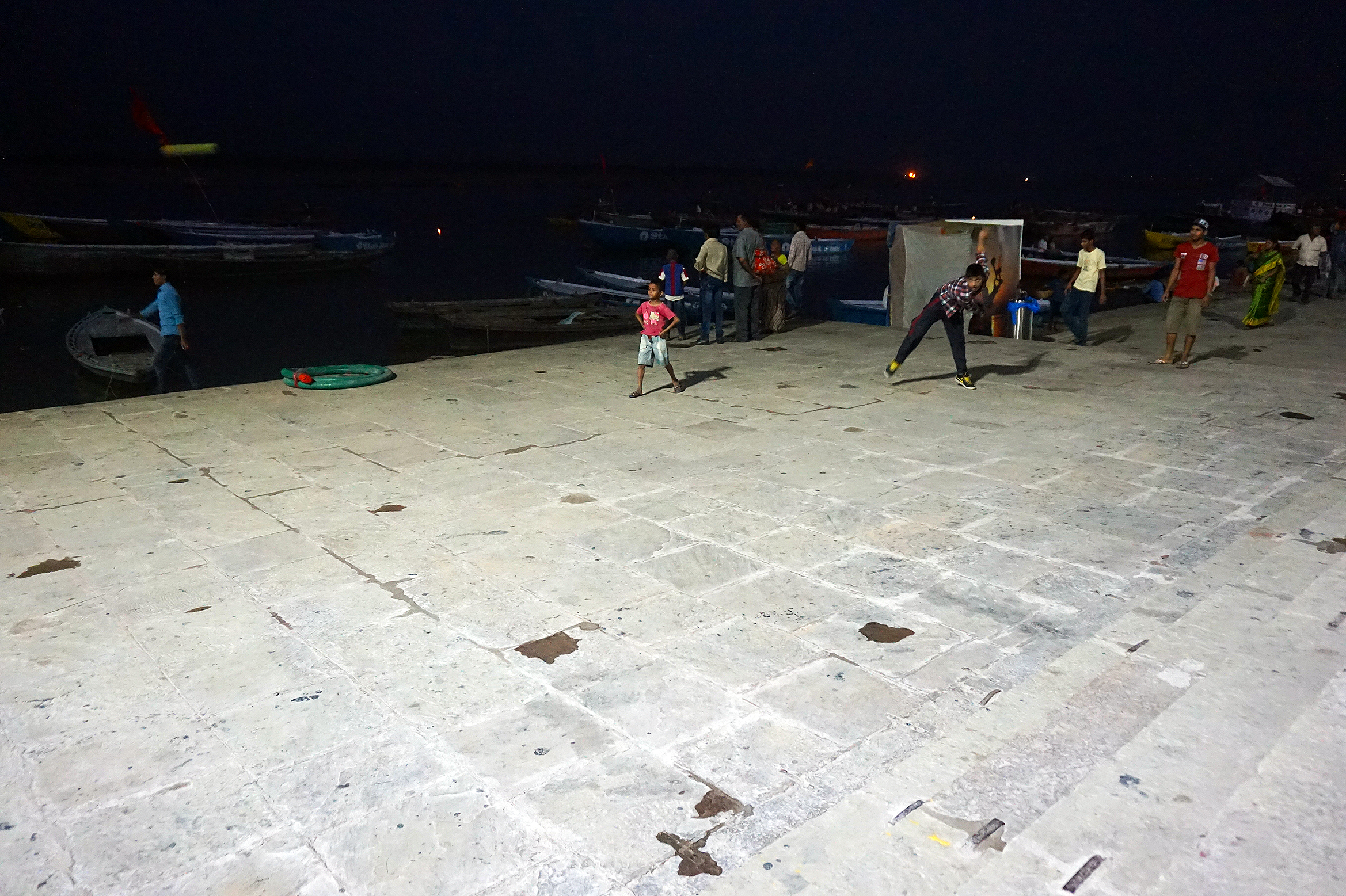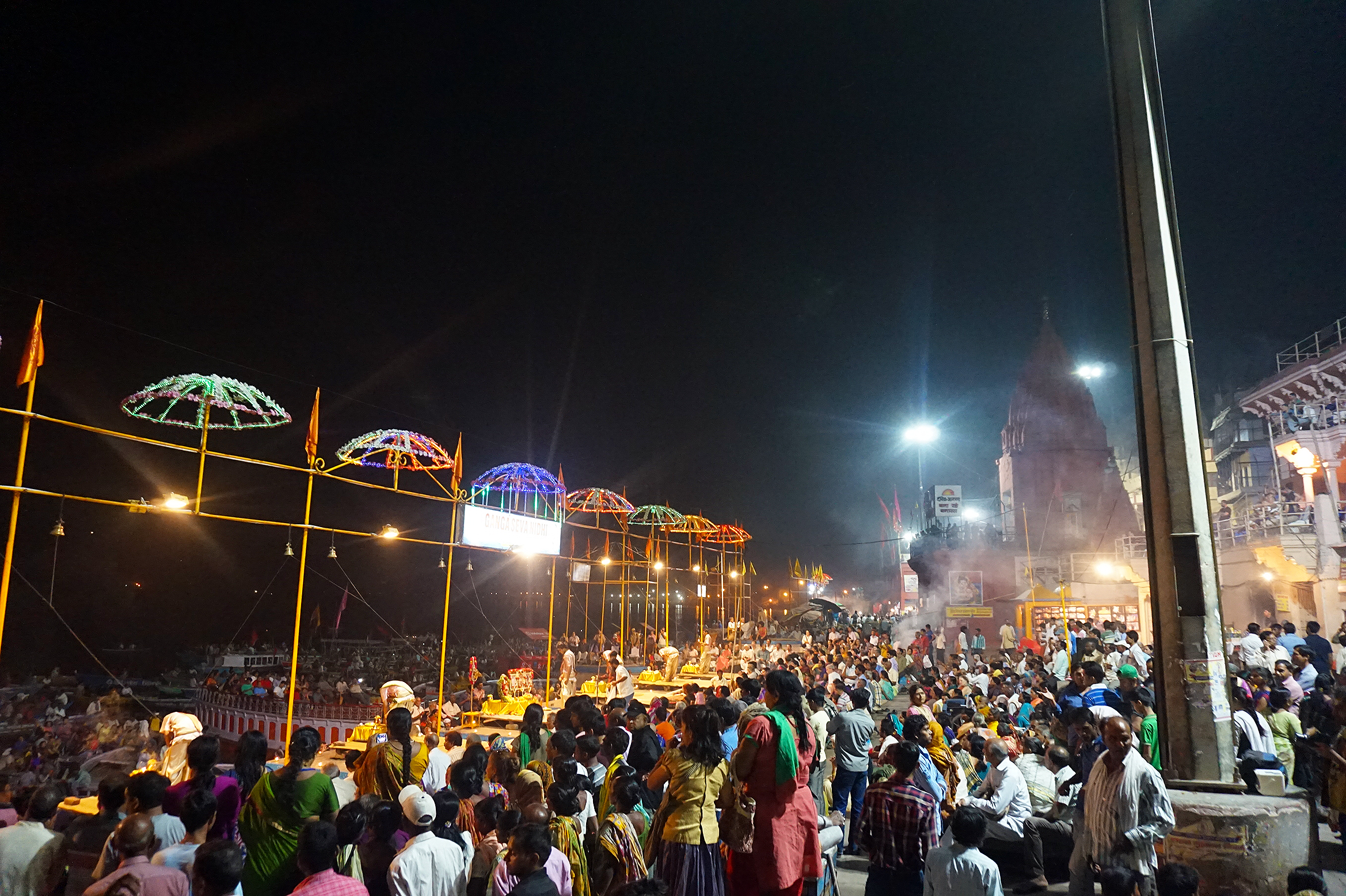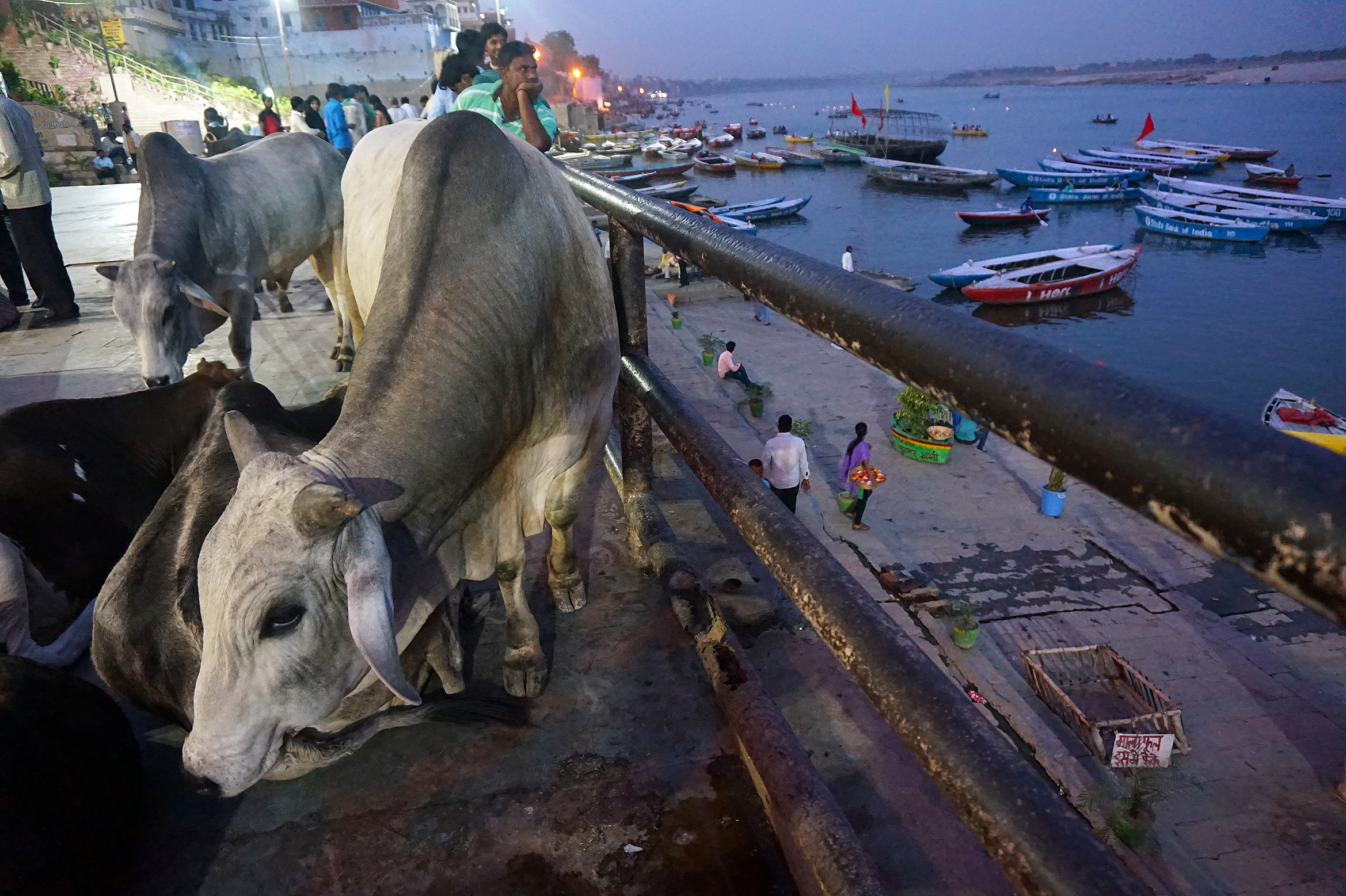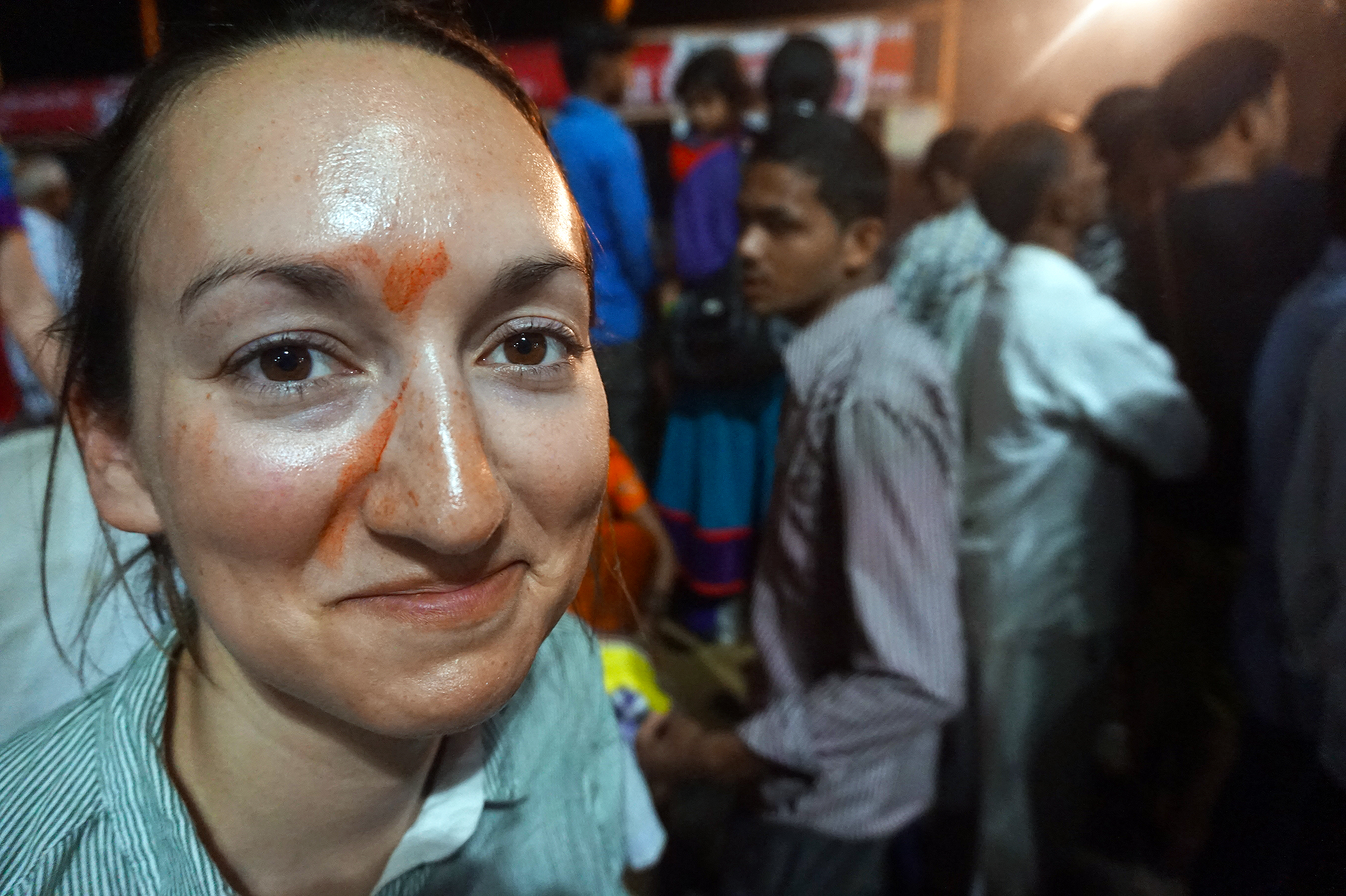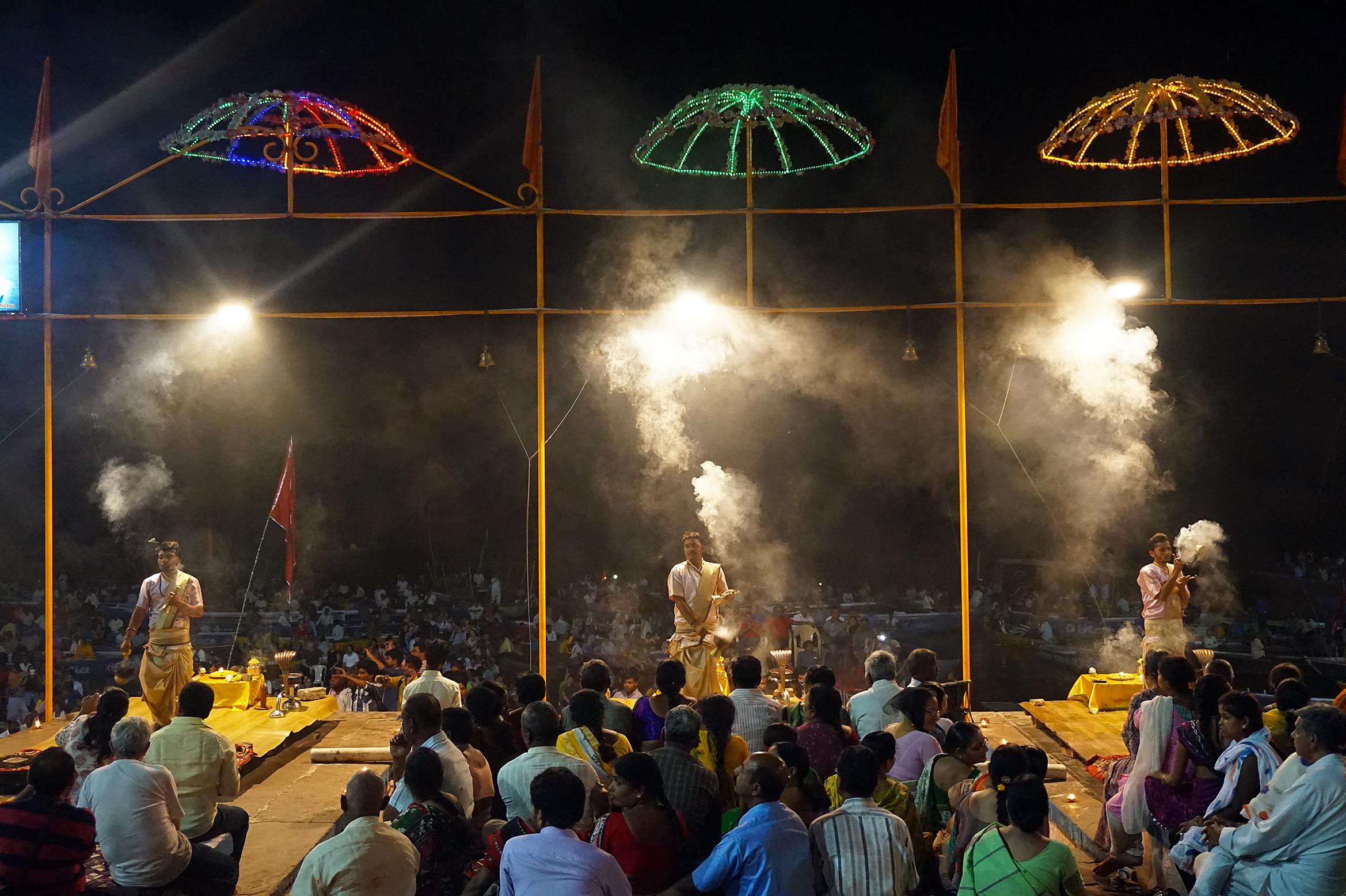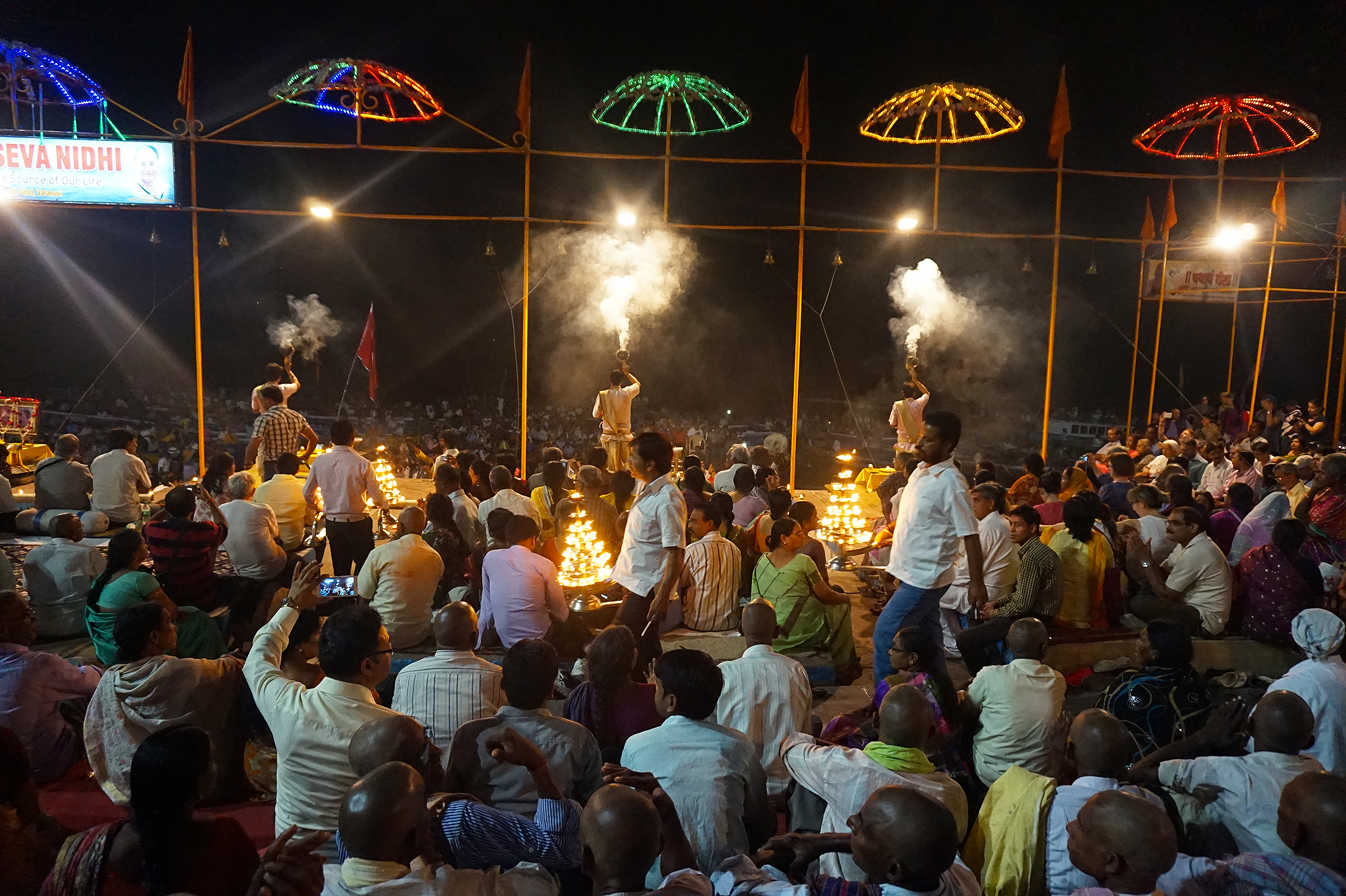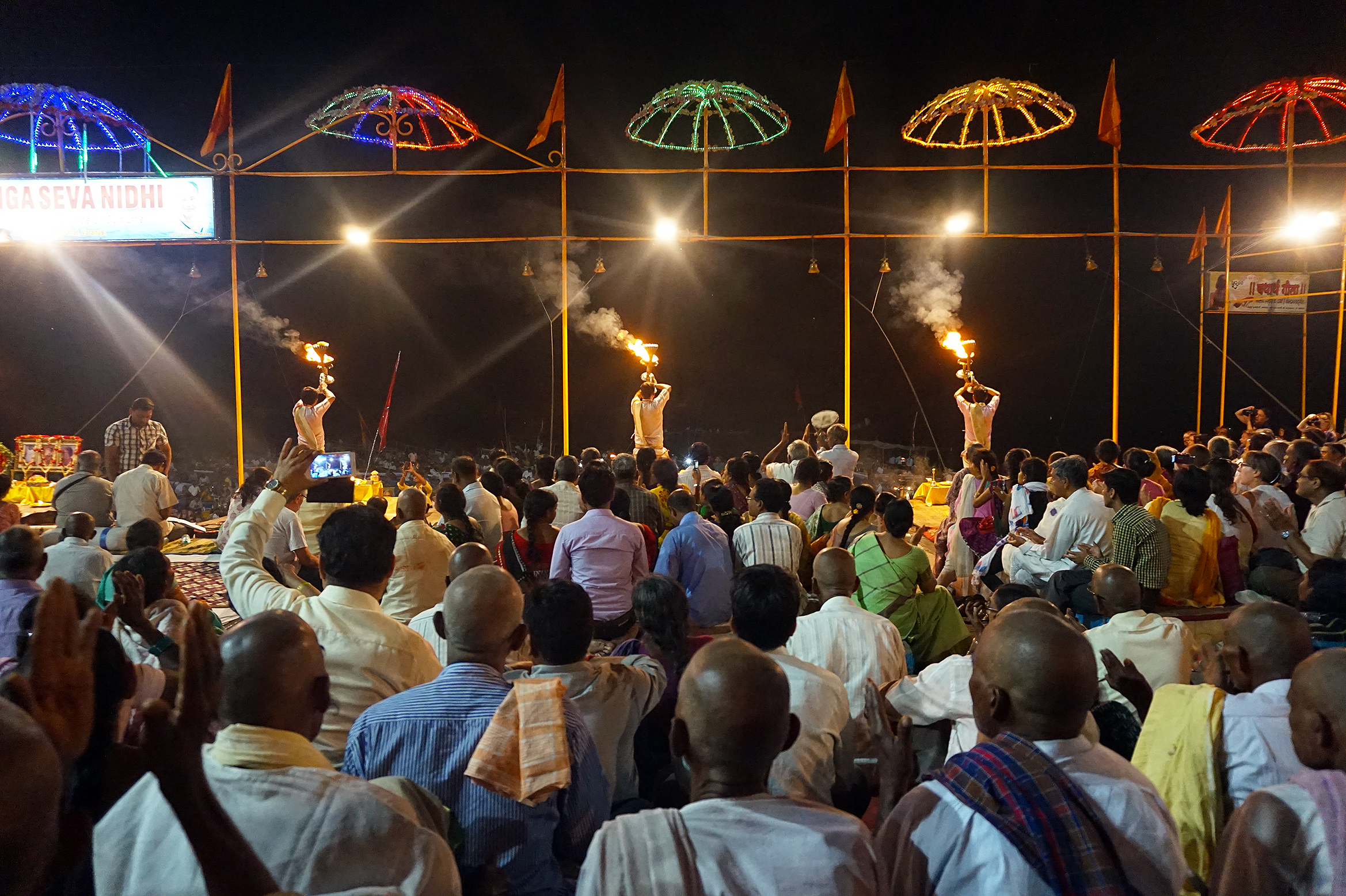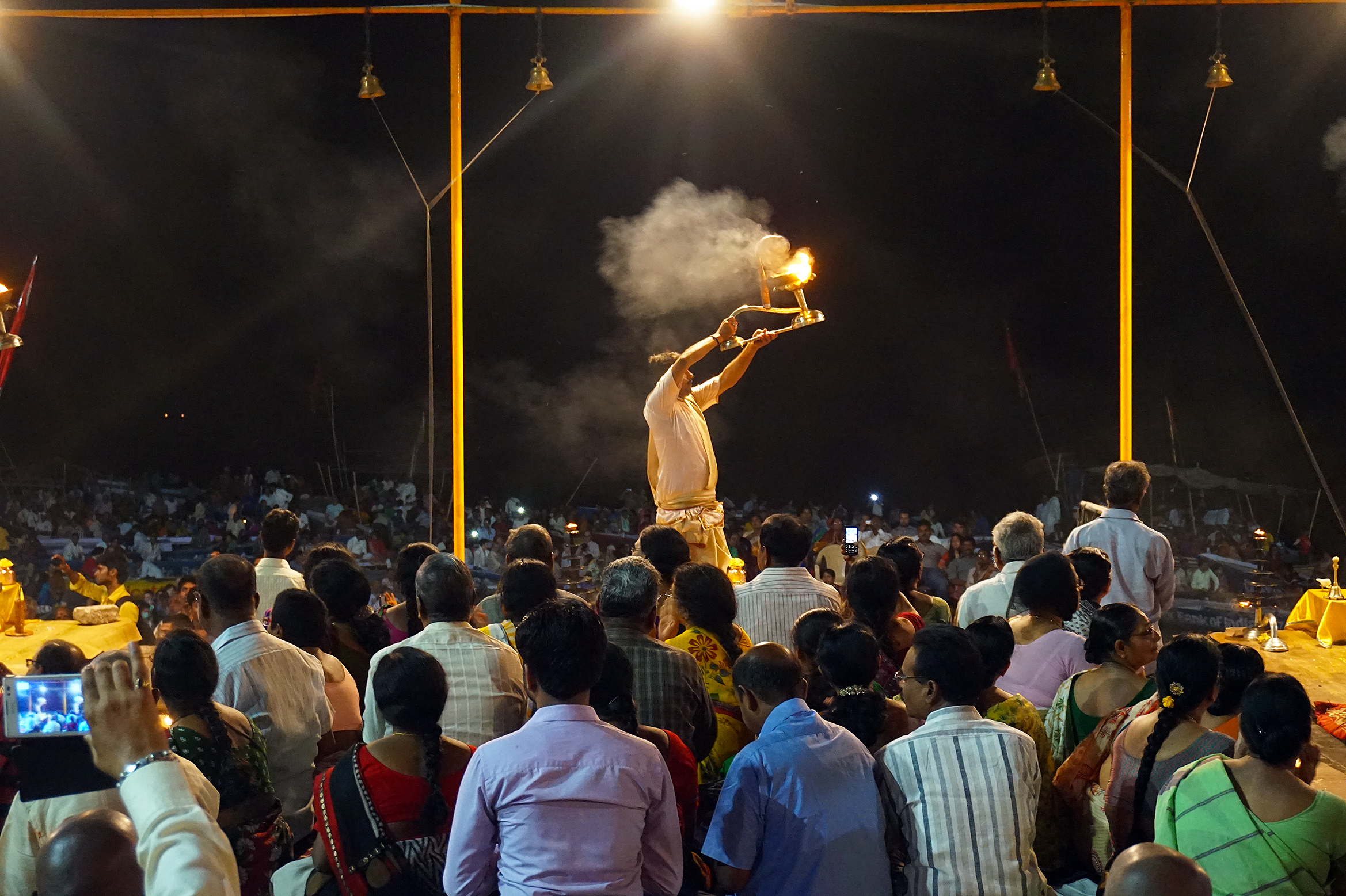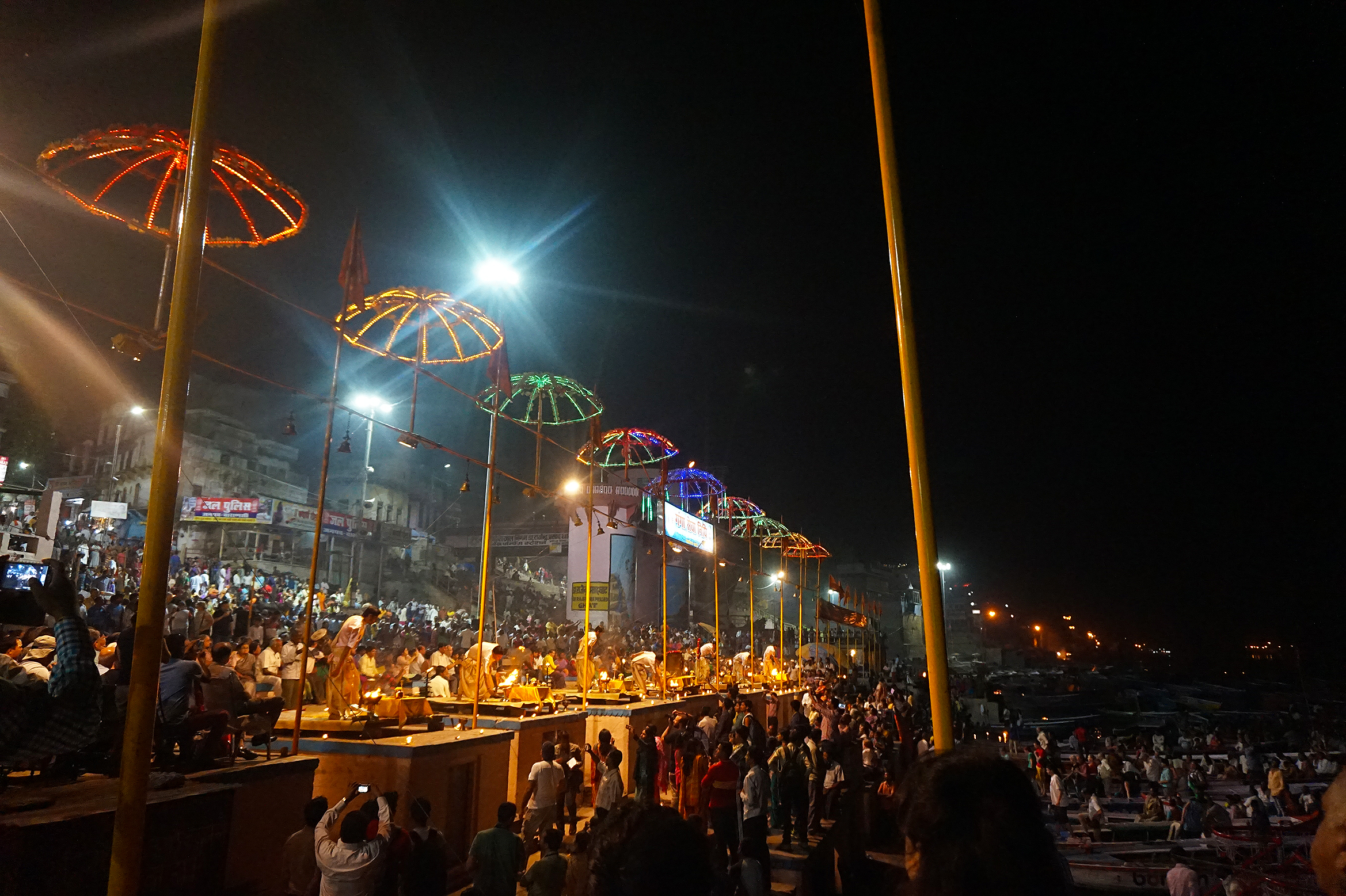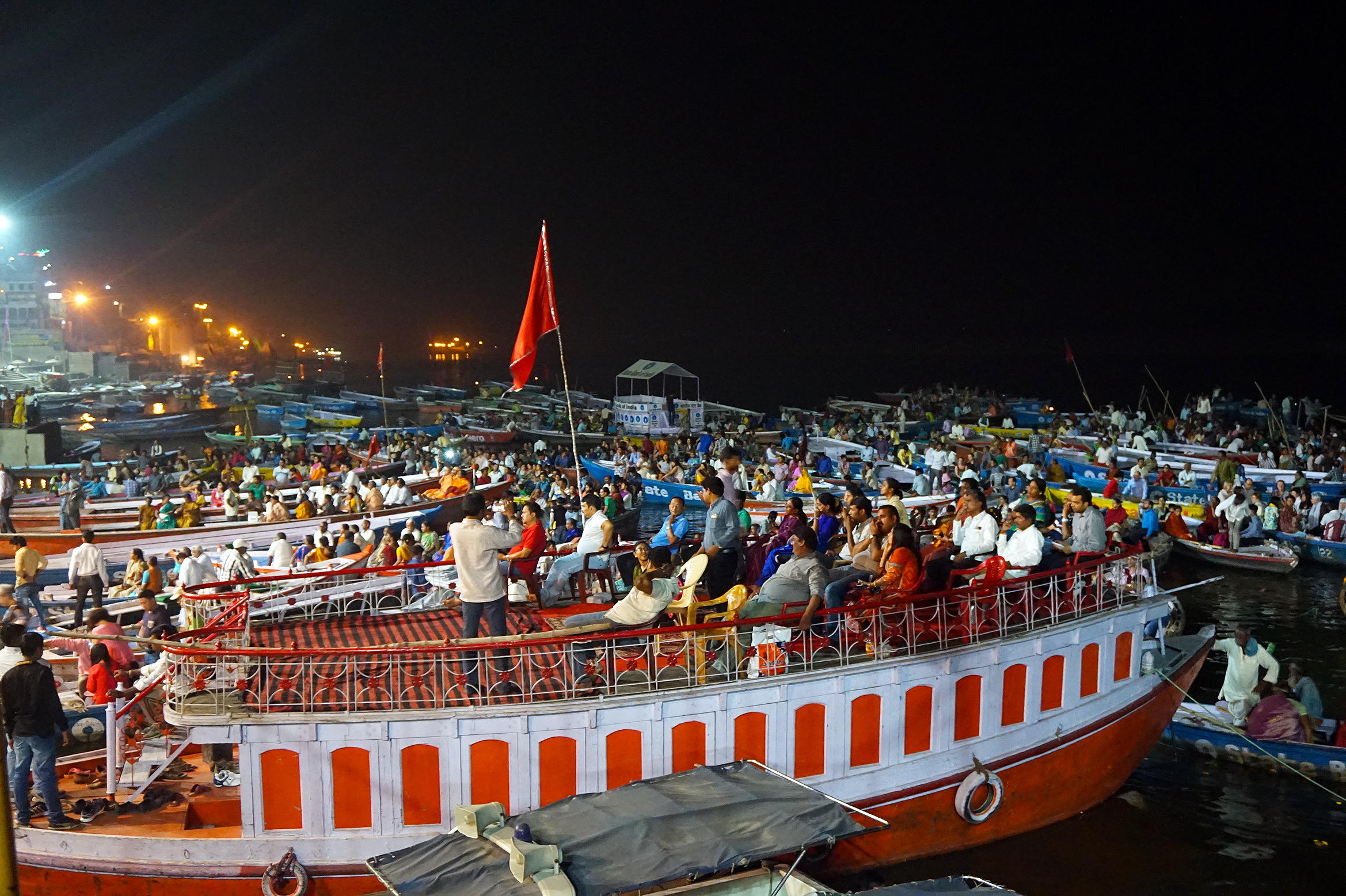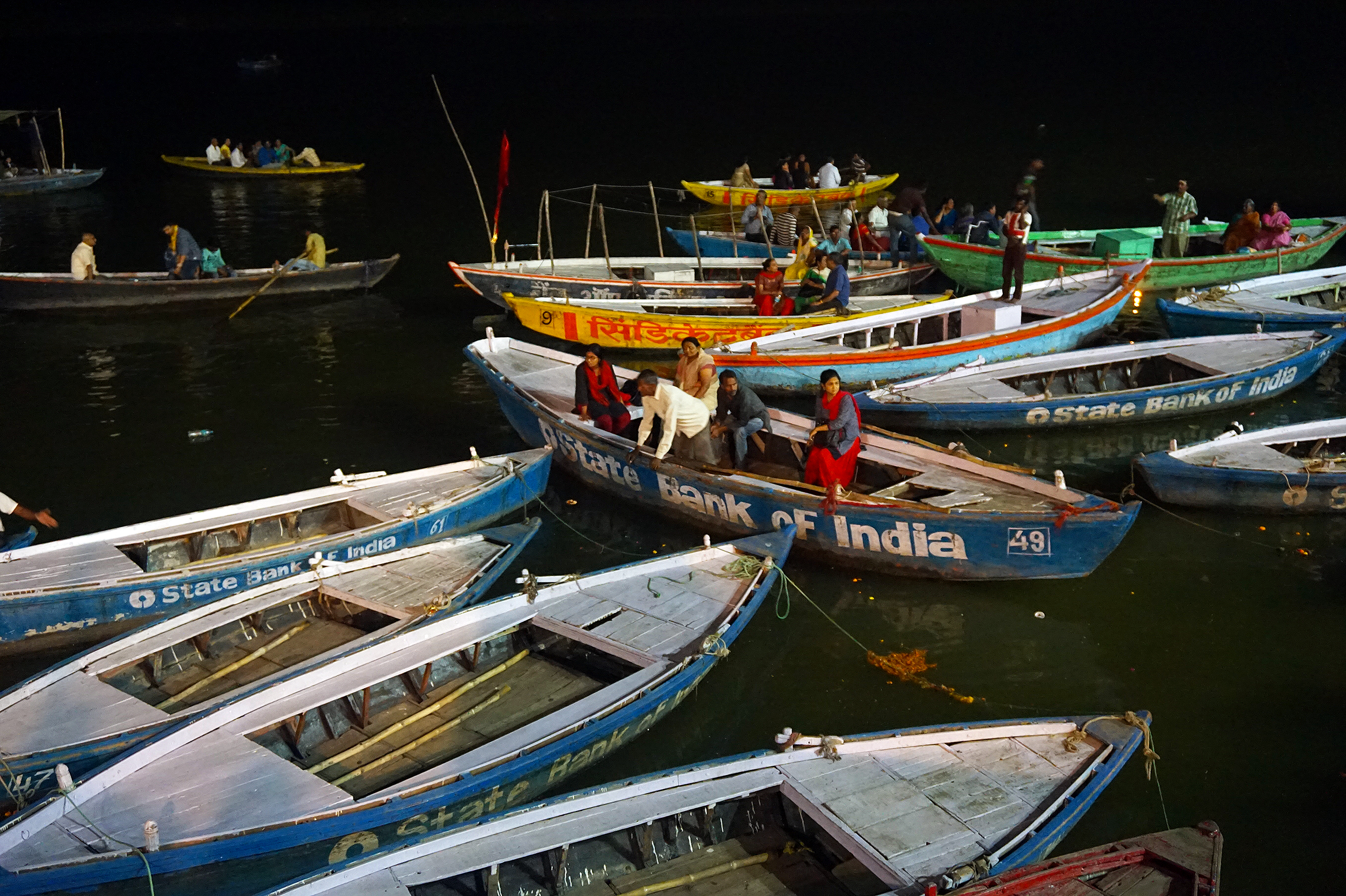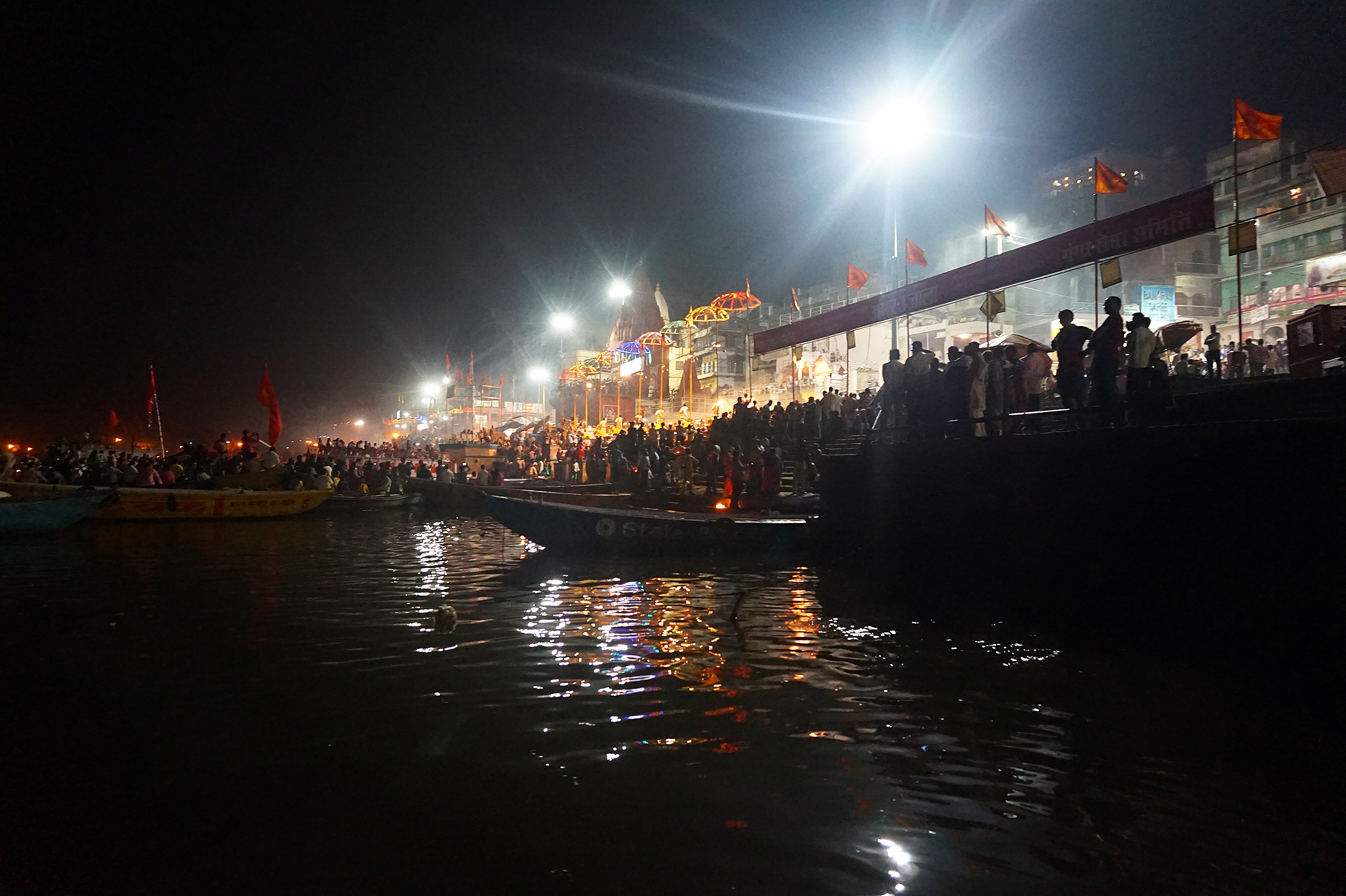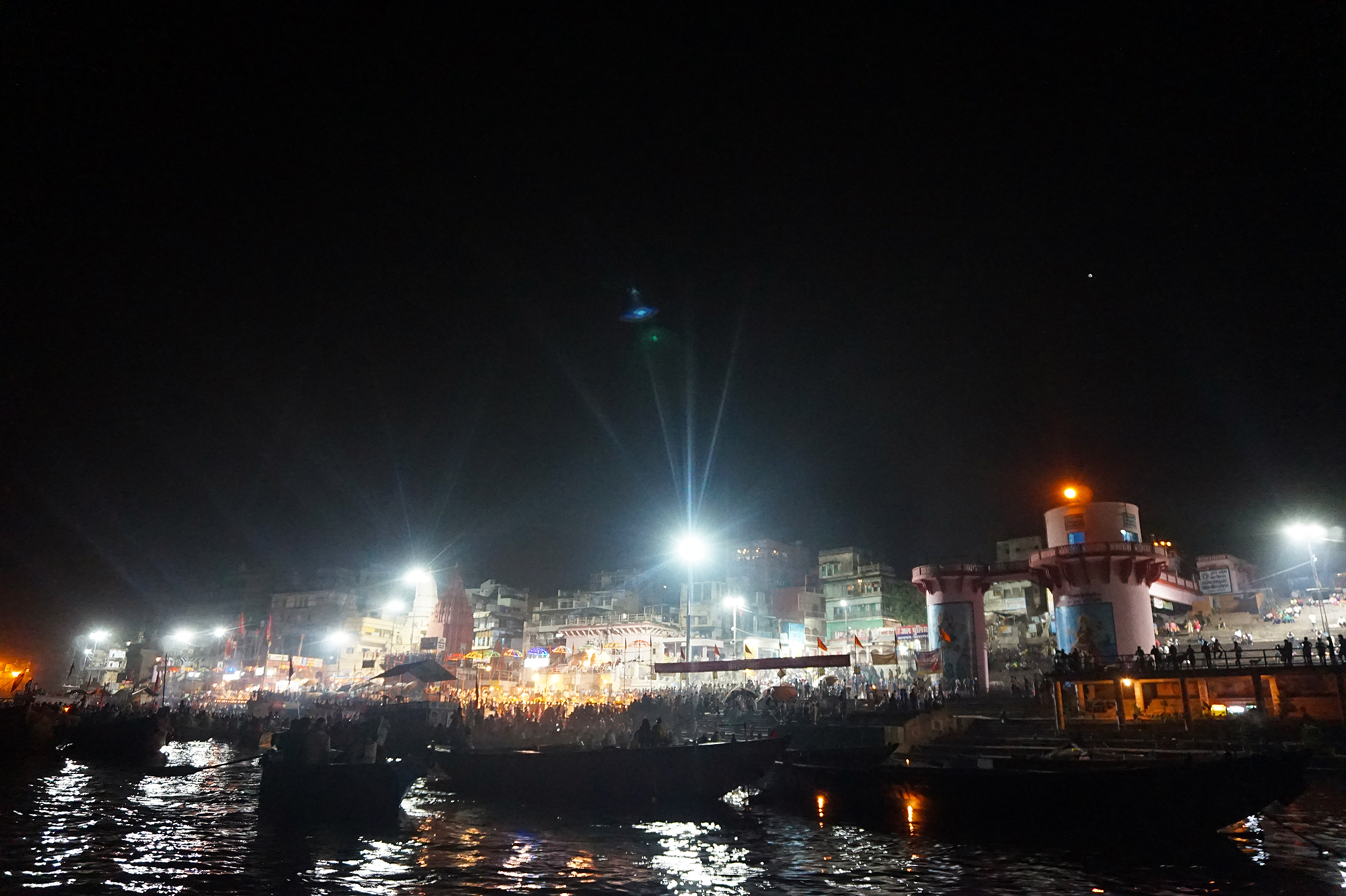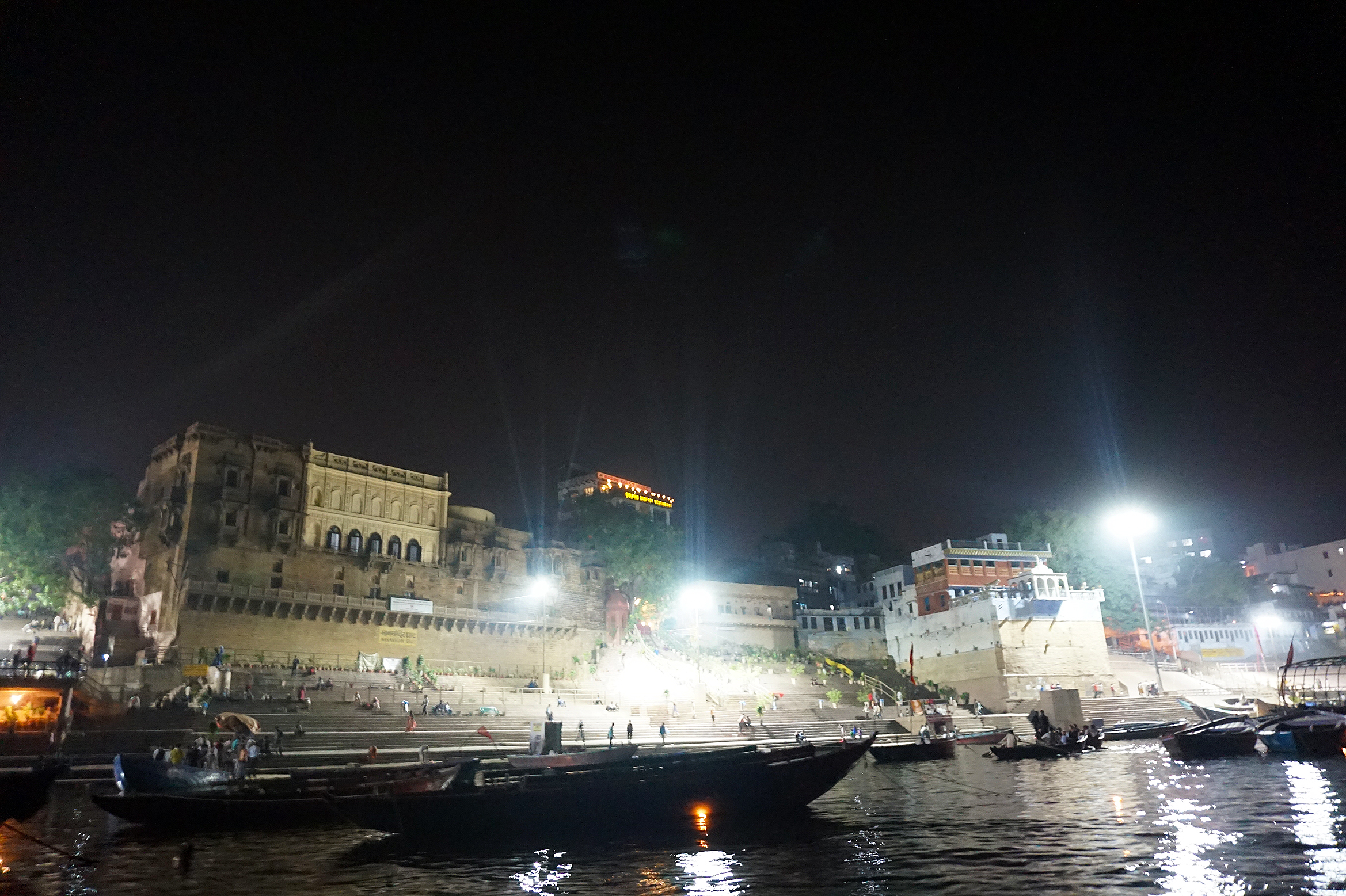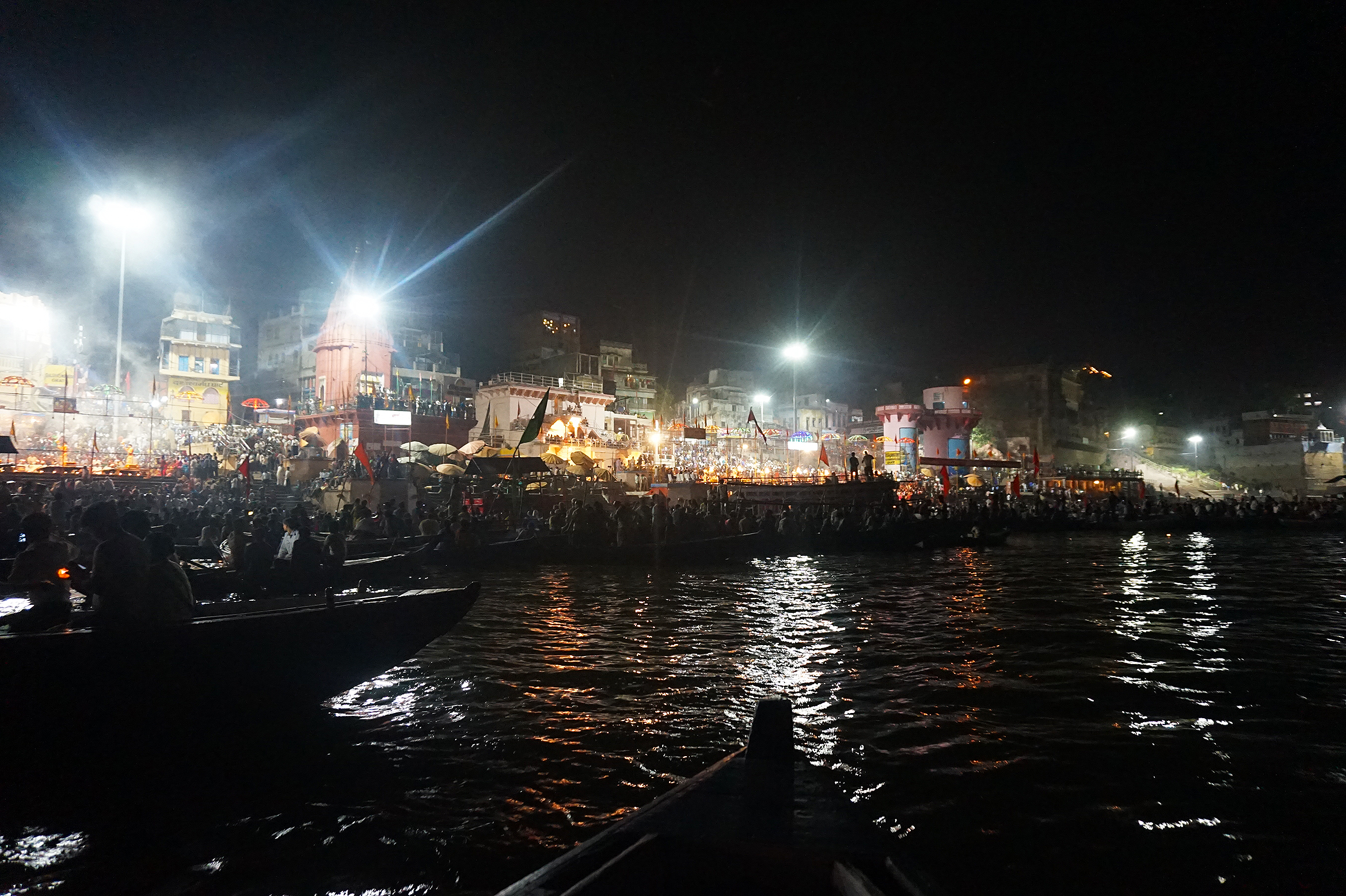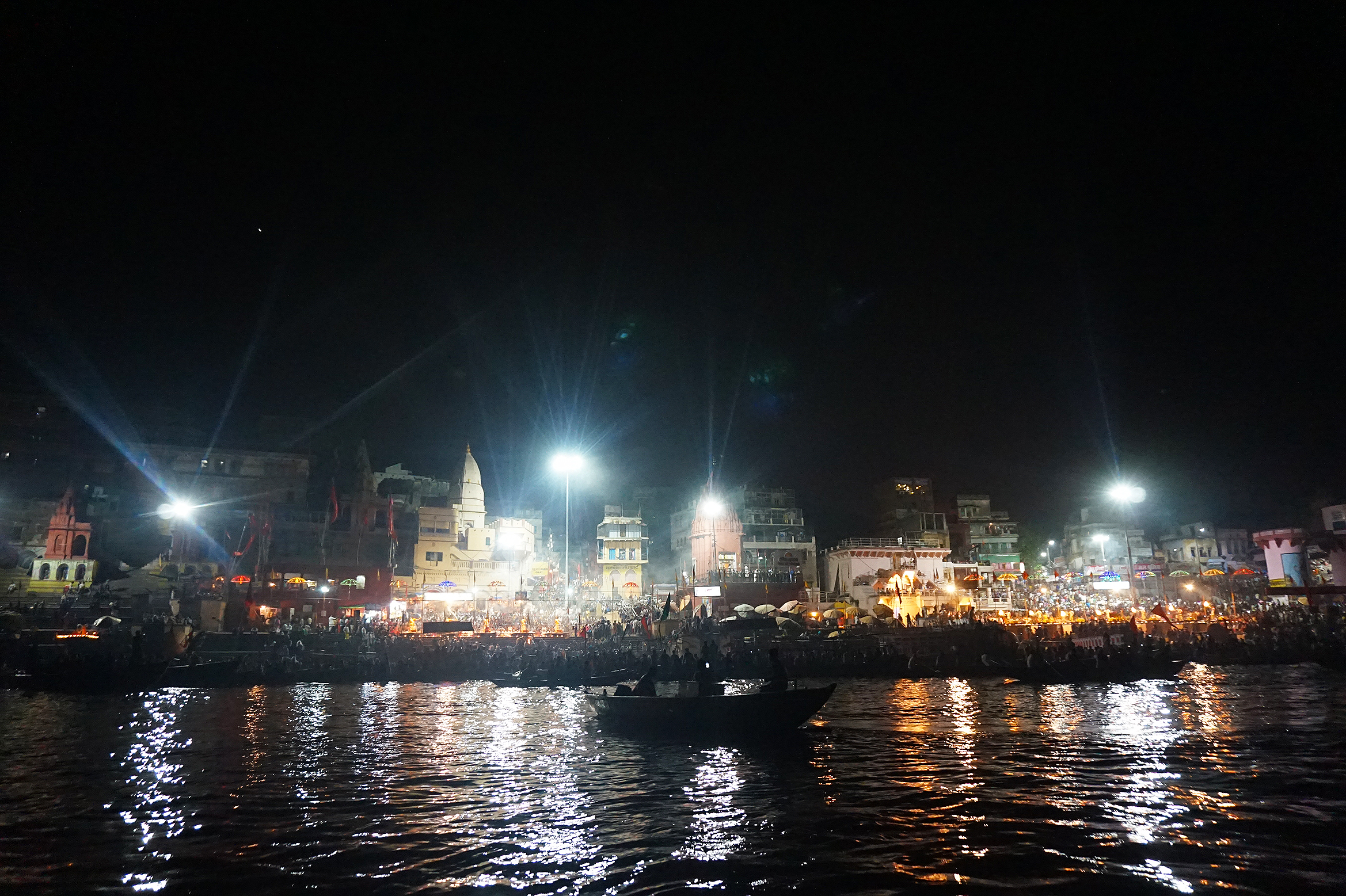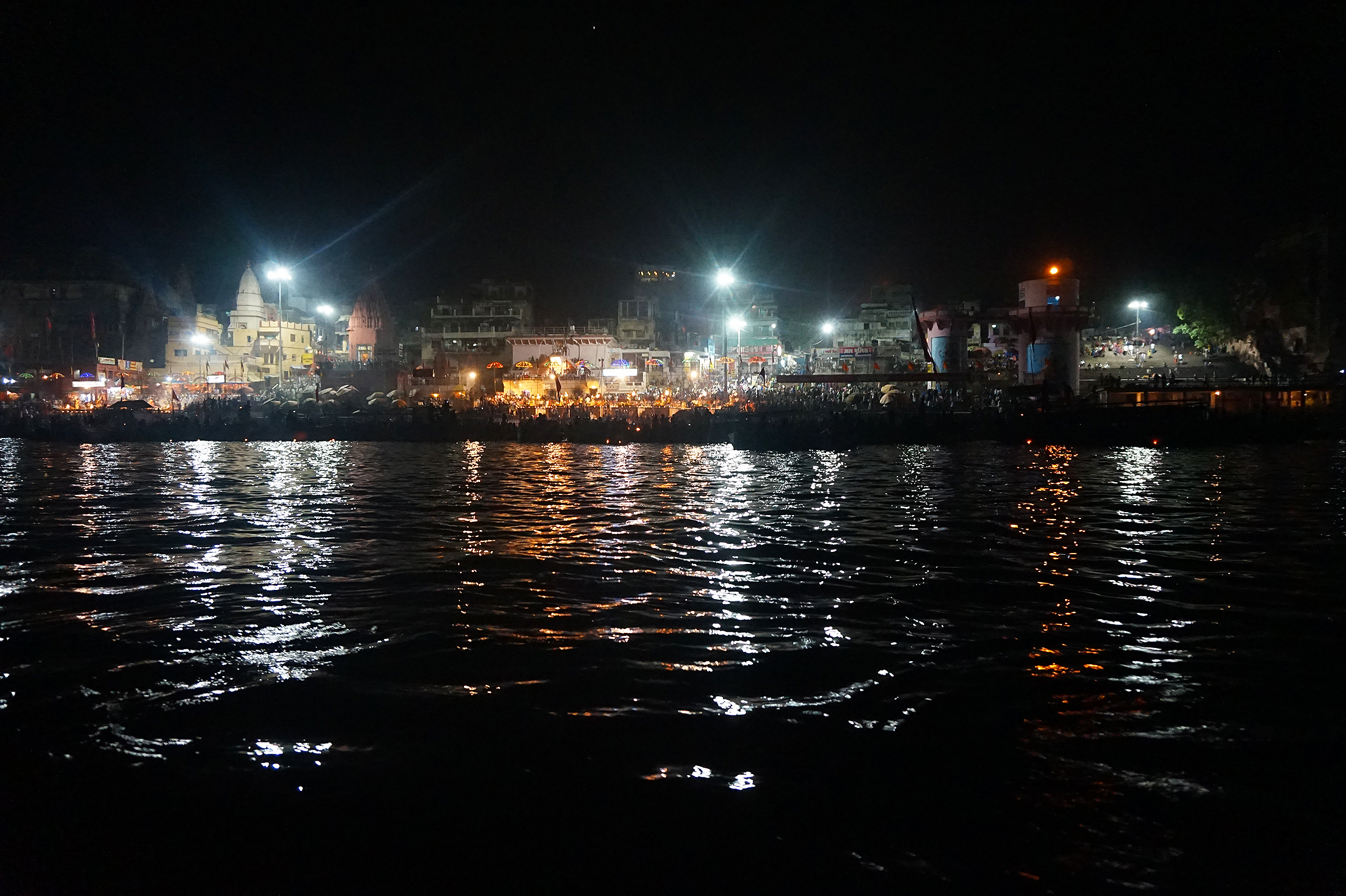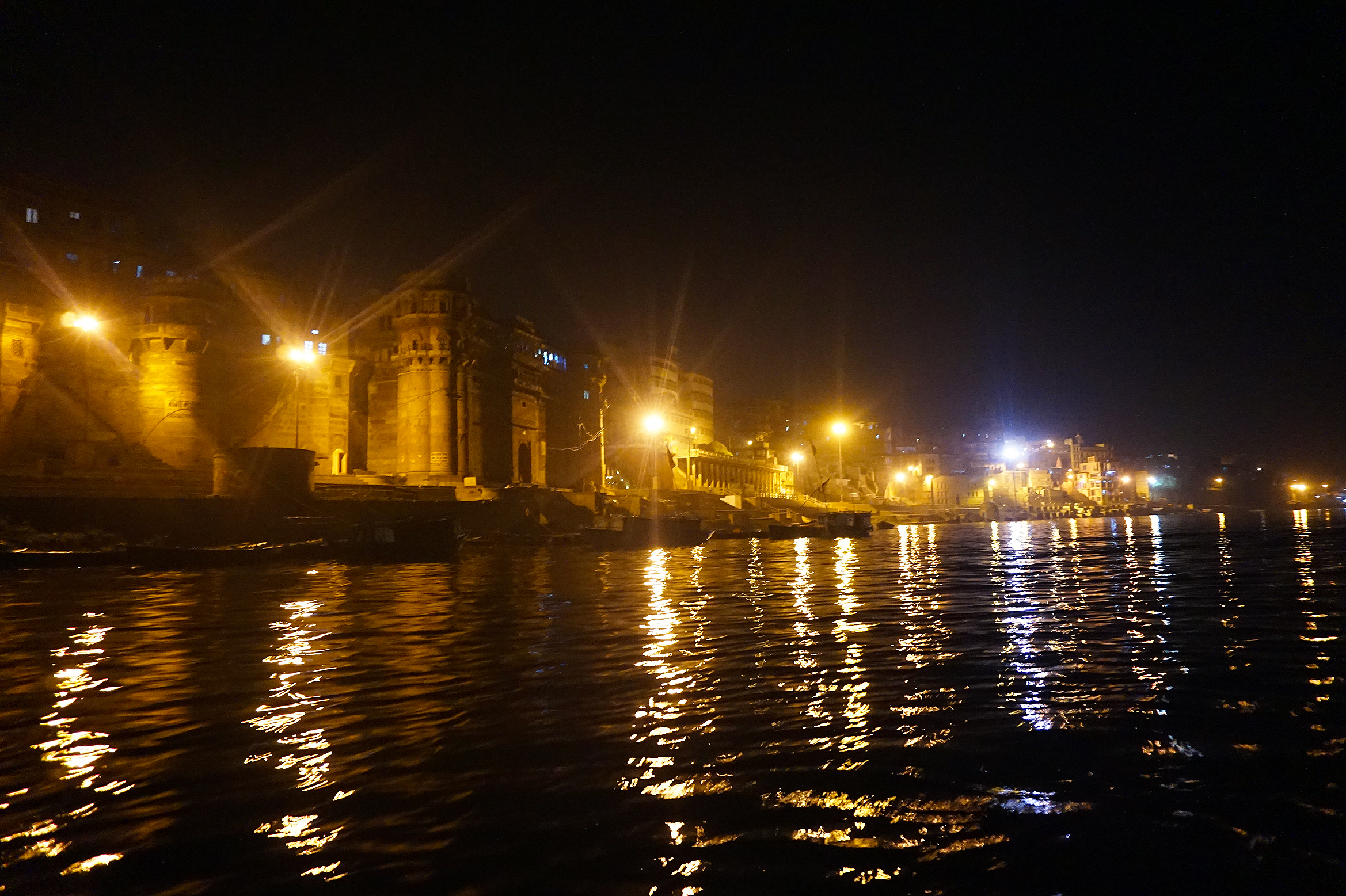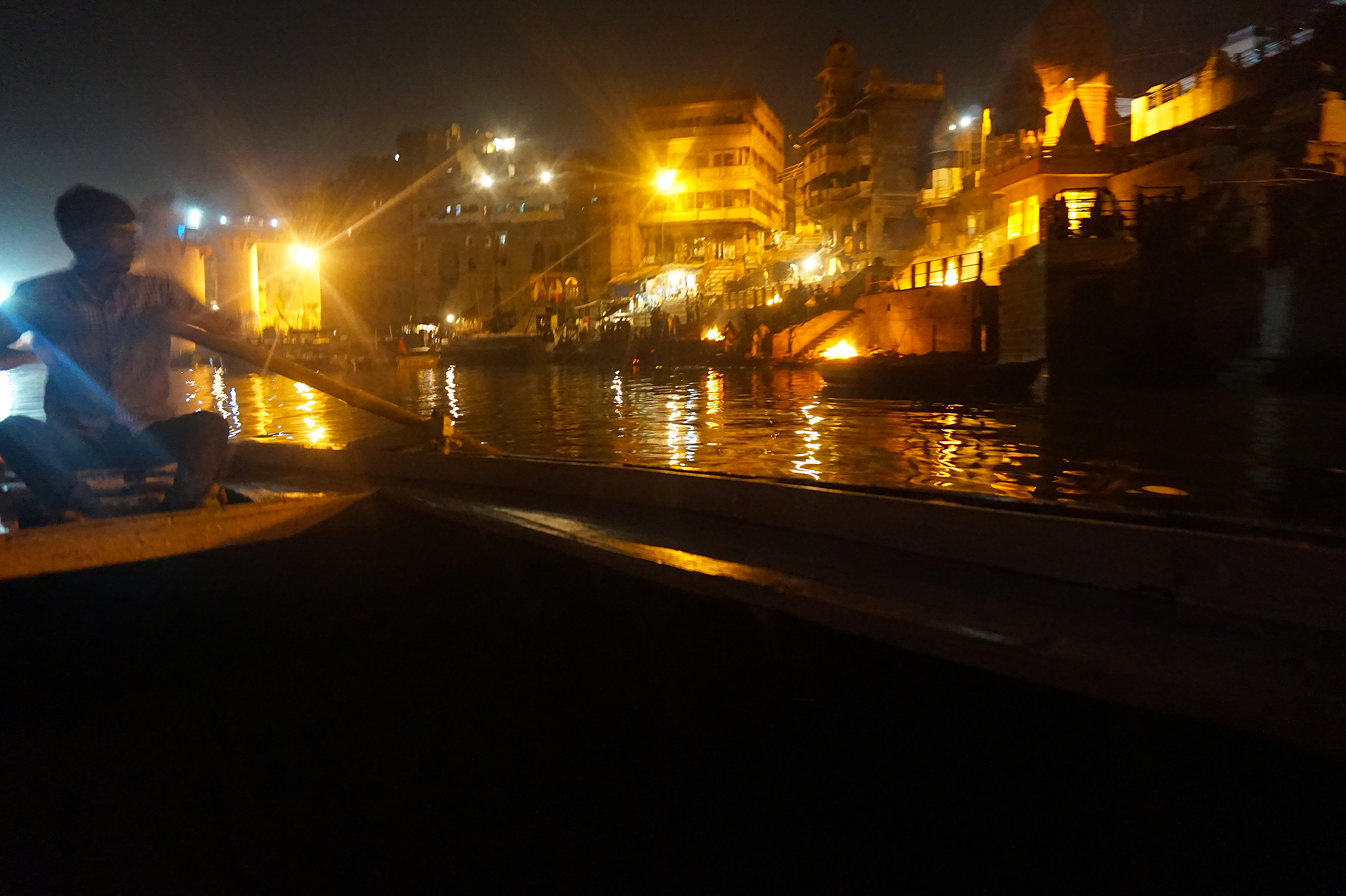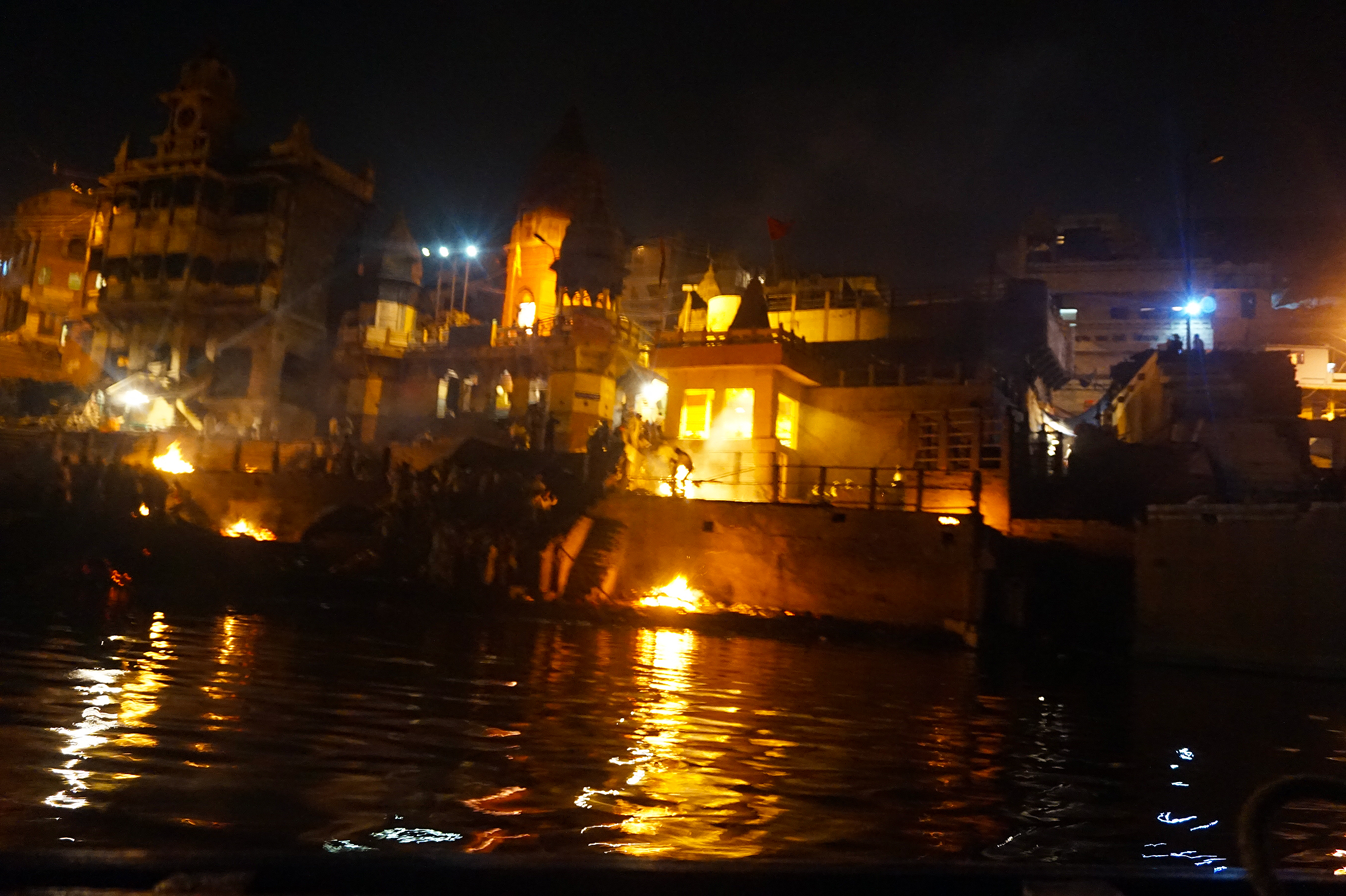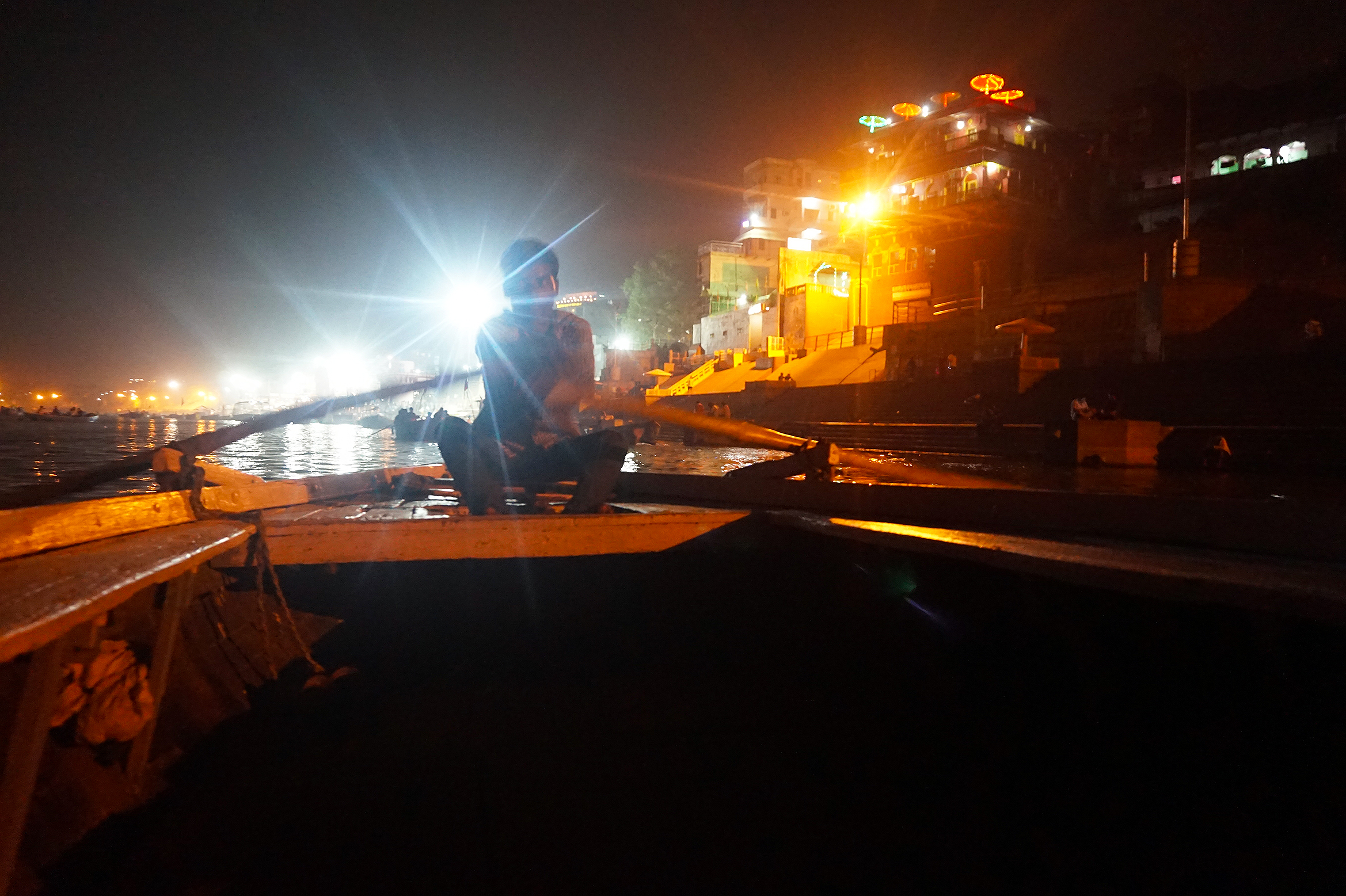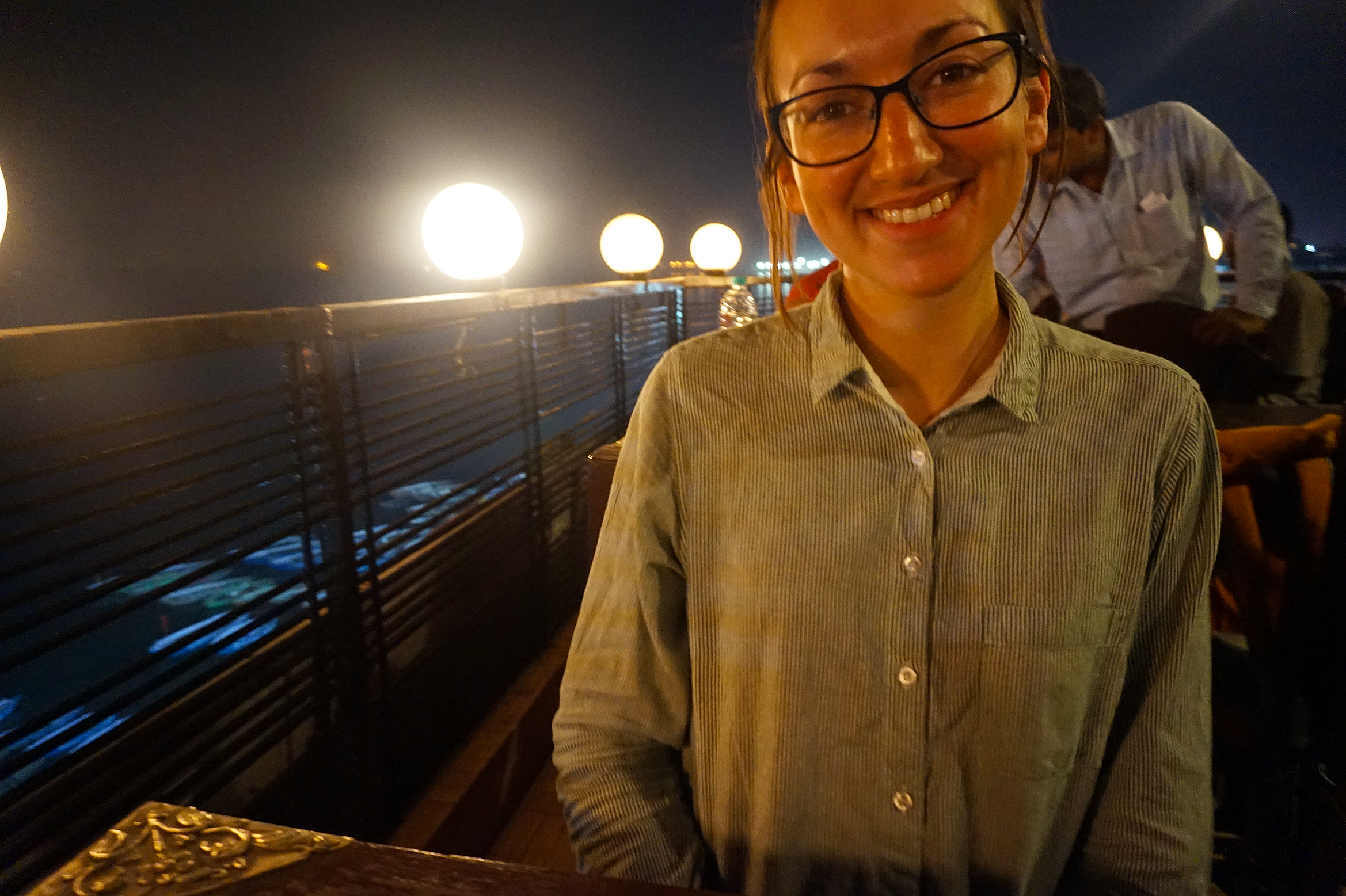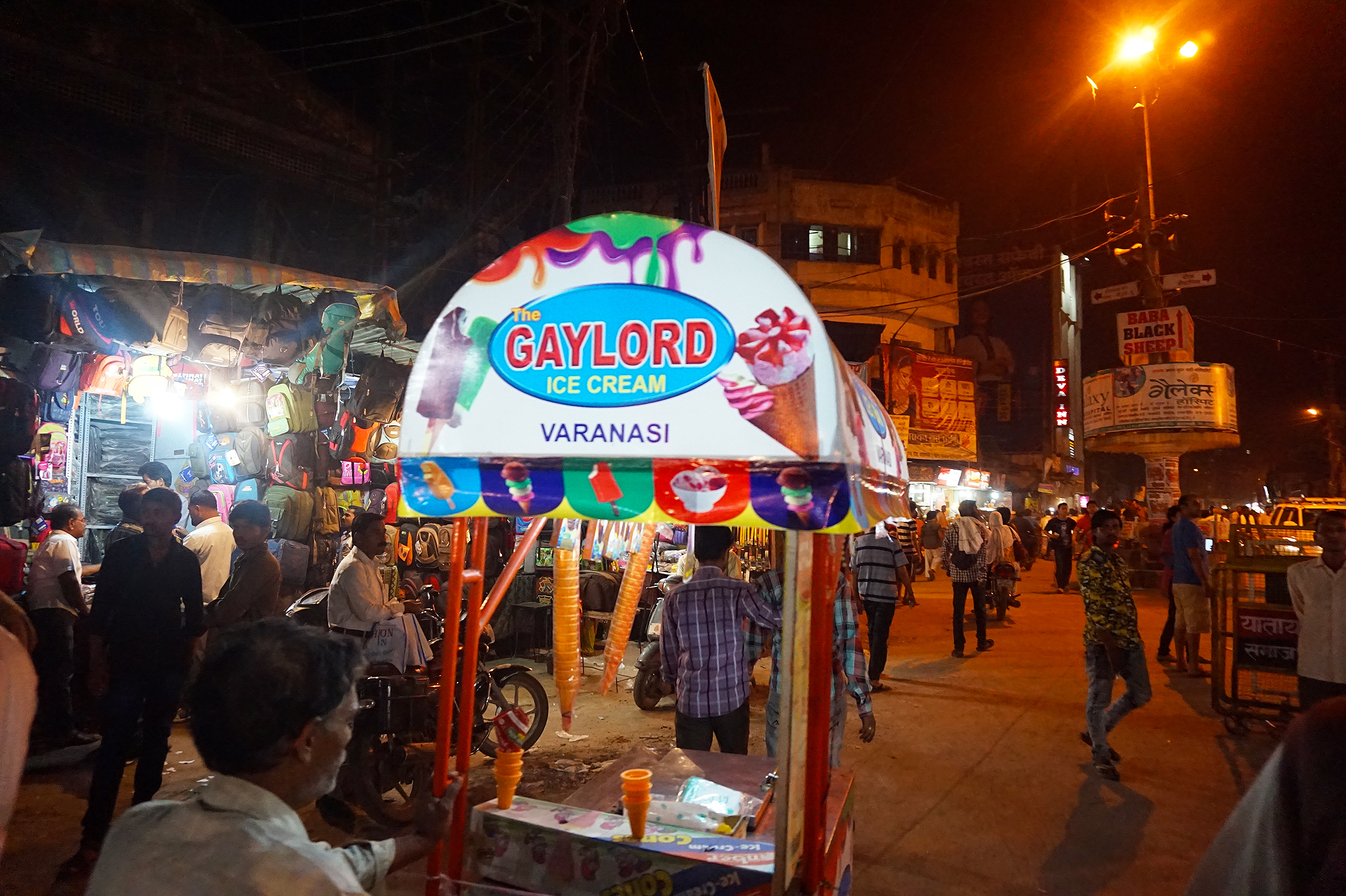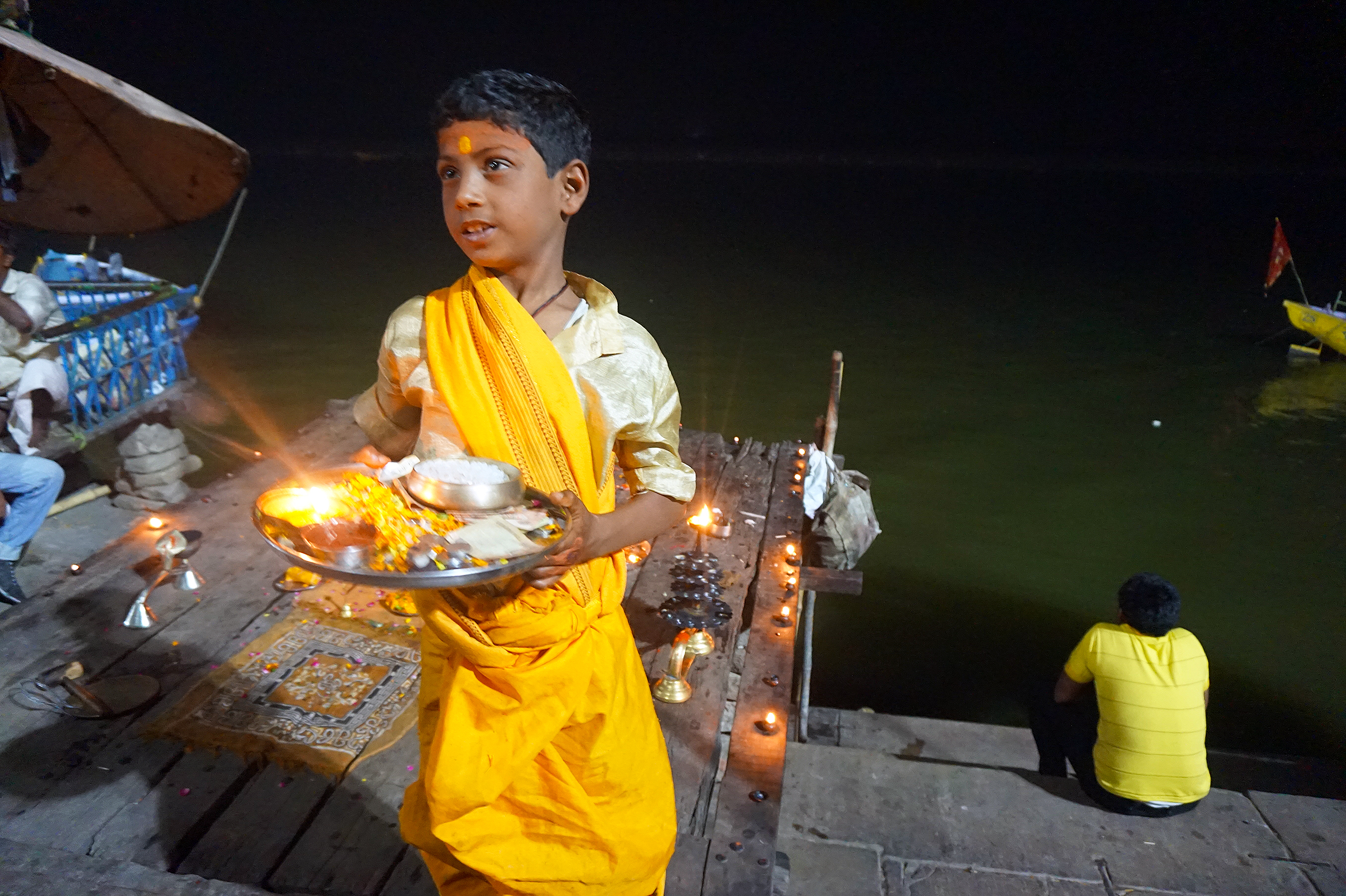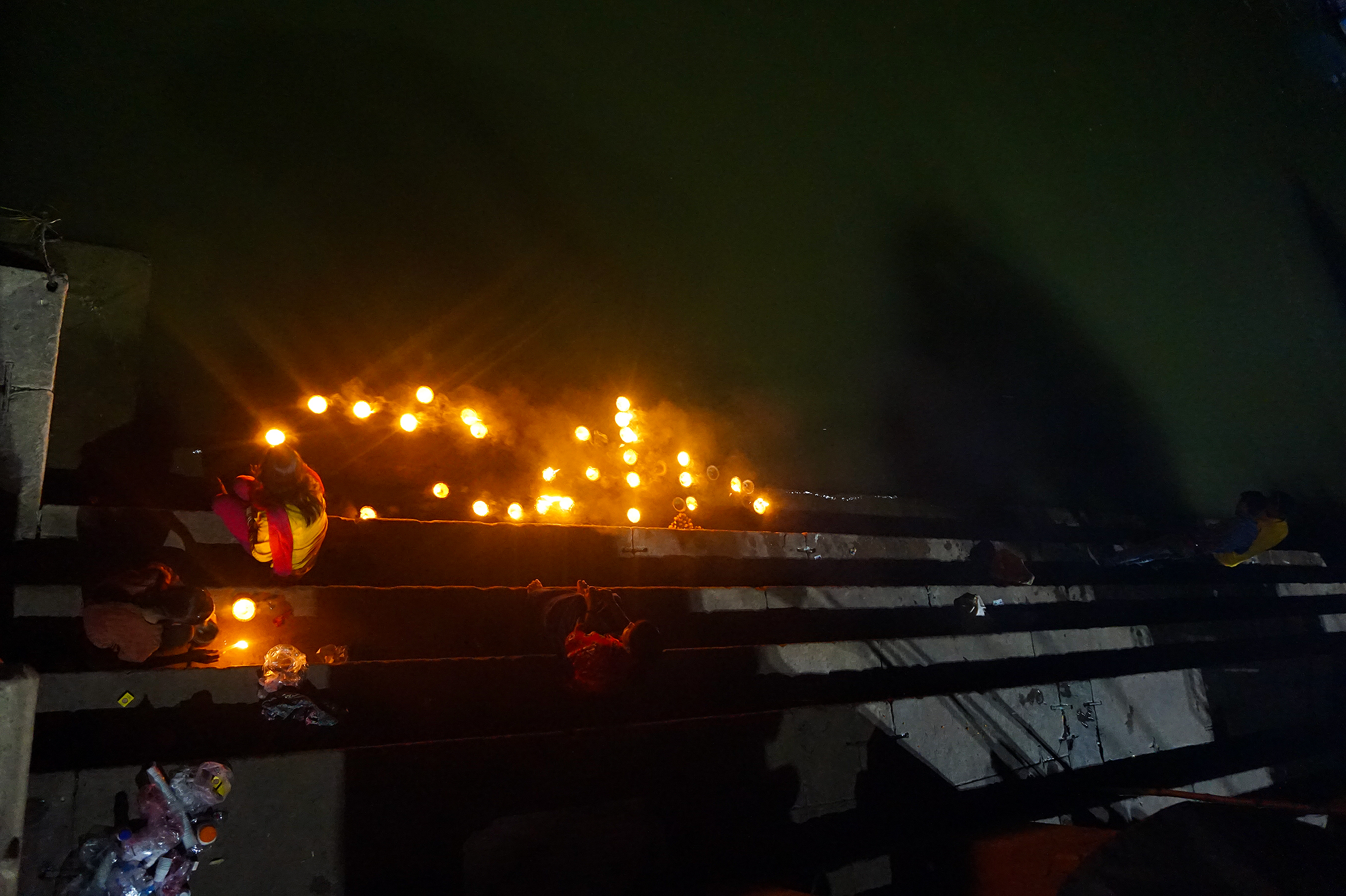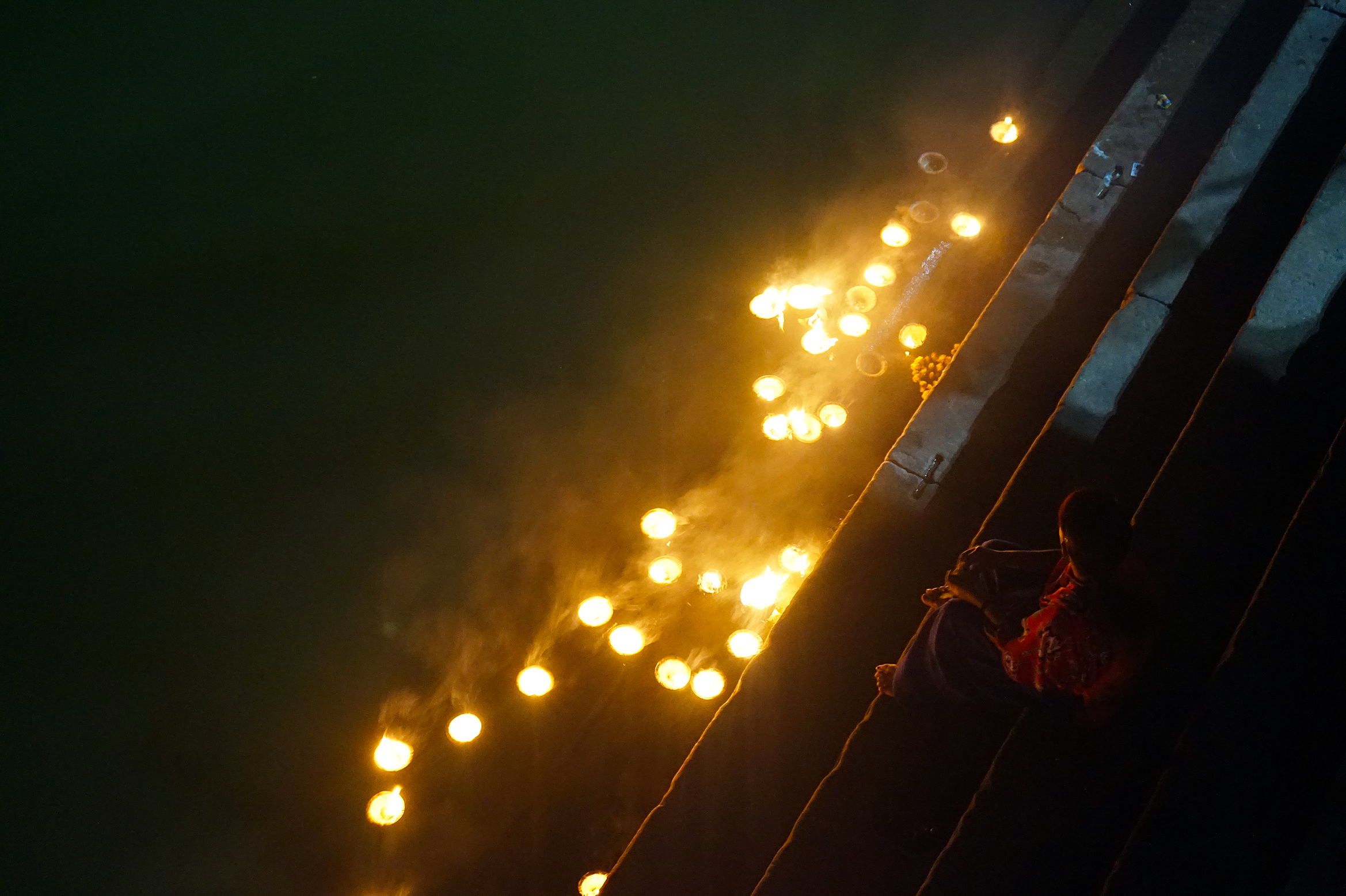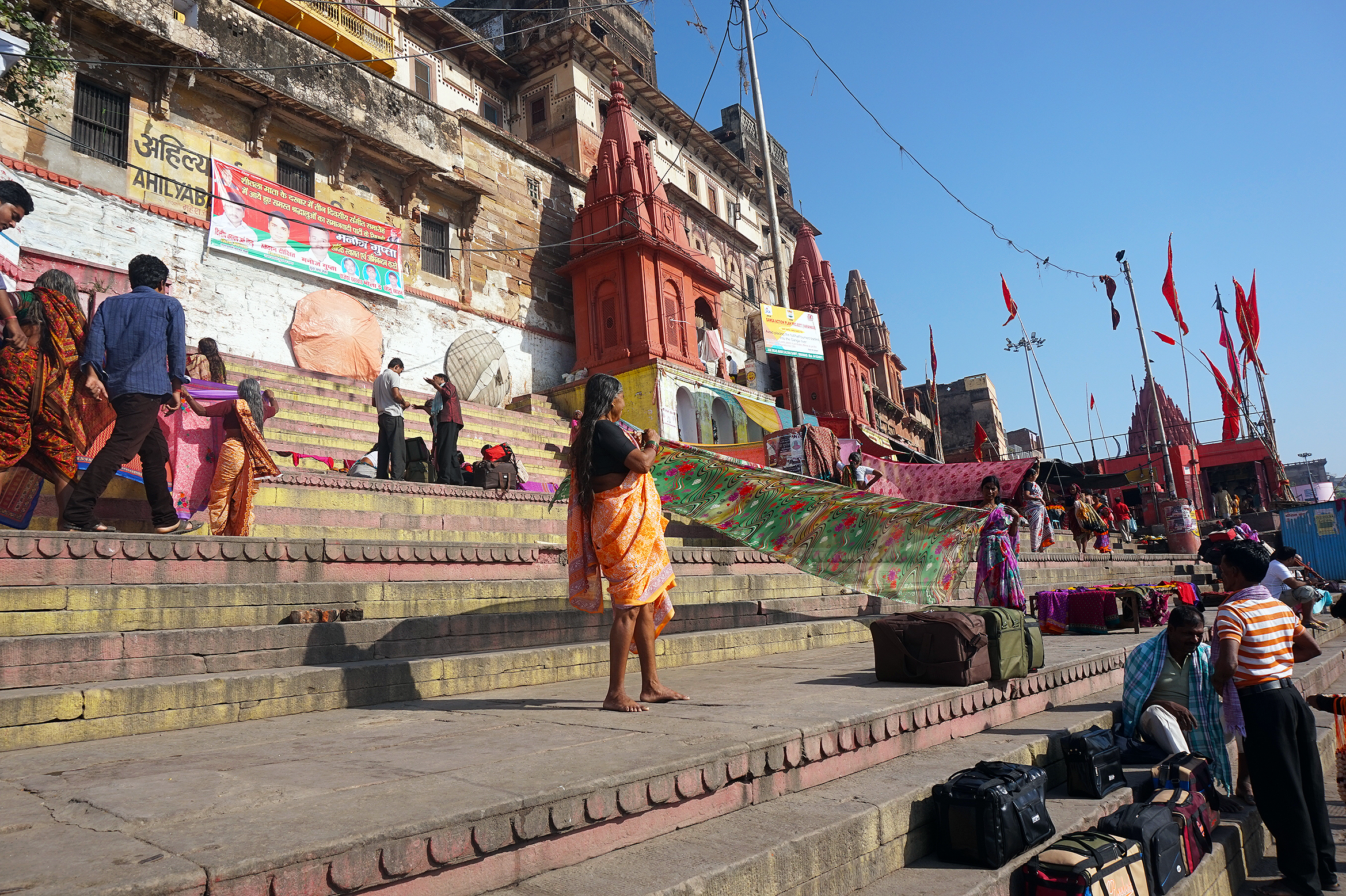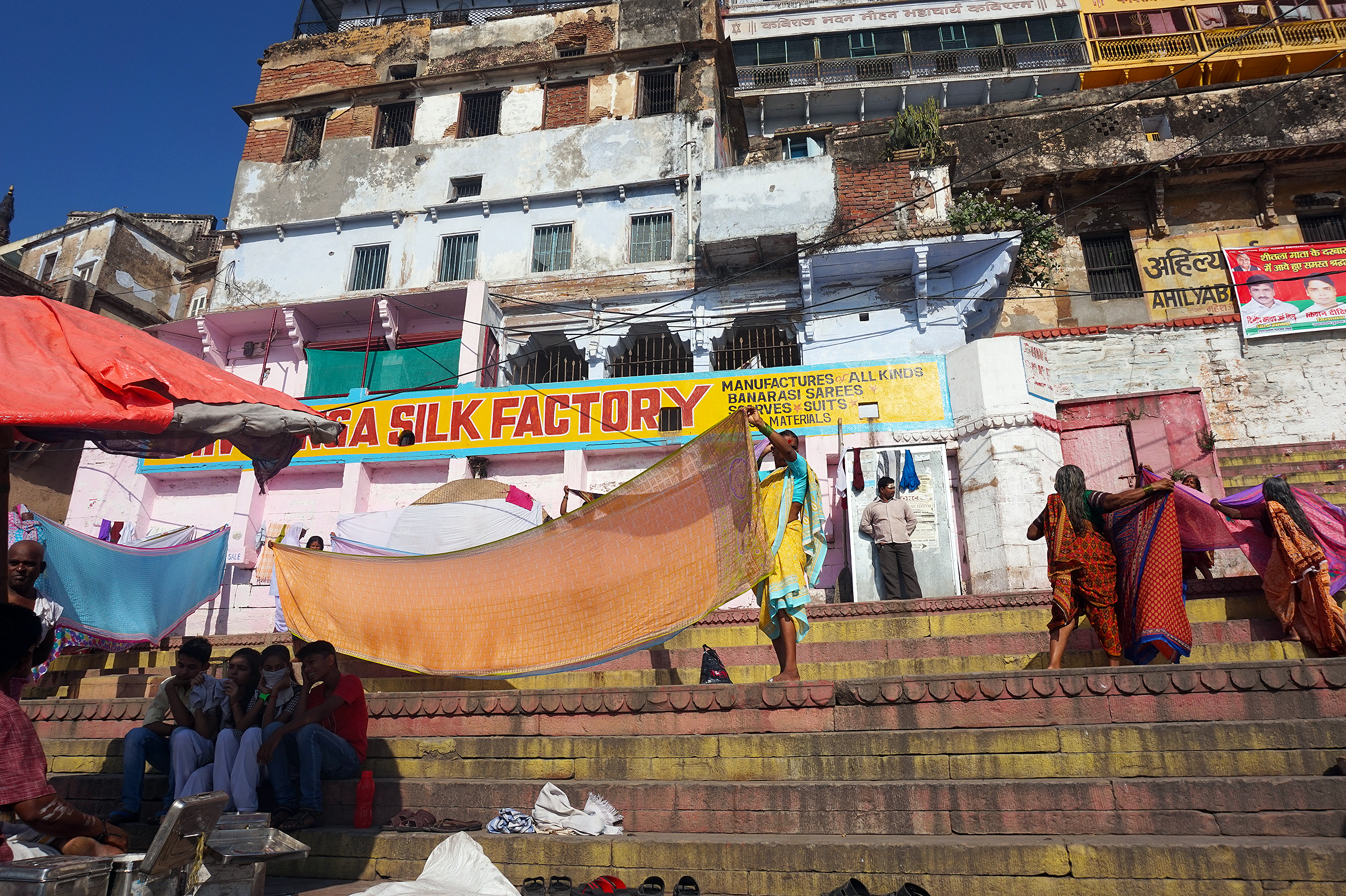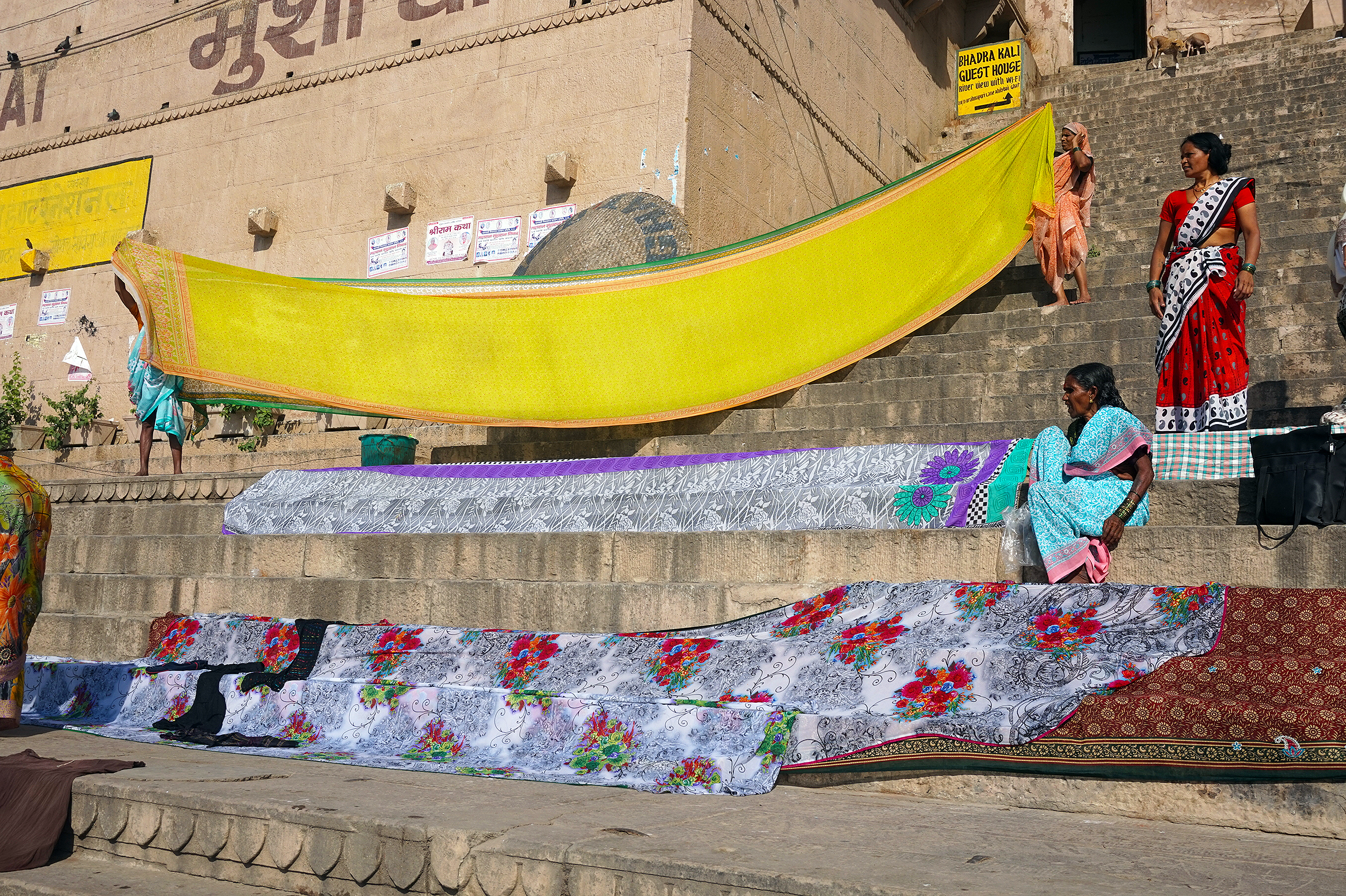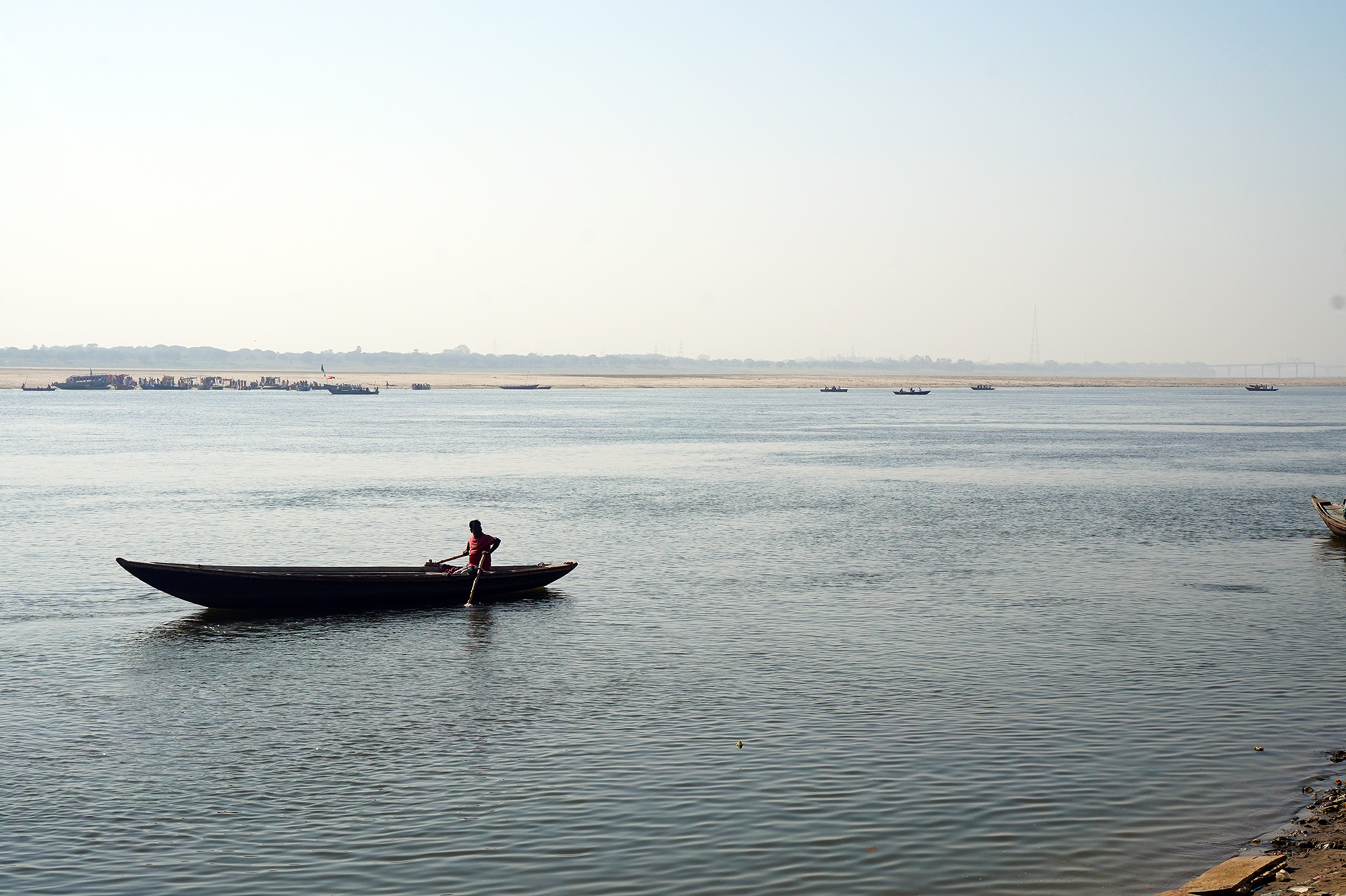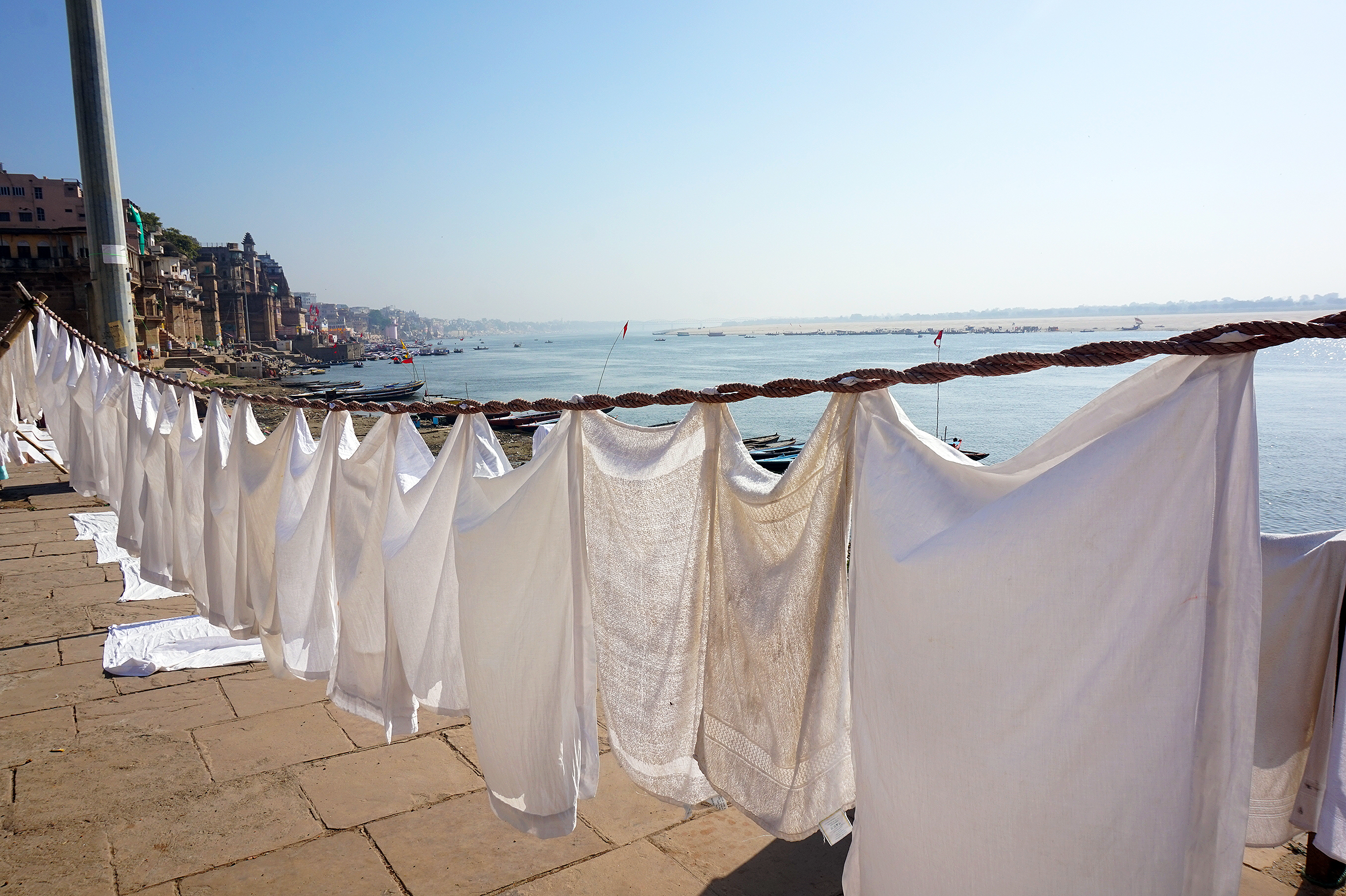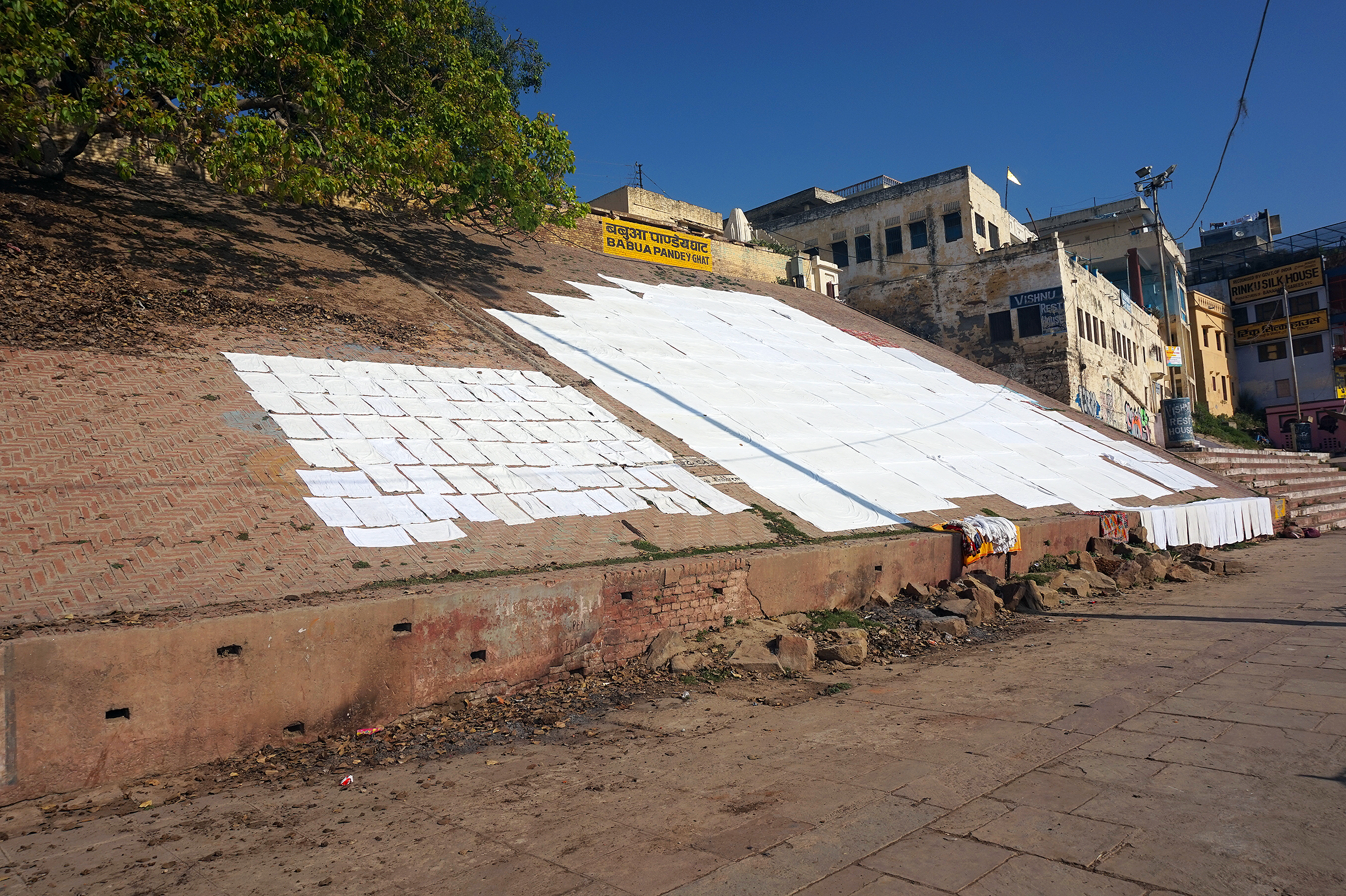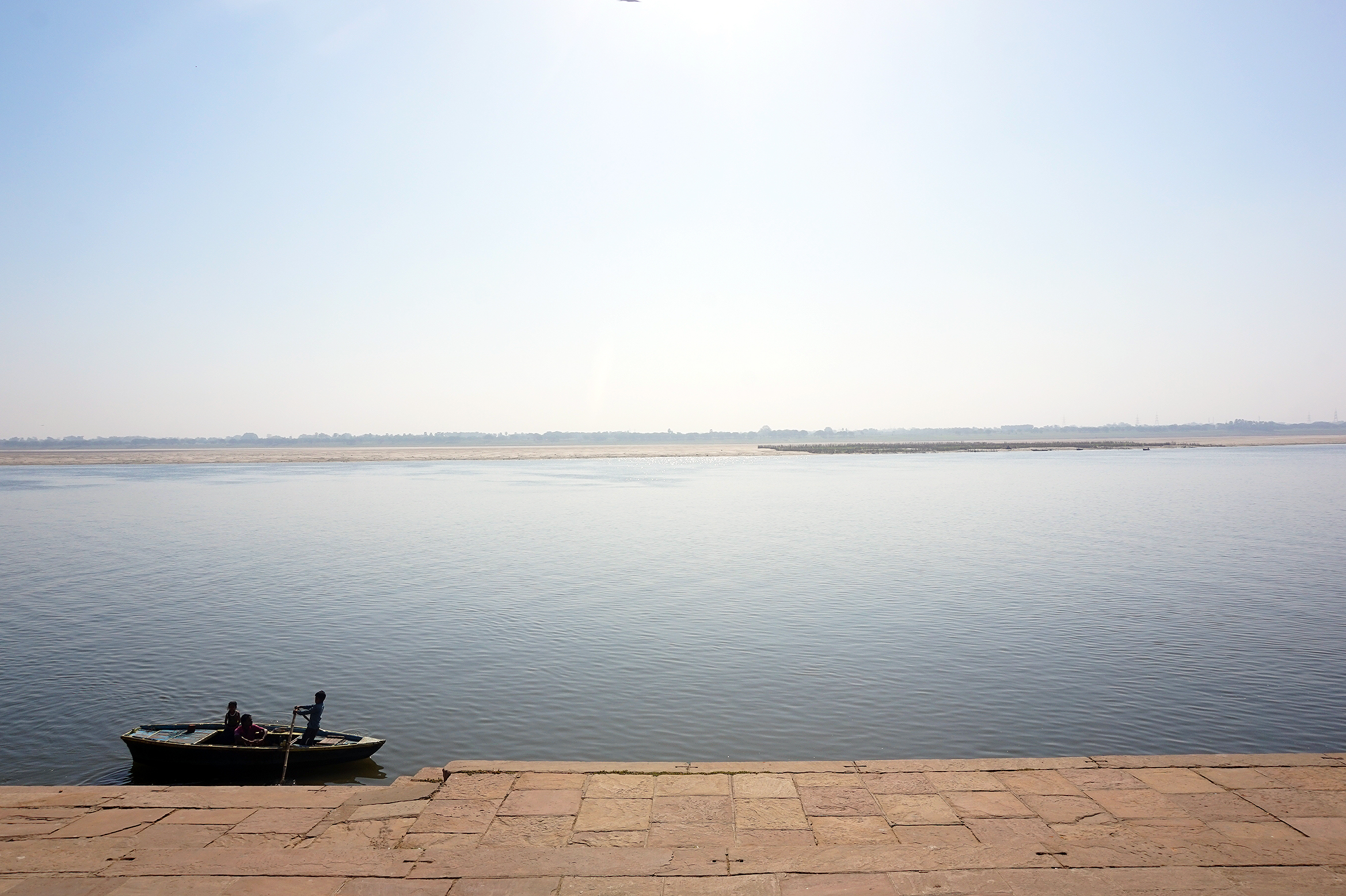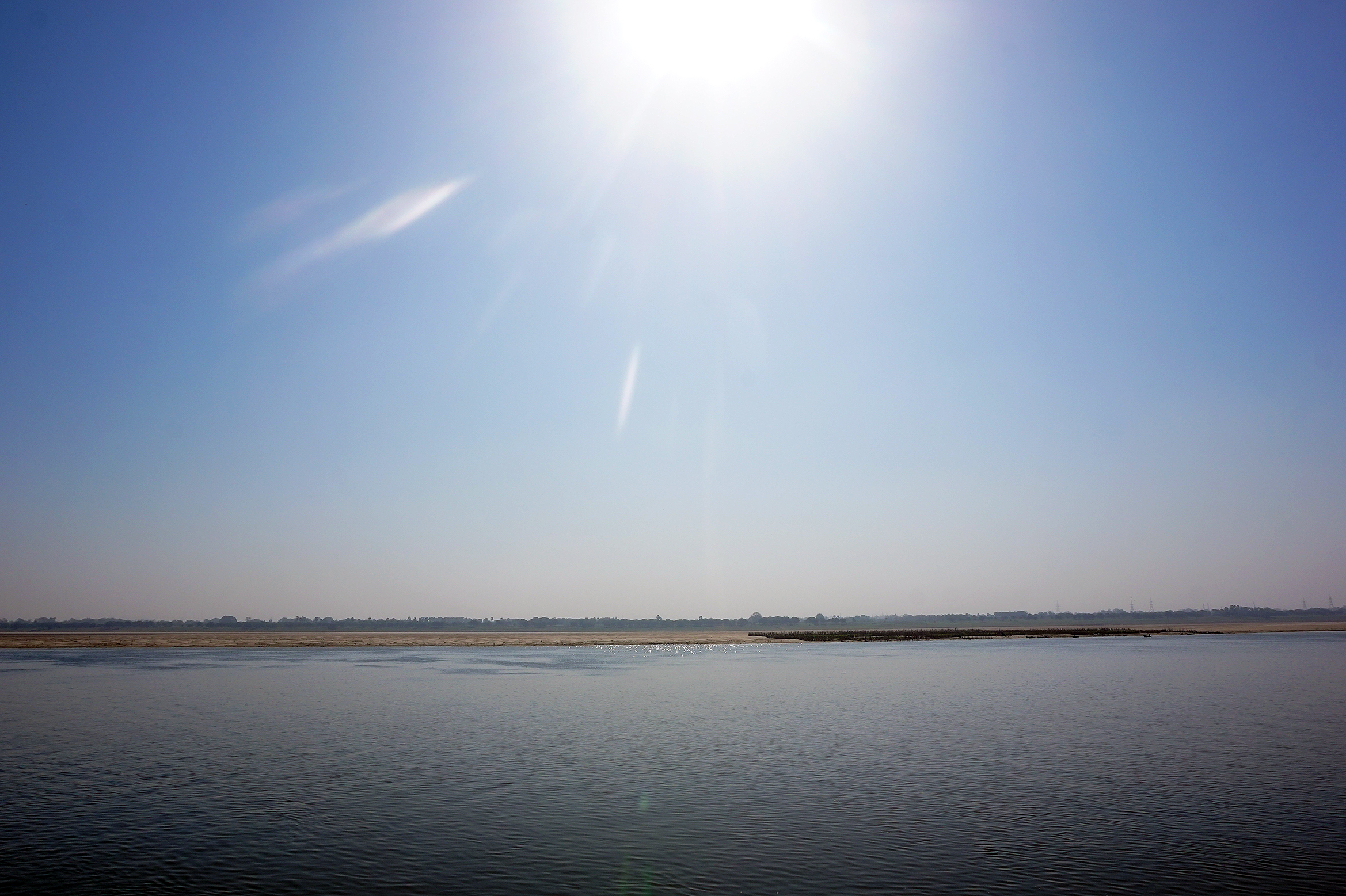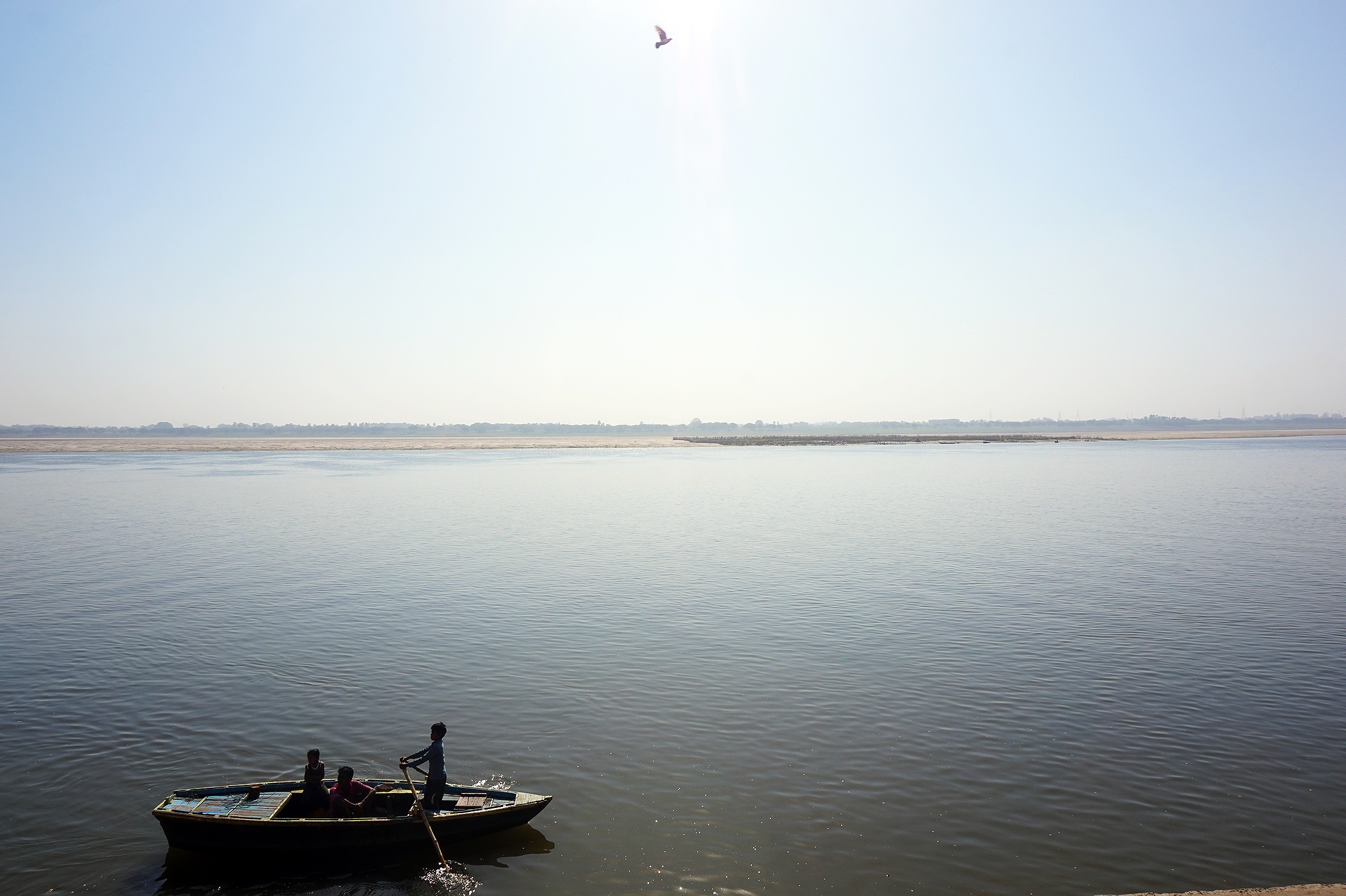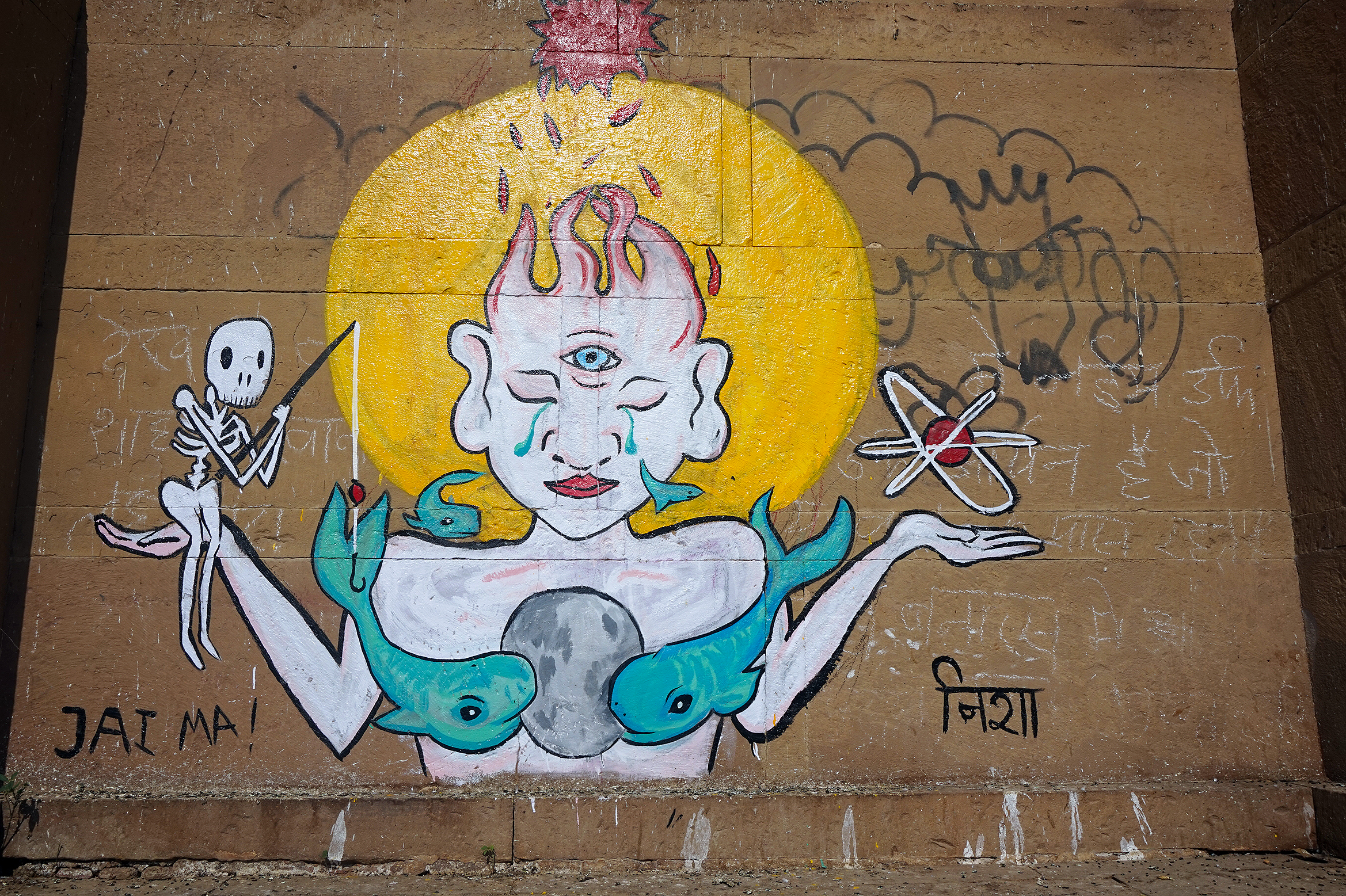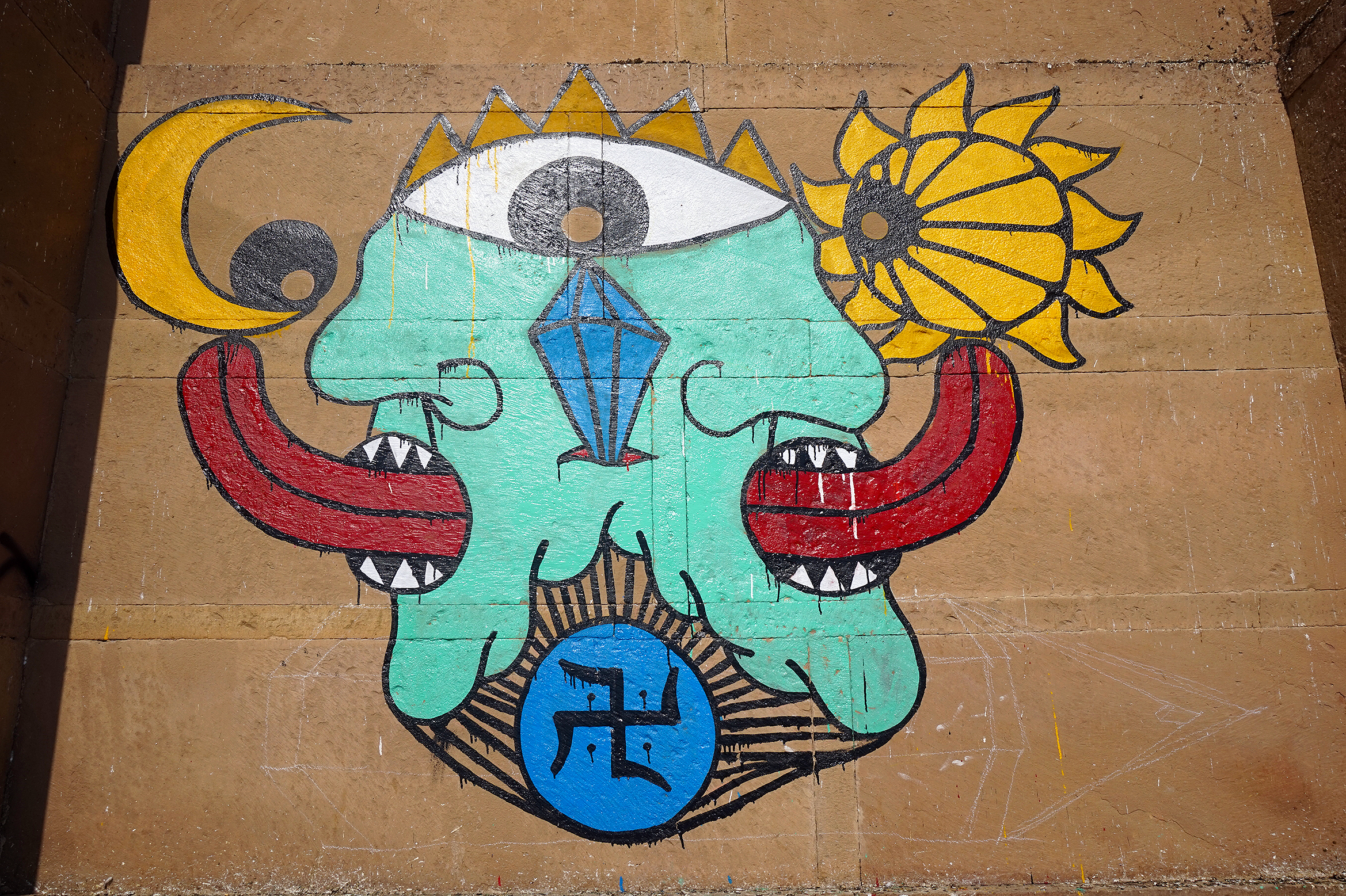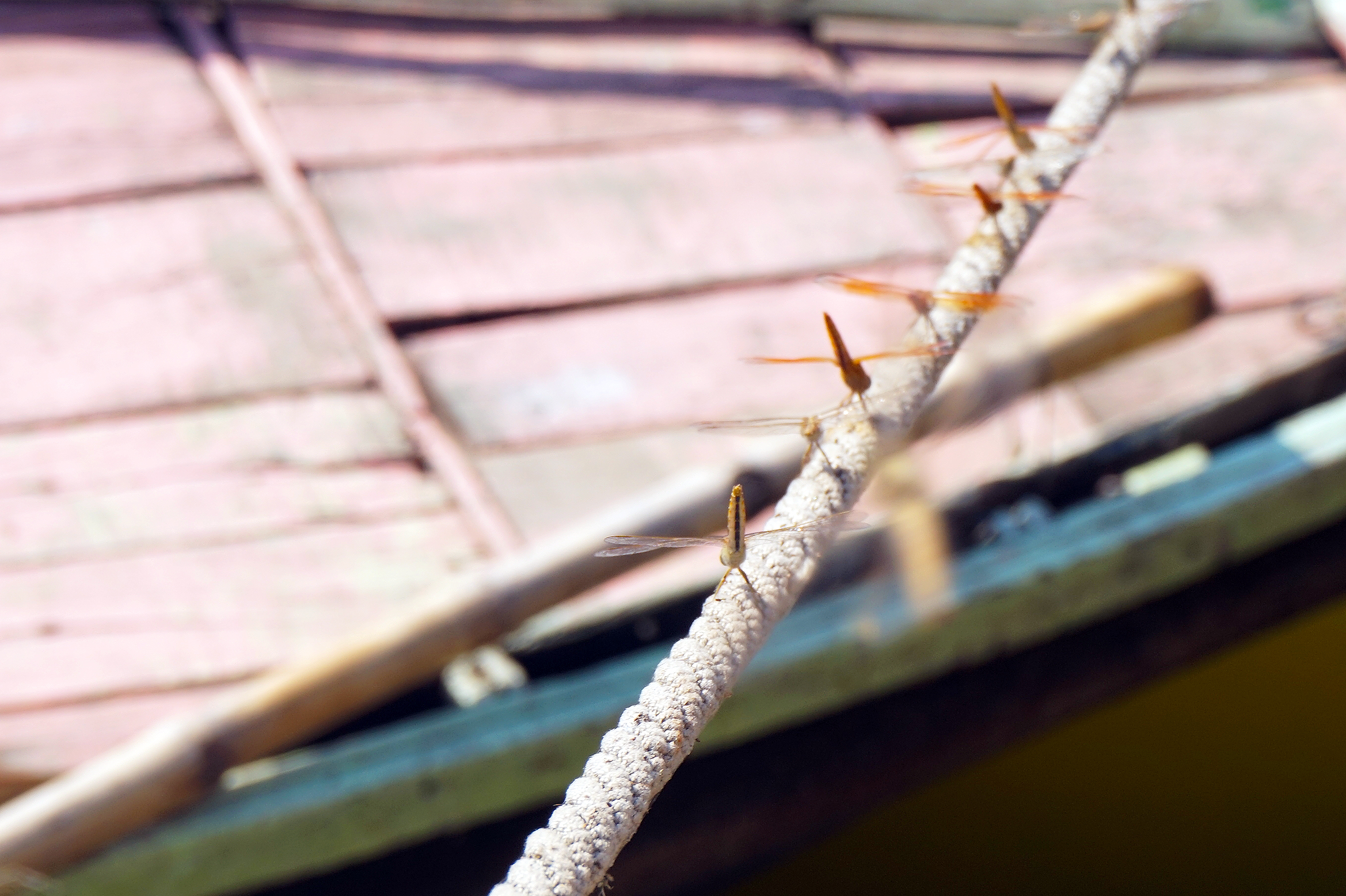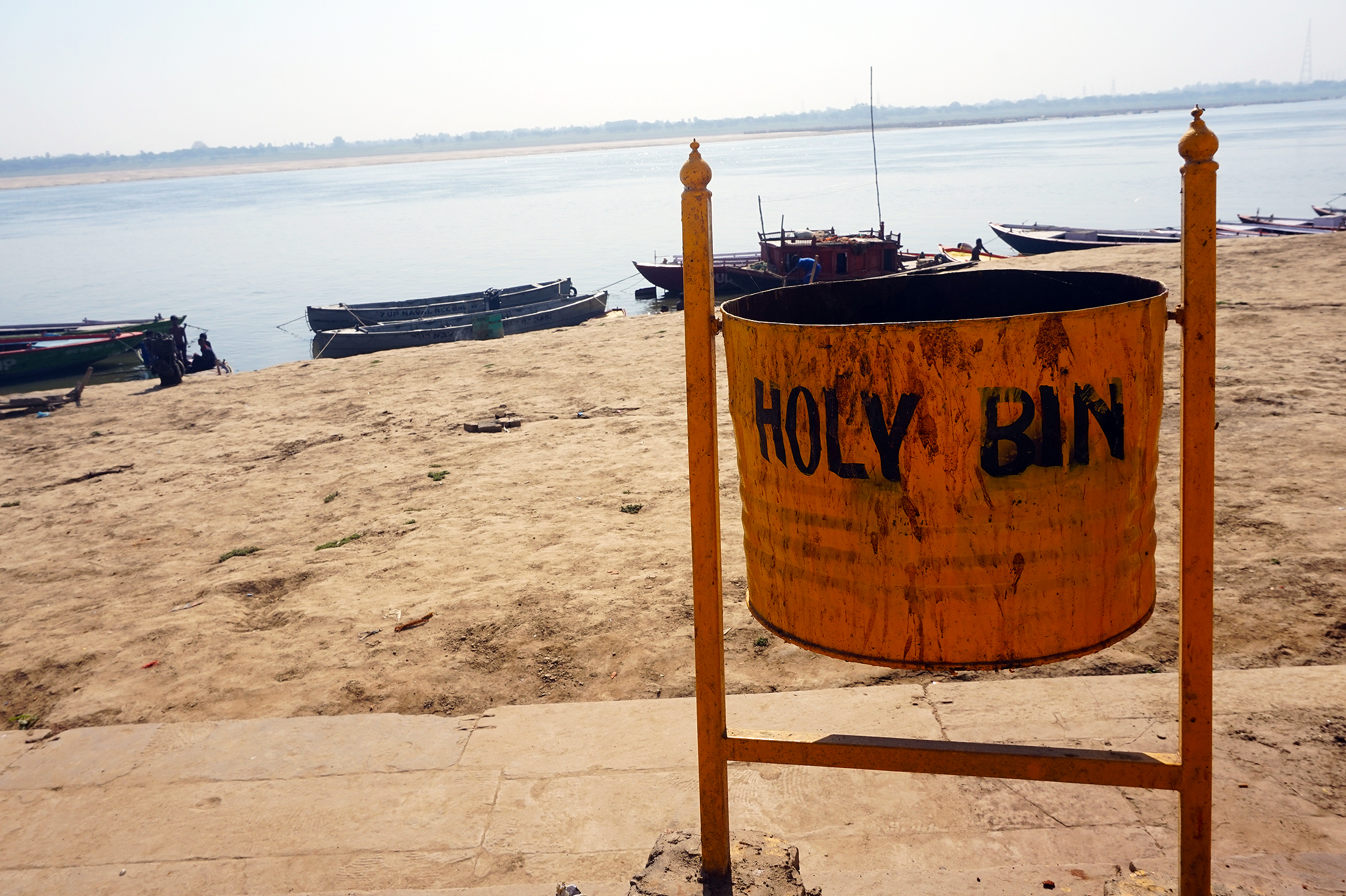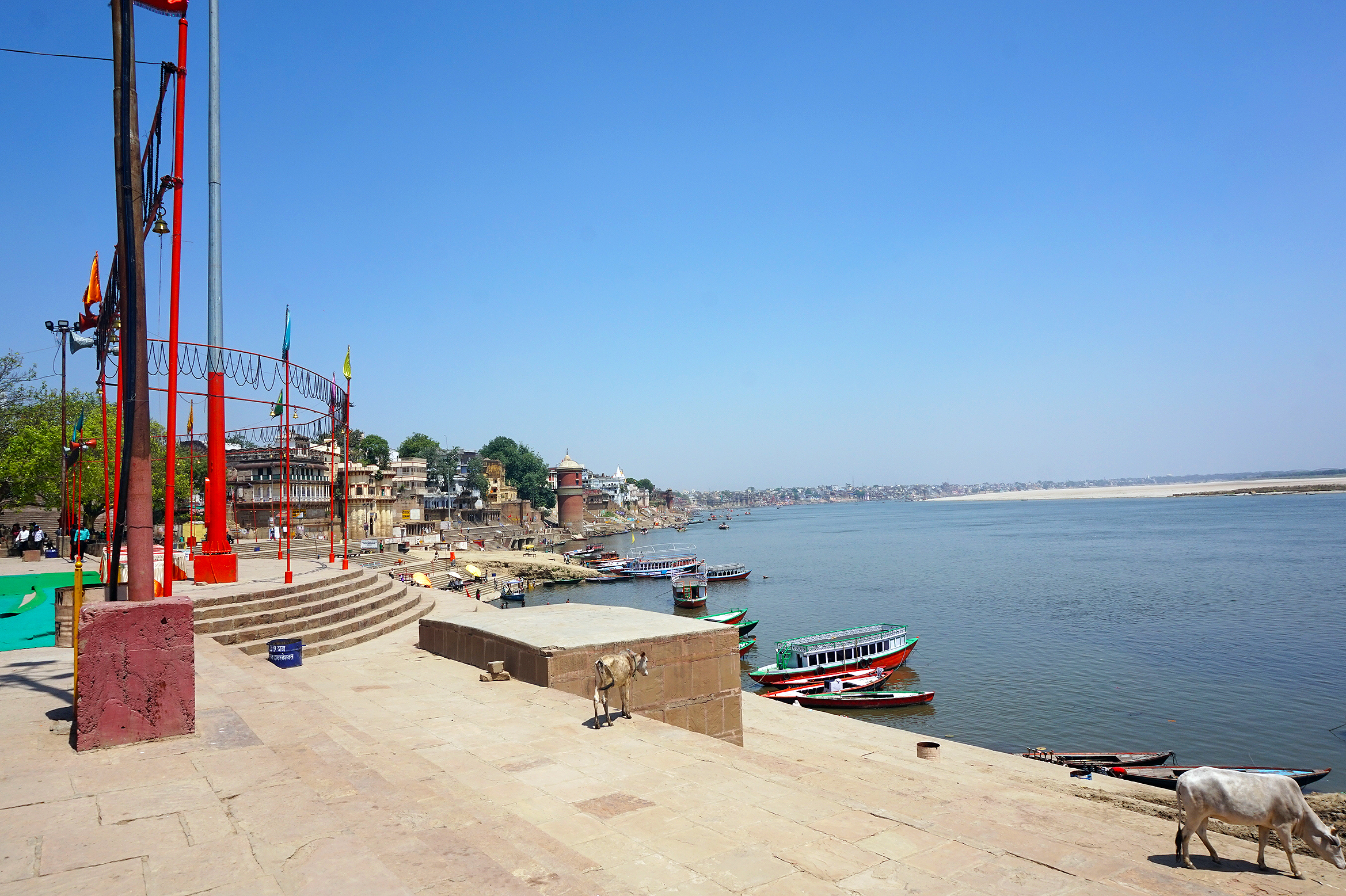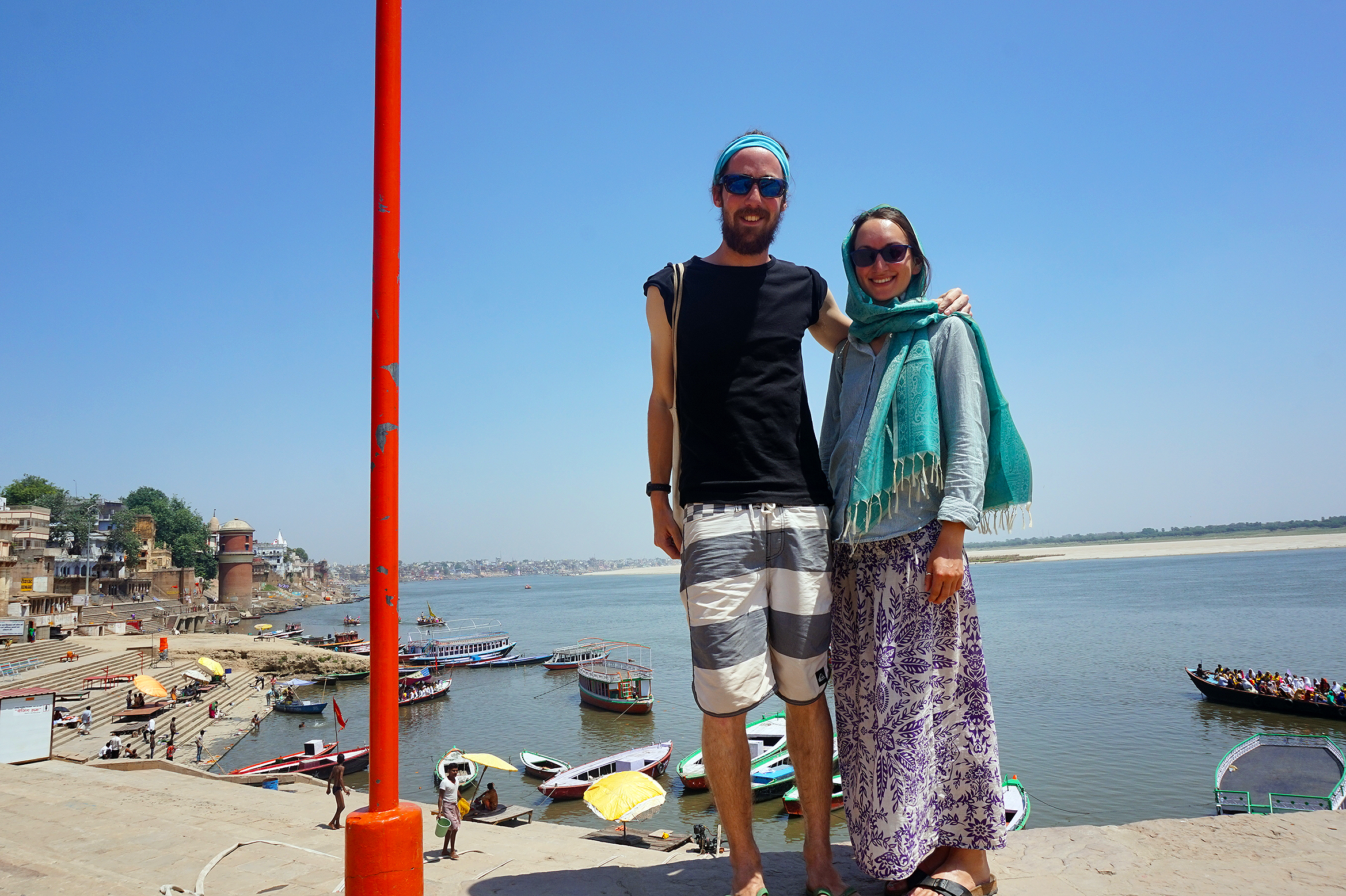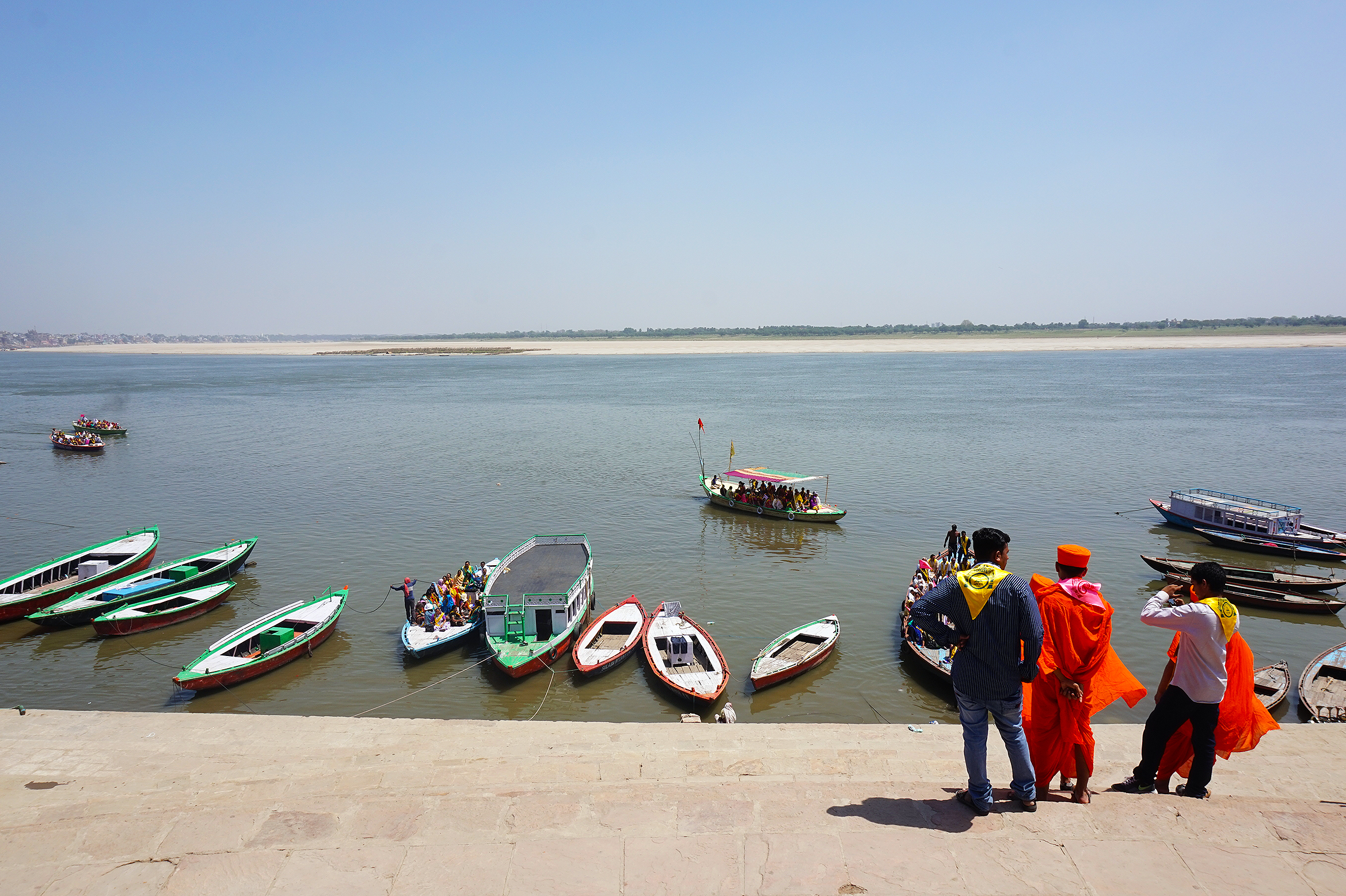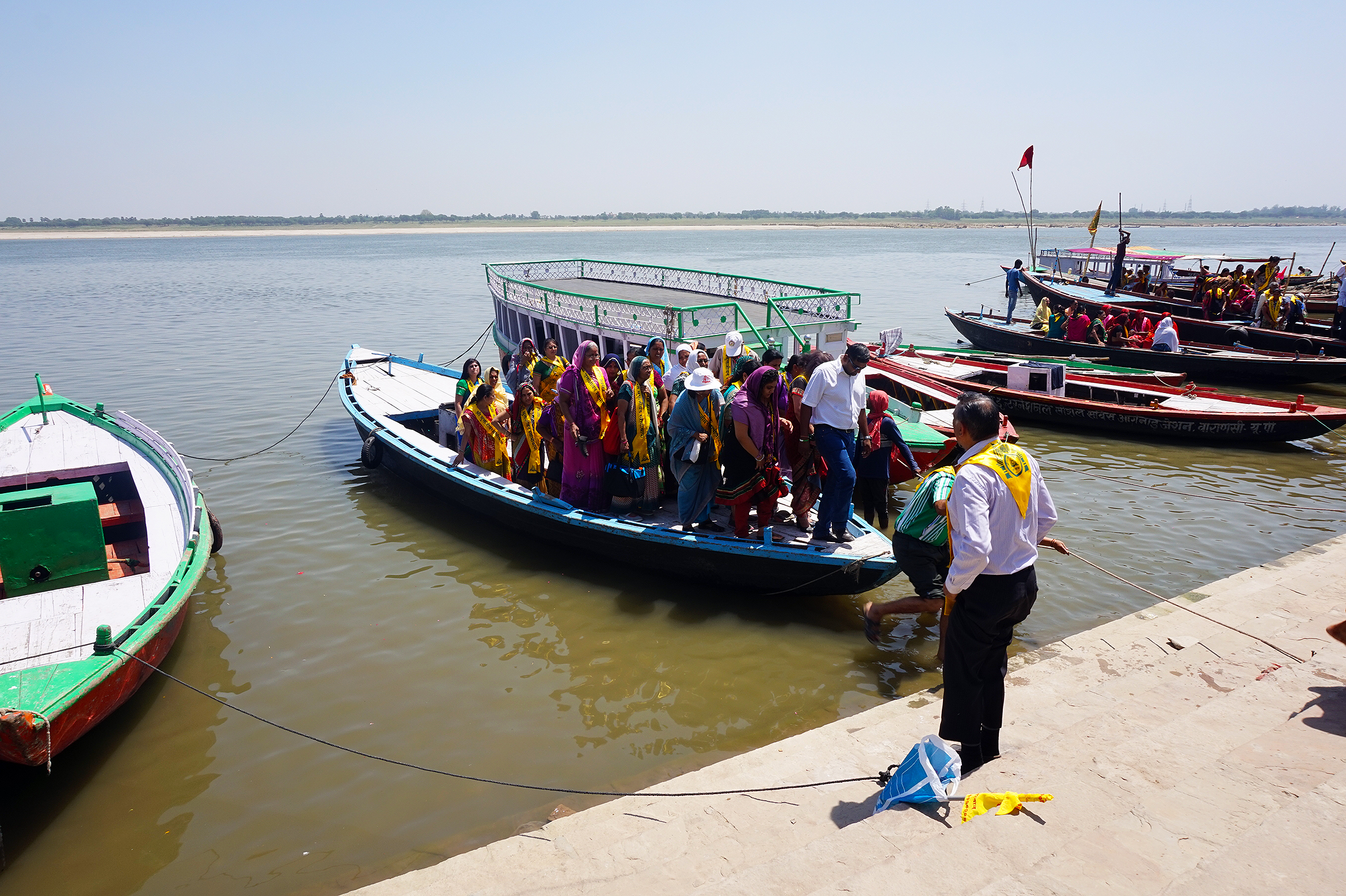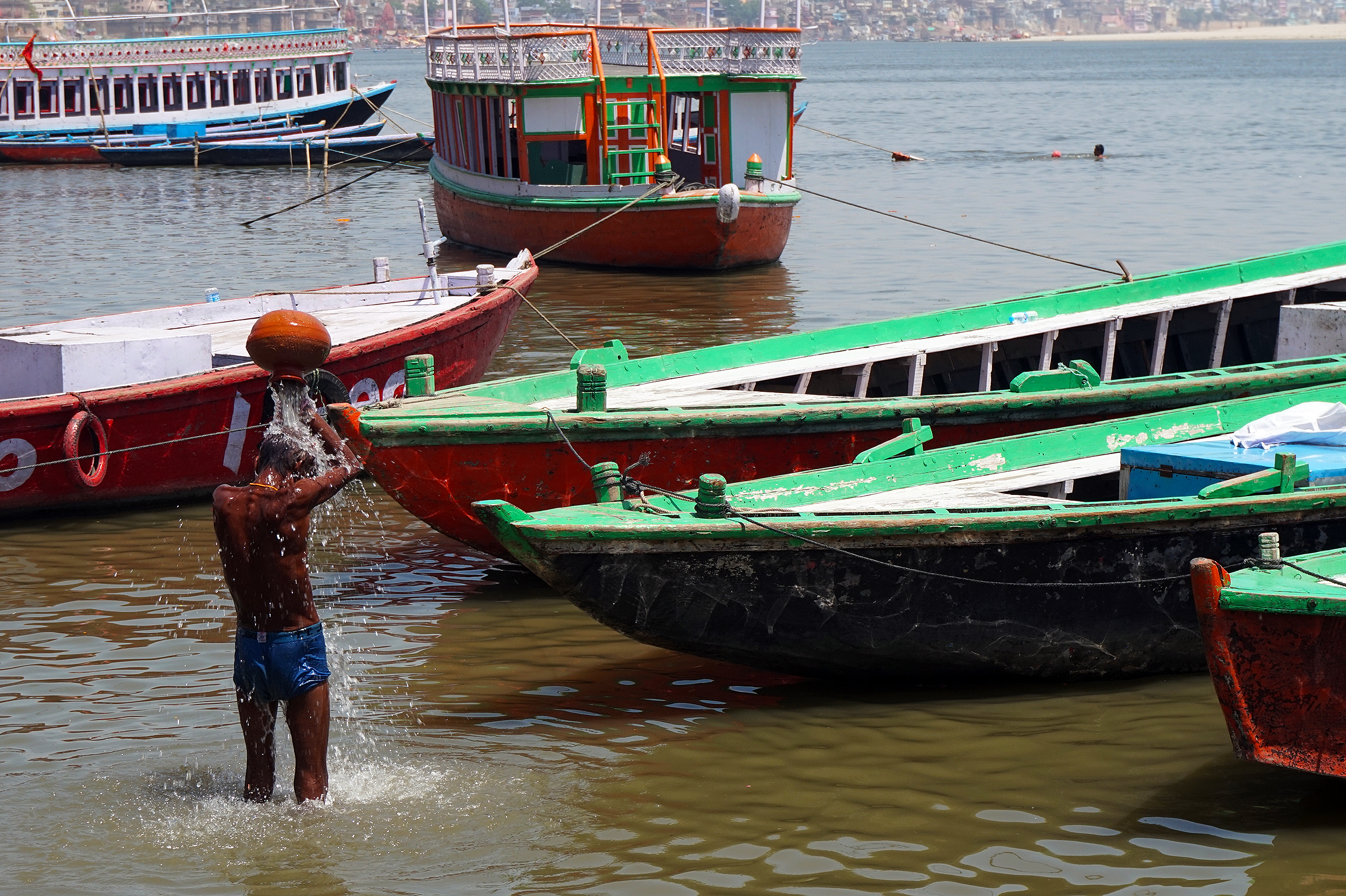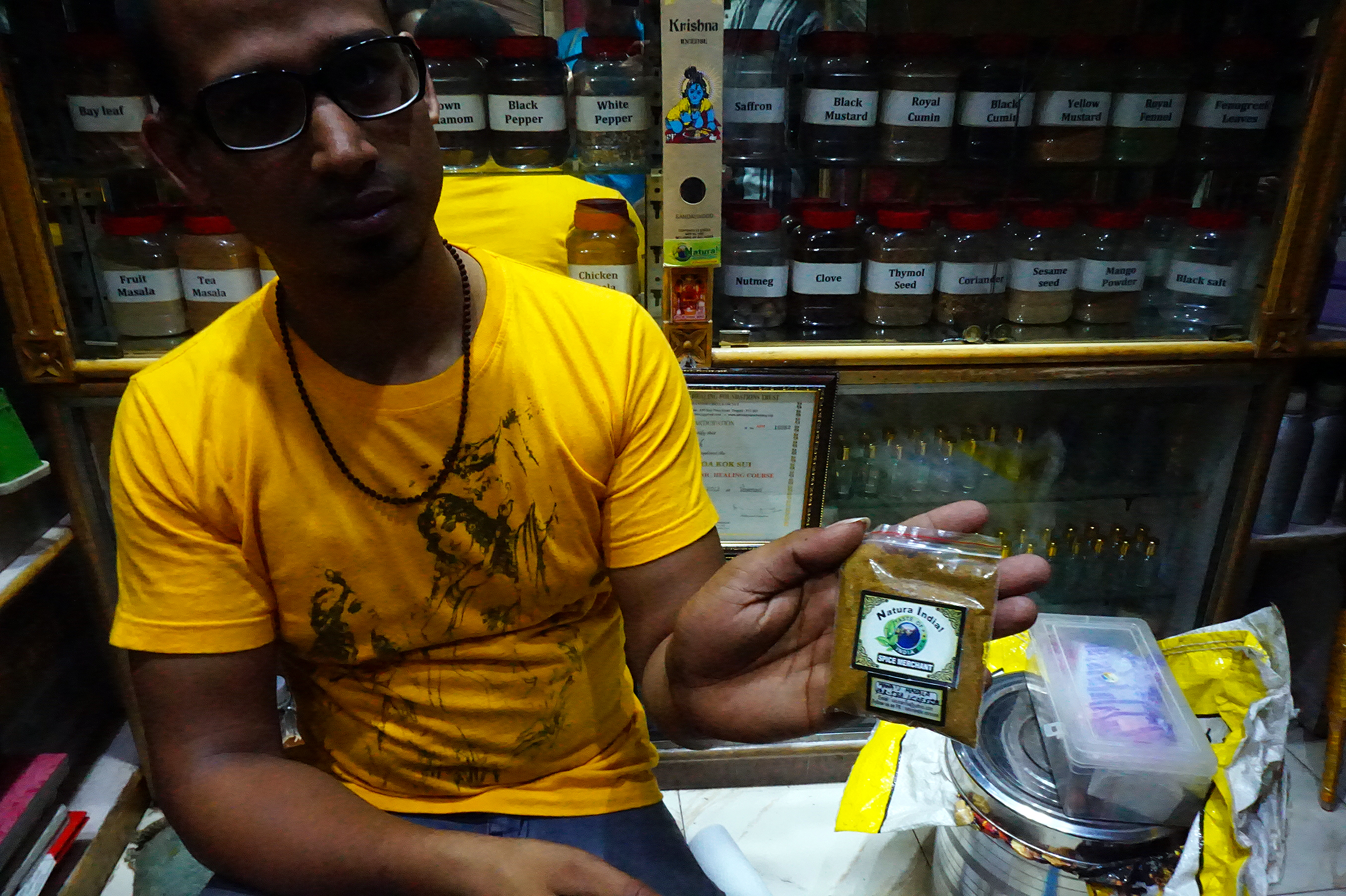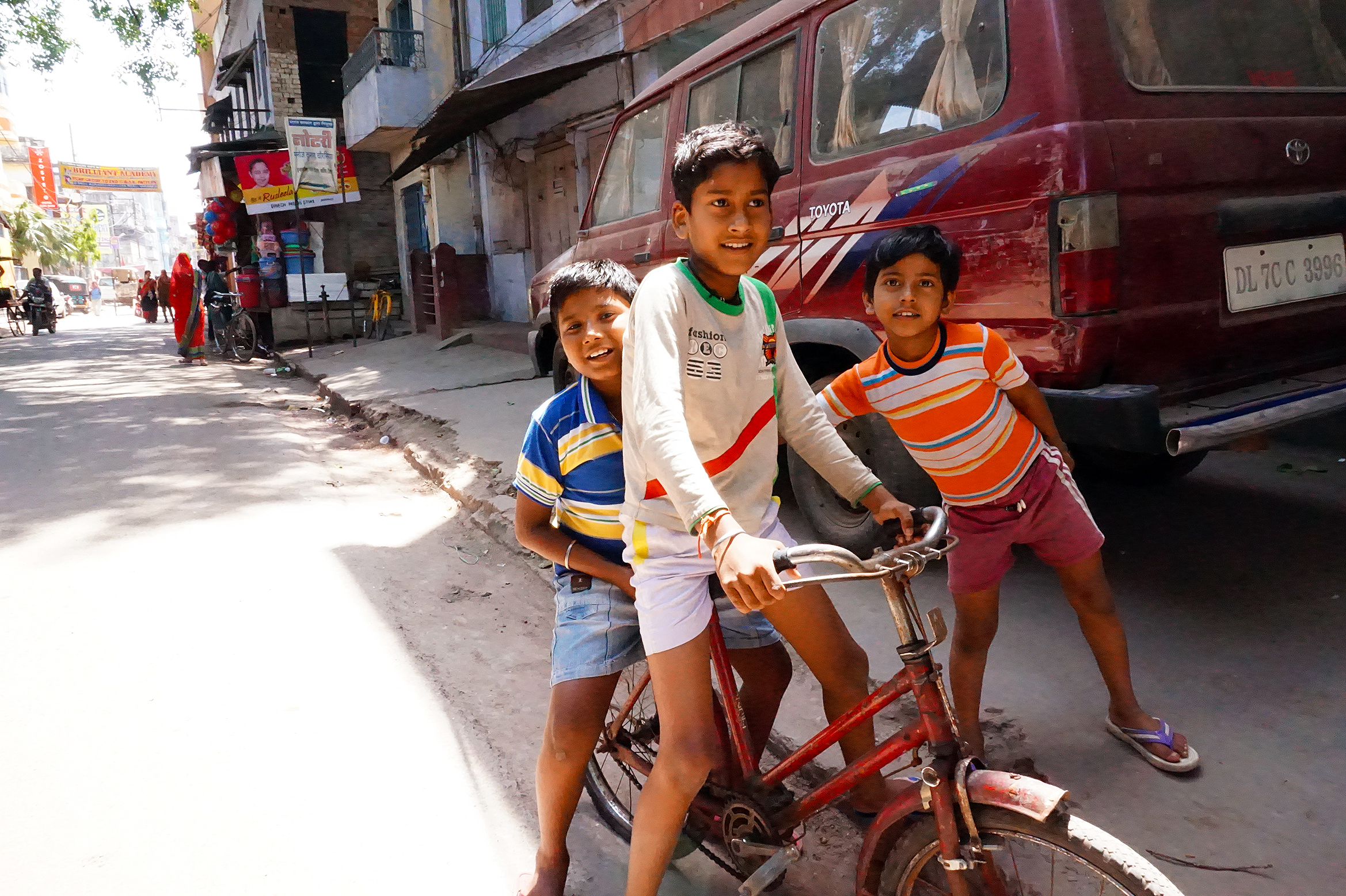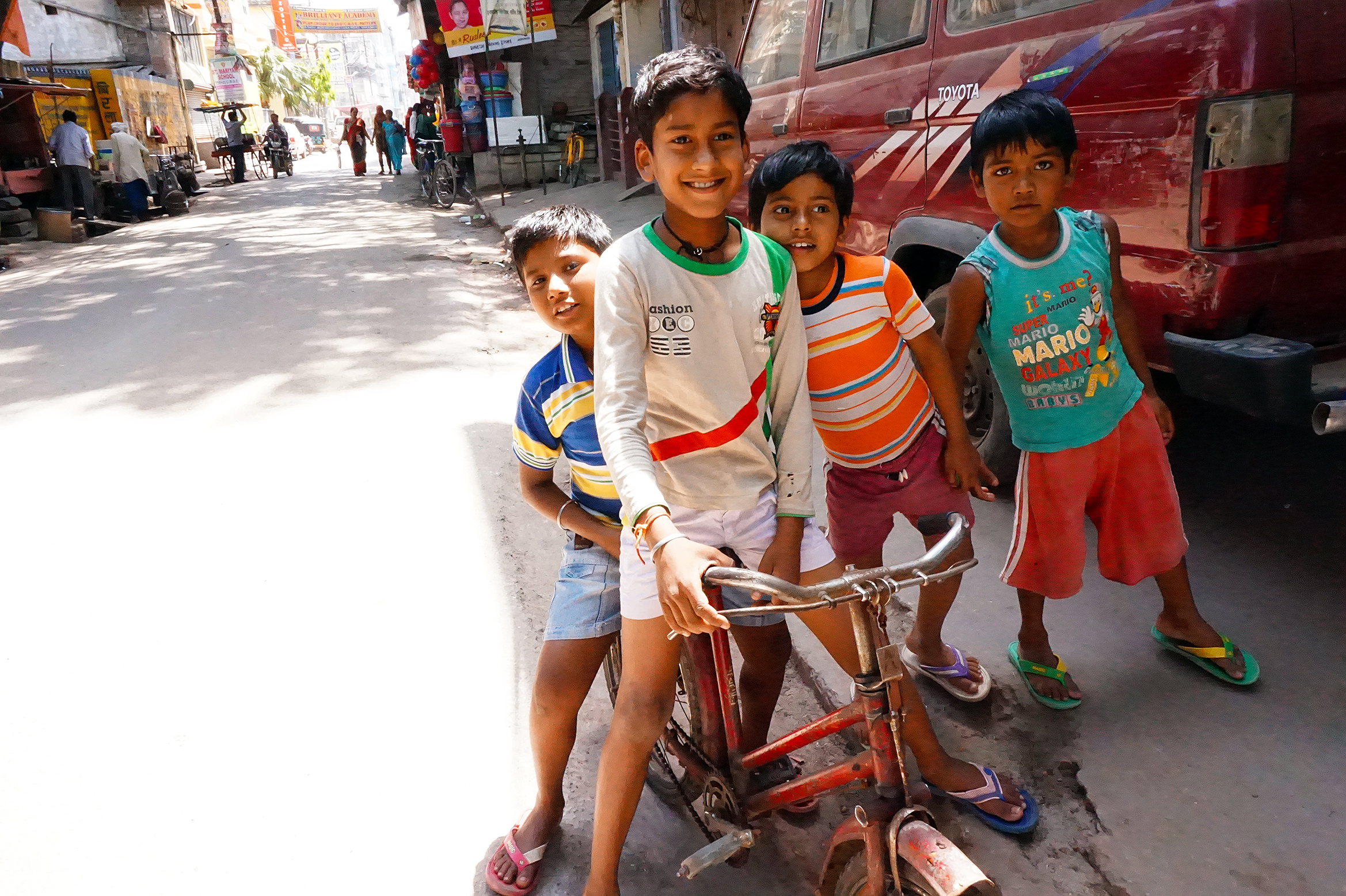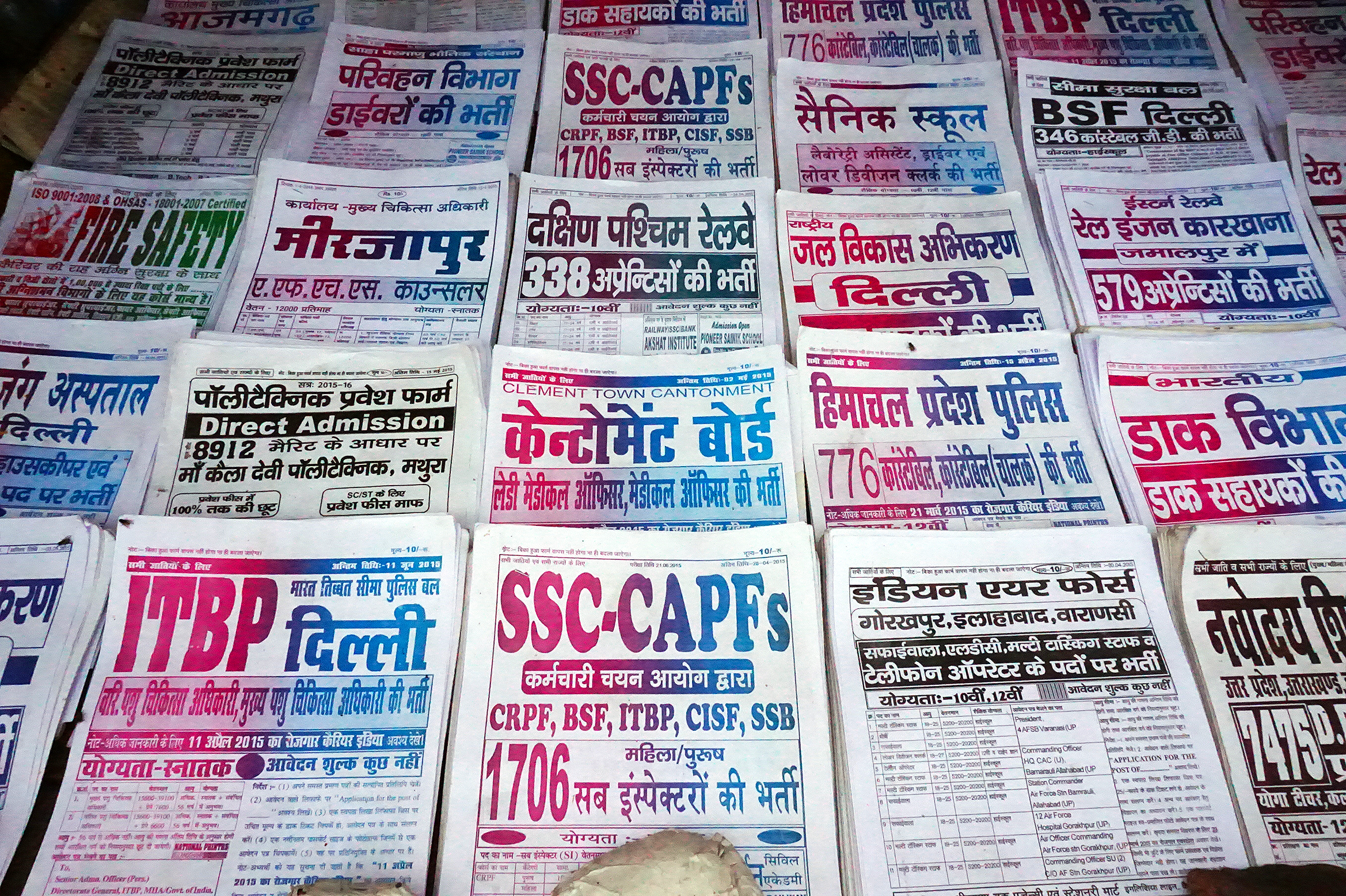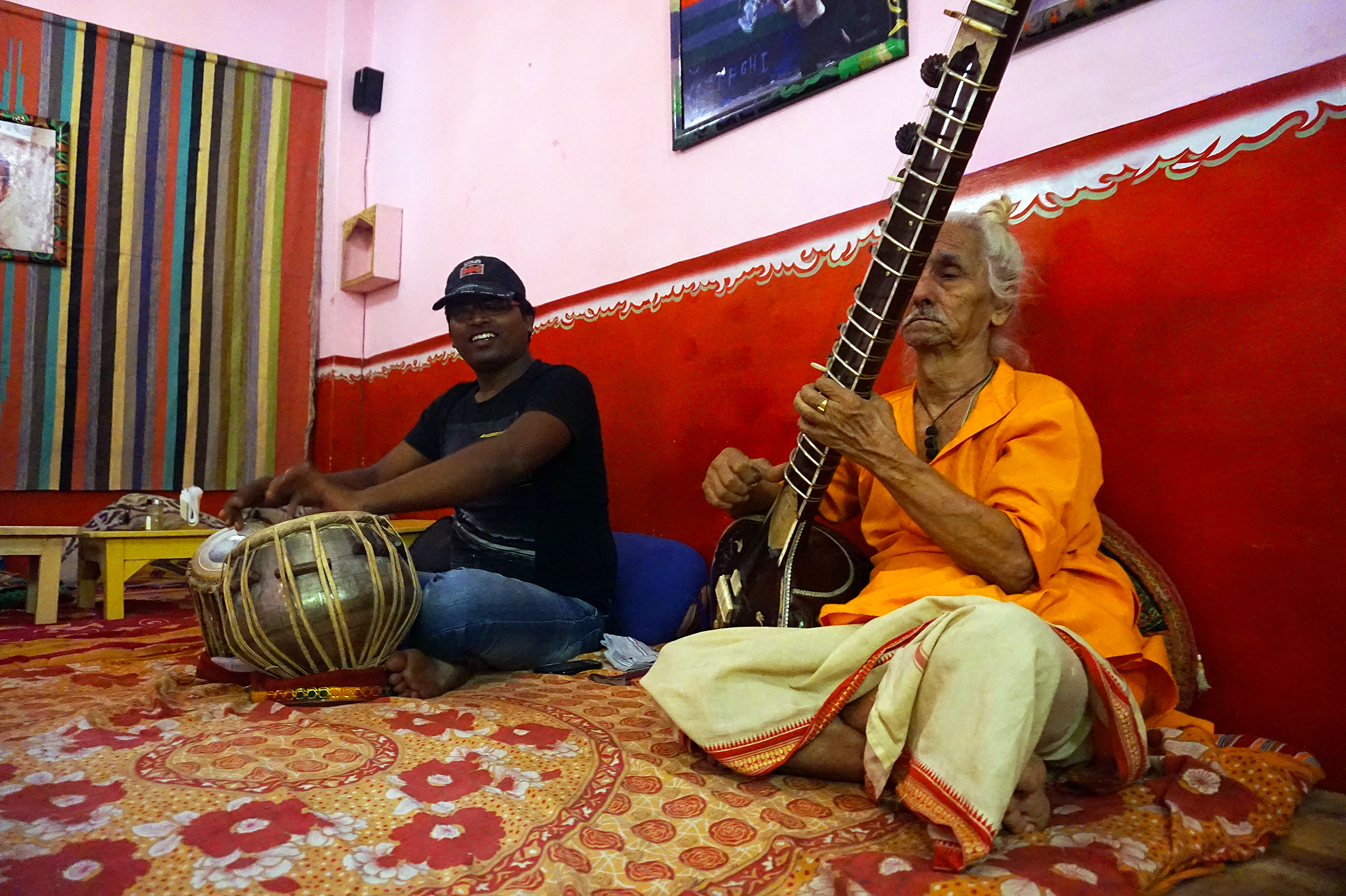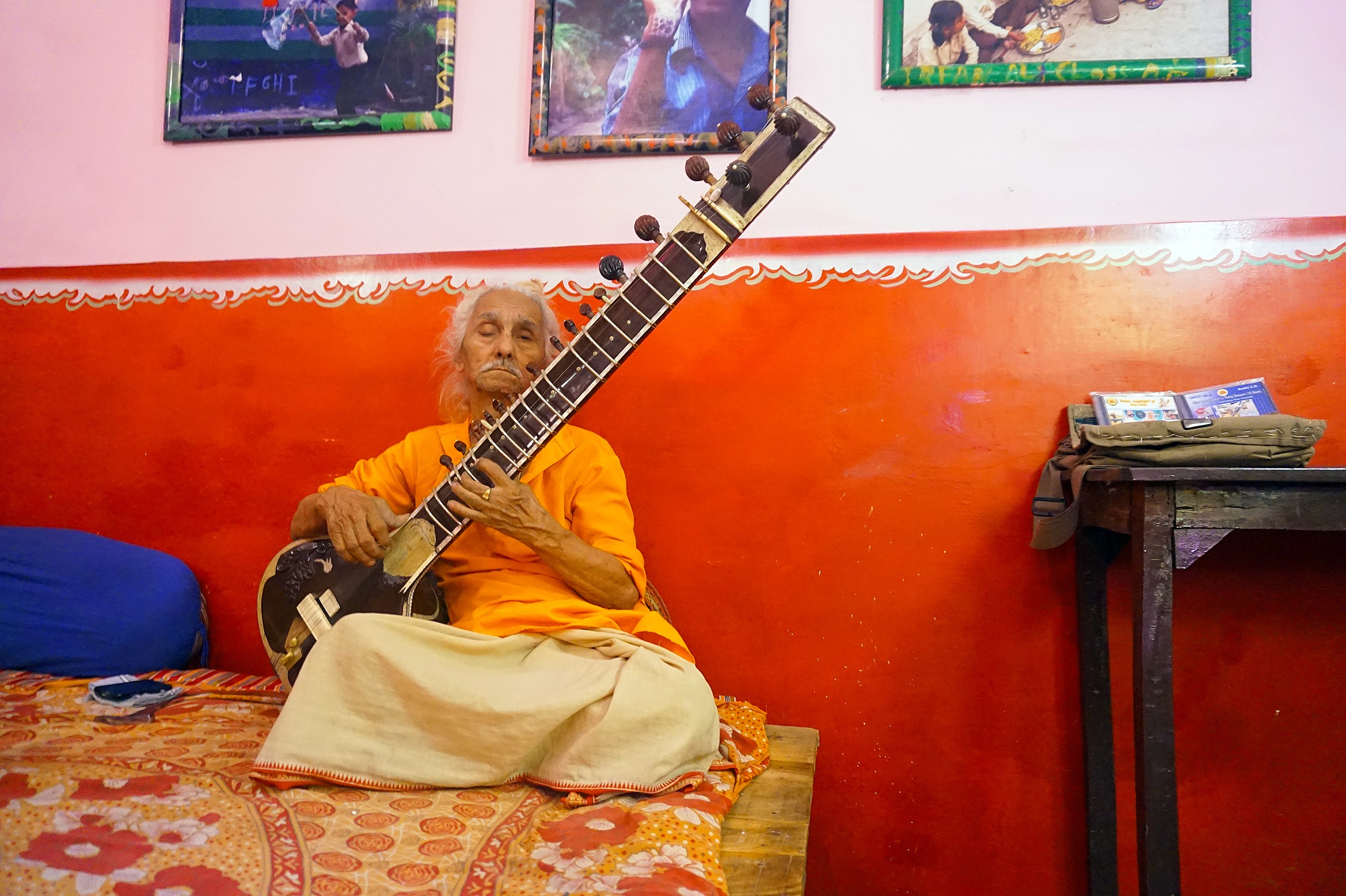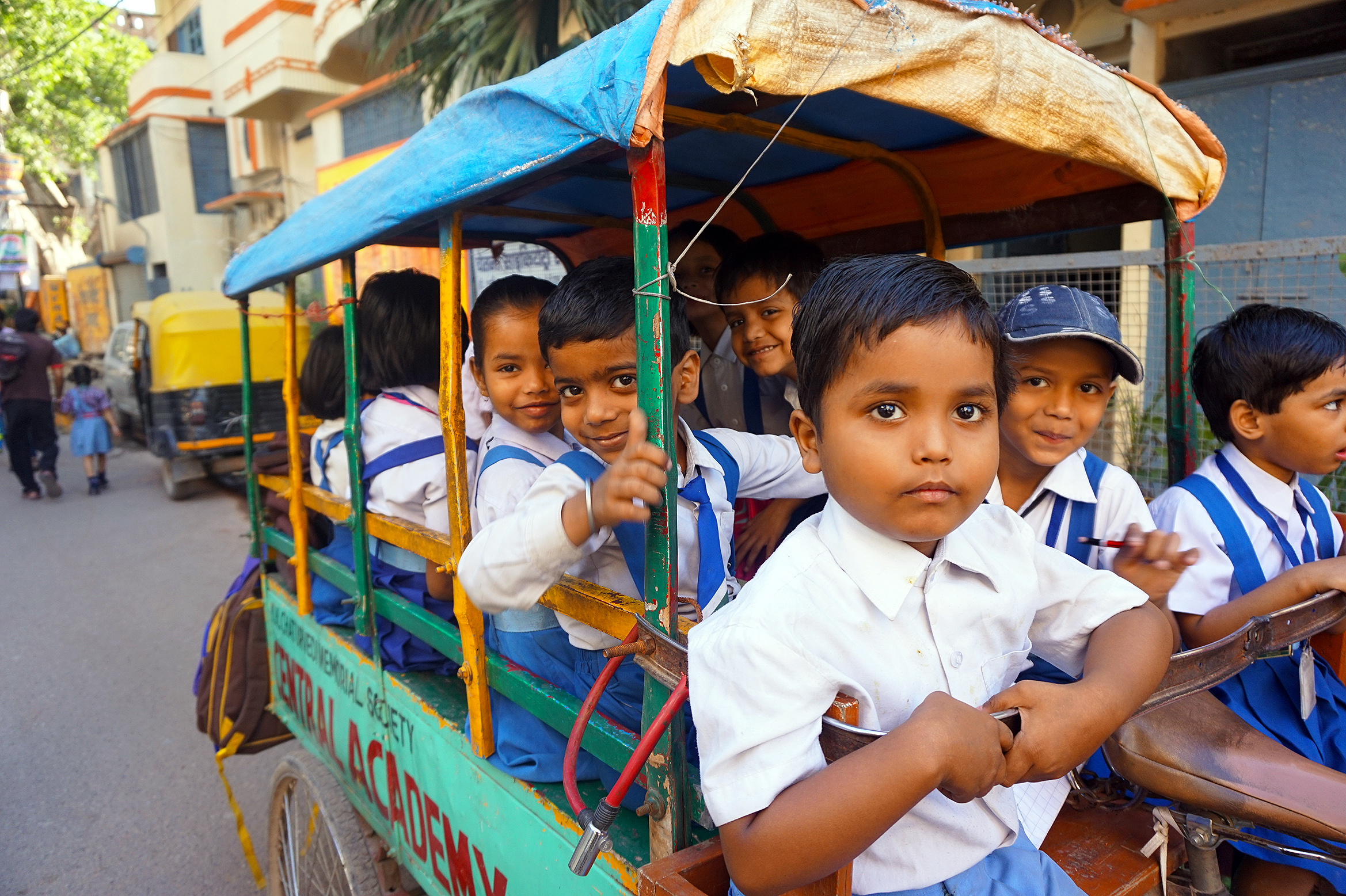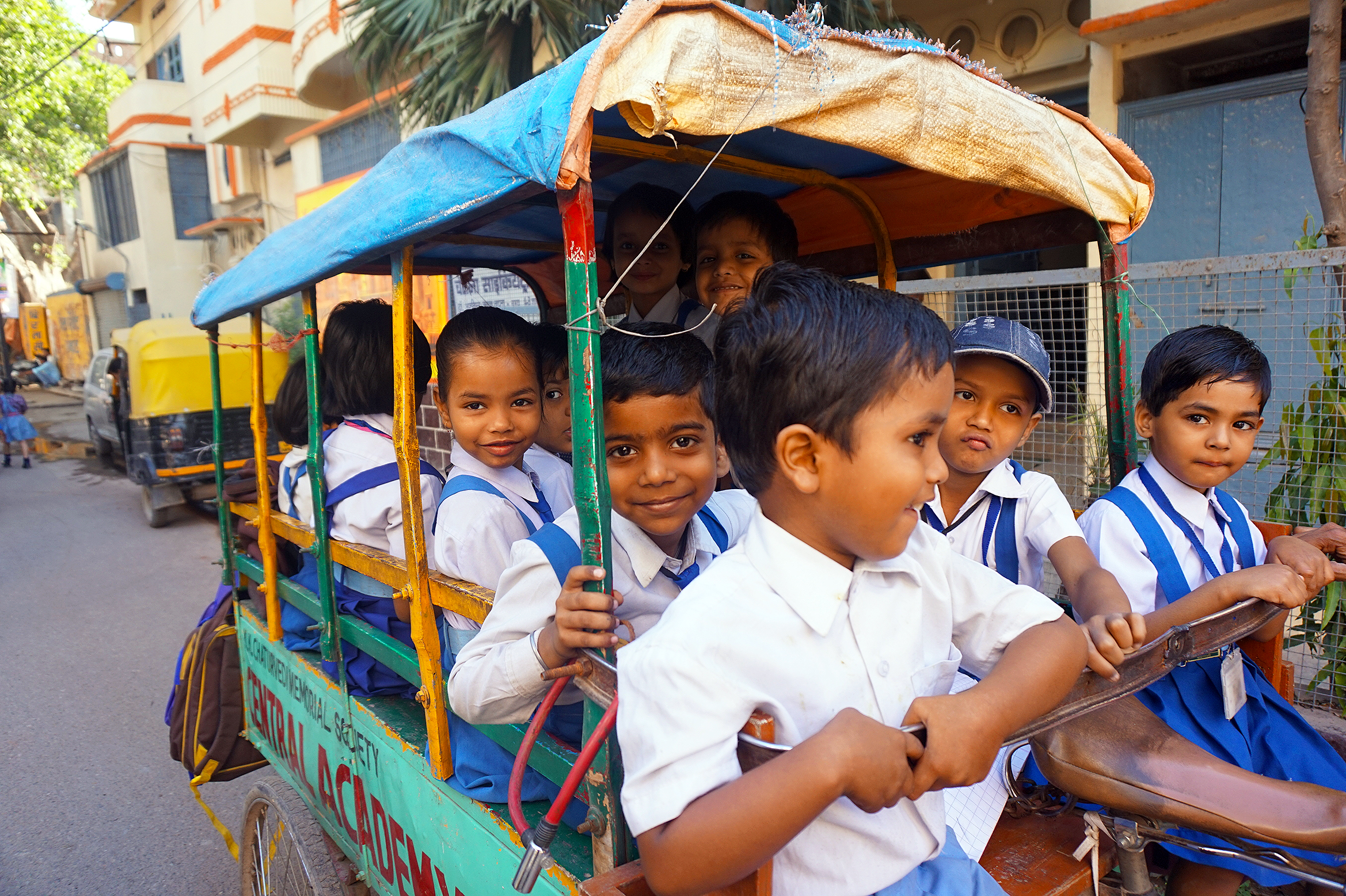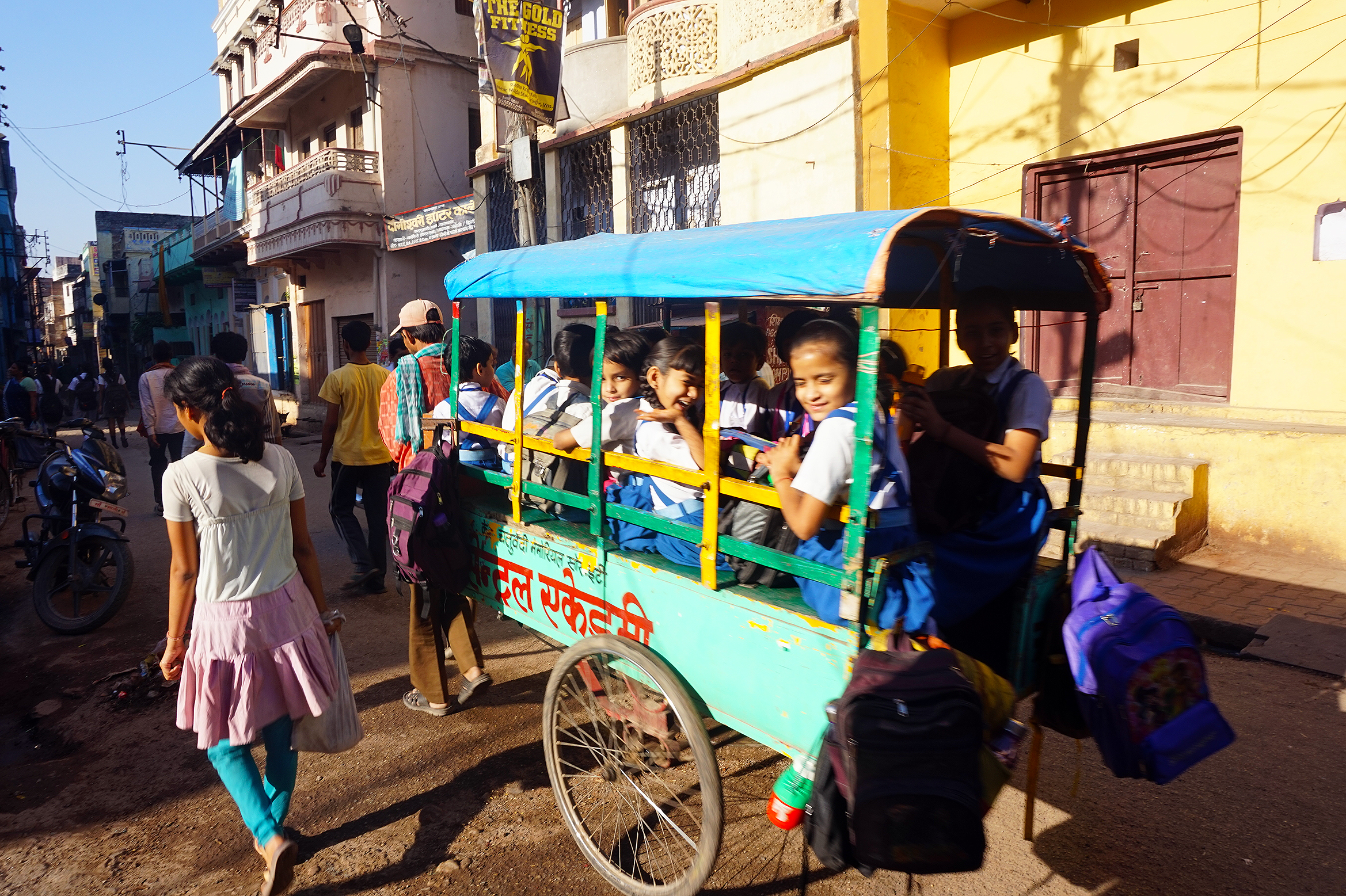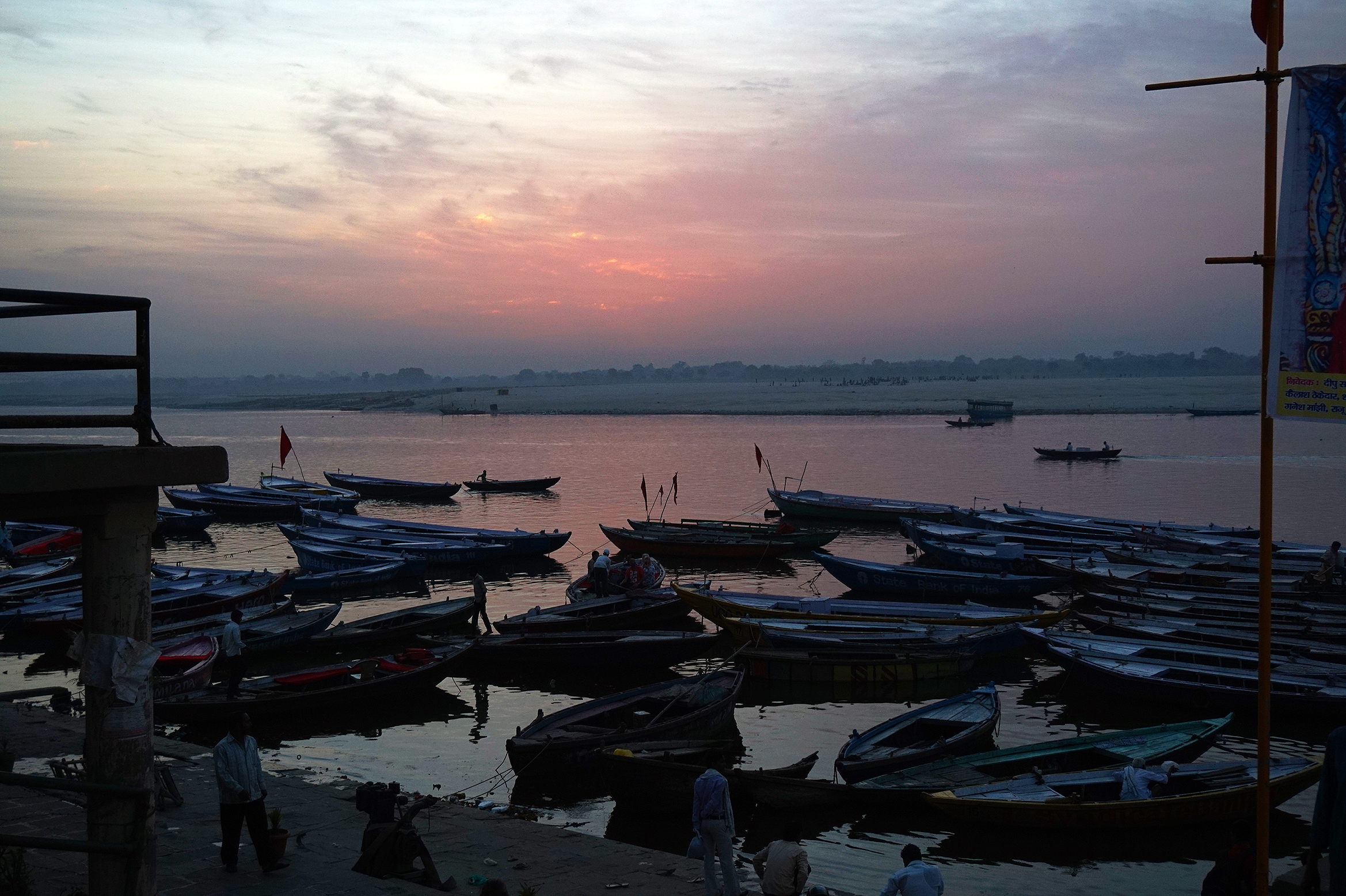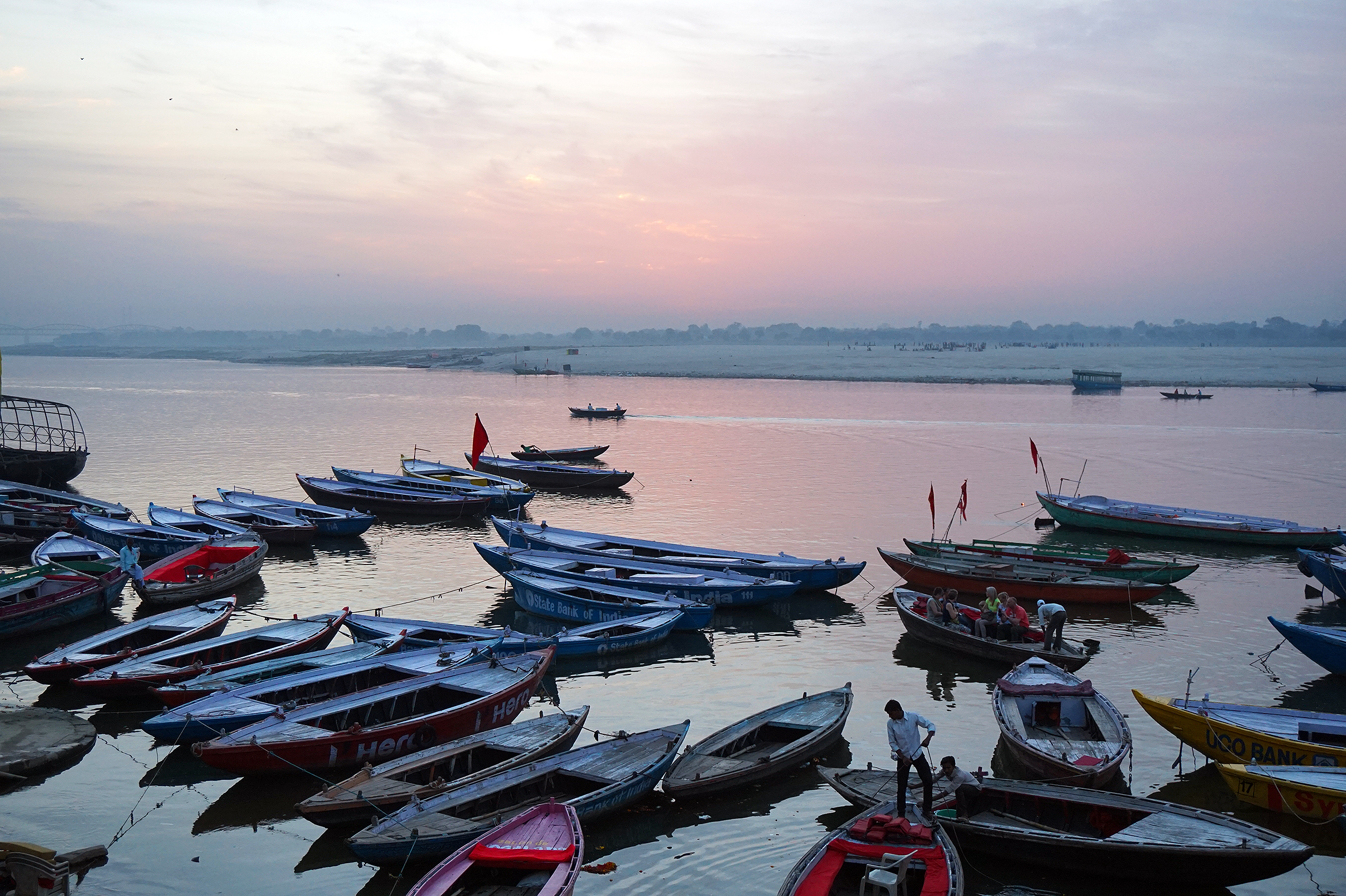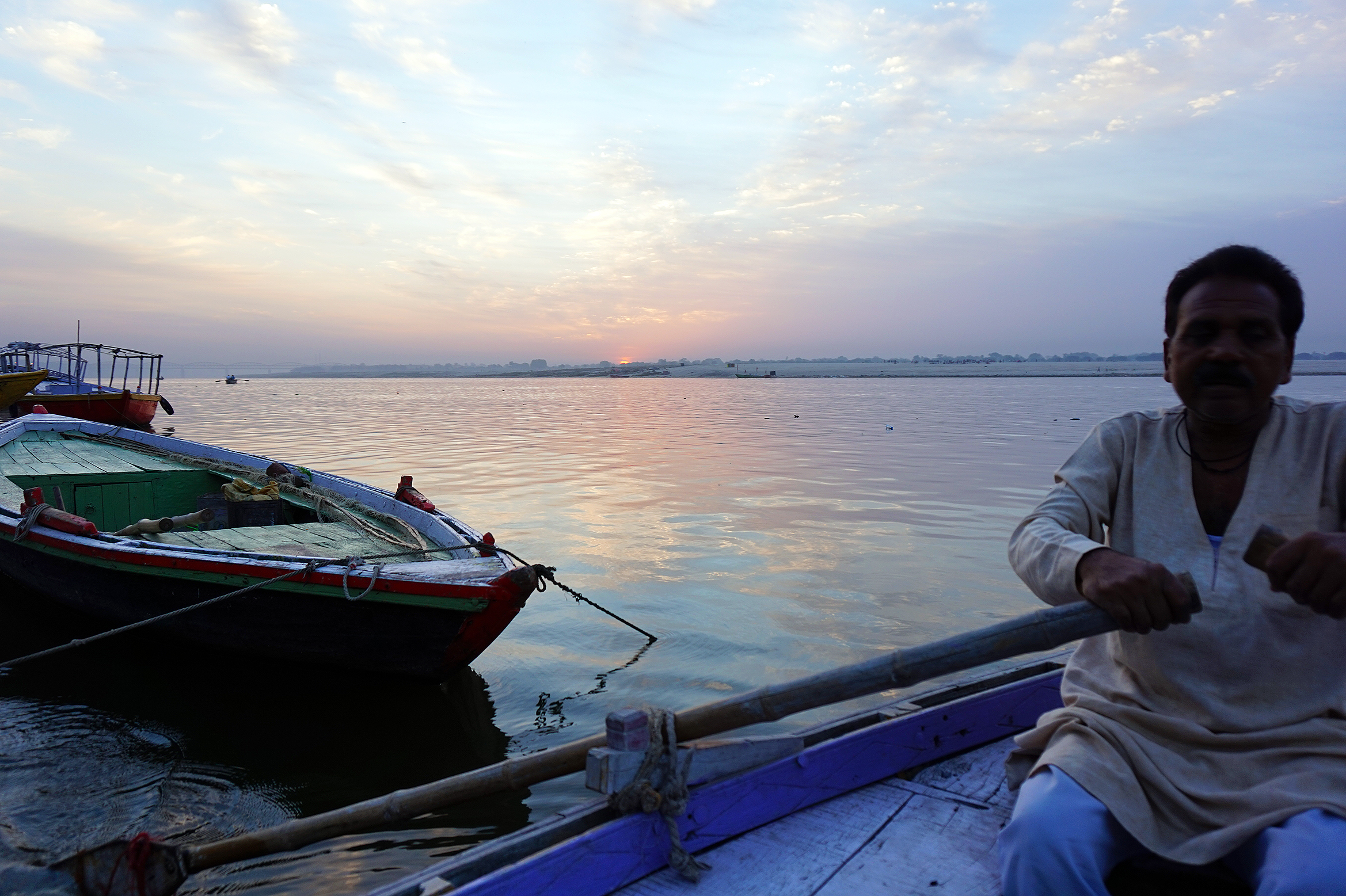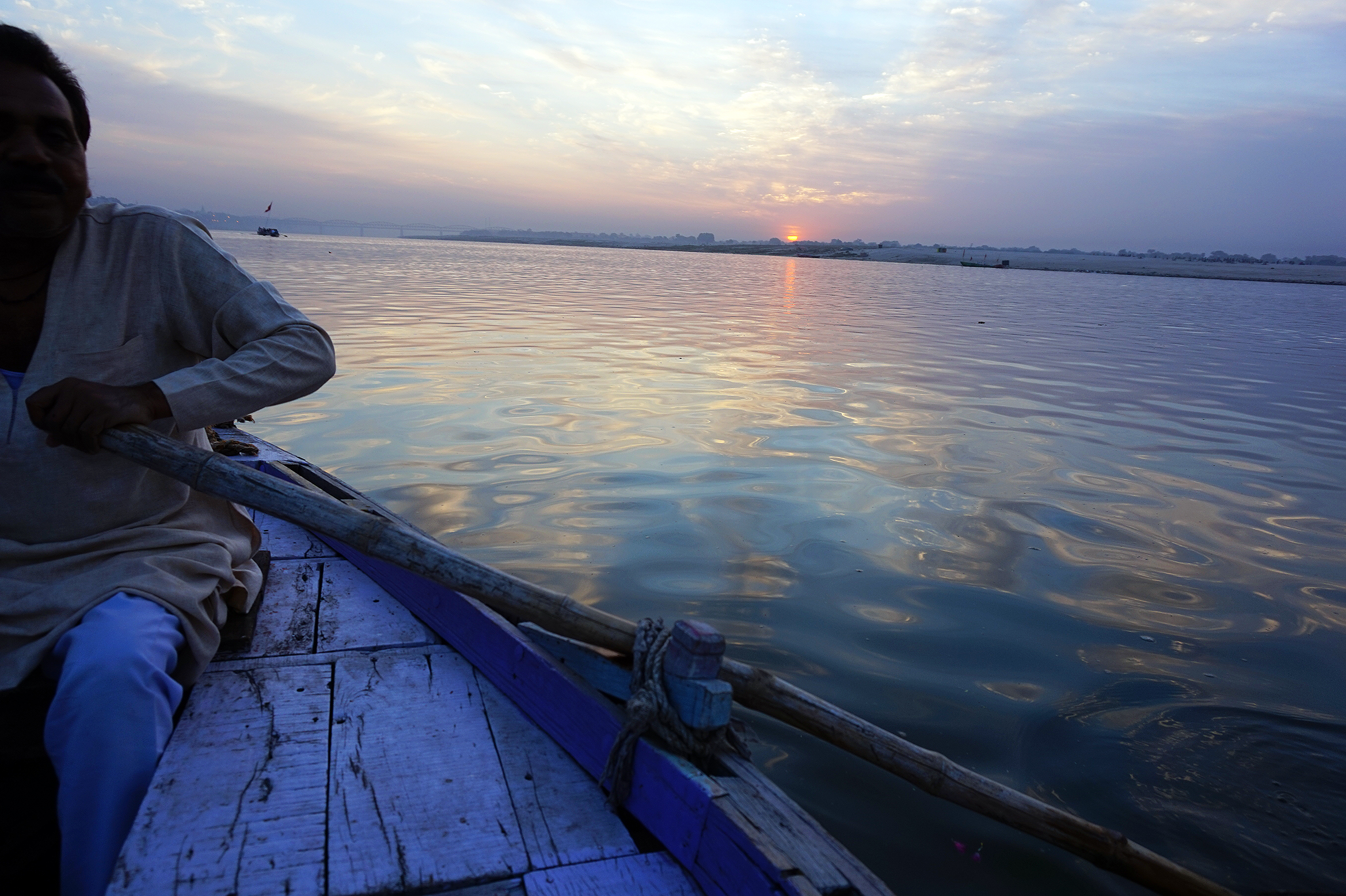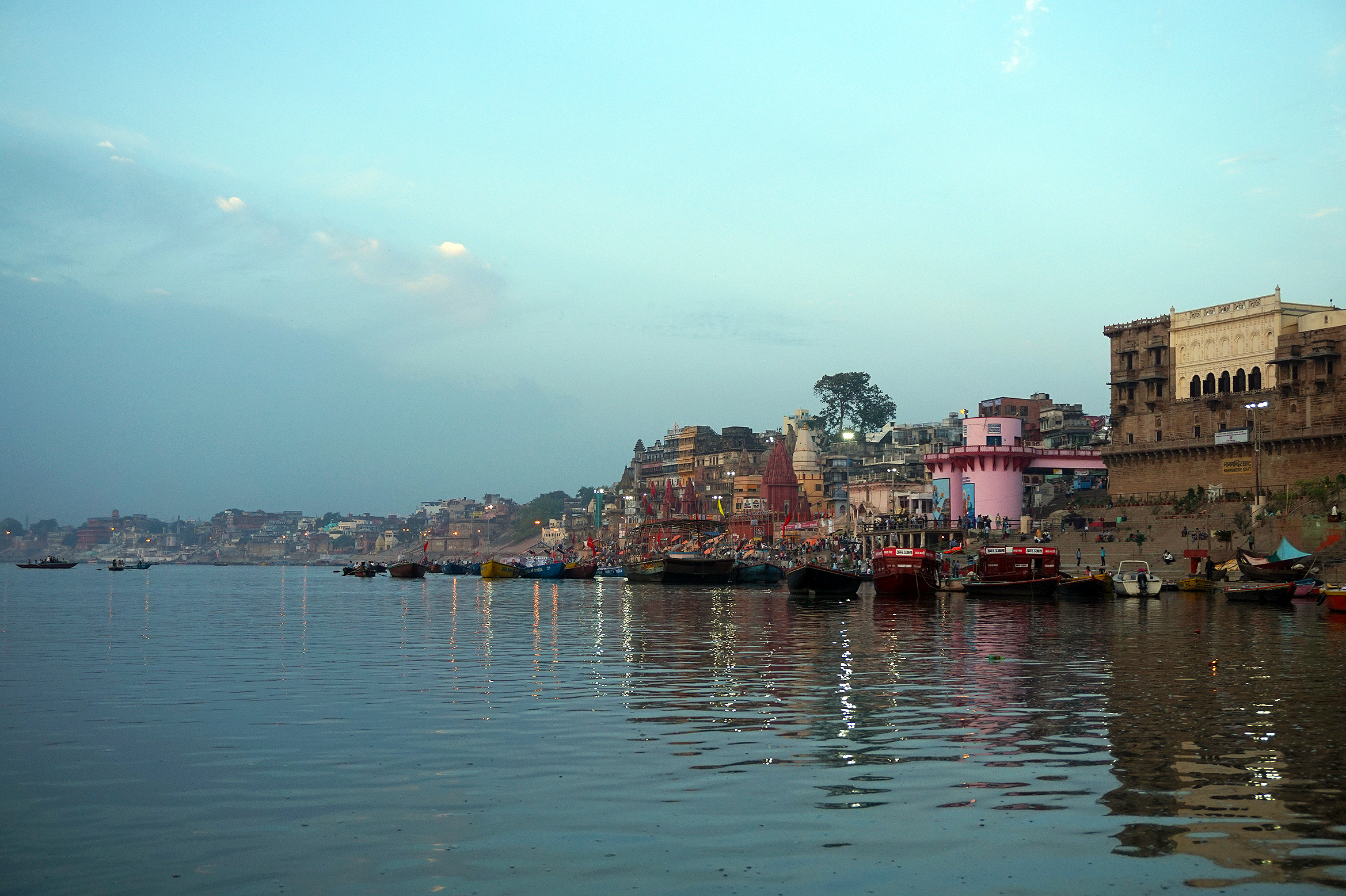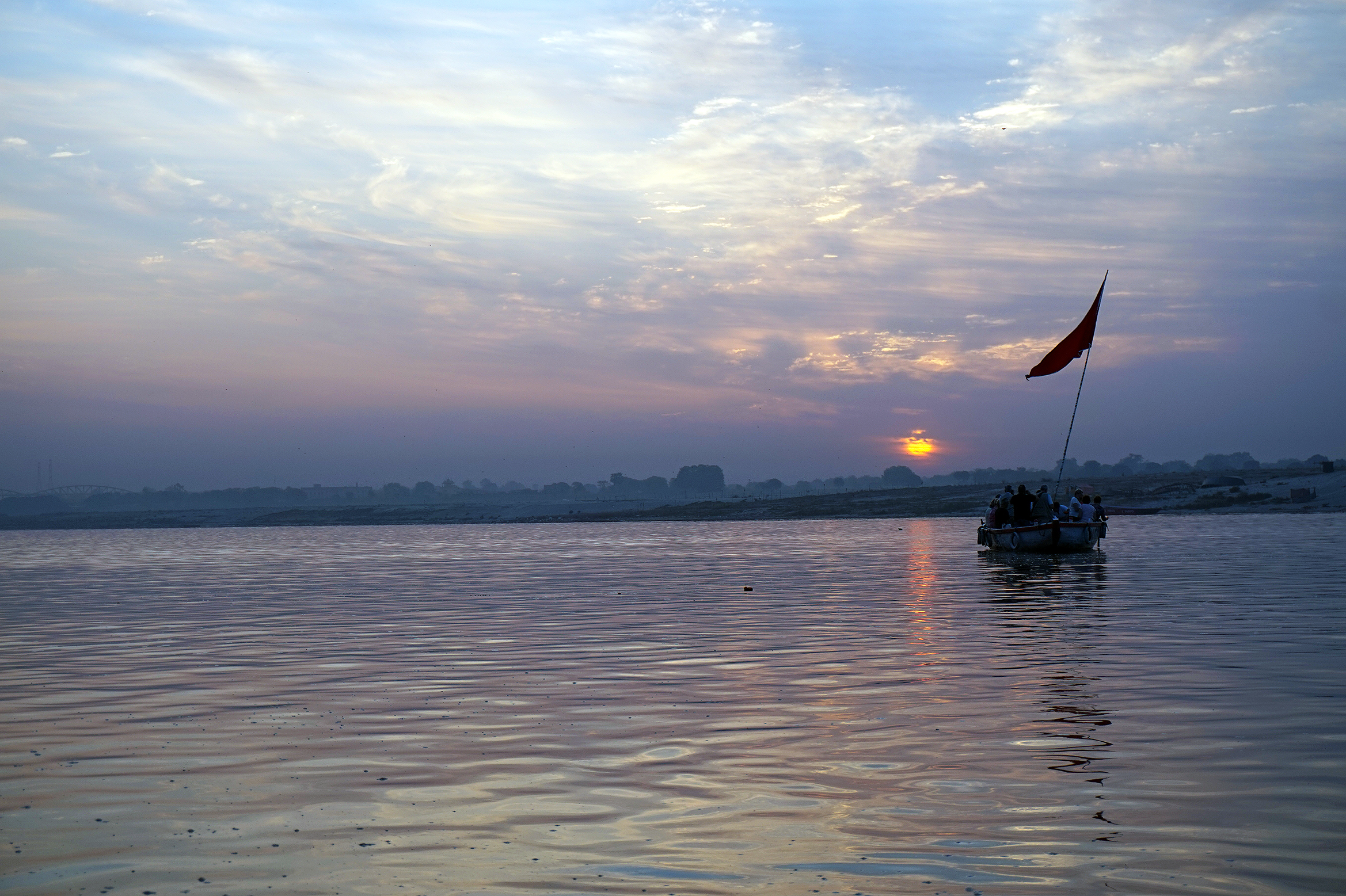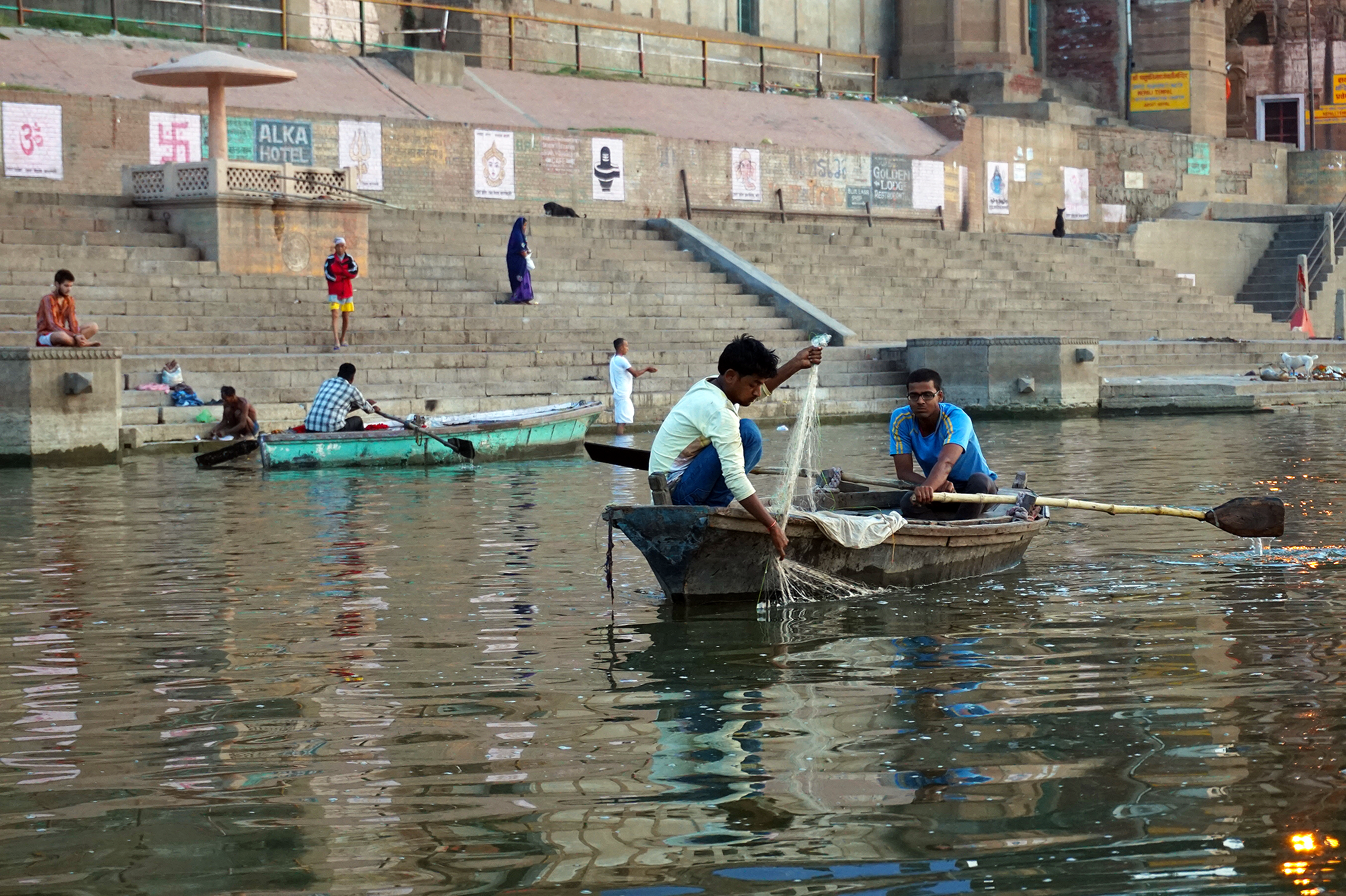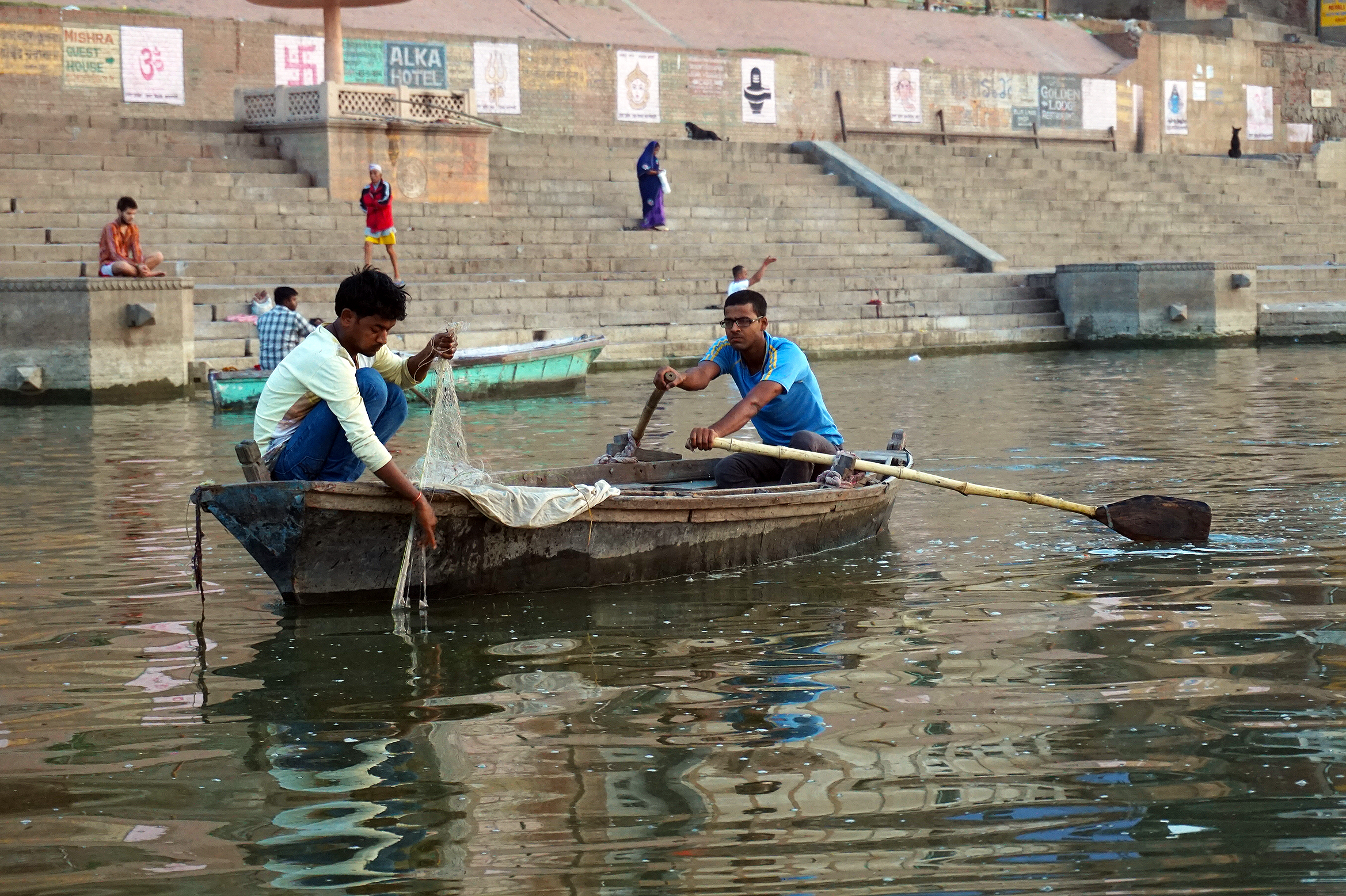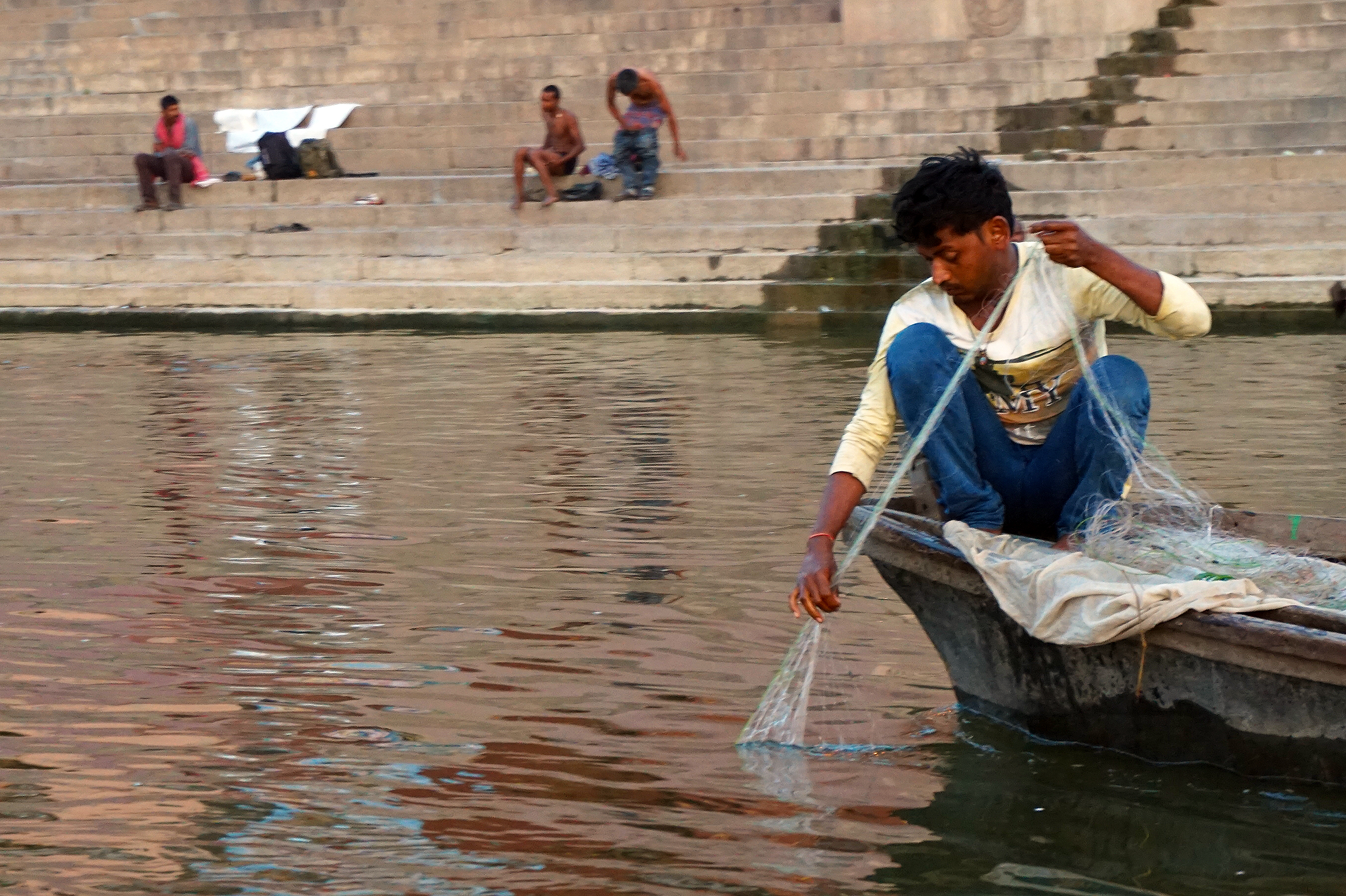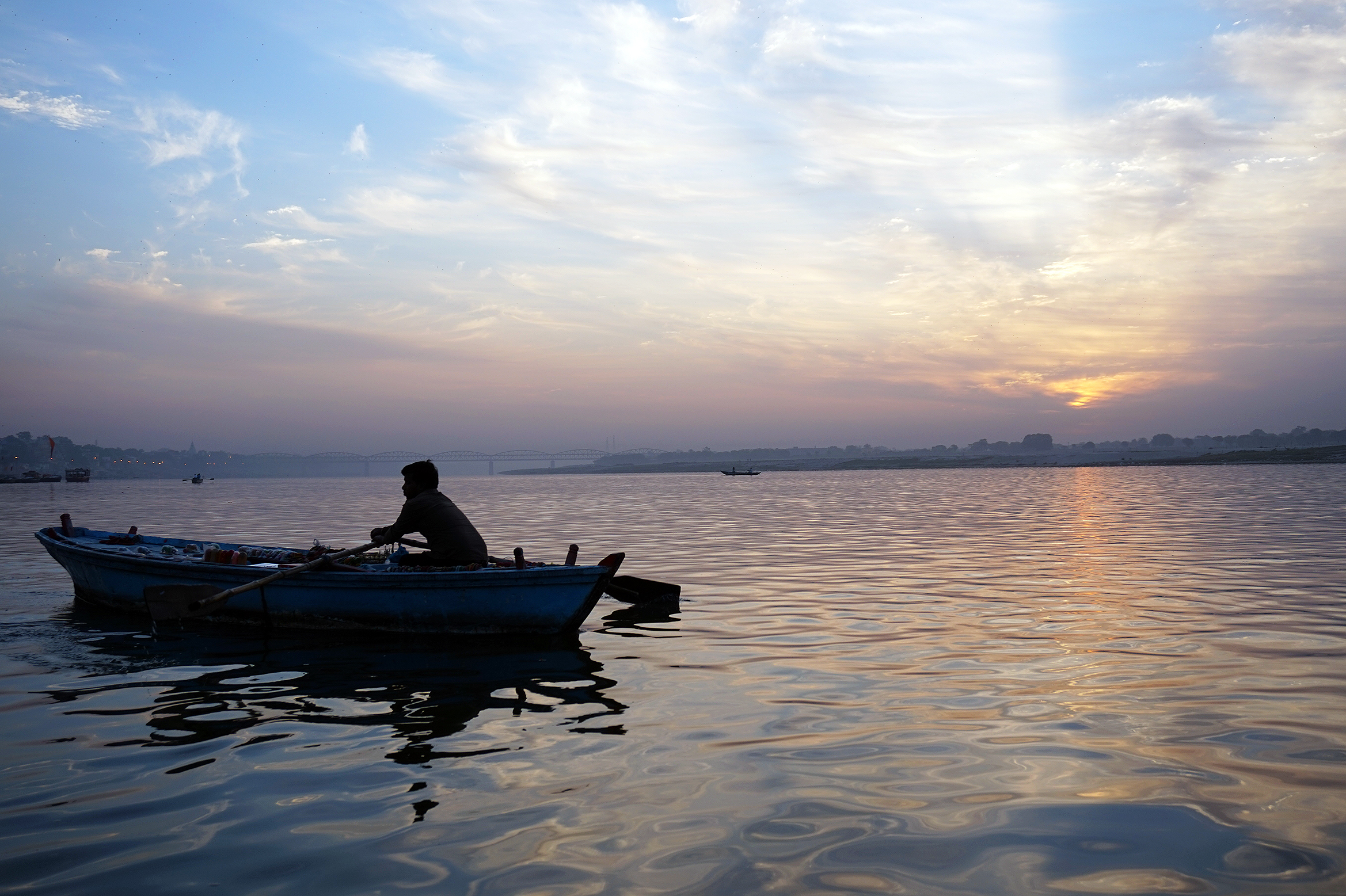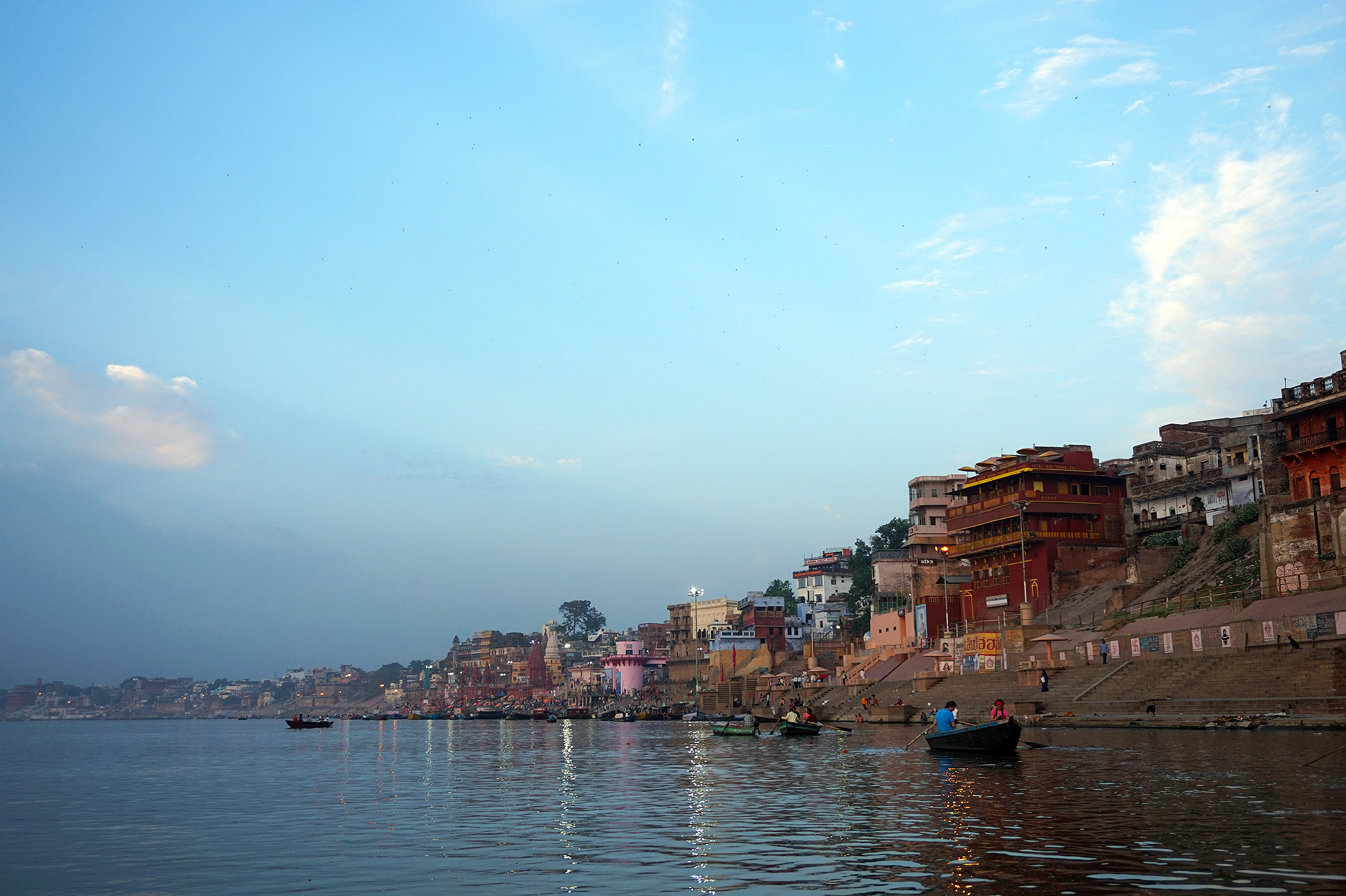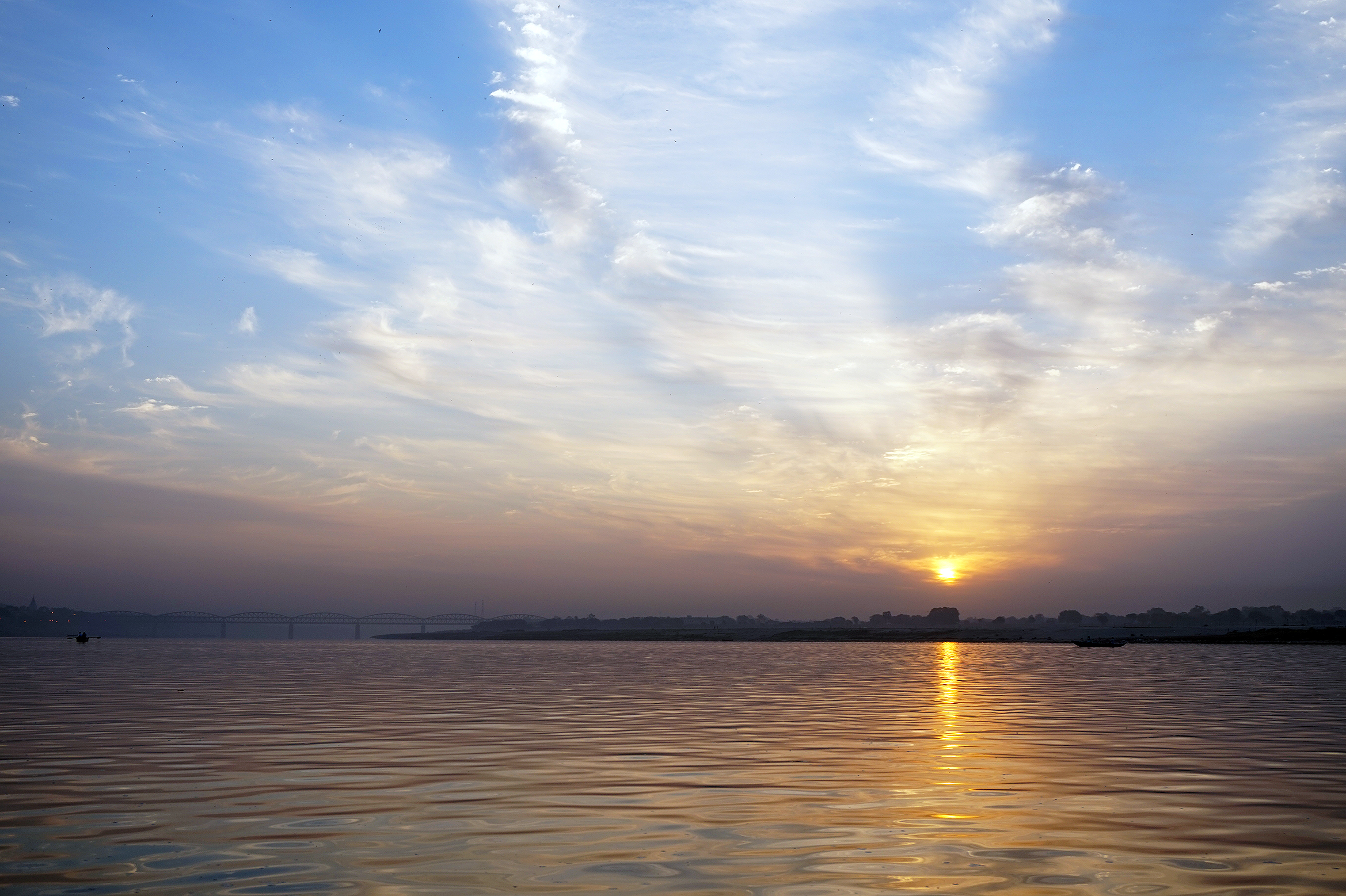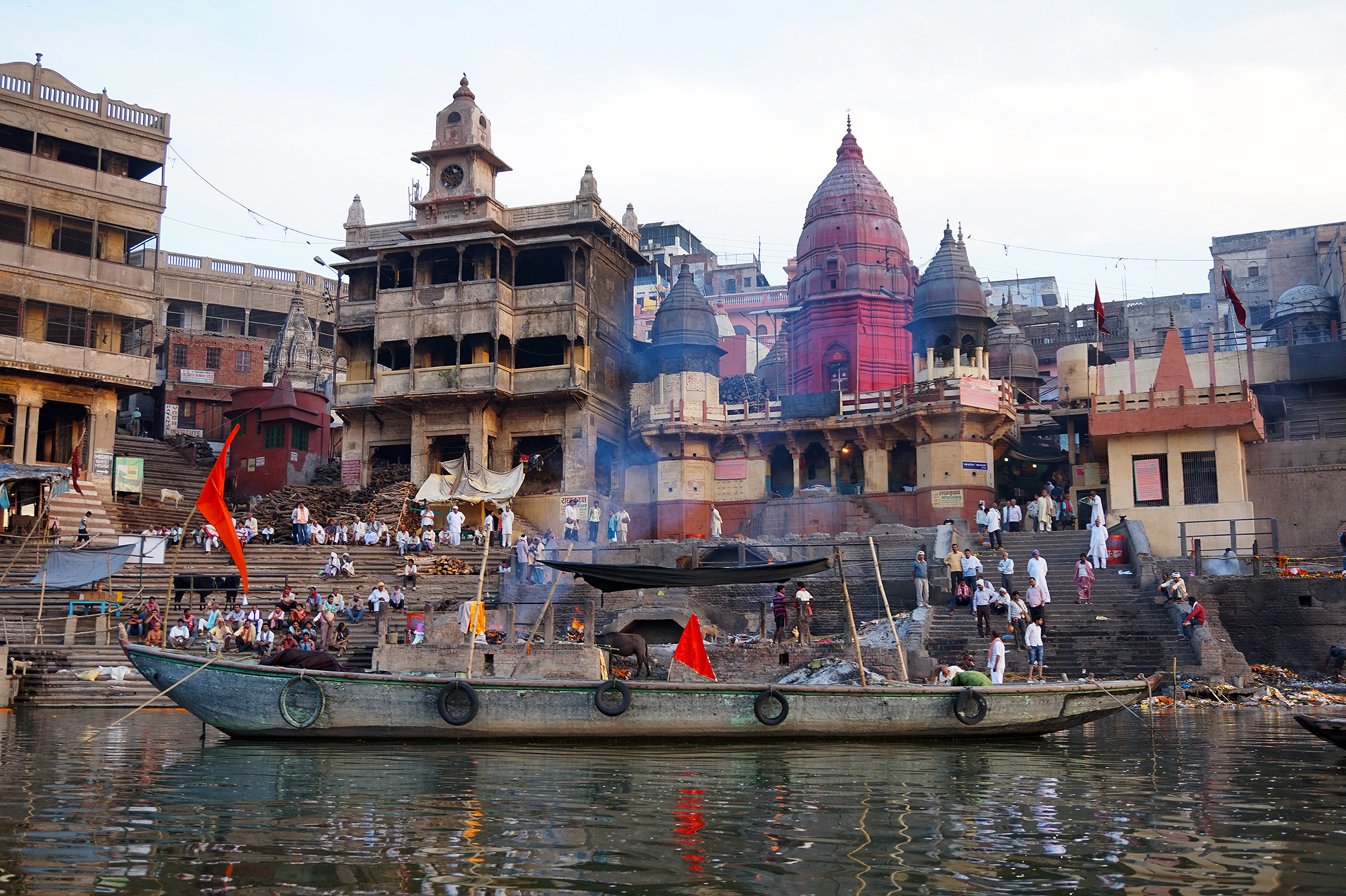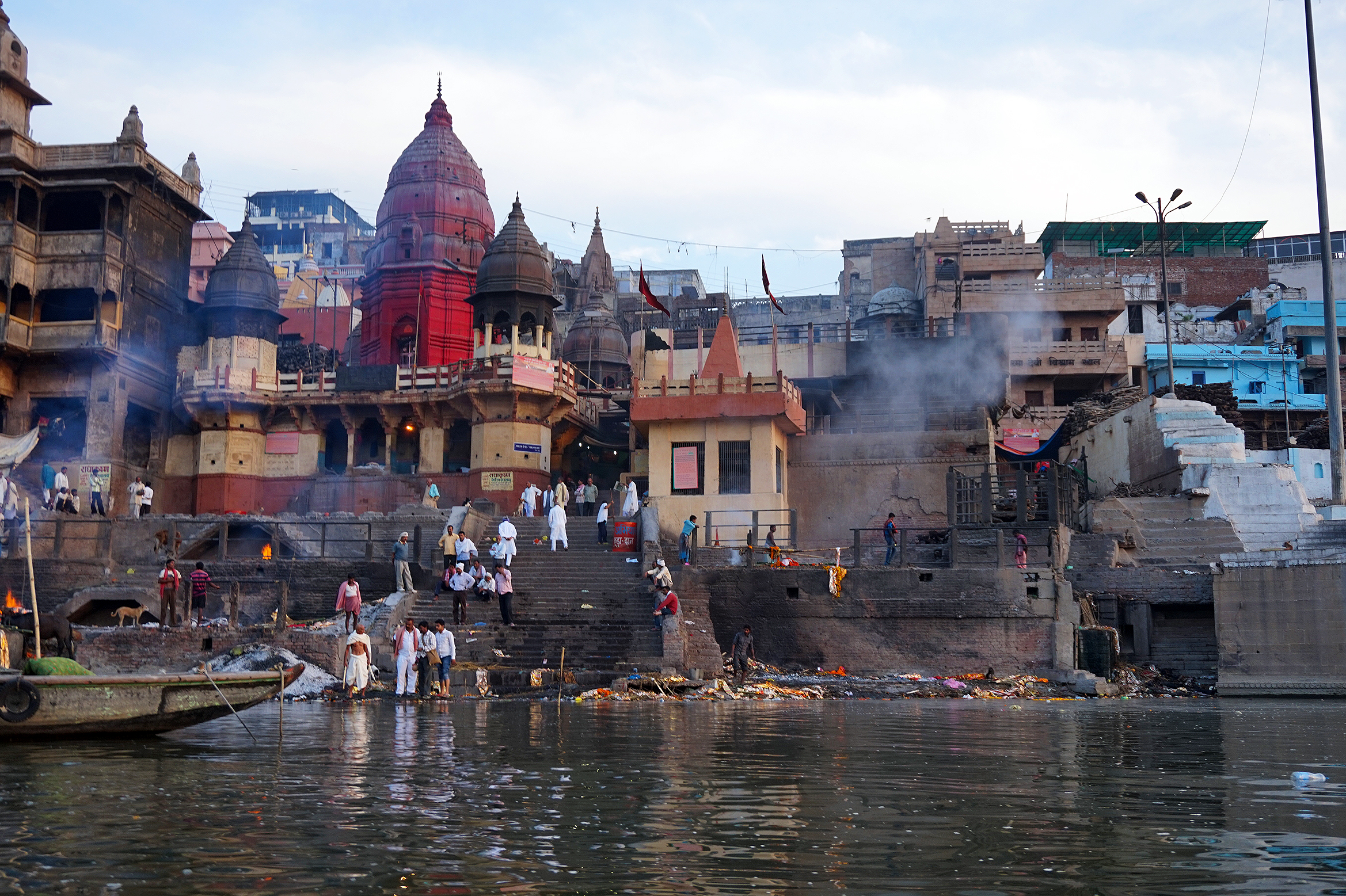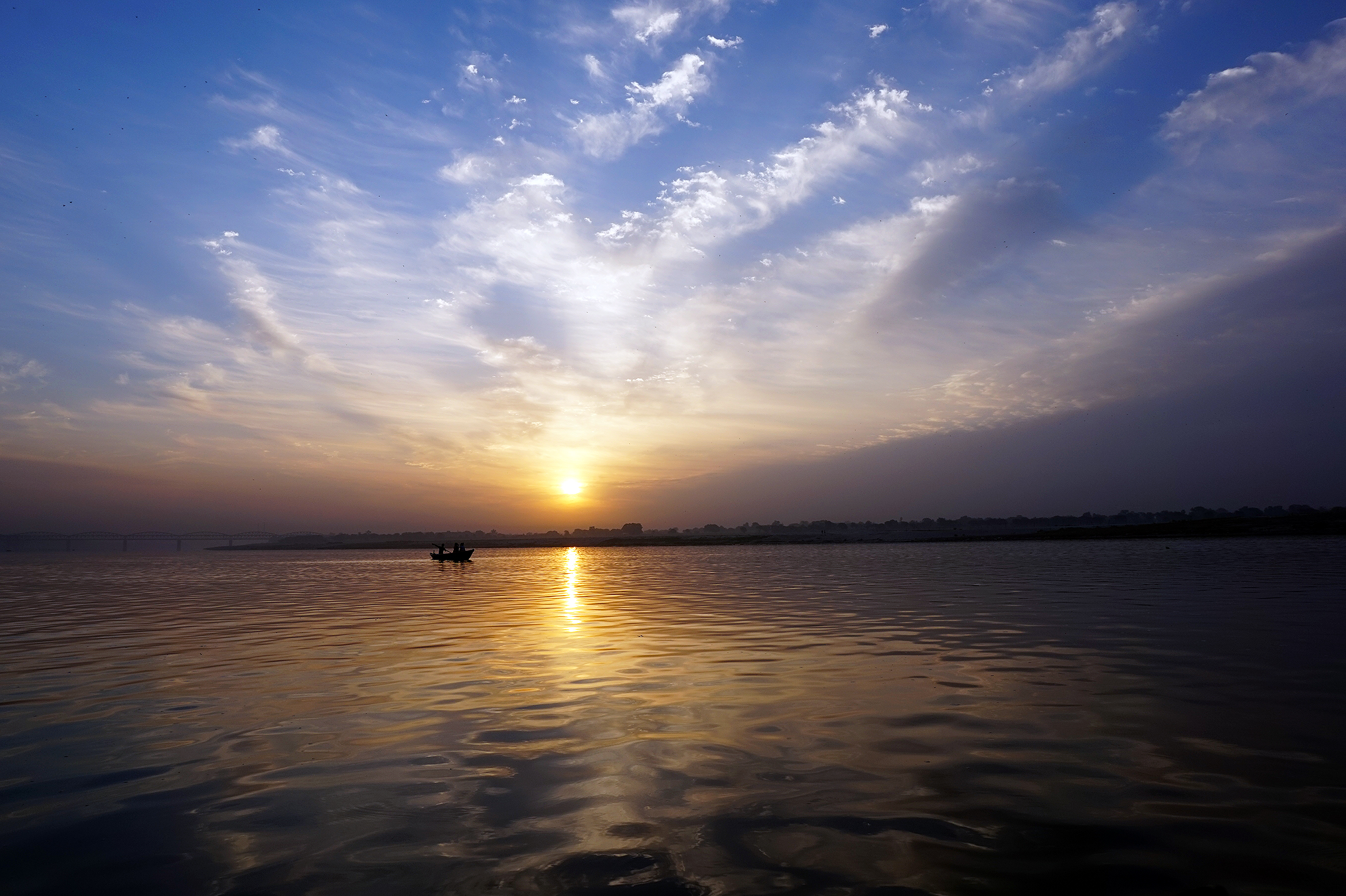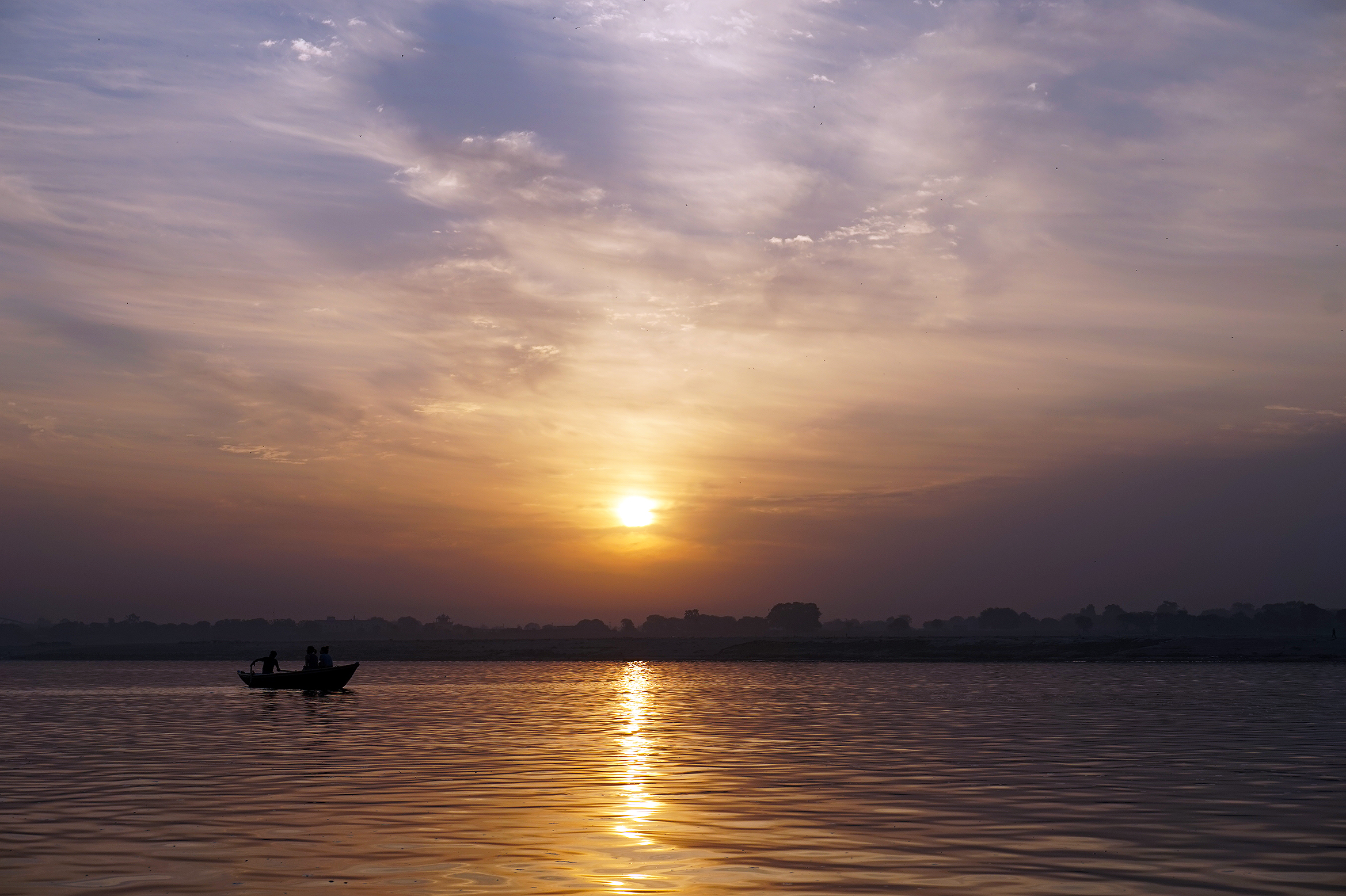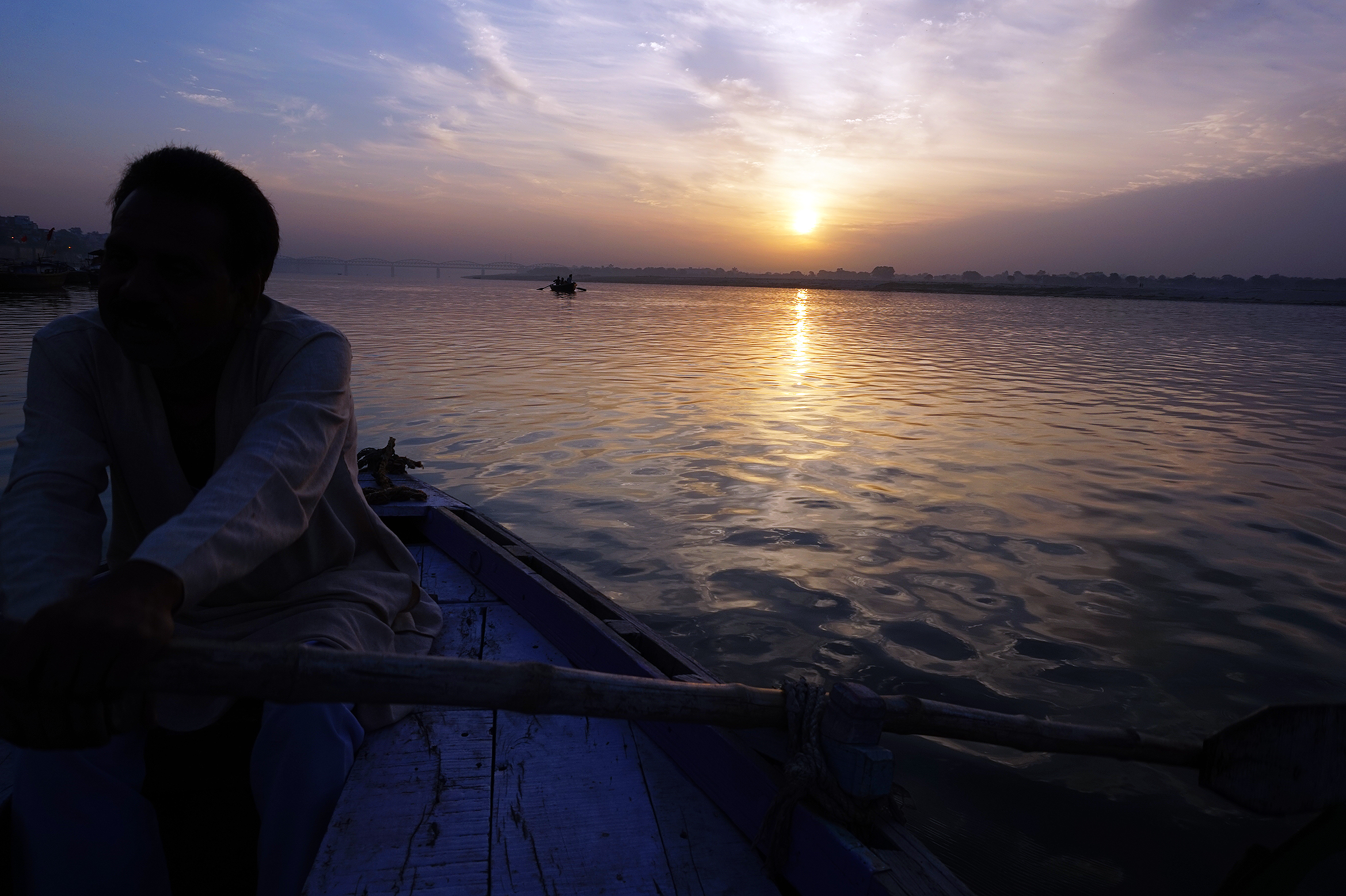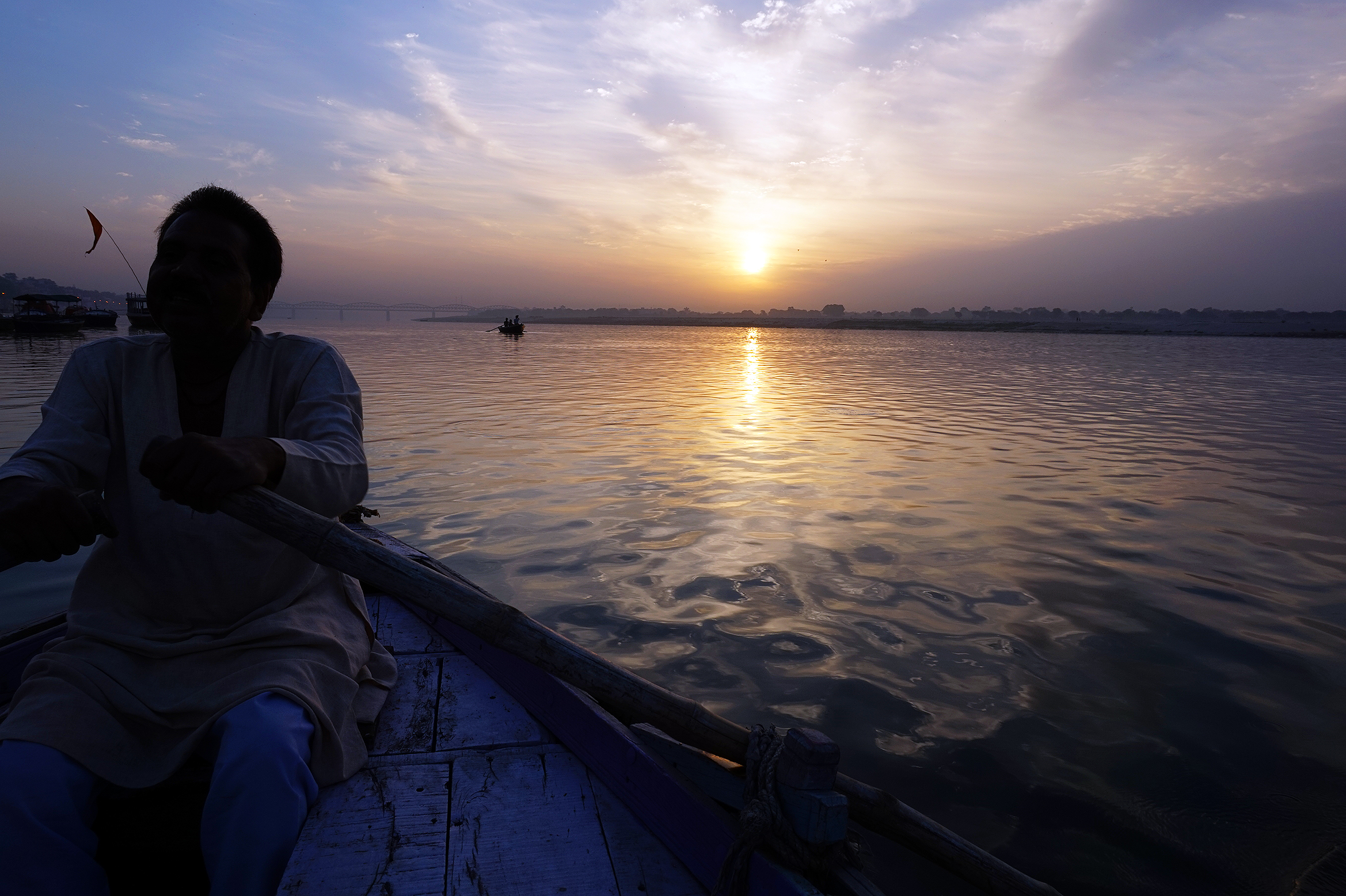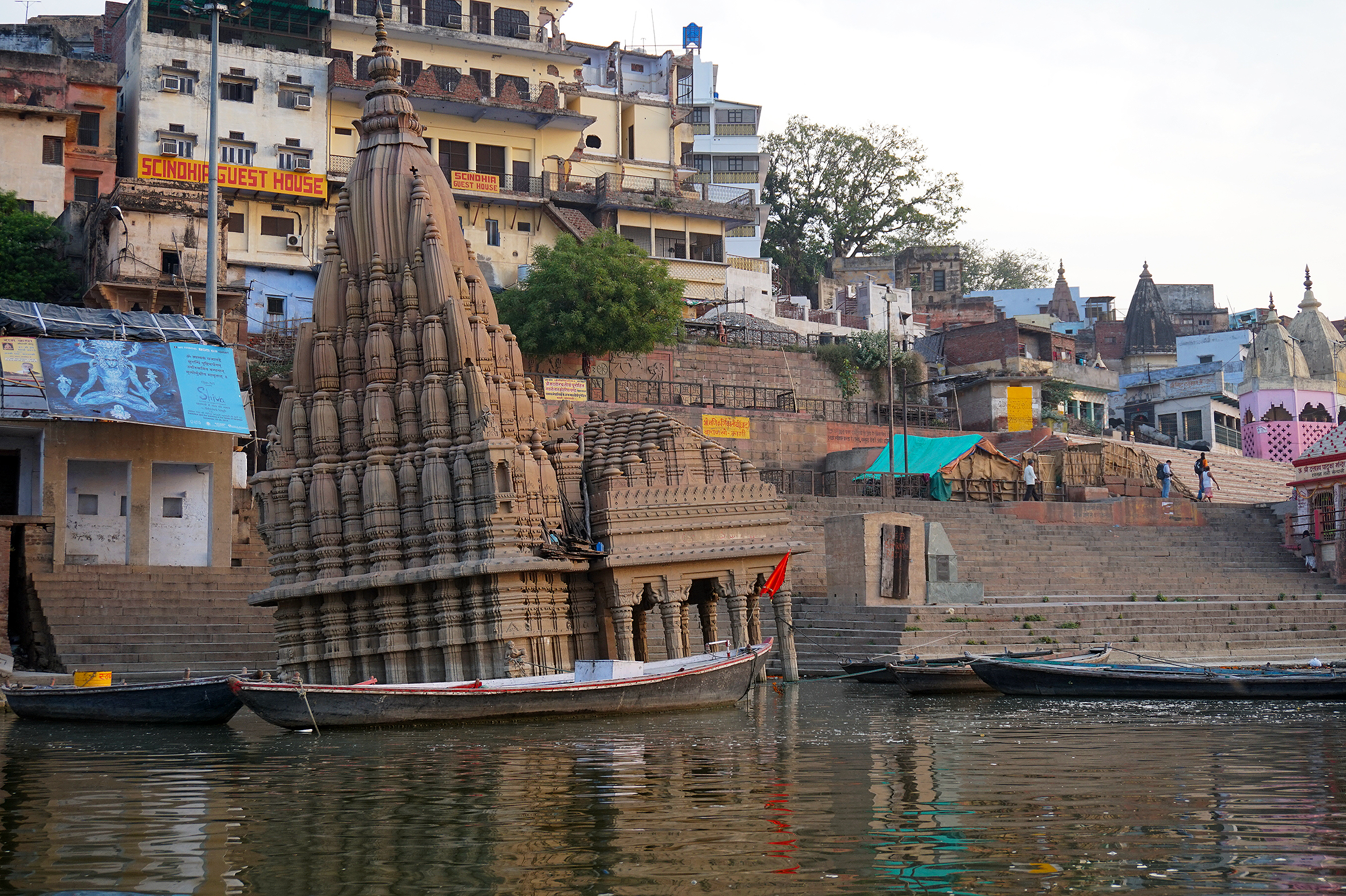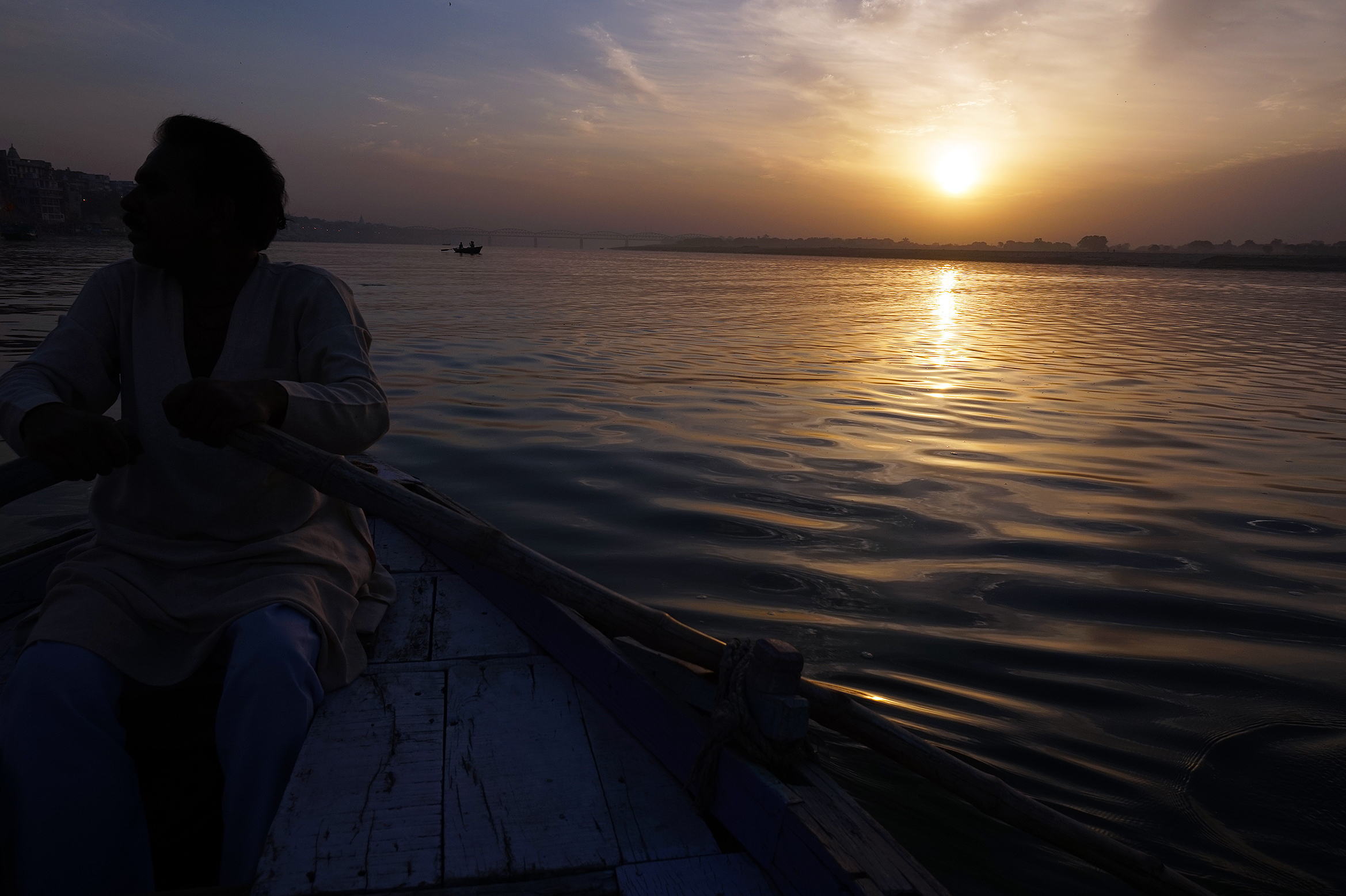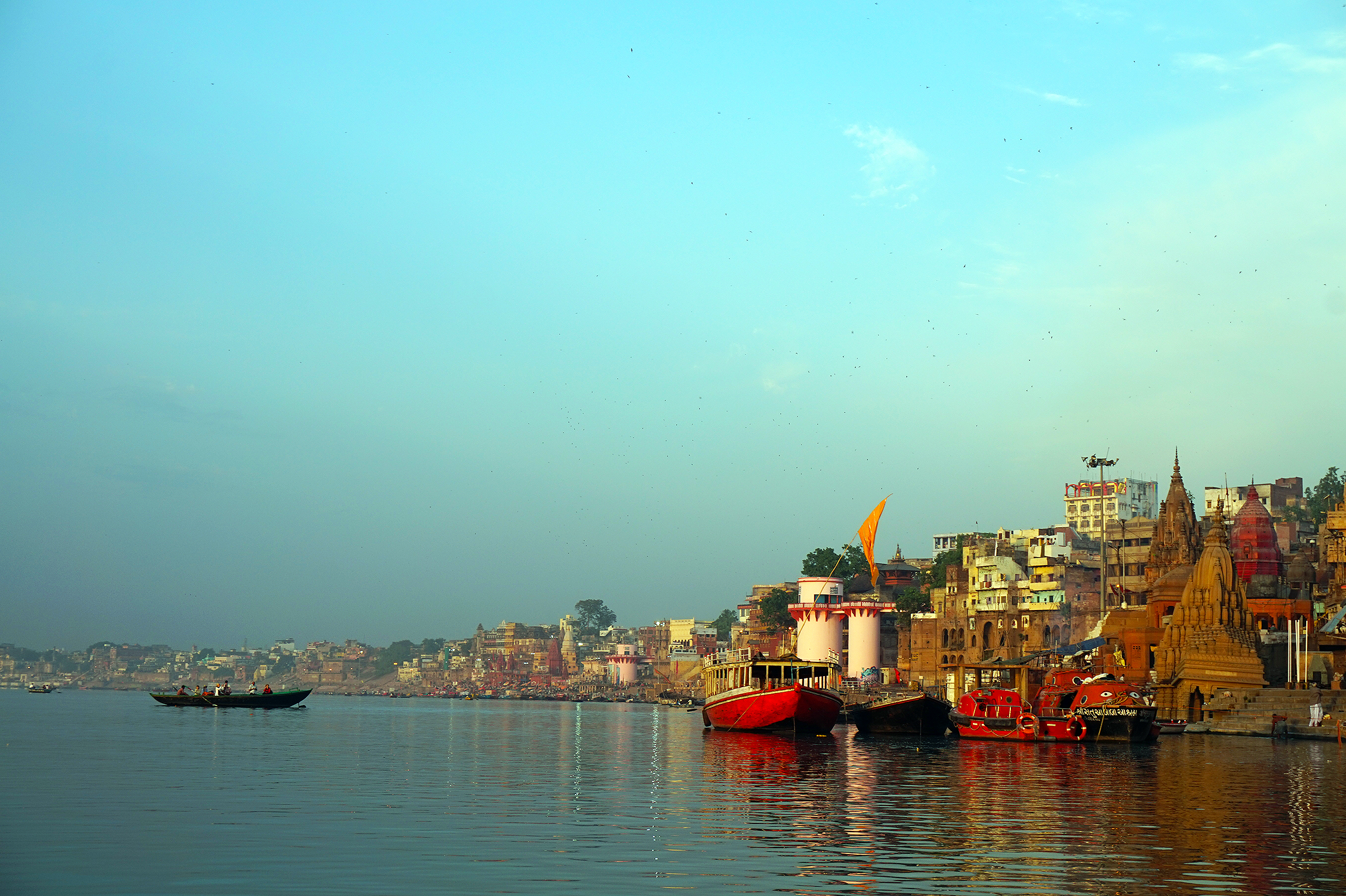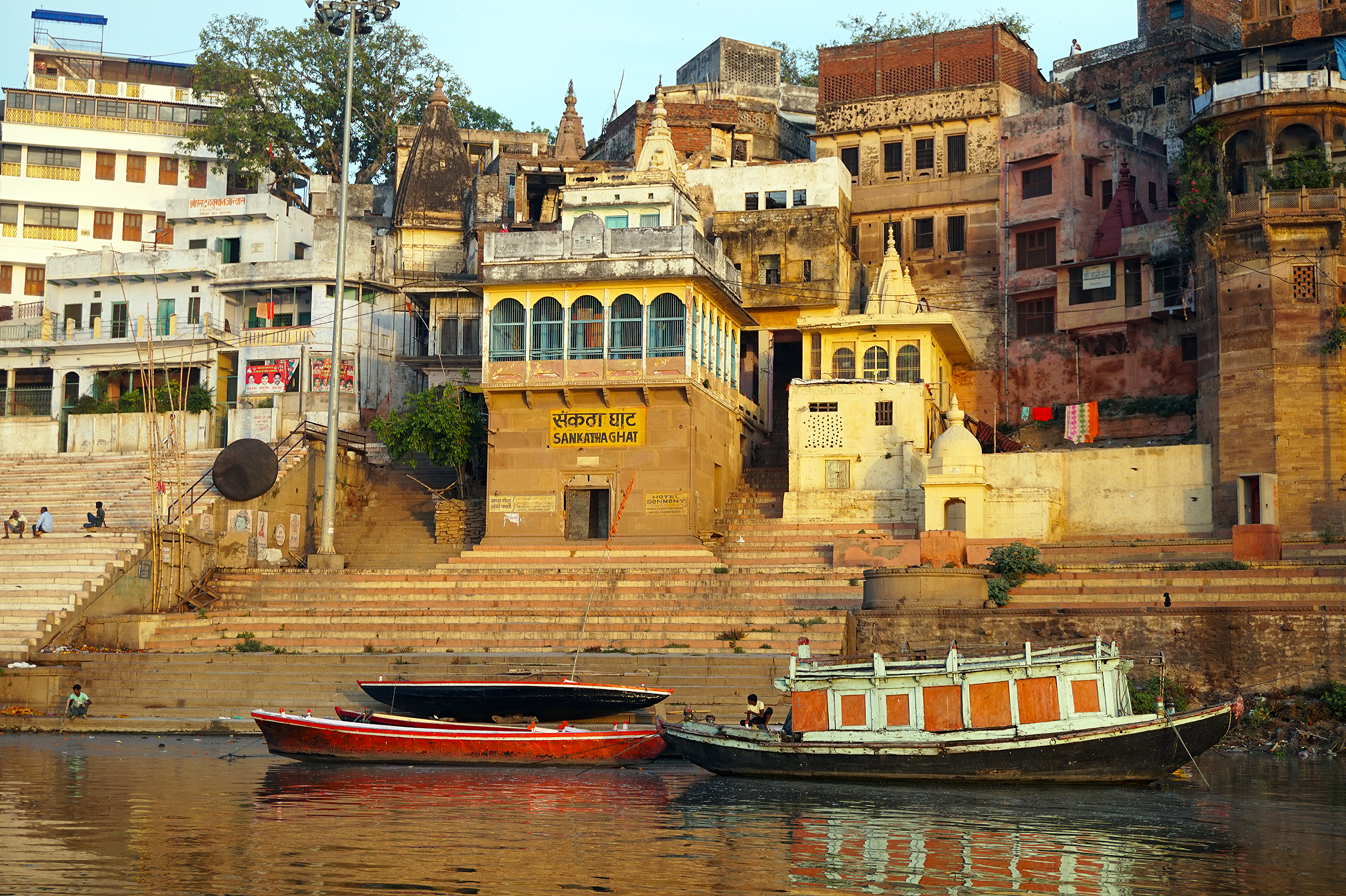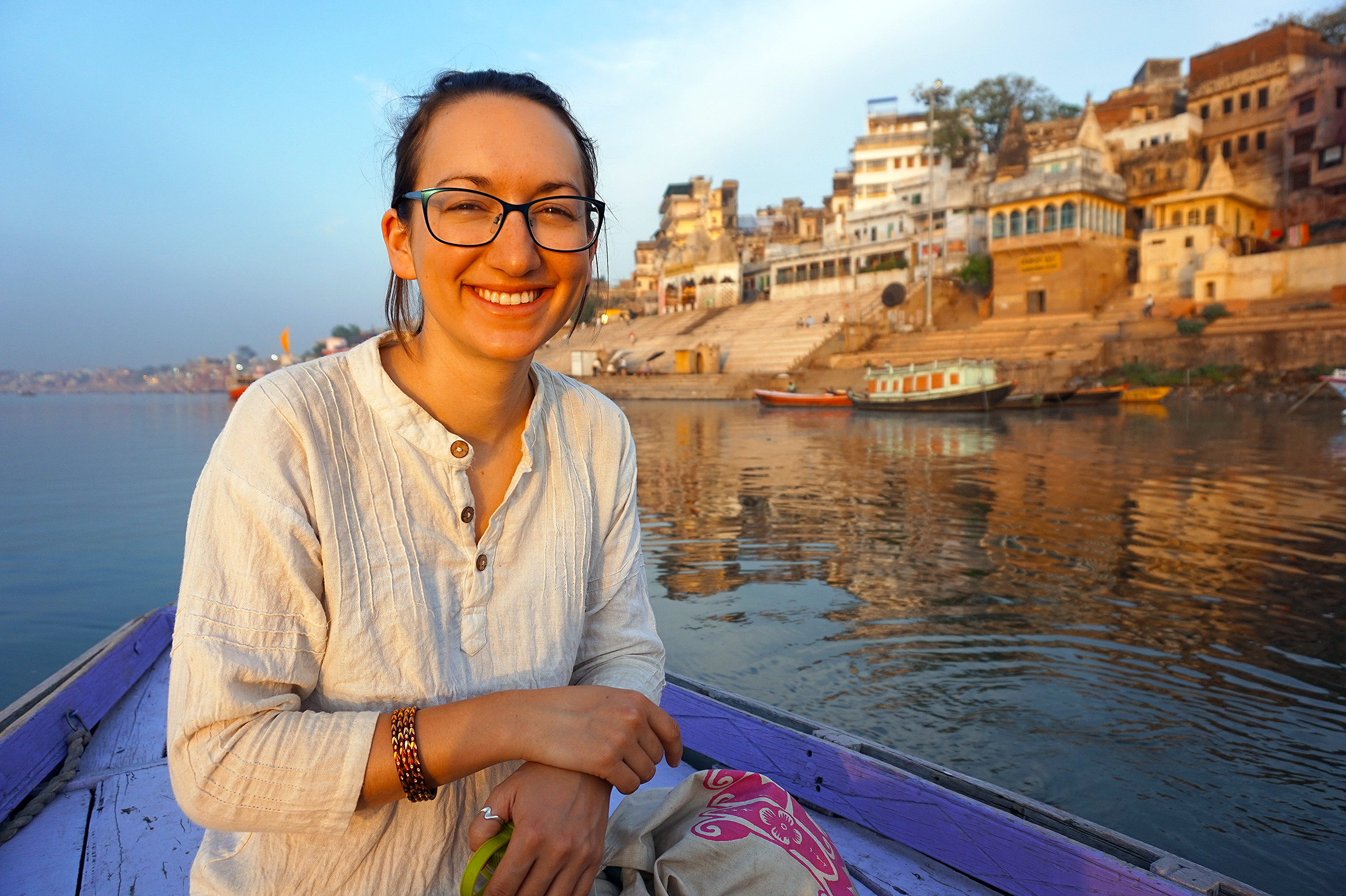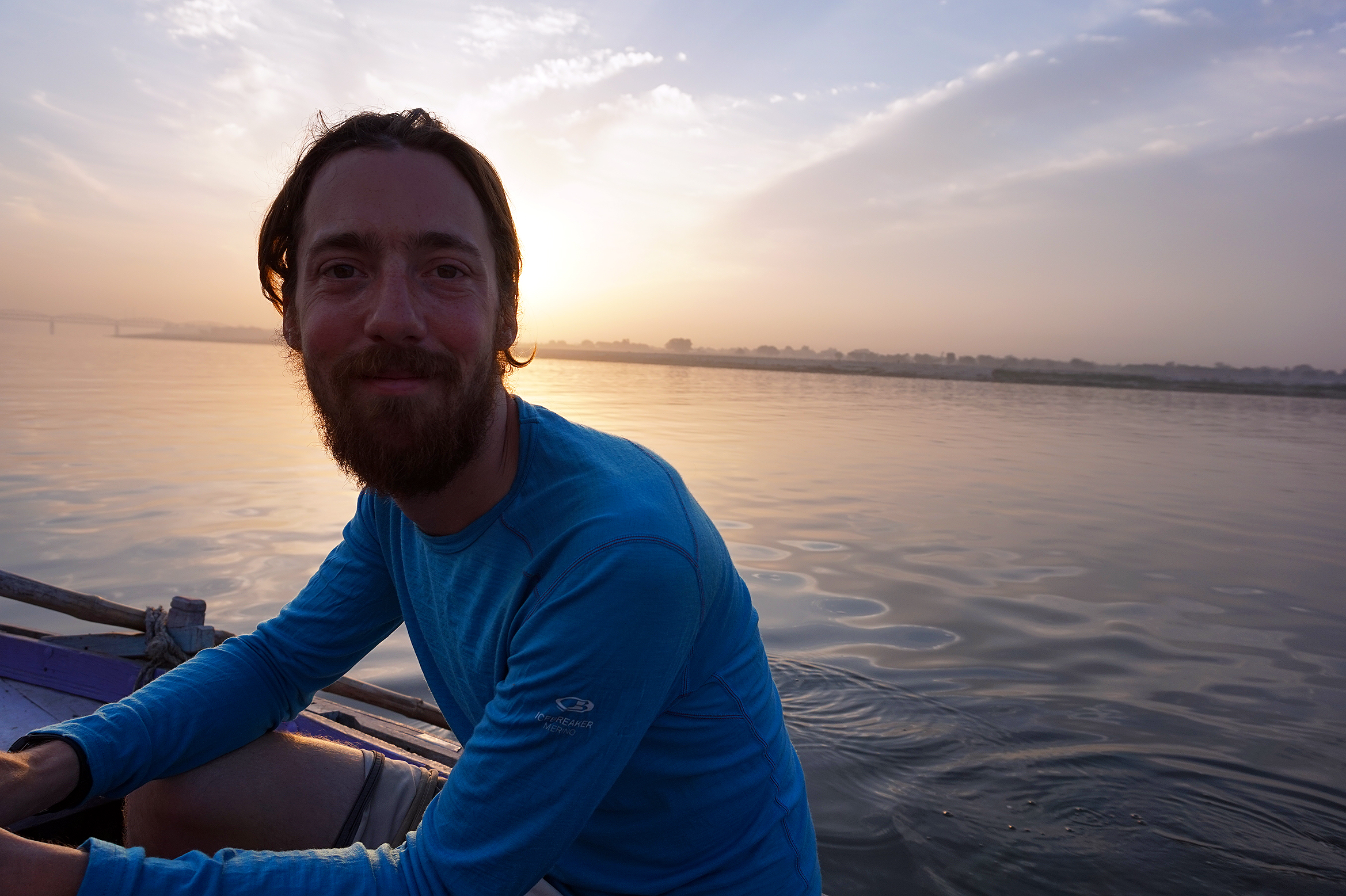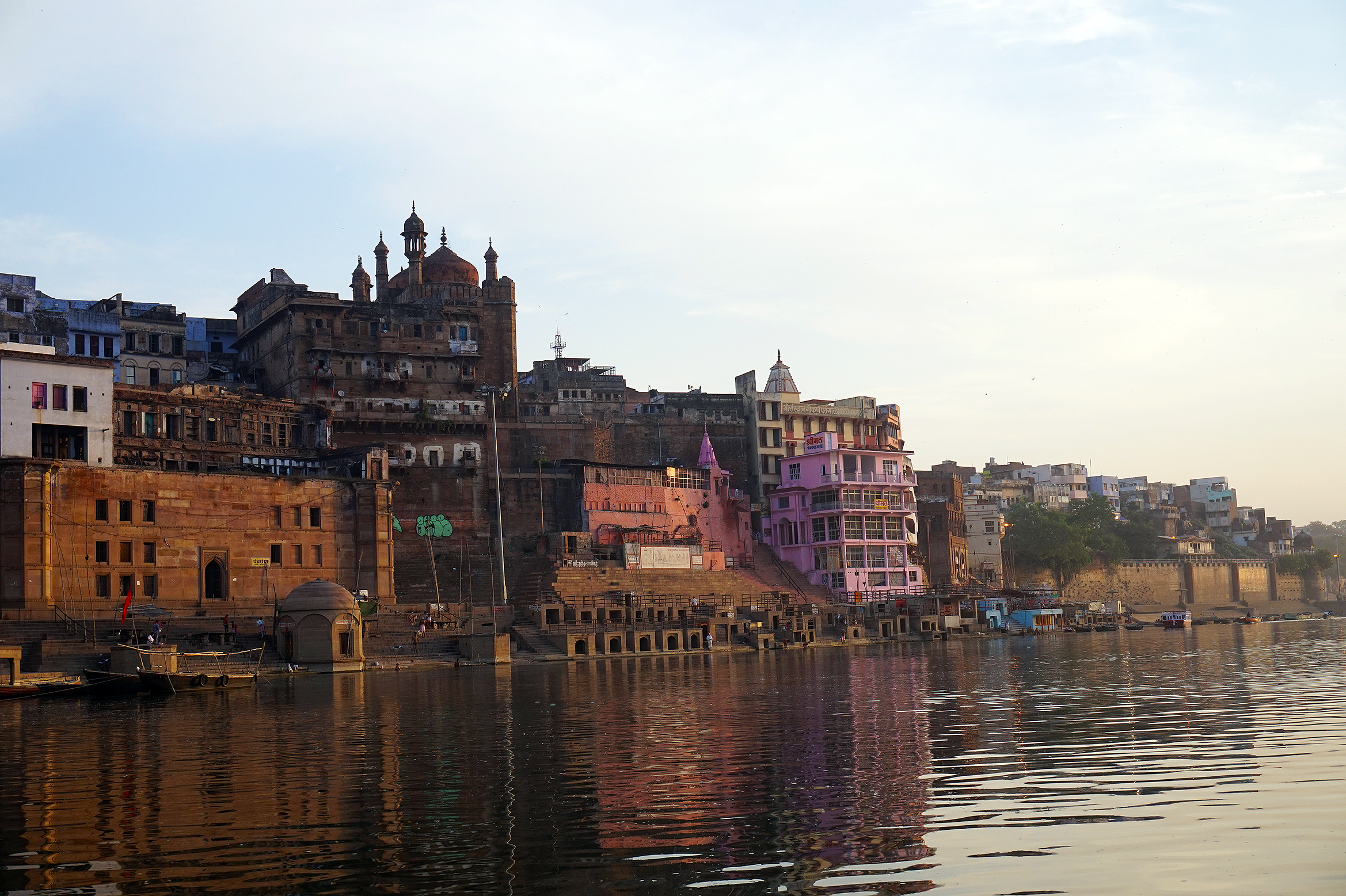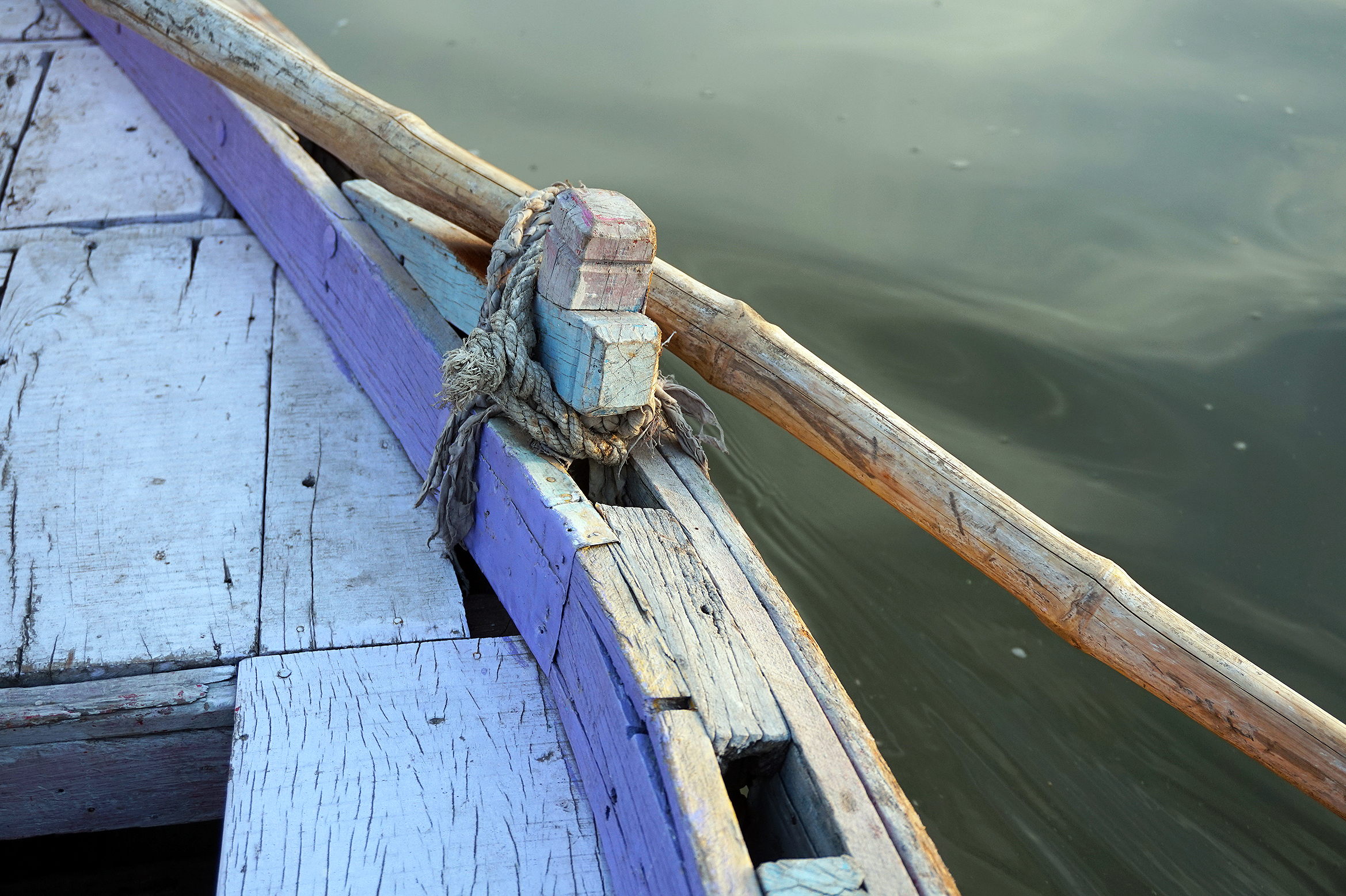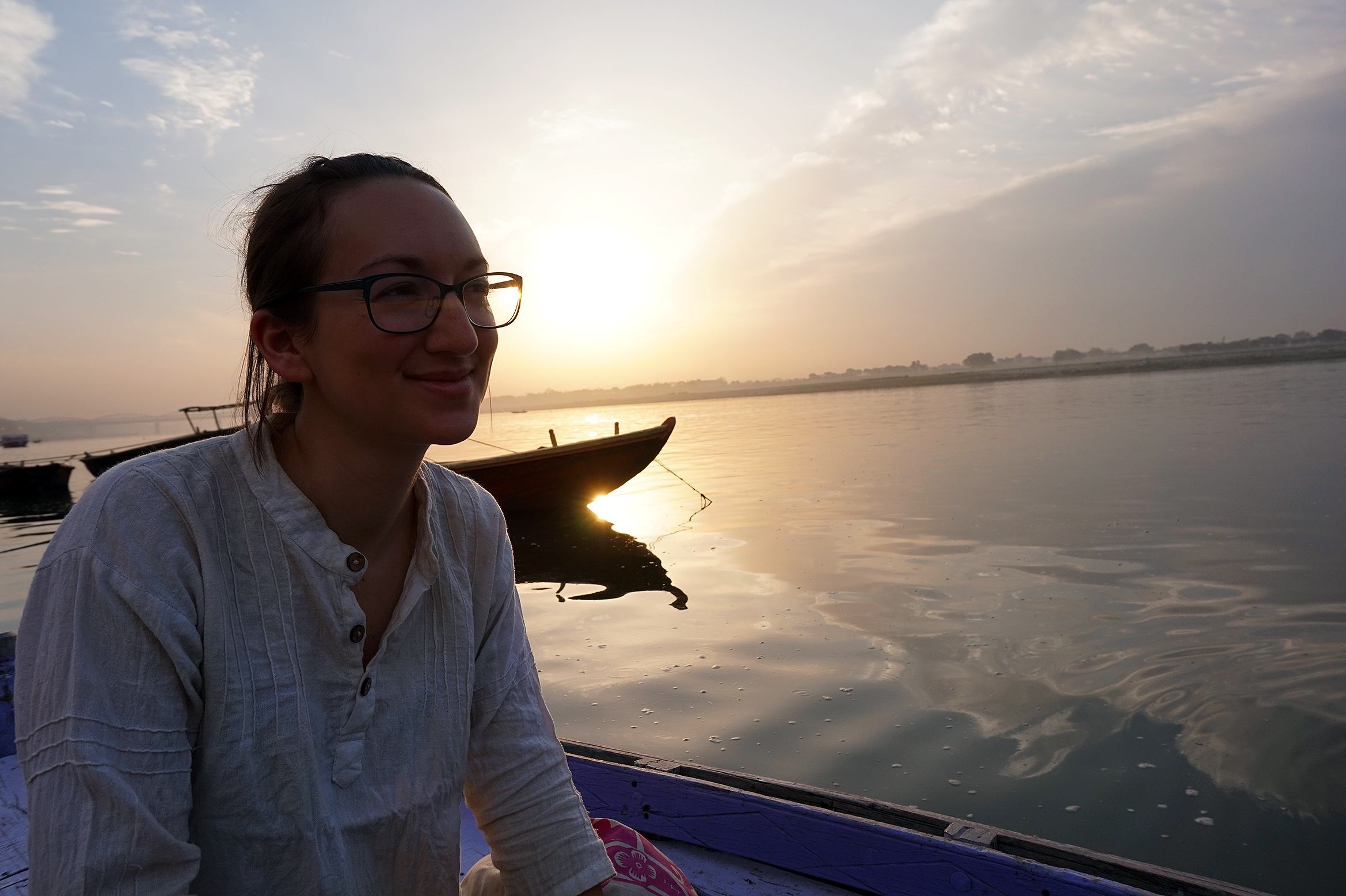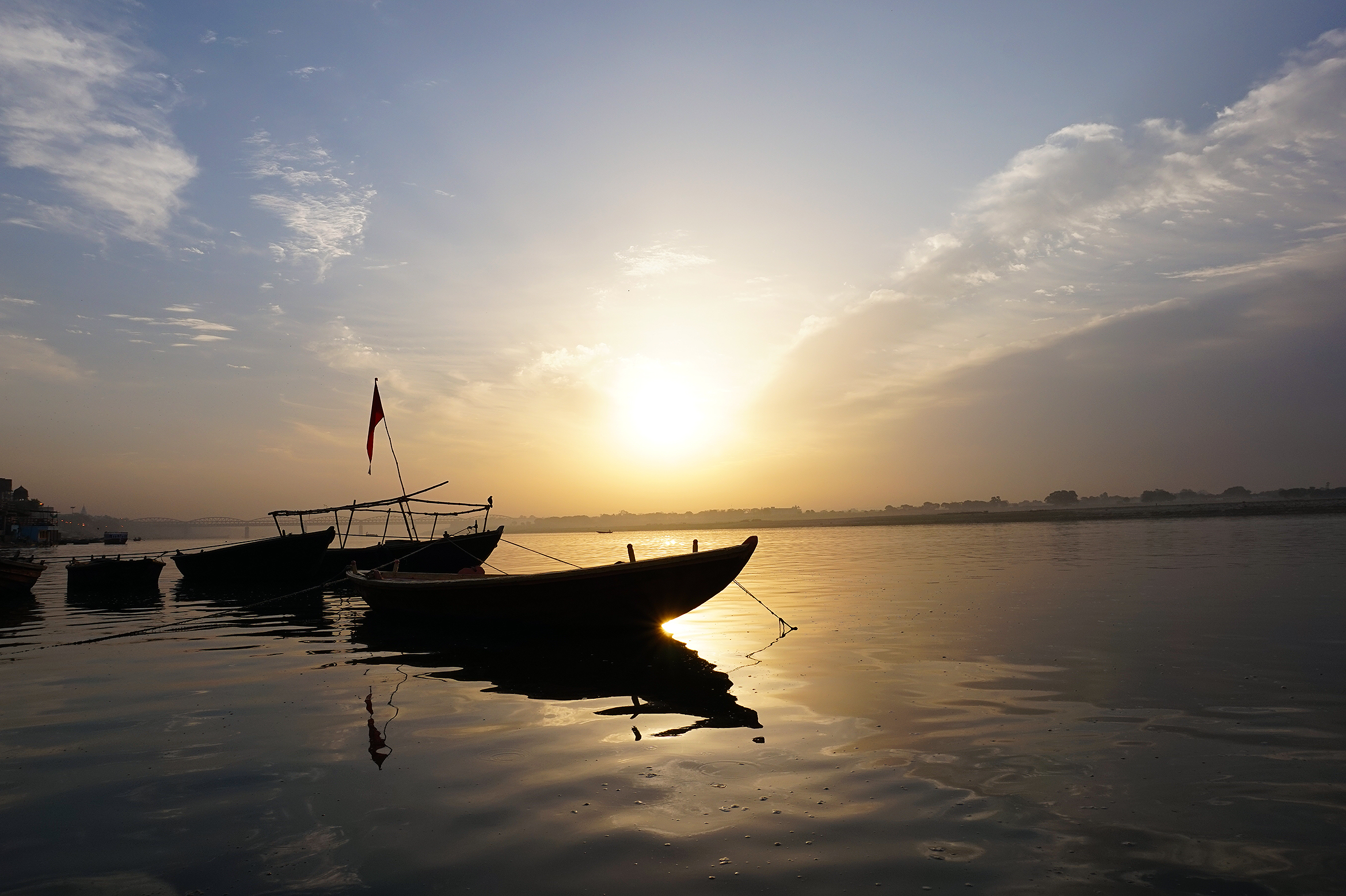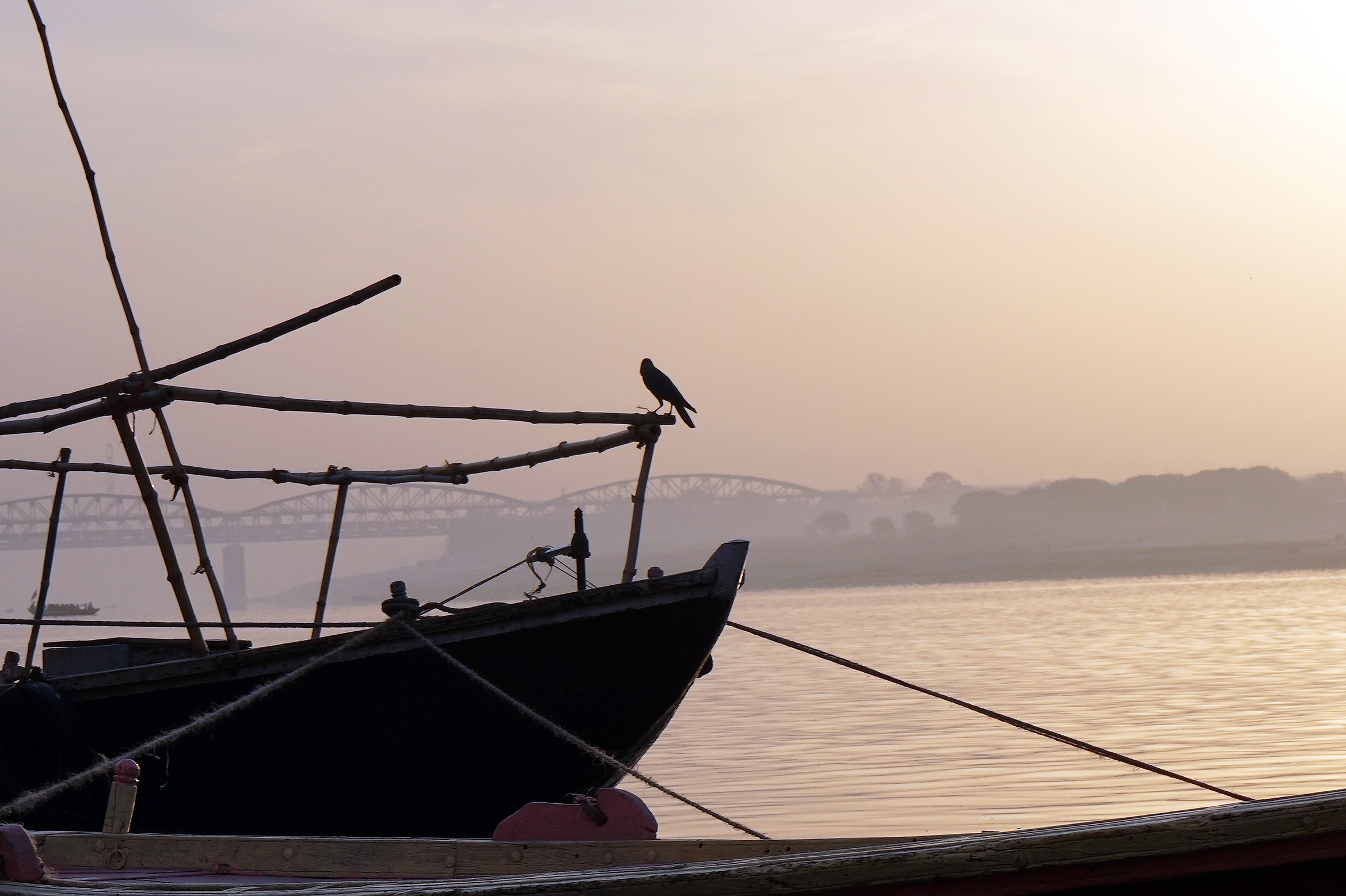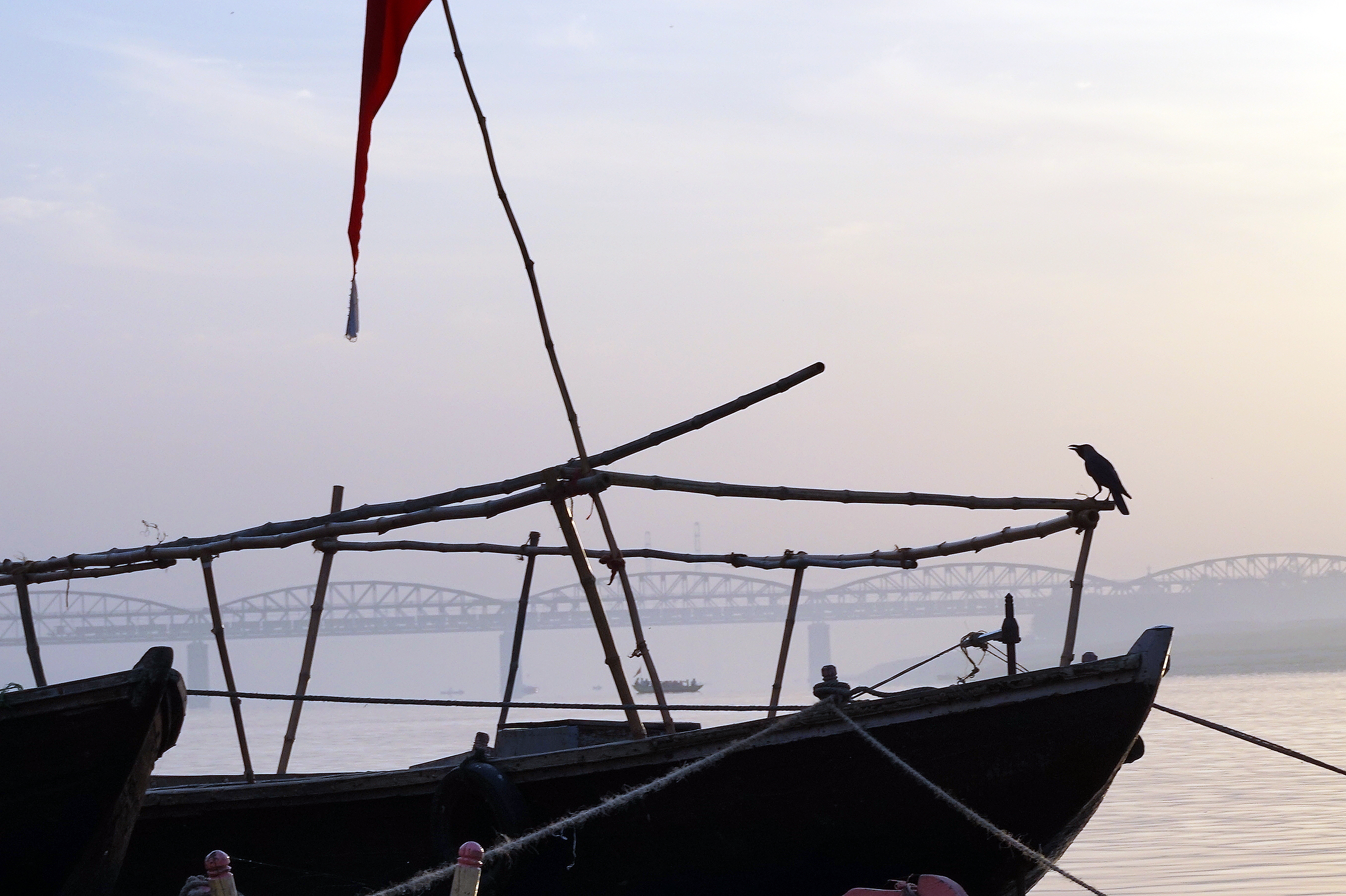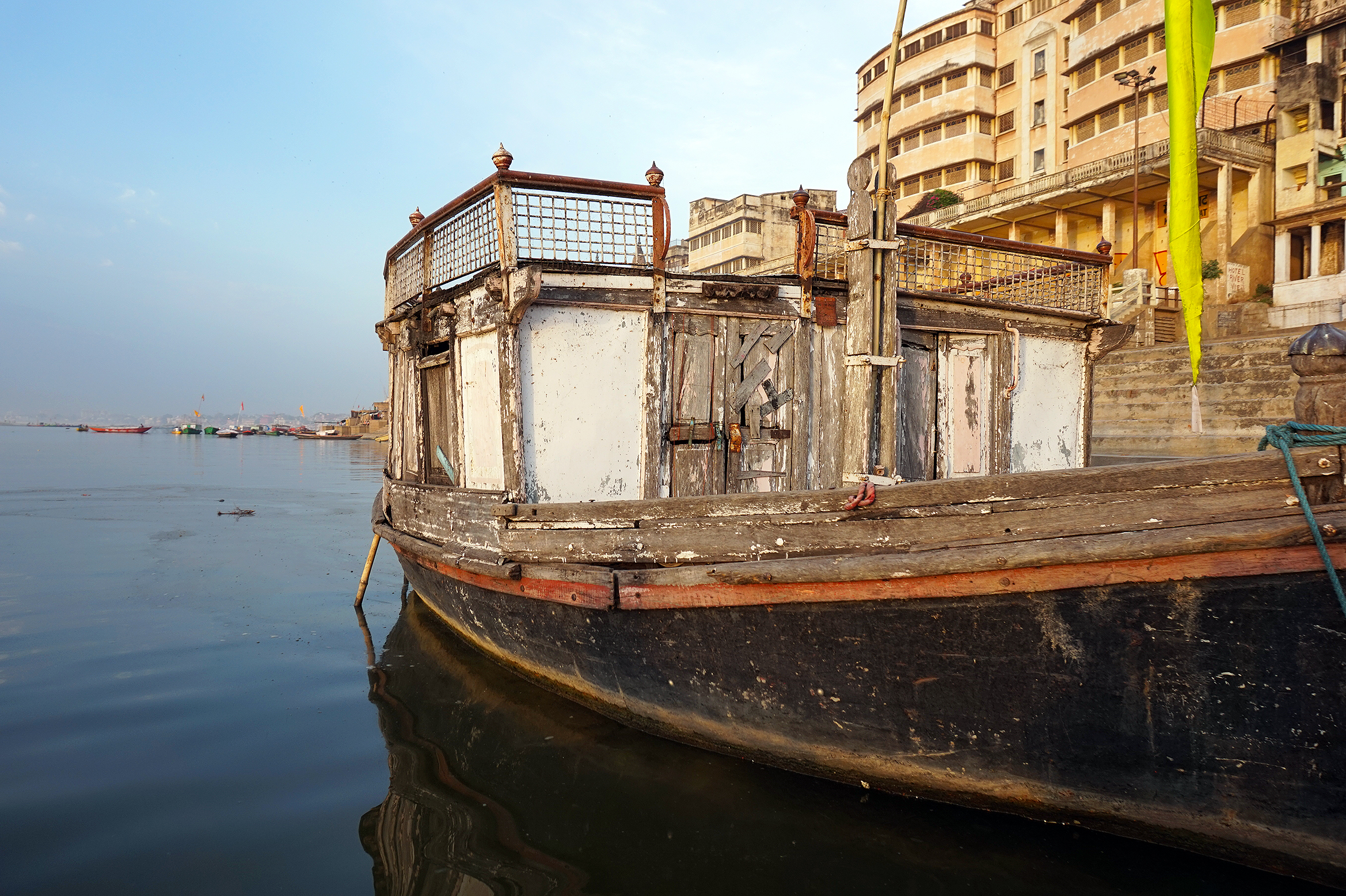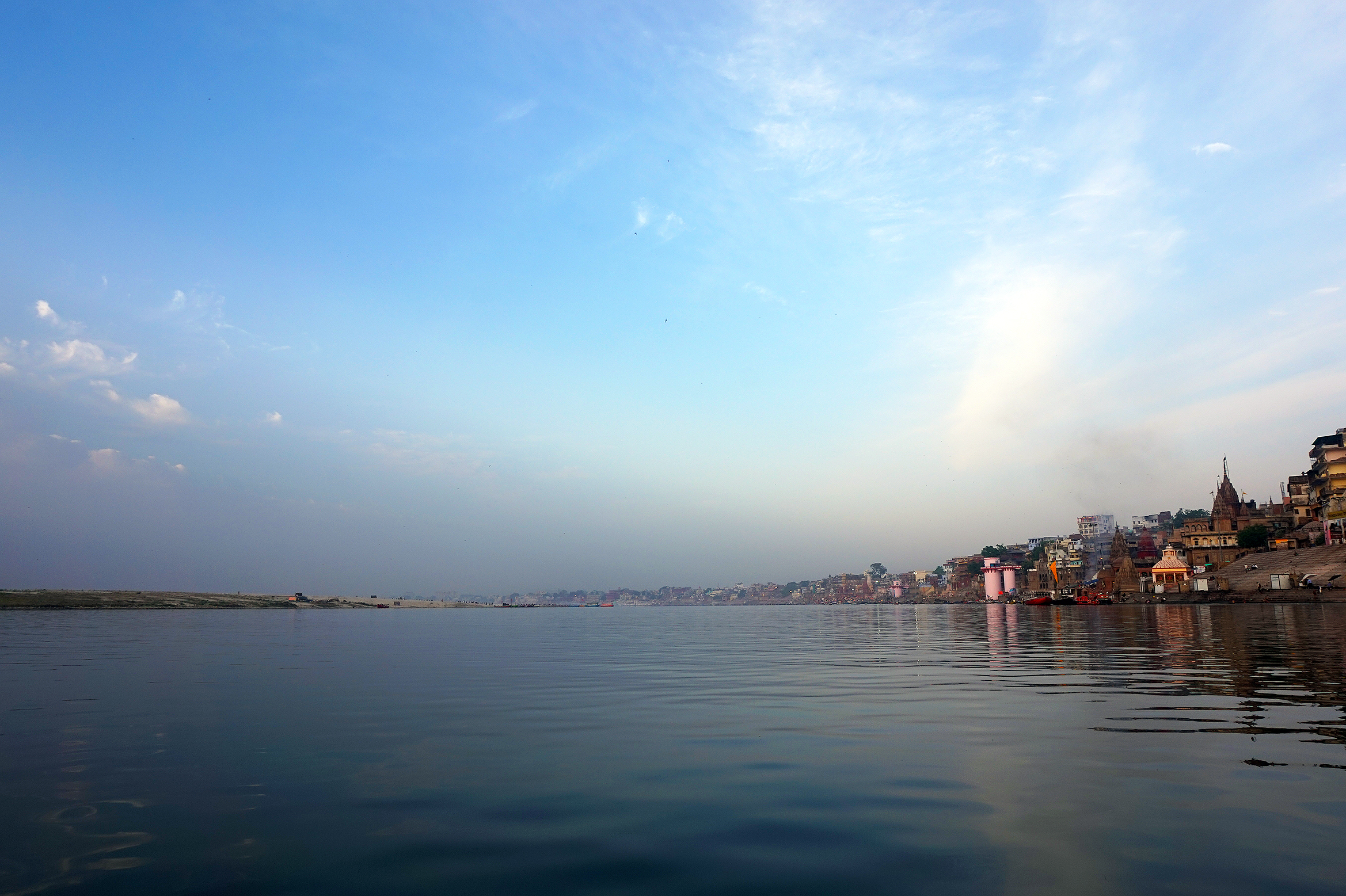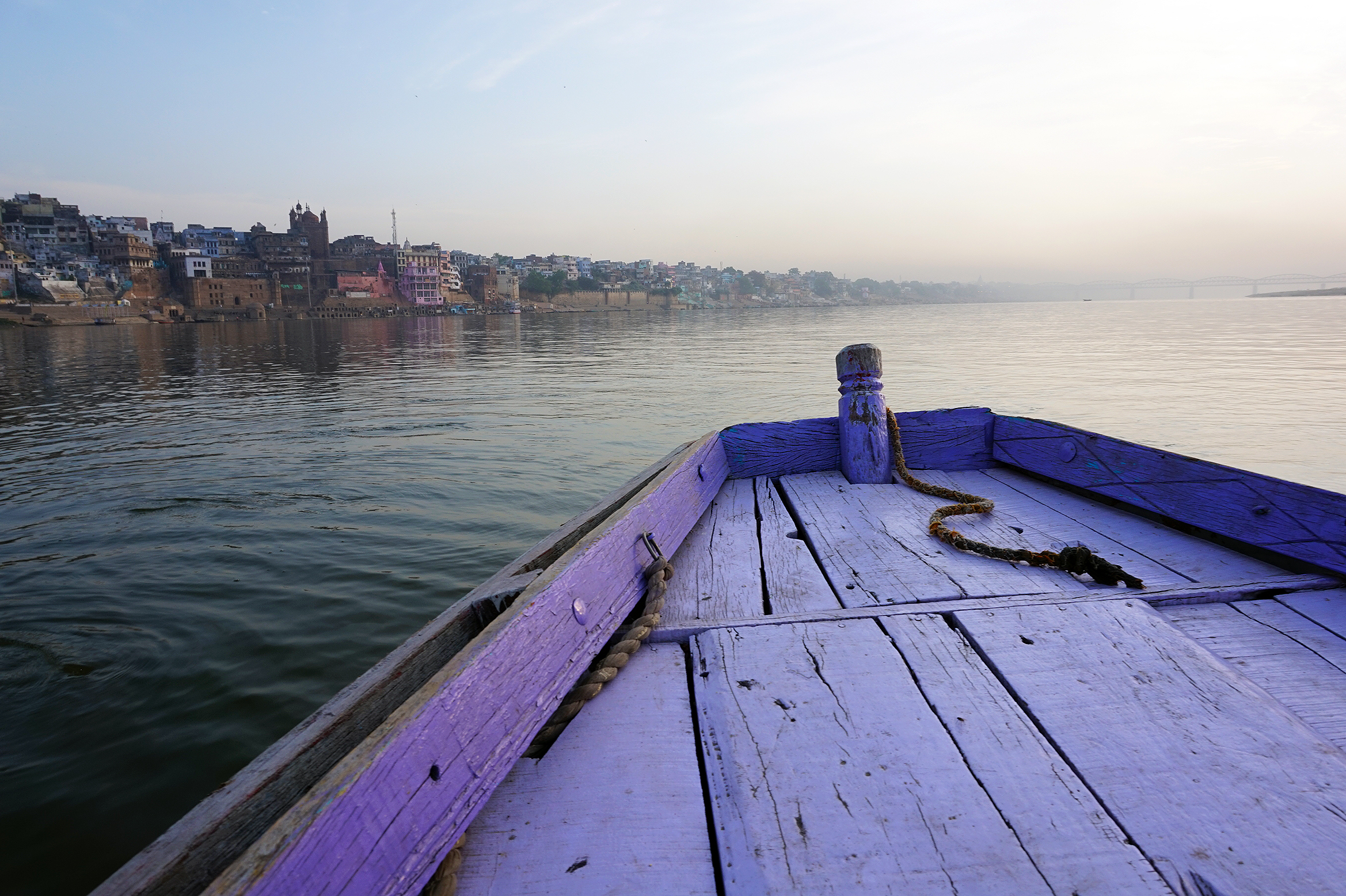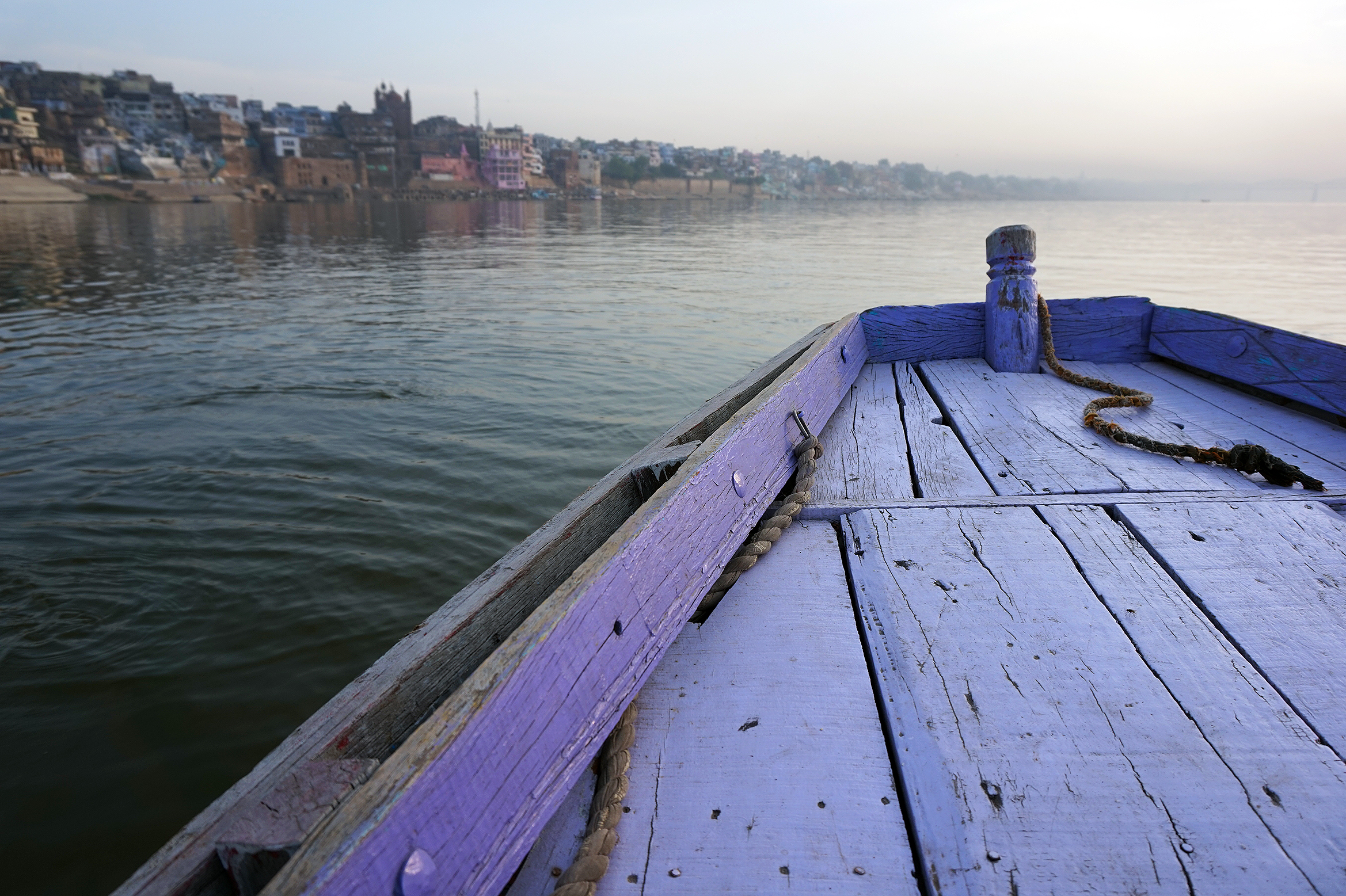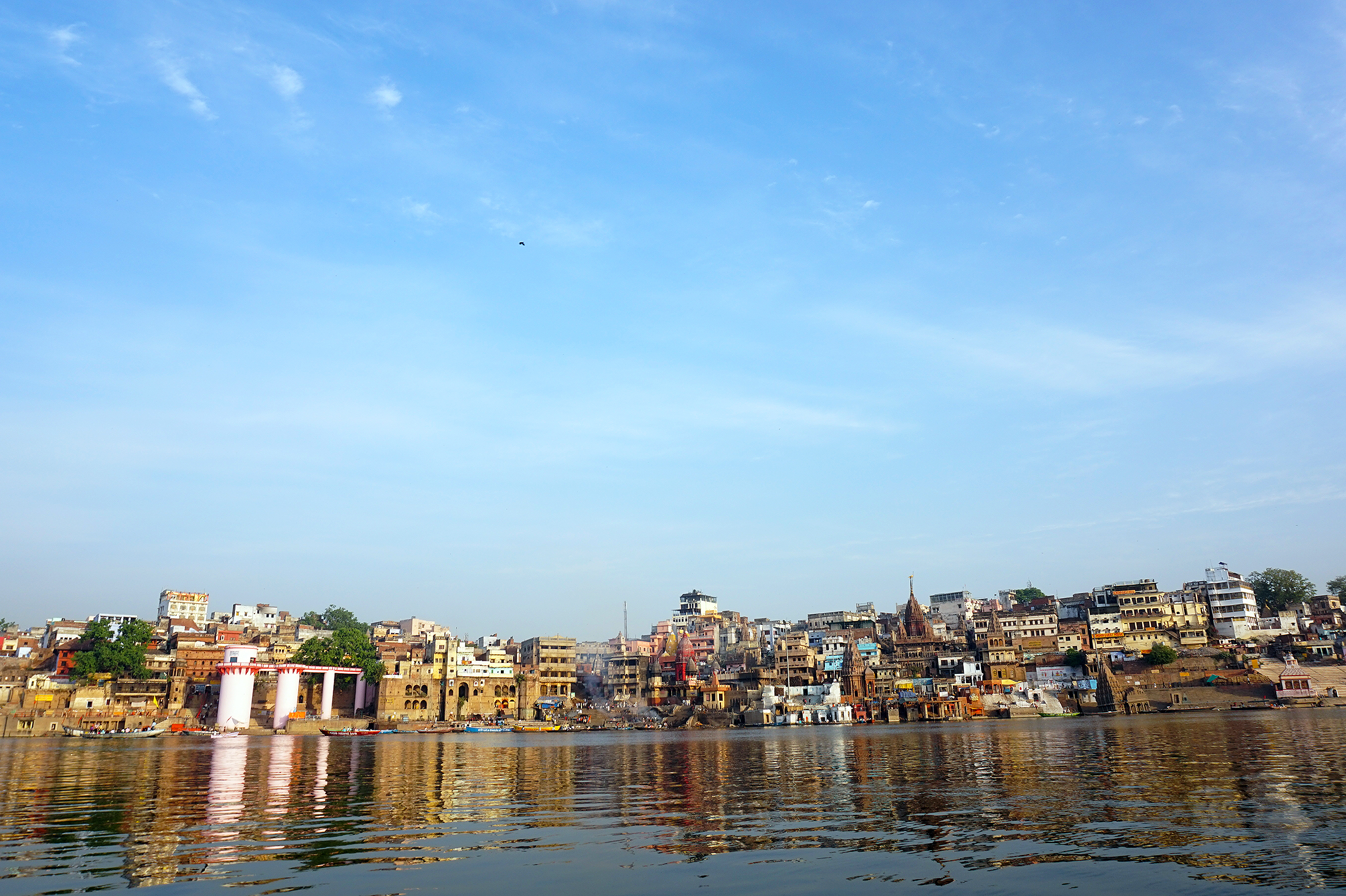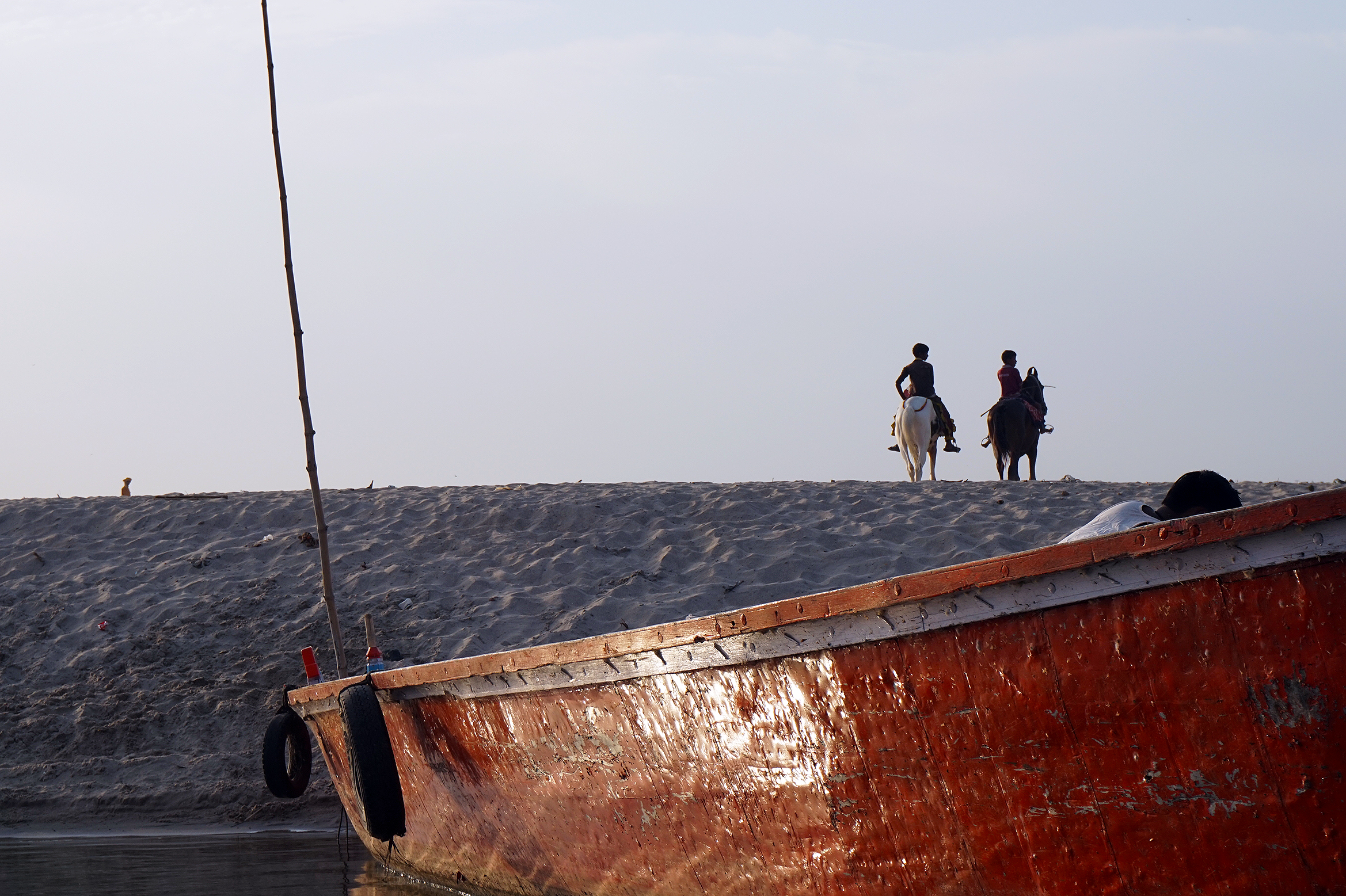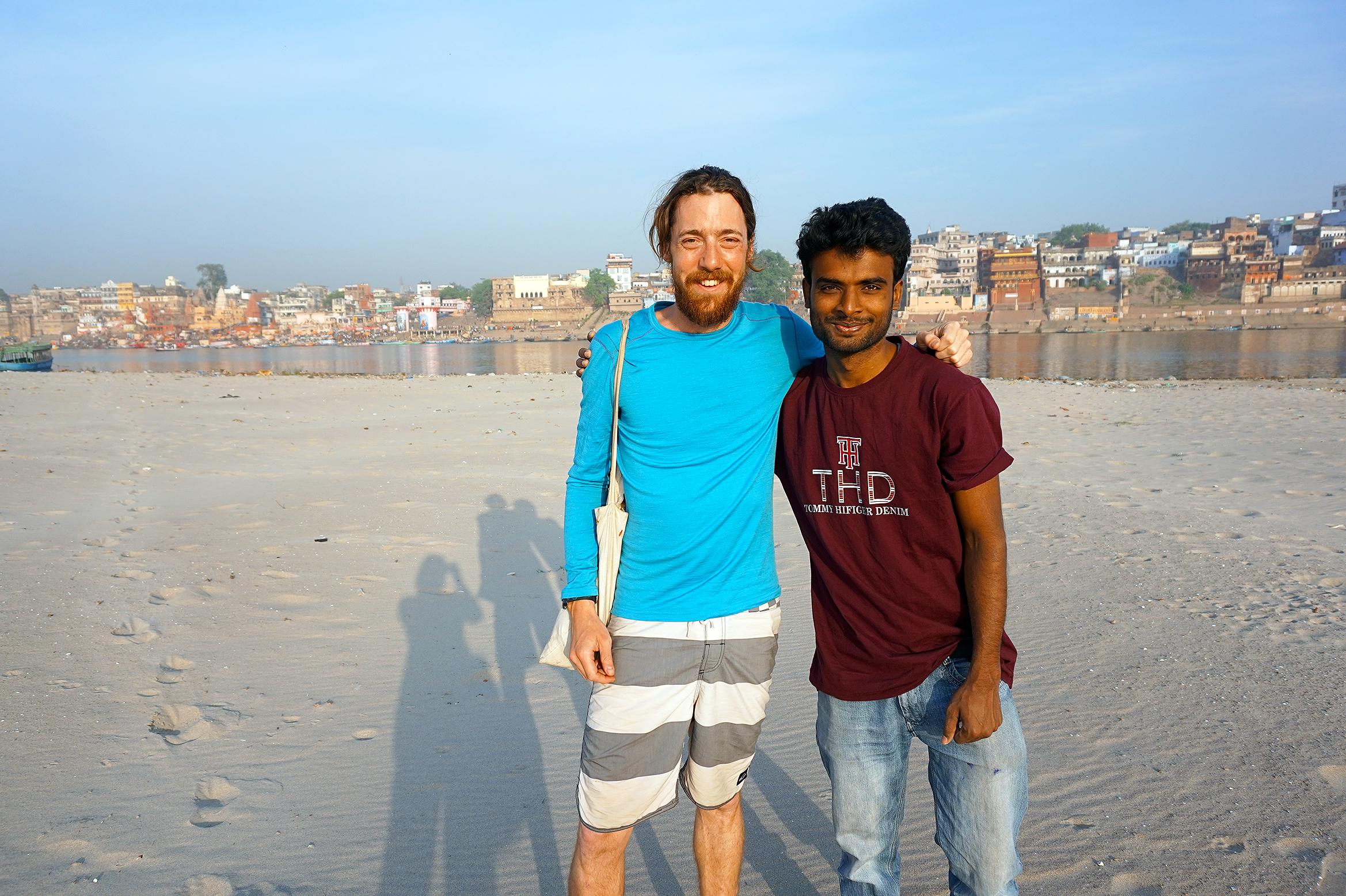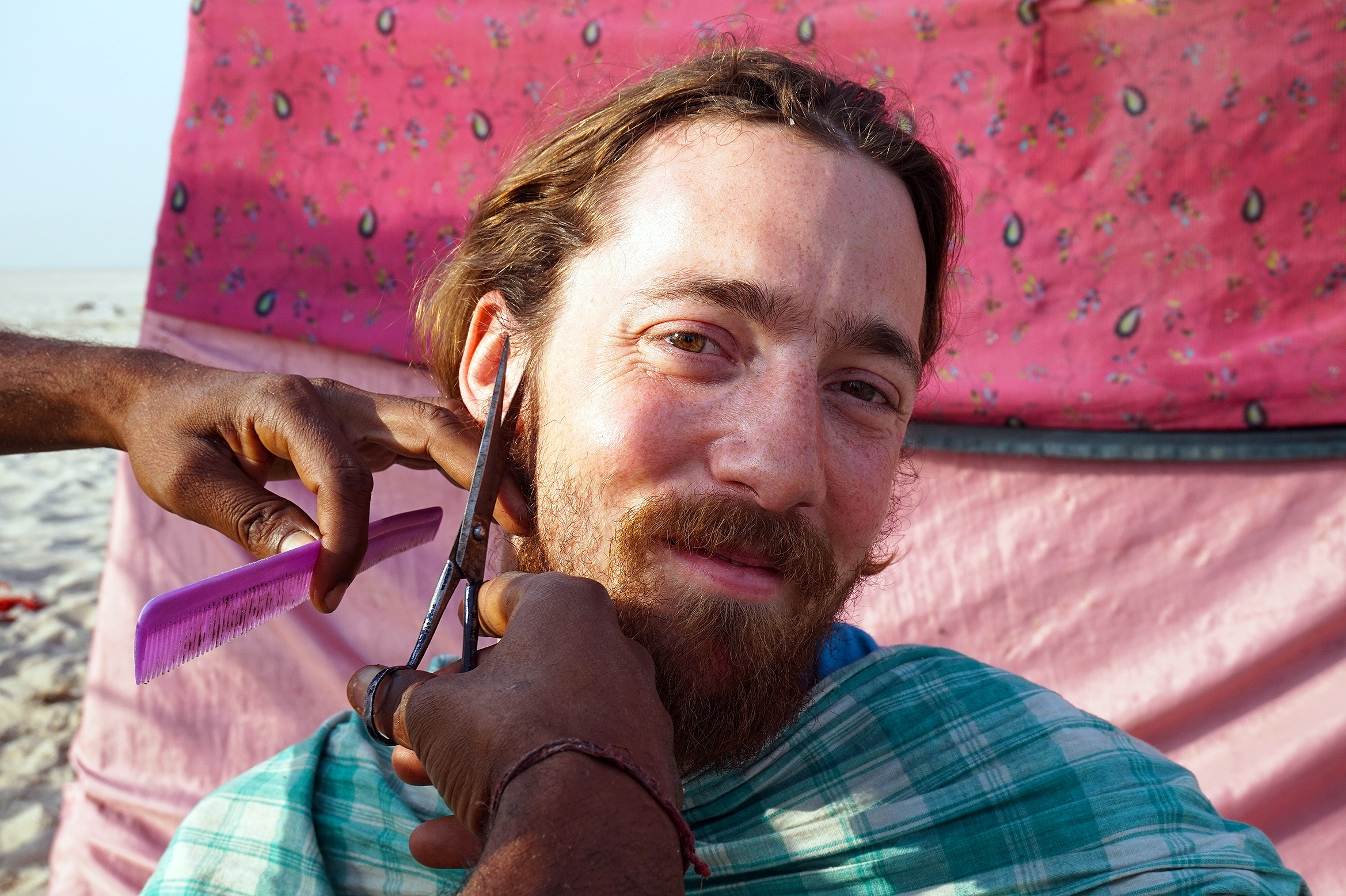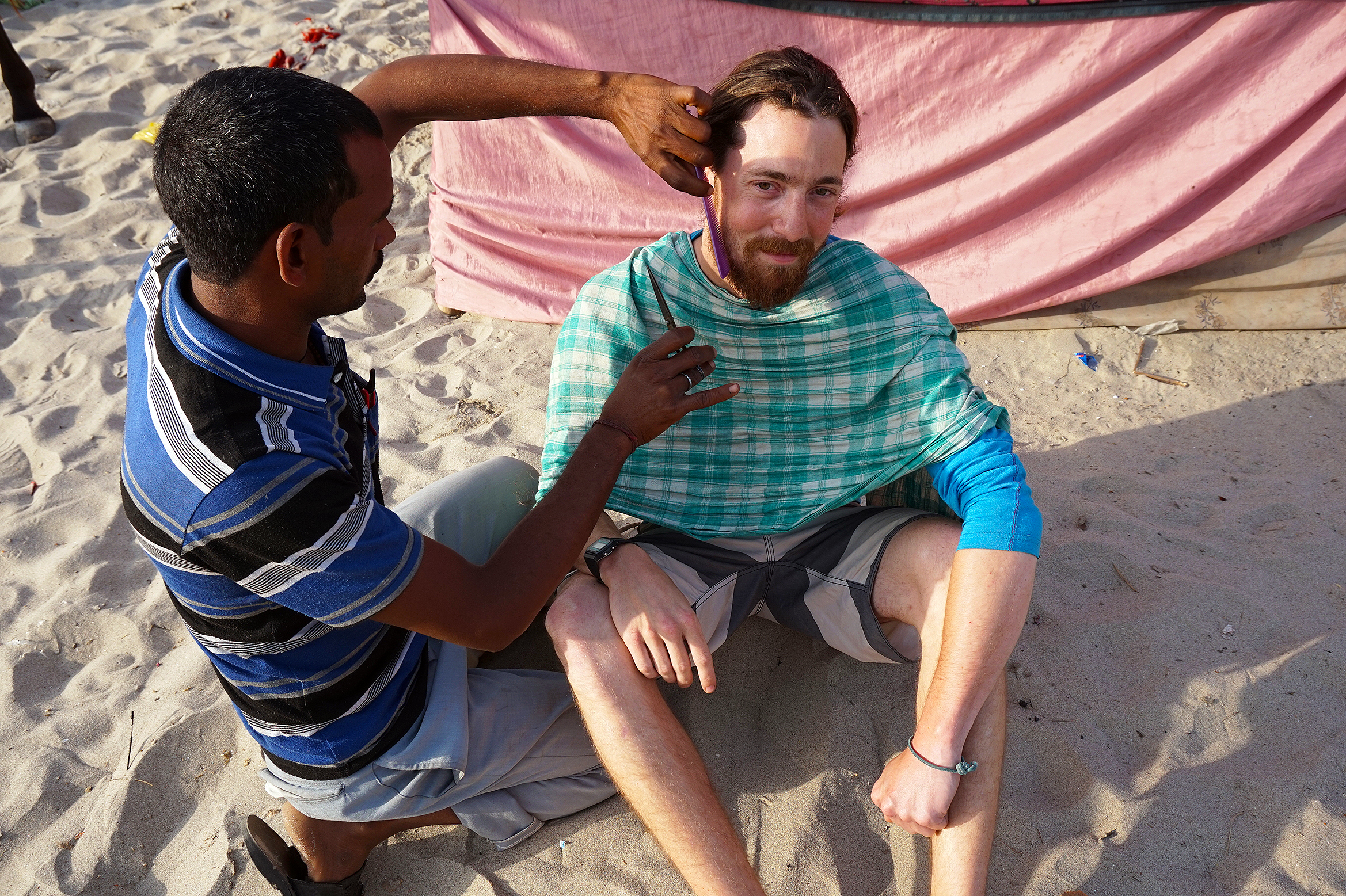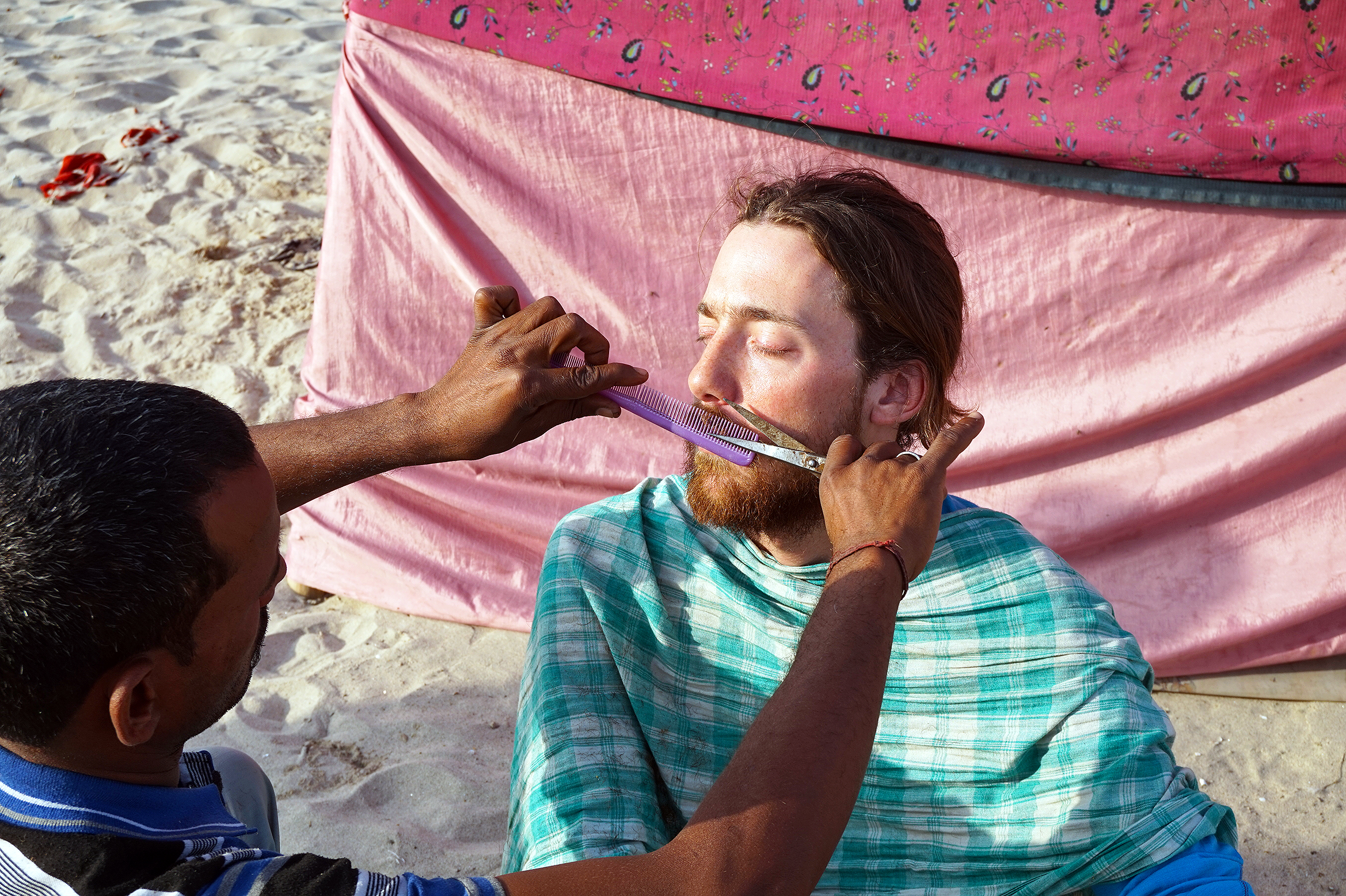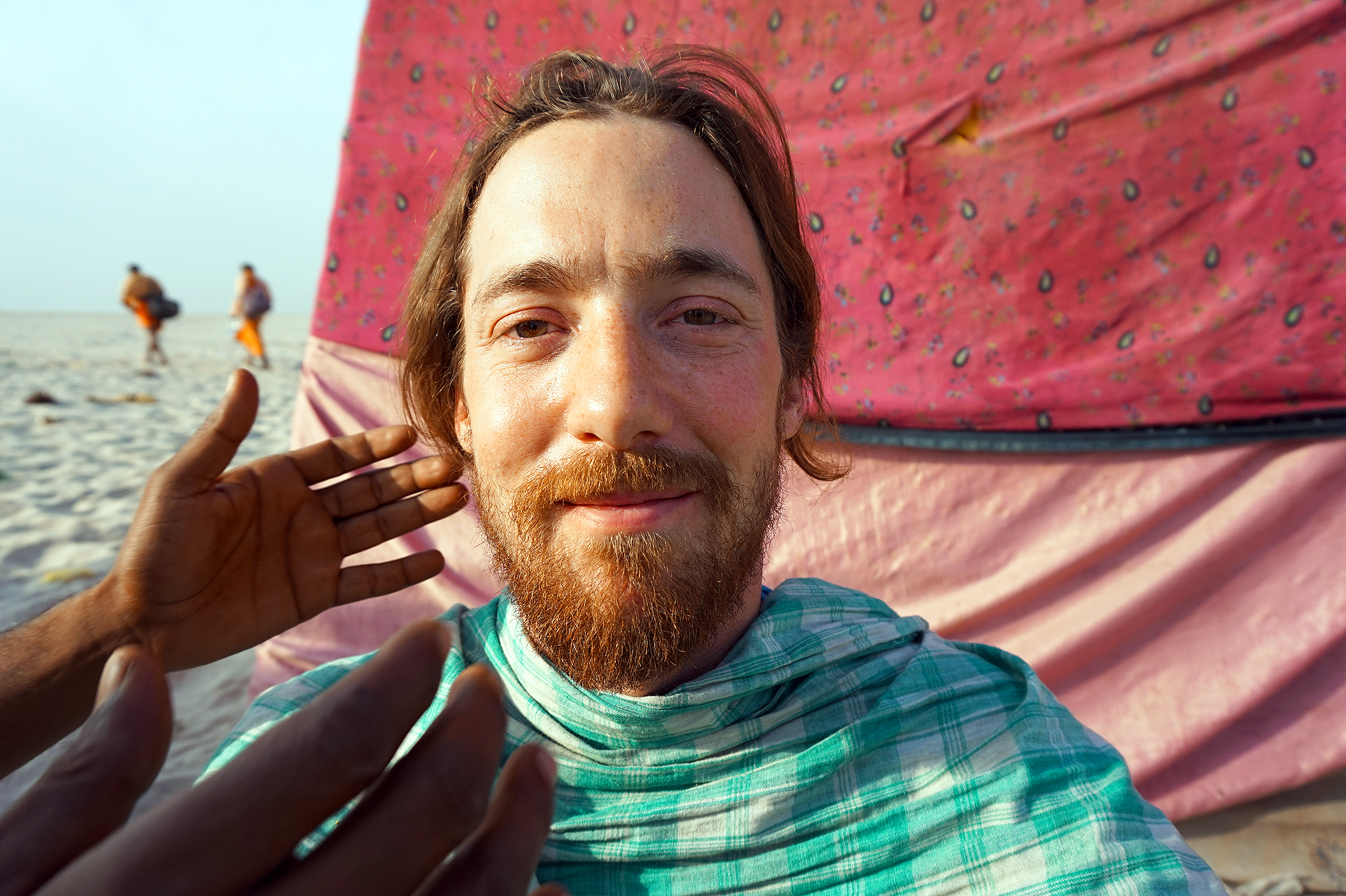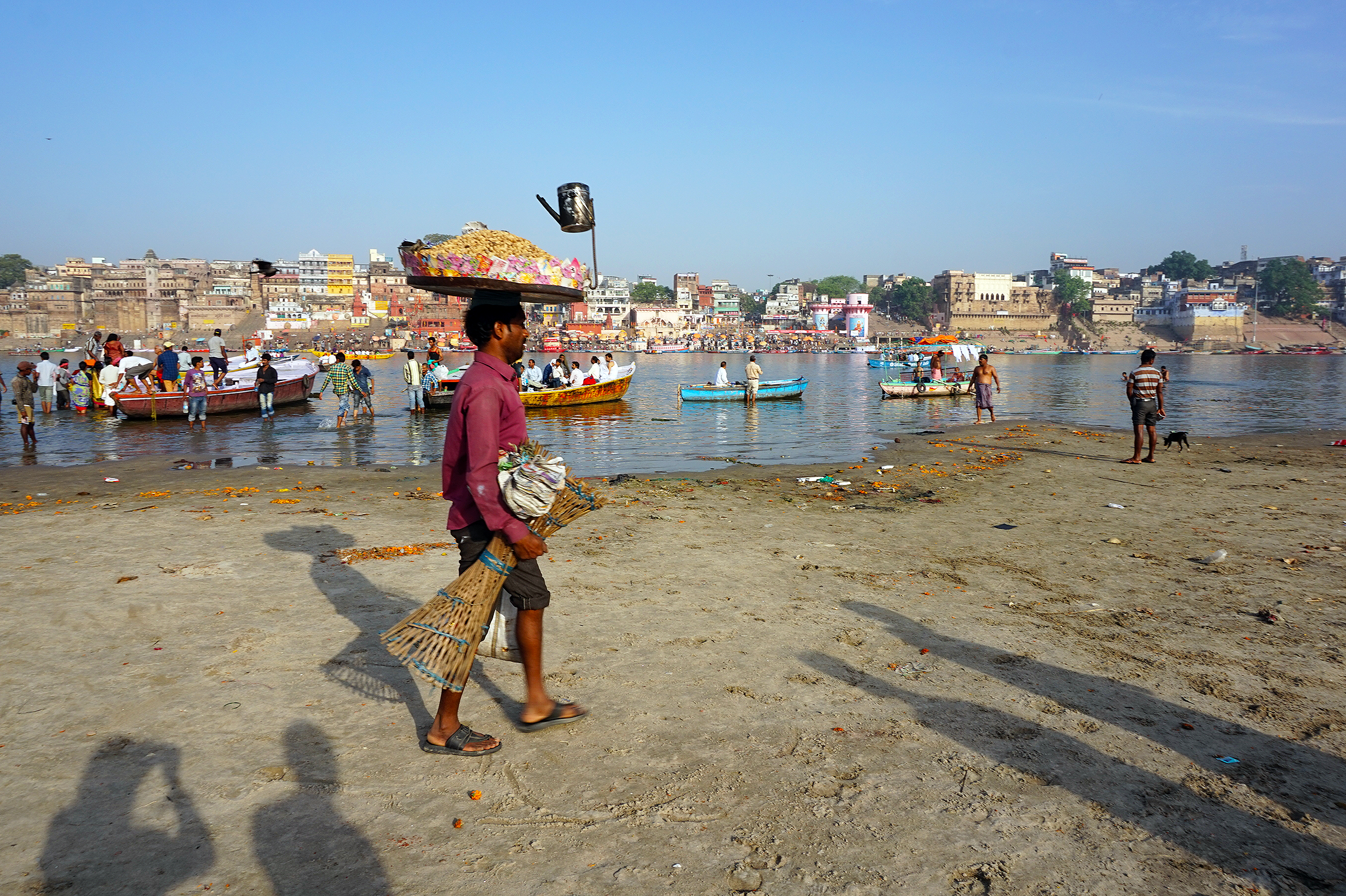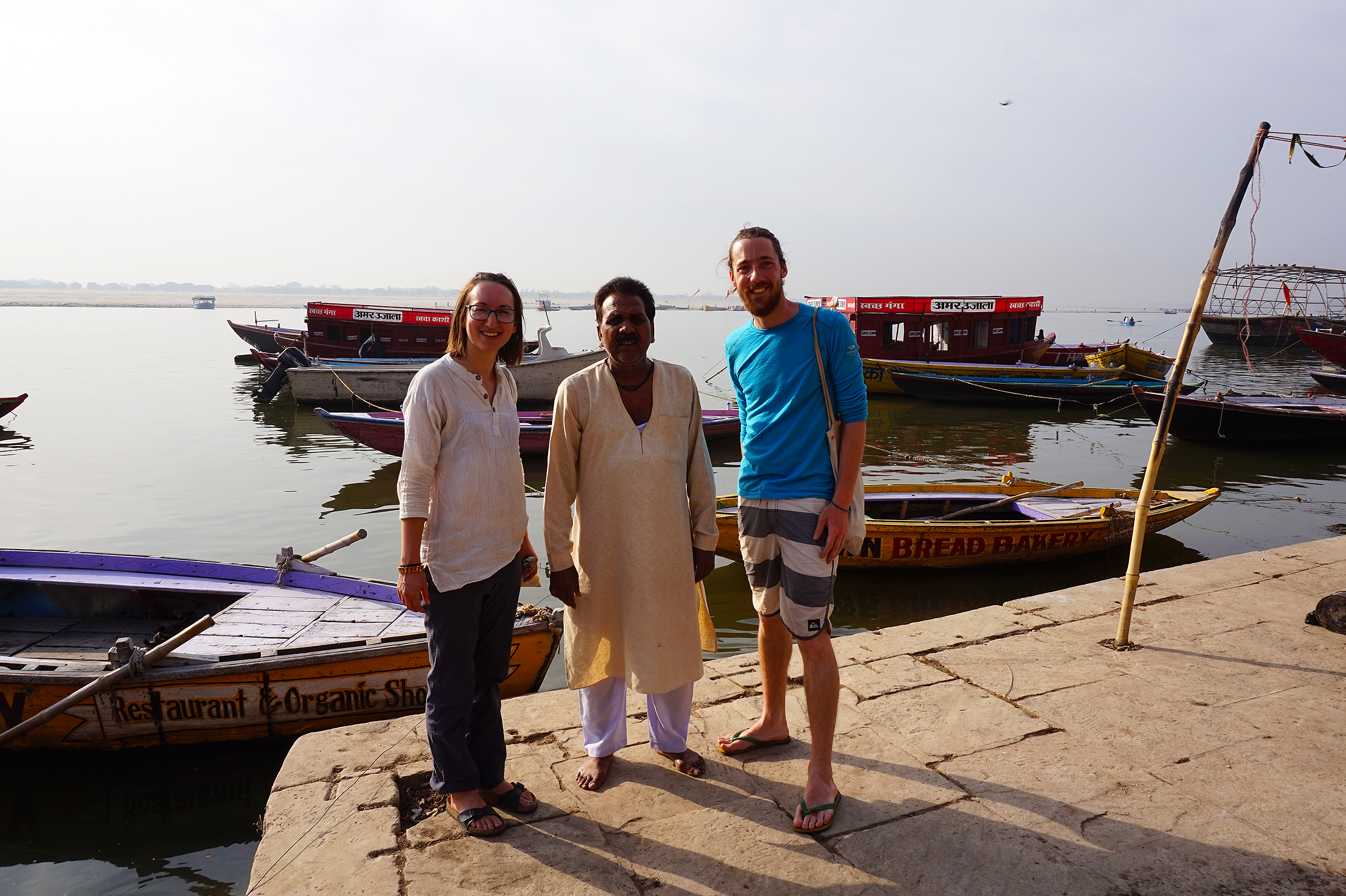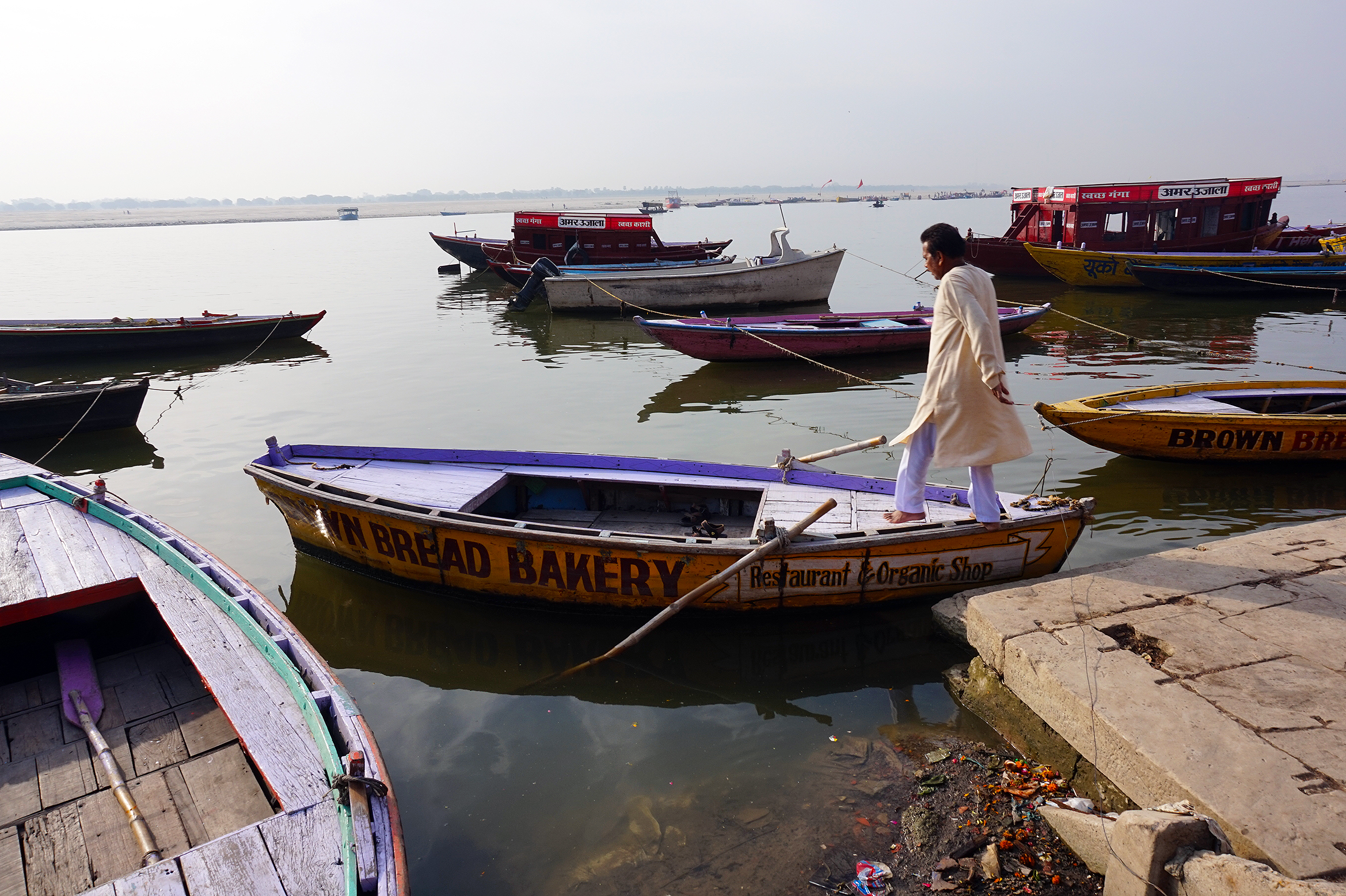THE BORDER & VARANASI
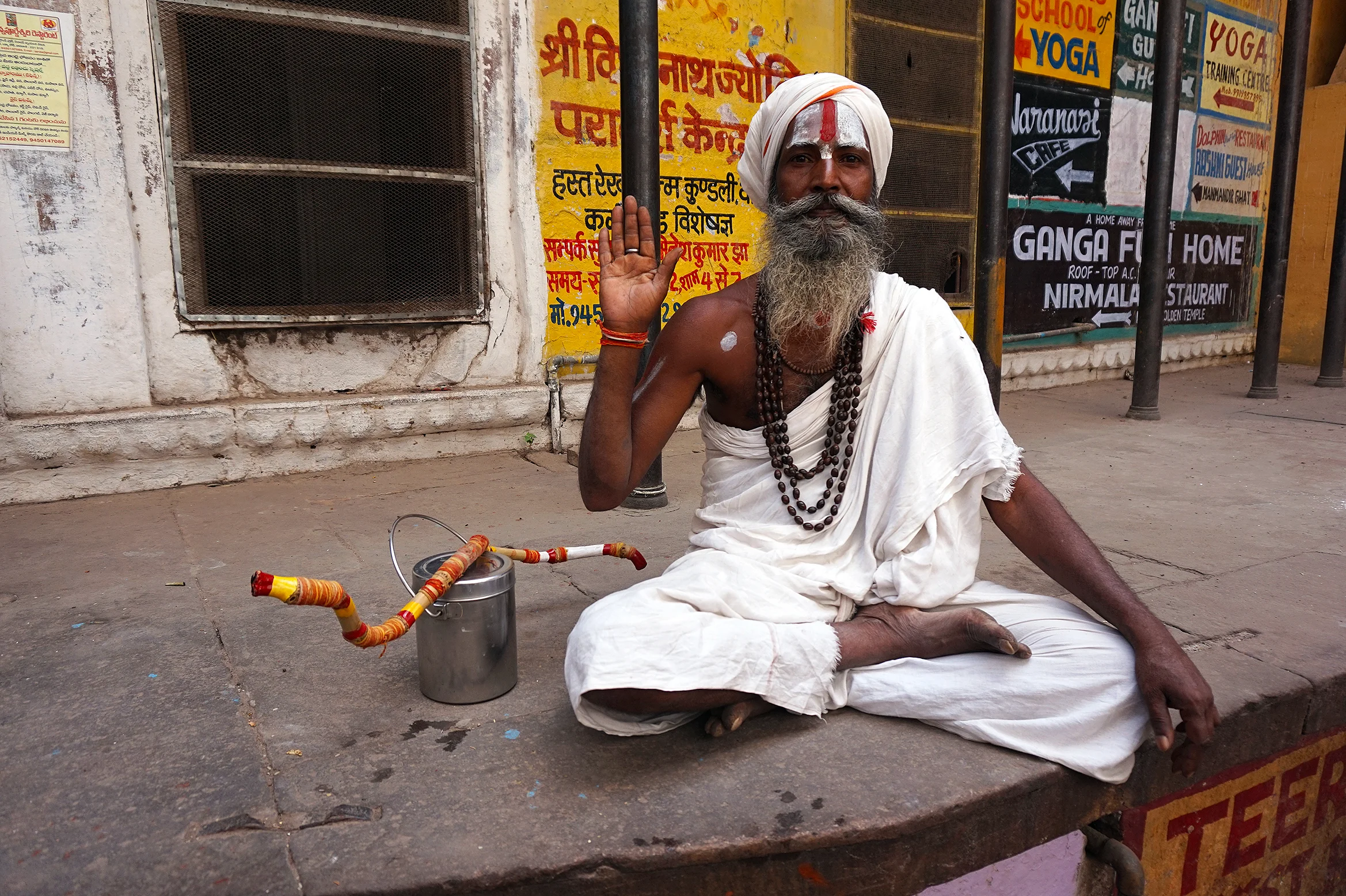
8th - 12th April 2015
We awoke in Chitwan to the chorus of chirping birds. Having spent one day more here than we'd anticipated, we were anxious to know if the bus drivers strike that had started the day before had been called off, so that we could make the India border crossing. We were in luck! A swift breakfast and we were on our way, bumping along the appalling roads of Nepal for the last time towards Sunauli. We stopped at Bhairawa, a town 4km north of Sunauli and were pounced on by rickshaw drivers, helpfully letting us know that the local bus wasn't running and we would have to go with them to reach the border (and pay 100 rupees). After quickly enquiring in the bus station, we were pointed to the local bus stop, and a minute later the local bus turned up, and we jumped on for 15 rupees! Before we knew it, we were faced with two huge arches, about 20 metres apart, marking the border. The second one was welcoming us to India. We turned back when we were in no mans land between the two, and the first was welcoming people entering Nepal. We officially signed out and said our goodbyes to Nepal, then pottered over the border and signed ourselves in to India. It was super exciting, now we felt like real travellers as we were entering our second country of the trip.
We bundled on to a bus for Gorakphur, hoping that we could get there in time to book on to the sleeper train for Varanasi. However, after an insane four hour bus journey where the driver honked his horn literally every 4-8 seconds (we counted) we made it to Gorakphur train station. Unfortunately we were informed the night train didn't have space so we would have to spend the night in a hotel and take the 6.30am train.
Words cannot describe how disgusting the hotel was we stayed in that night. The walls were covered in mould and the room was full of mosquitos. The whole town filled up every night with people making their way through to other places, and emptied at first light as people boarded their trains. The first four hotels we tried were all full, even though they too looked appalling. Me and Will rigged up our mosquito net for the first time, duct taping it to the walls to build ourselves a tent to hide in. It was actually pretty fun once we were safely inside, it felt like we were camping! I wish we'd taken a photo of the room to remind ourselves in the future of our first night in India, but in the morning we just wanted to get the hell out of there!
The train journey to Varanasi felt like luxury after the night before. We slowly made our way through the countryside, spotting groups of kids playing cricket in fields, car parks, roofs, alleyways pretty much anywhere they can put two sets of stumps. We arrived into Varanasi at 2.30pm and caught a rickshaw to our hostel 'Zostel'. The room was lovely and the shower was hot. Faith in India restored.
We headed out into the heat, down the main road to Dashashwamedh Ghat. Everyone walked in the road, and we had to navigate our way through the traffic and the crowds of people, attempting to avoid the entire families balanced on motorbikes, rickshaws, auto-rickshaws, cows and especially avoiding the cow shit that was everywhere. Hindus believe cows are holy and so they are left to roam the streets, shitting wherever they please. We were approached everywhere we went, people inviting us to 'just look' in their shops, to see their restaurant, to ride in their rickshaw, to try their chai tea. The patterns and colours of the ladies beautiful silk saris, and the sight of the garlands of flowers on sale to the pilgrims provided a striking contrast. It all added up to a place that could never be boring. At last we reached the river Ganga. The waters were calm, but the ghats were full of life. Hindus from all over the world gather here to bathe in the holy water, to cleanse them of their sins. Holy men dressed in orange or white sit and while away the days in the company of anyone who will talk to them.
Every evening there is a ceremony to give thanks to the holy river and Ganga god of the river. Hindus from all over India and the world journey here to see the ceremony, and it can be watched from the ghat or from the river in a boat. Men on platforms perform a sort of dance, waving incense, bells, candles and offerings to the river. Ladies are selling dishes of flower petals and a small candle for you to float down the river for good luck. We watched the ceremony twice, once from the river bank, and once from a boat, which was much more peaceful! Further down the banks of the river, kids were playing cricket on the ghats by floodlight, and whenever they made a good hit, the ball ended up in the river or another boat, and the smallest kid was sent in to fetch it.
One morning we got up very early and walked the entire length of the ghats. It couldn't have felt more different to the night before, as it was blissfully peaceful. Instead of crowds, noise and hawkers, it was just people going about their daily business. Men were washing clothes in the river, hanging them to dry on lines on the banks, whilst bed sheets were laid flat to dry in the growing heat of the sun. After bathing in the river, women were pairing up in order to hold their 8m long saris to dry in the sun, and the sight of 10 differently coloured saris lightly blowing the wind was truly beautiful. We also saw hundreds of dragonflies that had all landed in a line on a rope that tied a boat to the banks.
One morning we took a boat and walking tour, organised by the Brown Bread Bakery charity. (They have a few bakeries around India and use the money to help fund schools for poor children.
The BBB in Varinasi is tucked away in a labyrinth of alleyways away from the Dashashwamedh ghat. The first time we dropped by in the evening there was a sitar and bongo session in full swing. The second time we stopped by we had breakfast on the roof overlooking the river in the distance.) A lovely guy called Surej took us on the tour. He was a teacher at the school, and a most excellent guide, with whom we had a very thought provoking conversation on the issues that India faces in the near future and in the long term. For a country with such a huge population, change can only come about slowly, and the money needed to improve water systems, sewerage and sanitisation would be colossal. We also talked about how religion influences everything in Indian life, and the impact this has on the development of women's rights. I was really happy to hear that the school was keen to support women's issues and to give girls the same chances as the boys at the school.
We got down to the waters edge just as the sun was rising over the horizon. It was beautiful being on the water and listening to the silence. We rowed up to the burning ghats and heard about the process of cremation. Only the men in the deceased's family can come to watch the cremation. The wood that is used depends on how wealthy you are, sandalwood is the most expensive. The wood is carefully weighed in order to calculate the cost to the family, and the right amount of wood is used in order to burn the body but not be wasteful. We could see the huge piles of wood, stacked up around the temple. The air was filled withe smoke emitted from the funeral fires. It was eerily quiet at that time of day. Hindus believe that if you die in Varanasi, then you escape the cycle of incarnation and go straight to heaven, so a lot of Hindus move to Varanasi to spend their final years.



The boat also took us to the far bank of the Ganga, where we walked along the beach to see the ghats from an entirely new view. Will was accosted by a barber who wanted to sort out his beard. 5 minutes later and Will was a new man, with his unkempt beard now trim and shapely.
We loved Varanasi, the head spinning asult on the senses in the city,
mixed with the calm and holy peace of the Ganga created a truly unforgettable experience.
We left feeling very excited about the rest of our time in India. Next stop Agra and the Taj Mahal.

